This website uses cookies to ensure you get the best experience on our website. Learn more
- Australian Dollars
- British Pounds
- Canadian Dollars
- New Zealand Dollars
- South African Rands
- Swiss Francs
- U.S. Dollars
Talk to an expert +44 203 405 6666 Lines open now
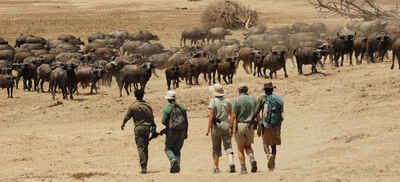
Zambia is well known for excellent guiding and top-class walking safaris.
...while some bushcamps in the South Luangwa exclusively offer walking safaris.
There's always plenty of time in between activities to relax with a drink...
...and watch the local wildlife!
From the smaller animals...
...to the biggest - there's a huge amount of game to be viewed in the different parks.
...you can find more luxurious lodges here as well...
...and every camp goes the extra mile to provide special touches to your safari.

Zambia Safaris
Like the butterfly that it resembles, Zambia is by turns flamboyant and shy – its showy attractions overshadowing more hidden gems.
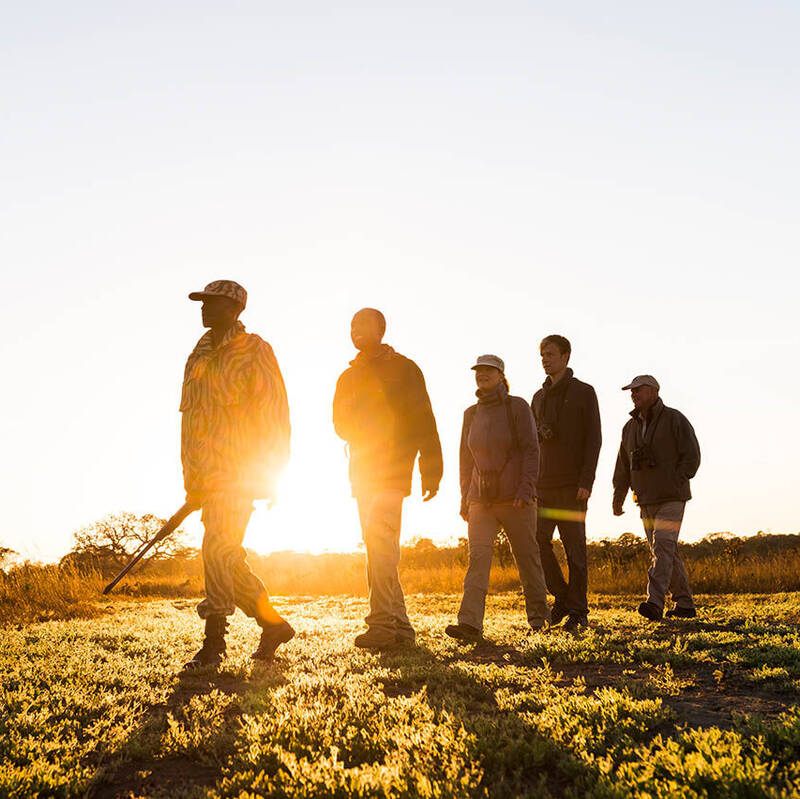
While the splendour of the Zambezi plunging over the Victoria Falls draws visitors by the thousand, lesser-known rivers tumble over rocky outcrops or cascade down deep fissures in the Rift Valley to create their own natural beauty, far from the crowds. Fanning out from the rivers comes the wildlife, protected within some of Africa’s top national parks. Firmly established are the Lower Zambezi and the South Luangwa, whose permanent water sources are a magnet for animals, especially towards the end of the dry season. Yet wildlife is not confined to these parks. Consider the raw wilderness of the vast Kafue, the remote North Luangwa, or the truly off-grid Liuwa Plain, the ancient hunting grounds of the King of Barotseland. Make your way to Kasanka for the annual bat migration, or to the Bangweulu Wetlands, whose papyrus swamps harbour the prehistoric-looking shoebill. The variety of wildlife is astonishing. Thrills, too, come in many guises. Think walking safaris with some of the best guides in the world, soaring in a microlight over Livingstone’s “Flight of Angels”, or canoeing down the Zambezi, the waters teeming with hippos and crocodiles. Then discover Shiwa Ng’andu, where rampant stone lions guard an English country house, complete with a royal lake. Or contemplate the simple stone cross marking the spot where David Livingstone’s heart is buried. Hidden gems indeed.
Zambia’s key safari areas
Top of the bill is South Luangwa National Park , which offers superb big-game safaris, day and night, plus some of Africa's best walking safaris. Explore from intimate, often privately-owned lodges with some of the best safari guides in the world.
Justifying double billing, the Lower Zambezi National Park sits beside the broad, languid Zambezi River. Come for boat trips, canoeing and great fishing, as well as game drives and walking safaris, all based at intimate safari camps fringing the riverbank.
Higher, cooler and less developed is Kafue National Park , home to species like cheetah that are rare elsewhere in Zambia. Worth including in any trip to this park is the highlight: Busanga Plains.
For a very adventurous element to a Zambian safari, consider the more remote North Luangwa National Park . Sought out by safari addicts, it has just a handful of tiny bushcamps that focus almost exclusively on walking safaris.
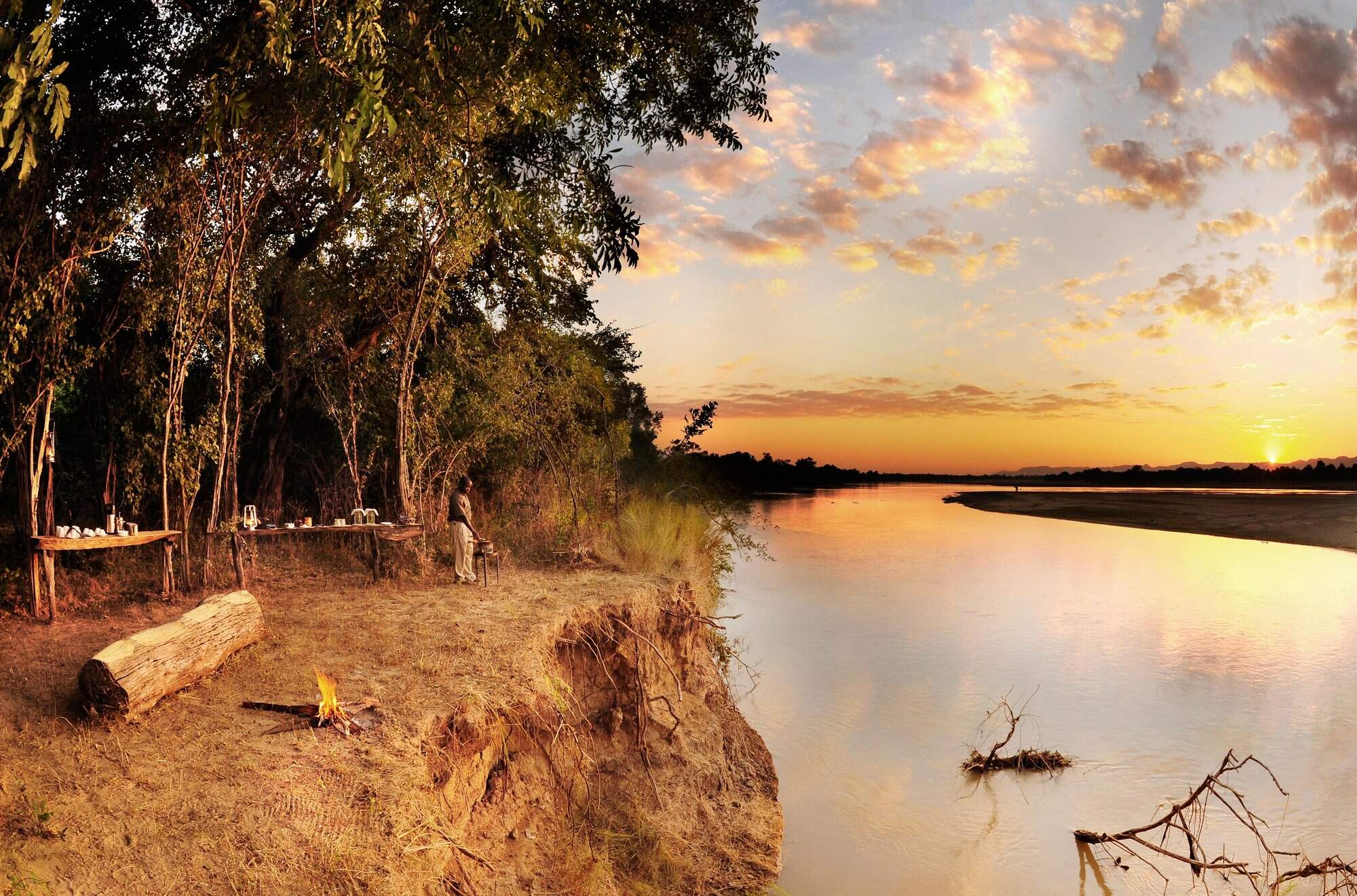
South Luangwa
39 places to stay
Plentiful wildlife and excellent birding combine with walking safaris, night drives and a range of lodges to underpin Zambia’s flagship national park.
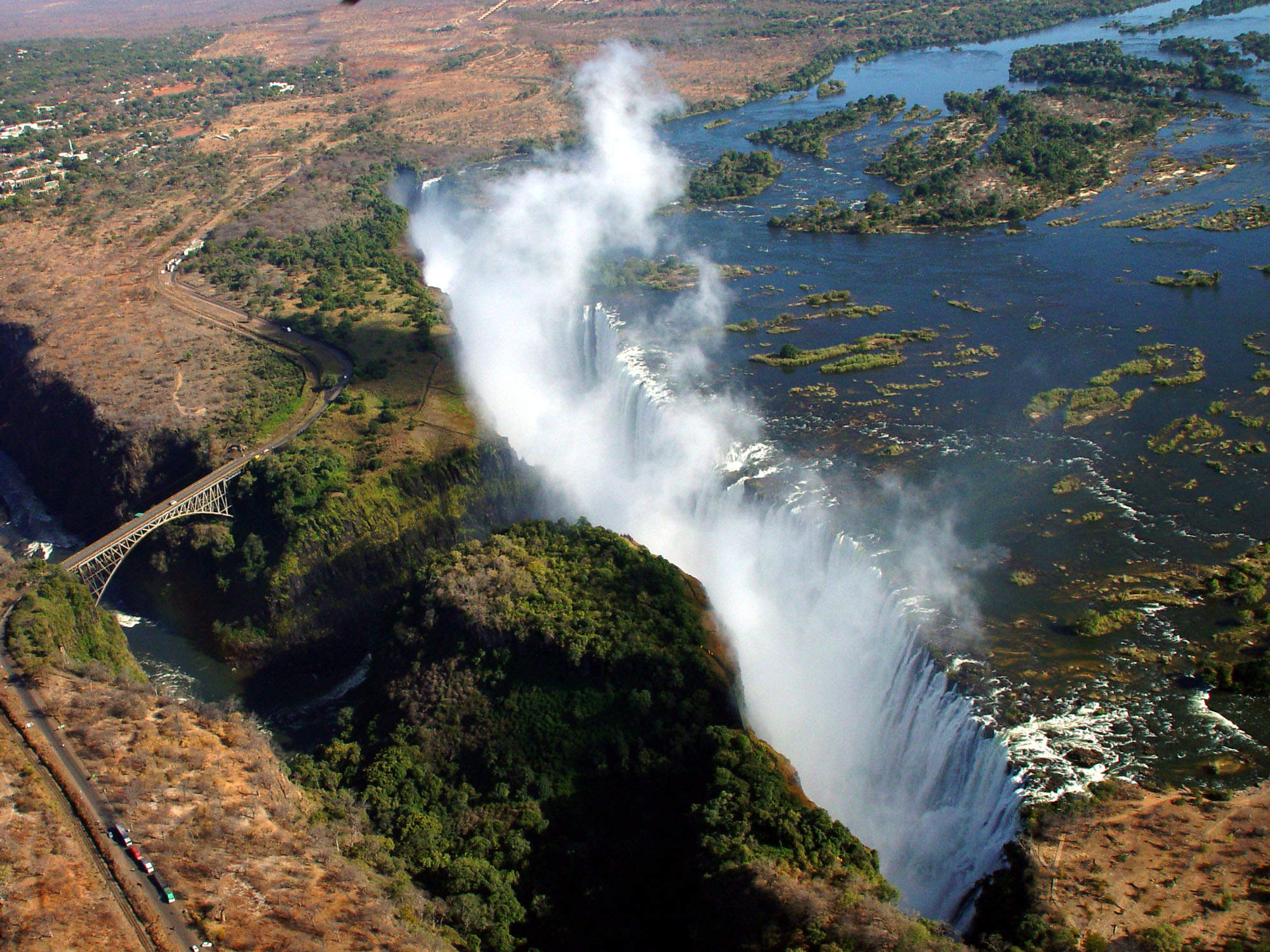
Livingstone
13 places to stay
Named after the legendary explorer, Livingstone is a must – for the Victoria Falls, for adrenalin-fuelled fun, or for sheer self-indulgence
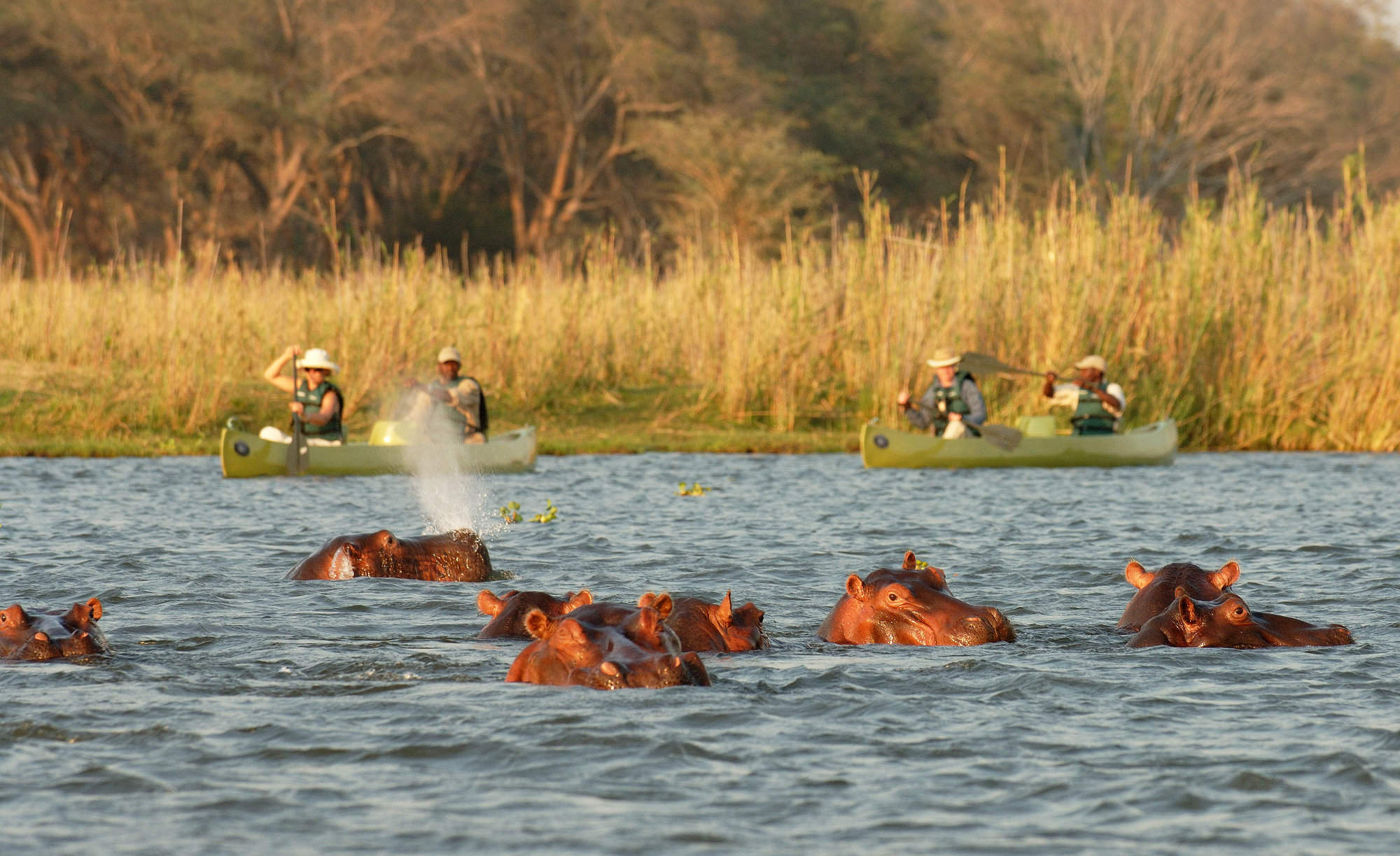
Lower Zambezi
A lifeline for wildlife, and an unbeatable backdrop for a safari, the majestic Zambezi River is the key to this exceptionally scenic park.
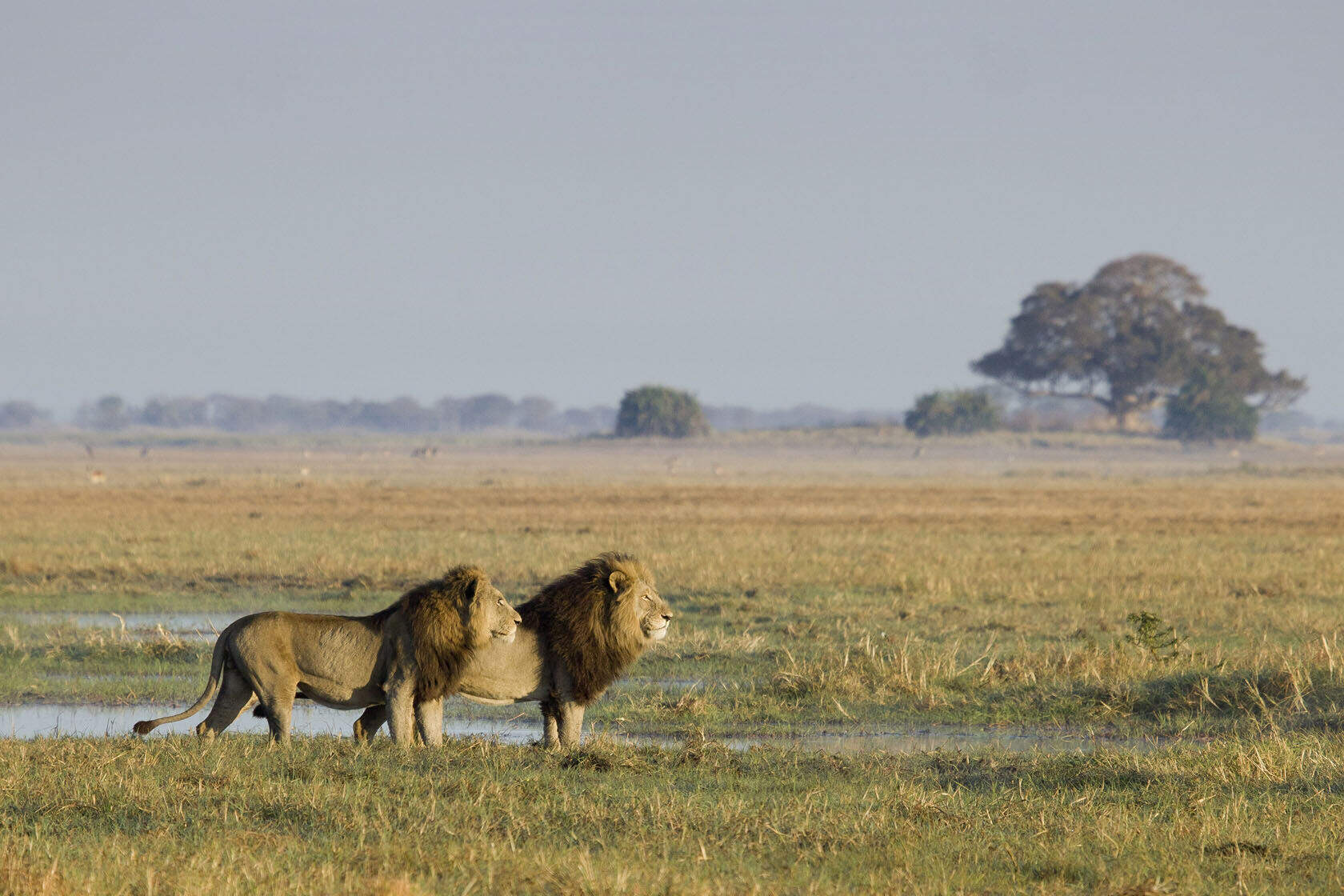
10 places to stay
Vast in size, diverse in landscape, varied in wildlife: the Kafue rewards those who are prepared to travel around.
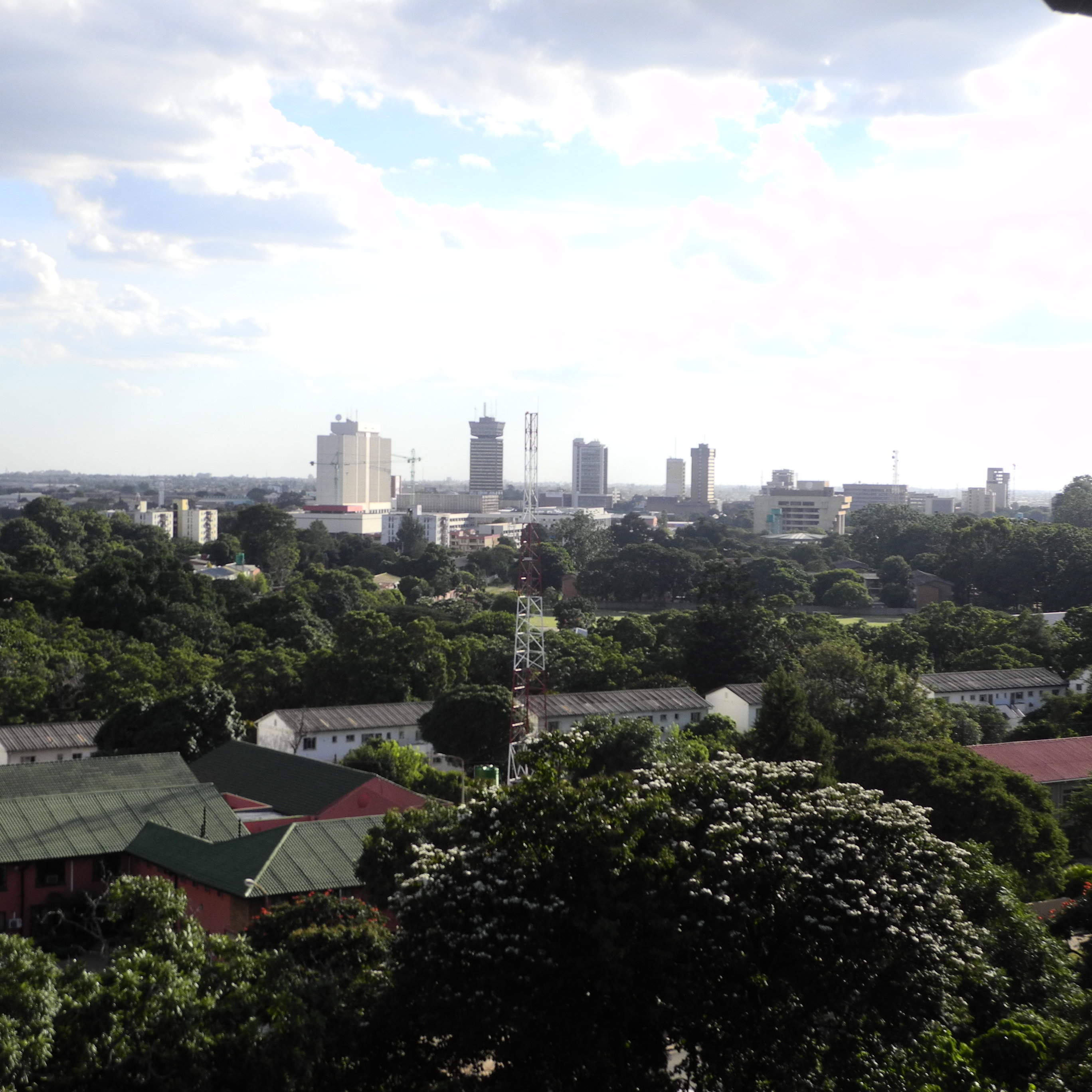
Lusaka area
6 places to stay
Overlooked by most visitors, Zambia’s capital is an intriguing blend of creature comforts and vibrant culture – as witnessed in its colourful markets.
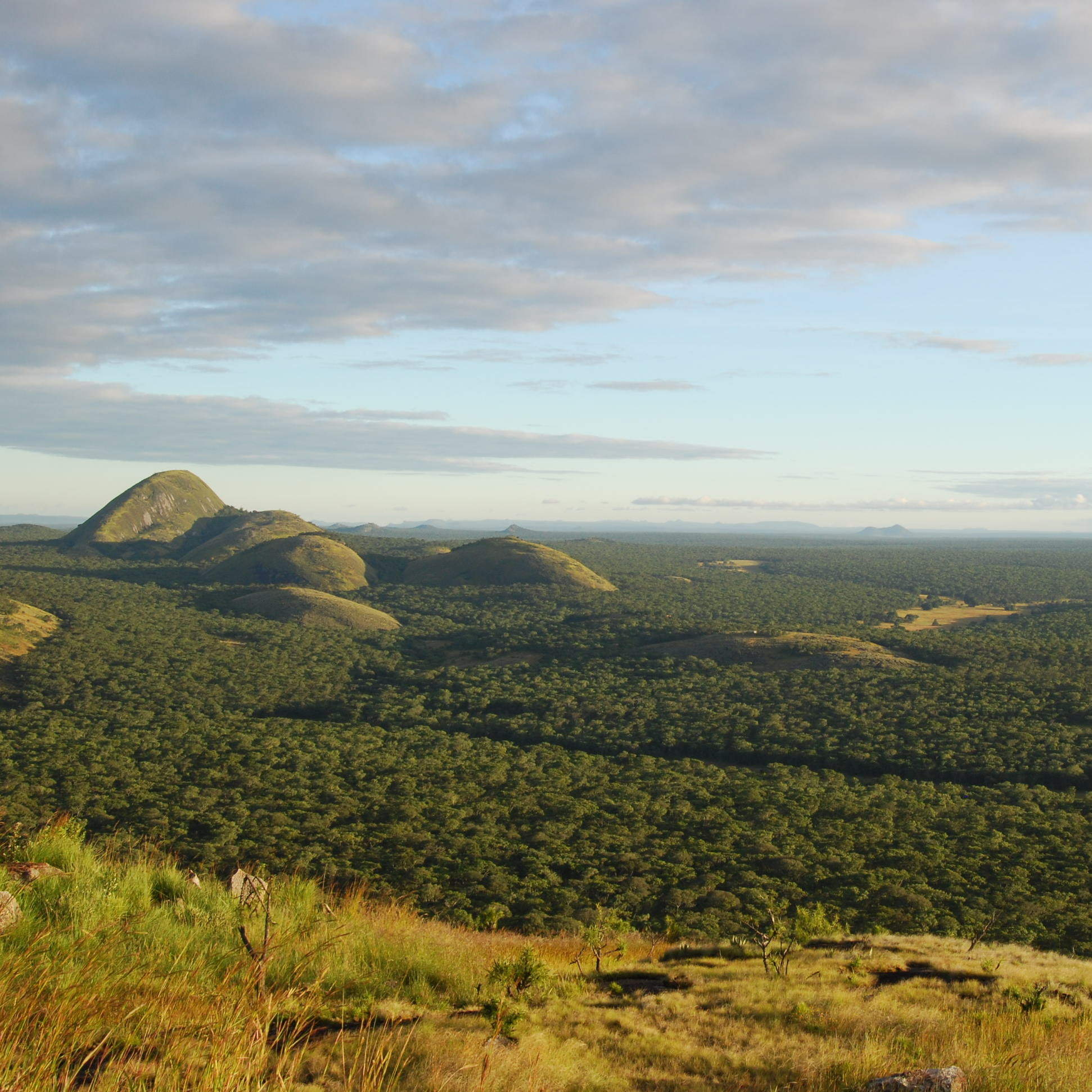
Northern Zambia
Lakes and waterfalls, bats and shoebills, even a grand stately home: the rarely visited north is a world apart from the rest of Zambia.
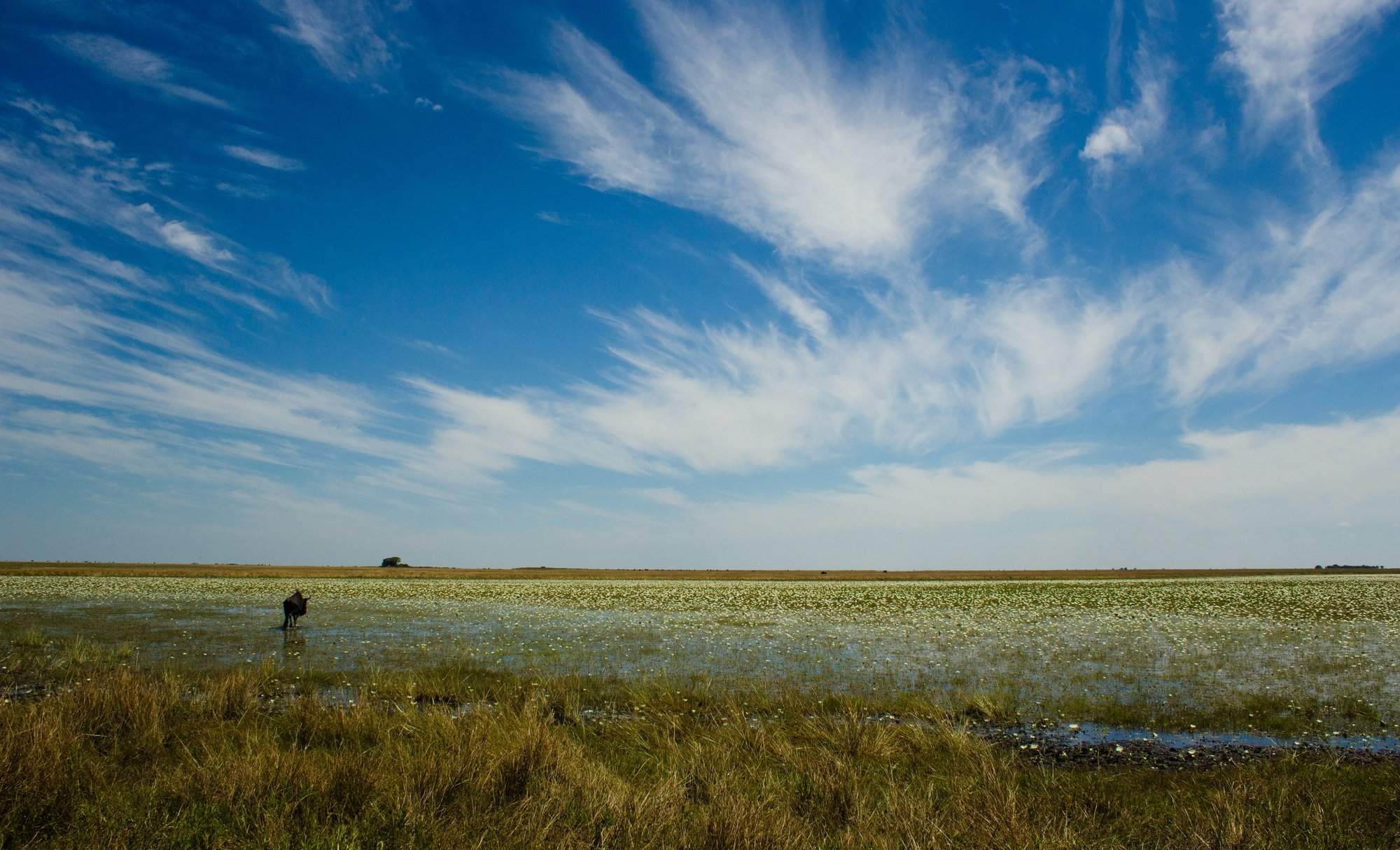
Liuwa Plain
3 places to stay
Isolated, remote and wild, Liuwa attracts wildebeest and zebra in their thousands, an extraordinarily rich birdlife – and very, very few visitors.
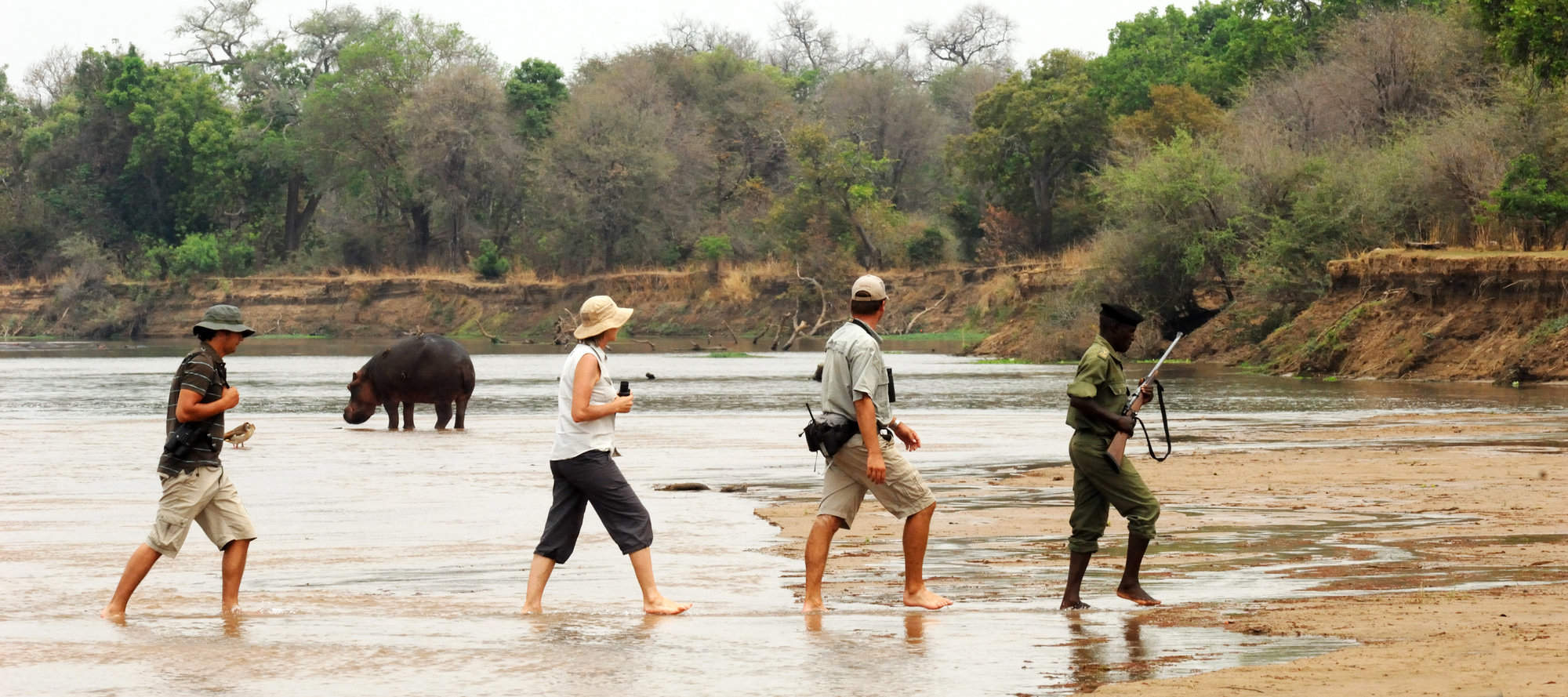
North Luangwa
2 places to stay
Wild, open, and firmly the domain of walking safaris, North Luangwa is a world away from its popular sibling to the south.
Ten top safari holidays in Zambia
To give you a taste of the options, we have pulled together ten suggestions for the perfect holiday to Zambia.
Ranging from five to 11 days, they feature all-inclusive safari lodges, excellent guiding and the incredible diversity for which Zambia is renowned – from the big predators of the national parks to adrenalin-fuelled walking safaris to the added bonus of the Victoria Falls .
As all our trips are tailor-made, these are just ideas. Whatever your interests – whether it’s taking in the country’s highlights or marvelling at the extraordinary fruit-bat migration, paddling a canoe along the great Zambezi or seeking out the remote Liuwa Plain – take a look, then give us a call and let us help you create your perfect safari.
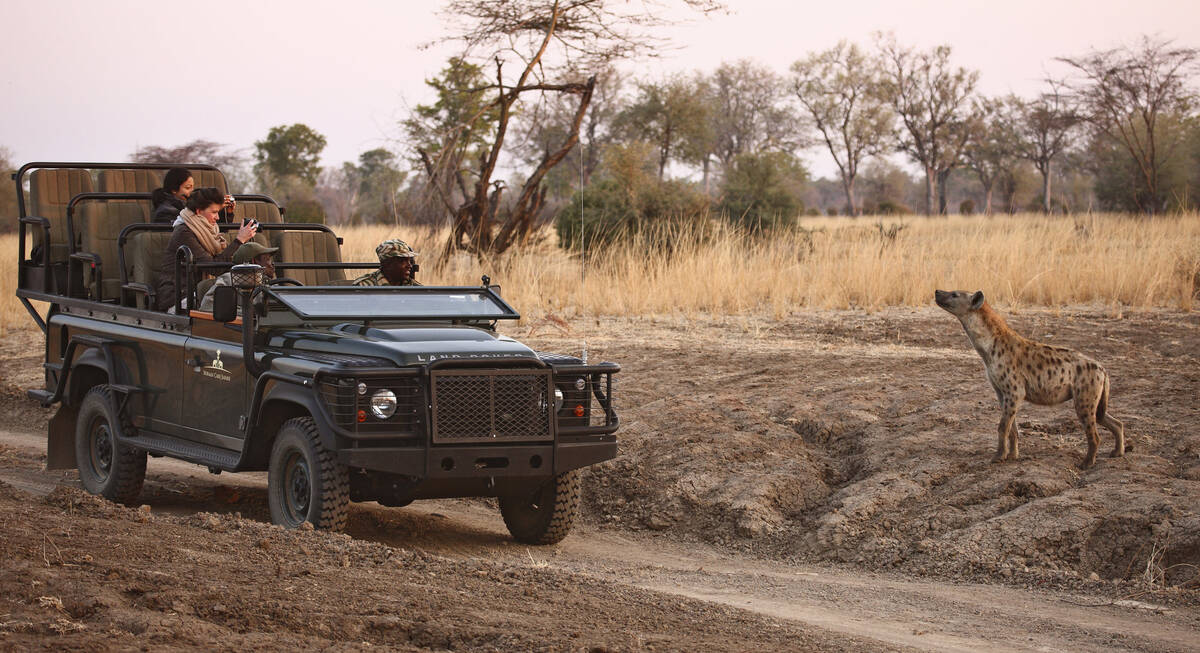
Puku Safari
11 days • 3 locations LUSAKA AIRPORT TO LIVINGSTONE AIRPORT
Discover South Luangwa’s prolific wildlife before exploring the wildly remote pans of Liuwa Plain National Park and relaxing in one of the Livingstone area’s most romantic and exclusive hideaways. A safari of luxury, style and impressive diversity.
US$13,200 - US$18,440 per person
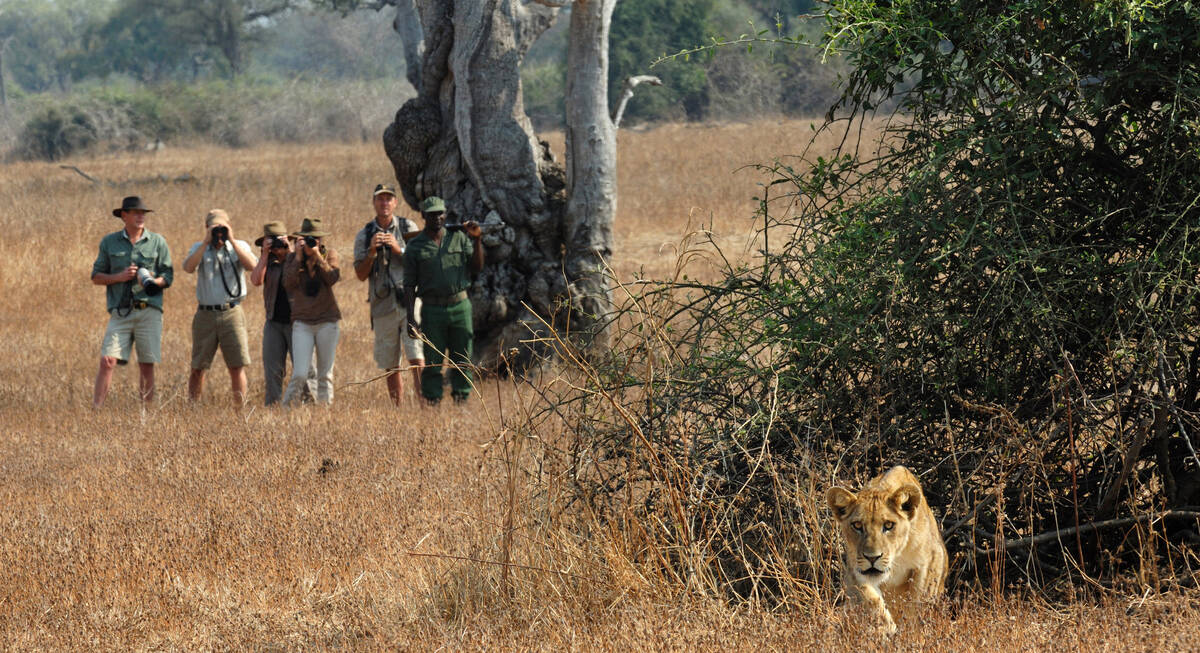
Perekani Walking Trail
10 days • 5 locations LUSAKA AIRPORT TO LUSAKA AIRPORT
Five smart but rustic bushcamps are the comfortable staging posts for this walking safari in South Luangwa. The route offers outstanding seclusion and rich wildlife with top-quality guiding throughout.
US$9,250 - US$11,500 per person
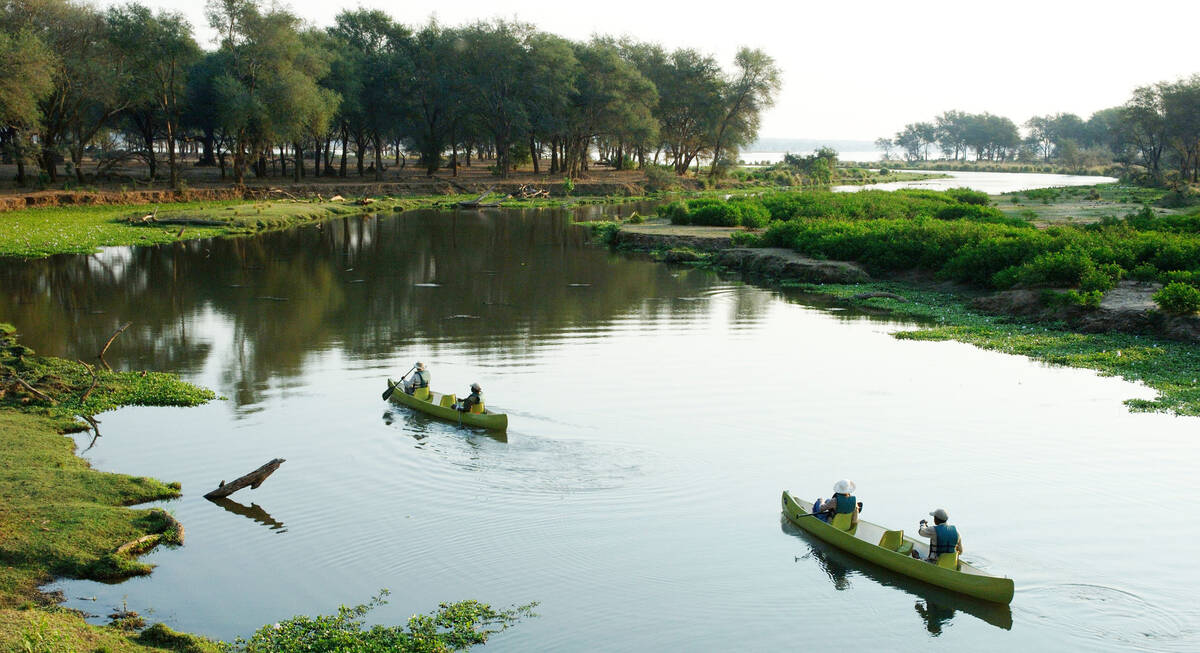
Crawshay's Zebra Safari
10 days • 4 locations LUSAKA AIRPORT TO LUSAKA AIRPORT
This superb safari combines two of Zambia’s best national parks, the South Luangwa and the Lower Zambezi. The camps are small and high quality with excellent safari guides.
US$9,760 - US$13,820 per person
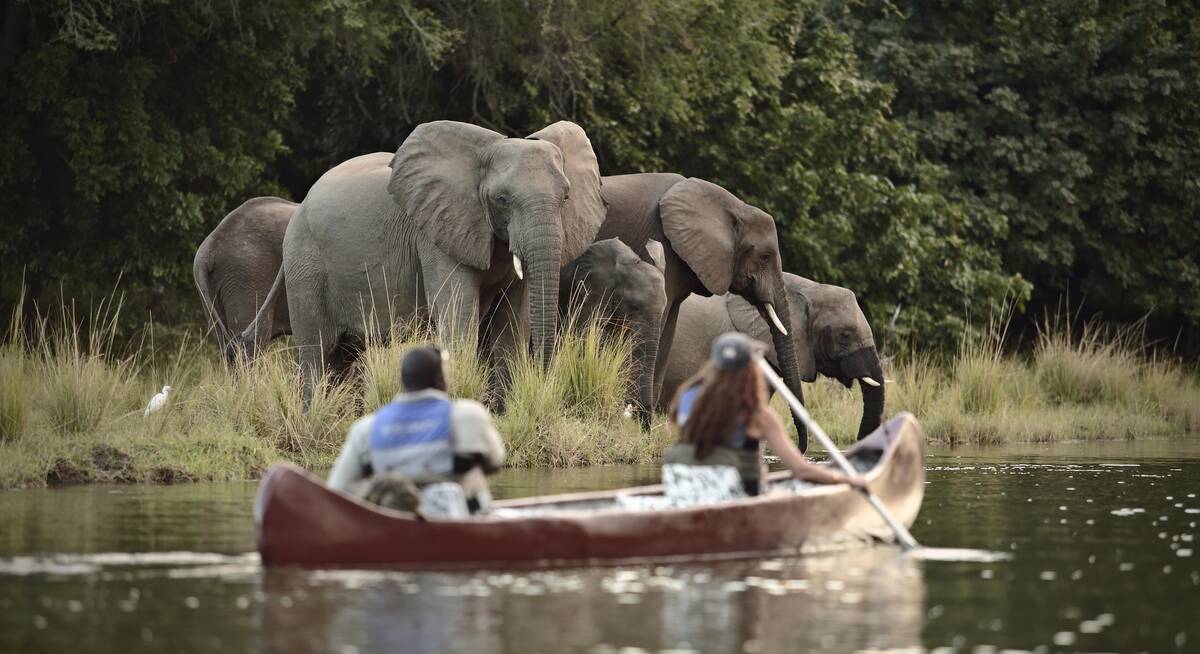
Duiker Safari
10 days • 3 locations LUSAKA AIRPORT TO LUSAKA AIRPORT
Three luxurious bushcamps in stunning riverside locations, split between the South Luangwa and Lower Zambezi national parks, offer a wide variety of expert-guided safari activities in stunning game-rich environments.
US$8,060 - US$10,020 per person
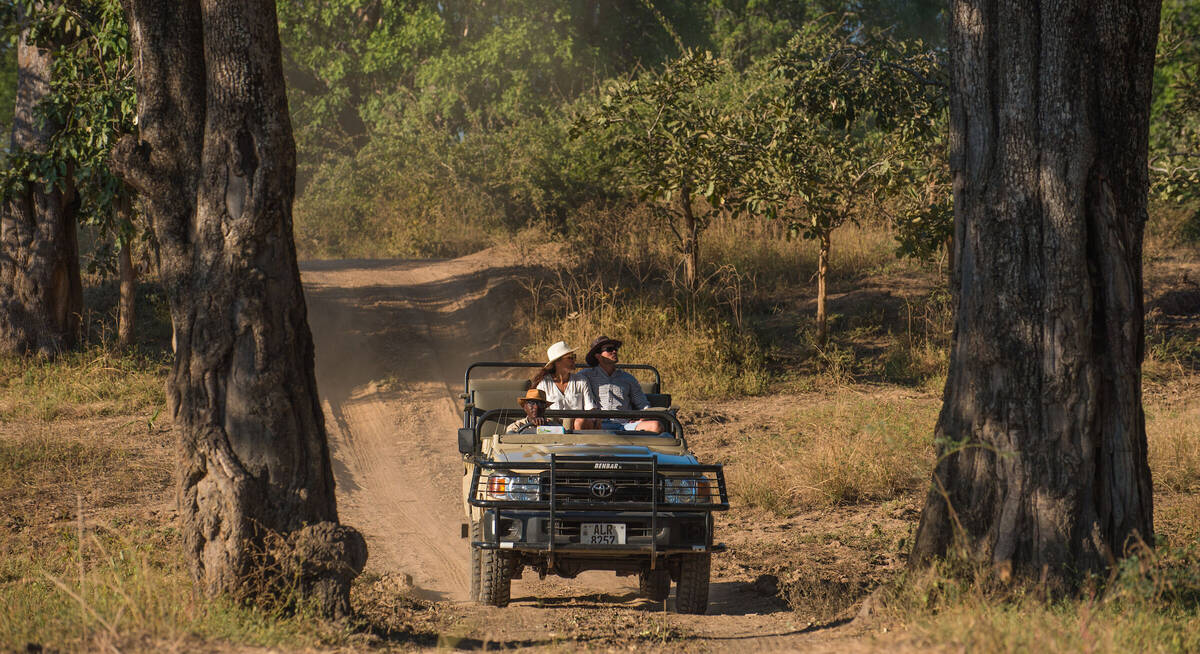
Hippo Safari
9 days • 4 locations LUSAKA AIRPORT TO LIVINGSTONE AIRPORT
Combining excellent game with aspects of remoter safari in South Luangwa, as well as the cultural delights of Livingstone, this trip also makes use of long-stay discounts, making it an excellent-value and well-rounded adventure.
US$7,480 - US$8,820 per person
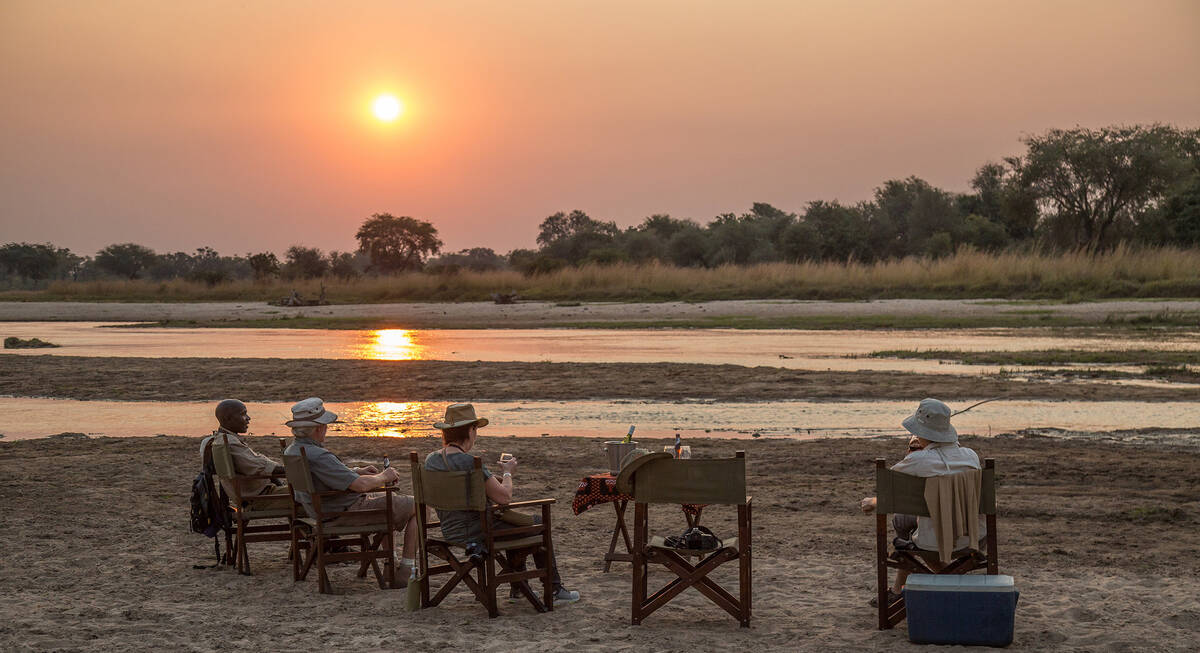
Giraffe Safari
9 days • 3 locations LUSAKA AIRPORT TO LUSAKA AIRPORT
A safari to the remotest parts of Zambia’s Luangwa Valley. Perfect for experienced safari goers and first-time Africa adventurers. Explore with expert guides whilst staying at small bushcamps.
US$8,390 - US$9,740 per person
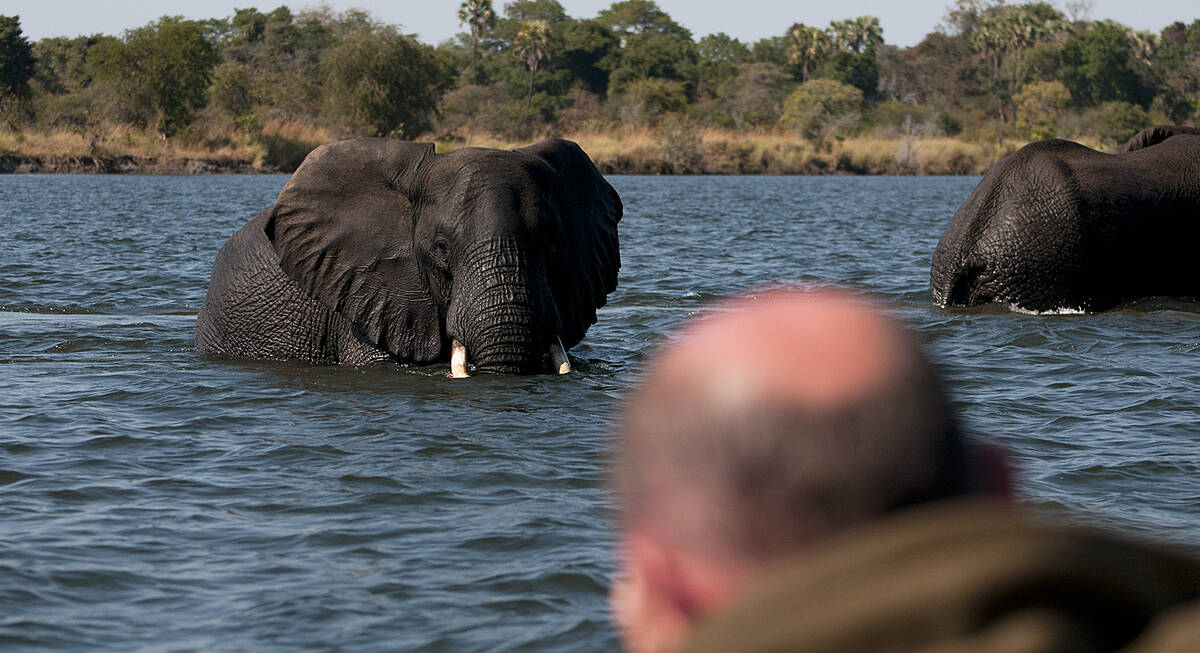
Defassa Waterbuck Safari
Stay in three intimate, owner-run camps during this exploration of Kafue National Park. Remote locations, true wilderness and a range of activities make for a real adventure off the beaten track.
US$8,240 - US$8,670 per person
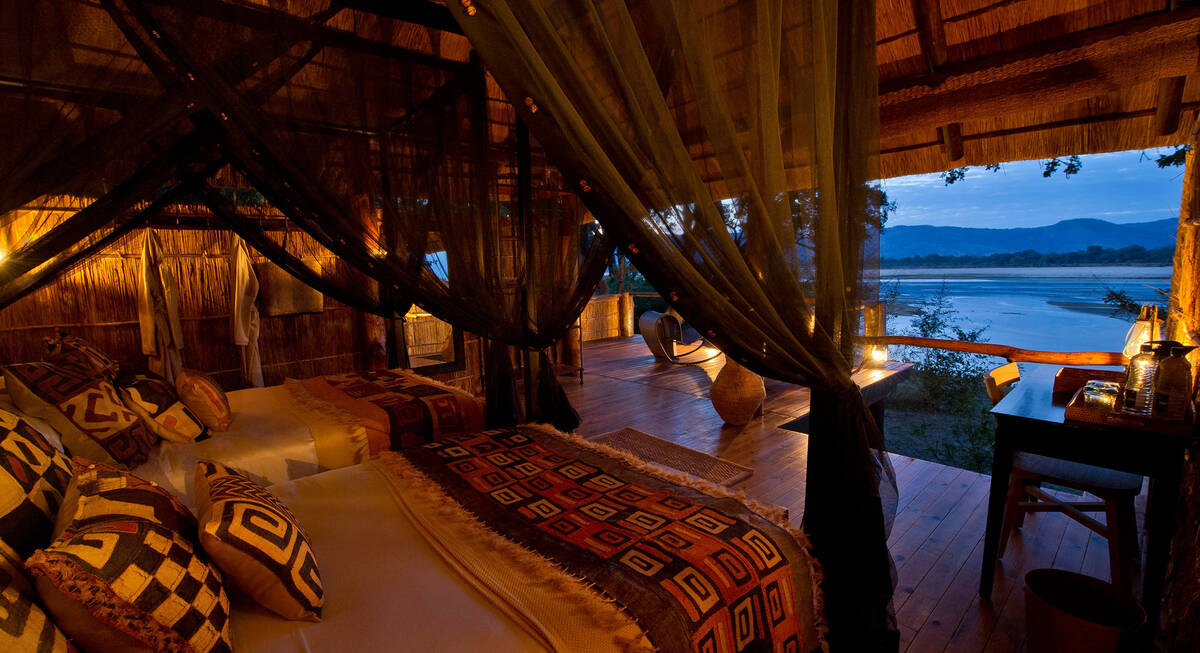
Civet Safari
9 days • 4 locations LUSAKA AIRPORT TO LUSAKA AIRPORT
Combining three intimate bushcamps in the quieter south of the South Luangwa, this safari will appeal to those looking for an interesting mix of walking and vehicle safari.
US$7,480 - US$9,230 per person
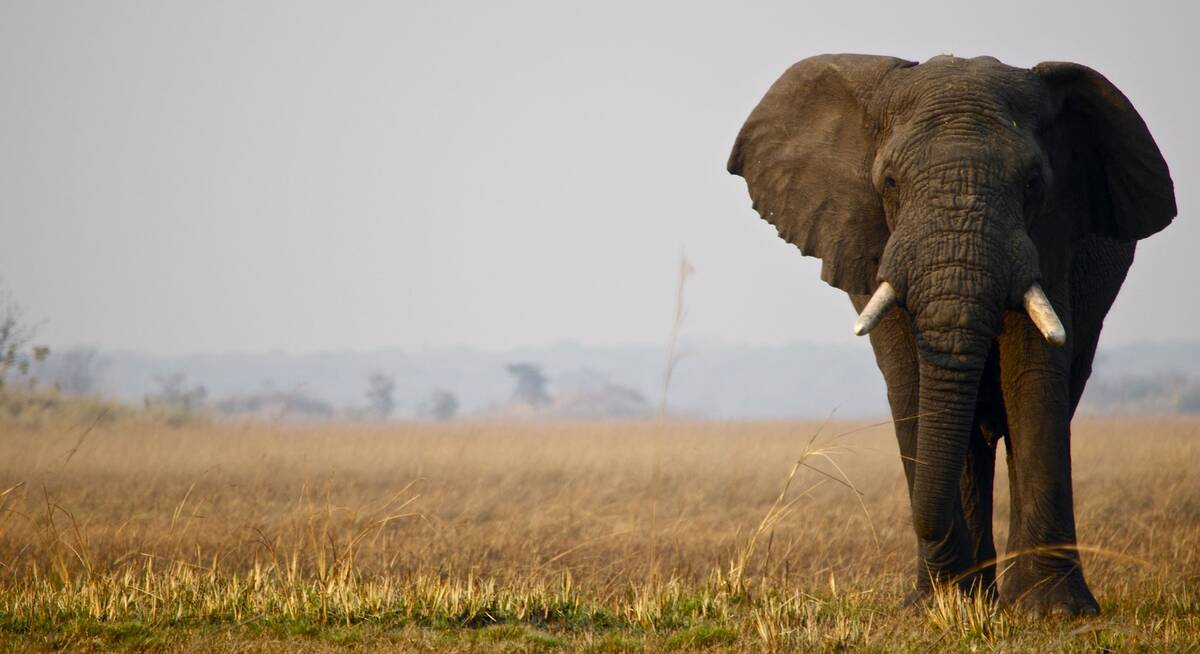
Purple Roller Safari
8 days • 2 locations LUSAKA AIRPORT TO LUSAKA AIRPORT
Explore the varied habitats and terrain of Kafue National Park with stays in two wonderfully remote bushcamps: sister camps that offer access to both the centre of the park and the wildlife-rich Busanga Plains.
US$8,790 - US$9,320 per person
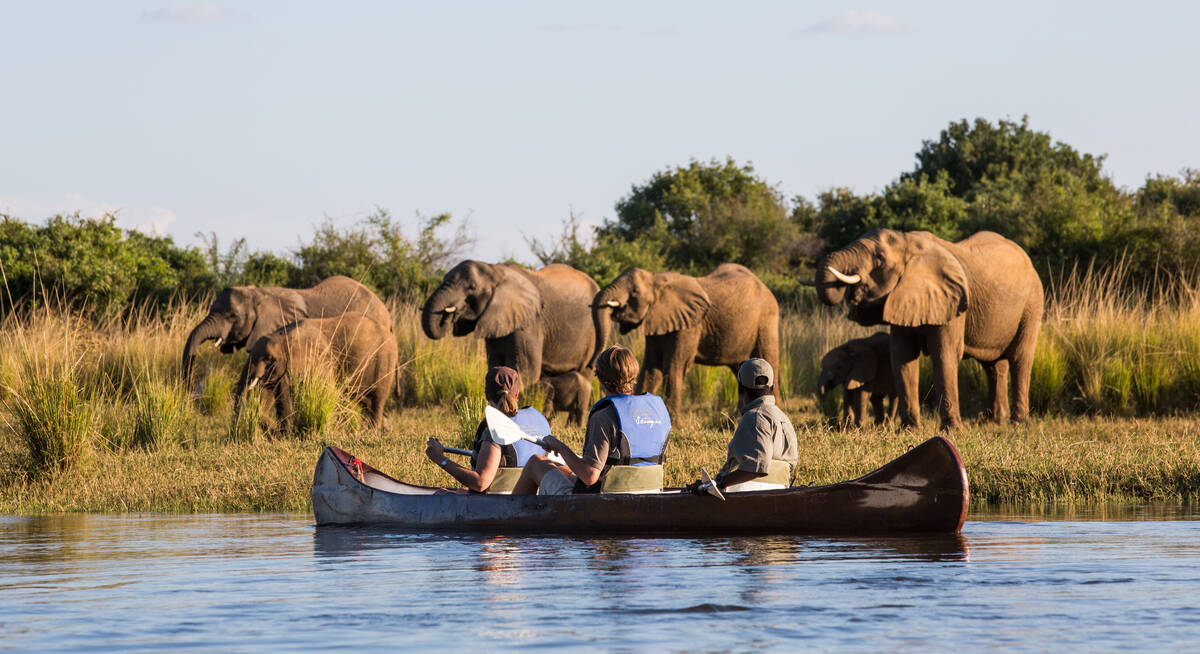
Greater Bushbaby Safari
The perfect safari for a family or group of friends during which to create everlasting memories. Visit Zambia’s two most productive wildlife parks staying in four-bedroom houses, designed in a unique and fun way.
US$9,400 - US$12,260 per person
View all holidays
Our travellers' 10 most recent Zambia safari reviews
We place considerable store on feedback from our travellers. Many of them kindly send us reviews of their trips and the places that they visit, and these in turn become an important part of the way we work.
They help us and our travellers to plan their trips; they're integral to keeping us bang up to date; and they're eagerly read by the lodges in Africa, who appreciate honest and constructive feedback that is guaranteed to be genuine.
All reviews of our Zambia holidays are published in full without us editing them. See all 1286 safaris reviews here , or click on a card below to read one of our most recent reviews in full.
Arrived 17 Feb 2024, 11 nights
"My Feb 2024 trip"
Overall rating: Excellent
Arrived 13 Feb 2024, 14 nights
Arrived 2 Jan 2024, 11 nights
"My Jan 2024 trip"
Arrived 31 Oct 2023, 24 nights
"Our tenth trip to RPS"
Arrived 19 Nov 2023, 11 nights
"Zambia November 2023 trip"
Arrived 5 Oct 2023, 28 nights
"Our Oct 2023 trip"
Arrived 30 Sep 2023, 17 nights
"My Sep 2023 trip to Zambia "
Arrived 27 Oct 2023, 13 nights
"My Oct 2023 trip"
Arrived 17 Oct 2023, 22 nights
Arrived 11 Oct 2023, 14 nights
See all Zambia reviews
Our travellers' wildlife sightings in Zambia
We suggest to our travellers that they keep a record of their sightings of key species, including the big cats, wild dog , buffalo , elephant , giraffe , hippo , hyena, zebra and various antelope.
Many of them find this an enjoyable part of their trip, and are happy to share their information with us after their safari adventure.
In turn, their feedback helps us to build an unparalleled picture of when and where Zambia’s key wildlife species are to be found: citizen science in action. Read how this survey works . Analysing this information enables us to present a unique picture of the likely chance of sighting these key animal species on your Zambia safari. Click on a species to find out more. For much more detail, see our interactive map showing the best locations for wildlife species in Zambia.
96% success
95% success
89% success
88% success
84% success
81% success
79% success
44% success
41% success
29% success
13% success
11% success
Where to find Zambia’s key wildlife species
Whenever our travellers to Zambia tell us of their wildlife sightings, it helps to improve our understanding of where and when you’re more likely to see the key animal species.
You’ll find the results of this research in many ways on our website – under the individual camps, on our dedicated wildlife pages, on our maps, and on our individual holiday pages.
So whether you’re in search of giraffe or wild dogs , or the elusive leopard is high on your wishlist, we can help. Take a look at our data-driven maps to find out the best places to seek them out amongst the abundant wildlife that roams Zambia’s national parks.
For a map of the best camps and lodges for sightings of an individual species, click on a card:
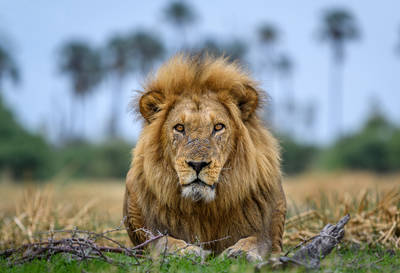
Panthera leo
Lions are at the top of the food chain and also most safari wish-lists, but with their numbers falling fast, any encounter with these majestic apex predators always feels like a privilege.
81% SUCCESS
2,974 sightings from 3,651 observations
Where to see lion in Zambia
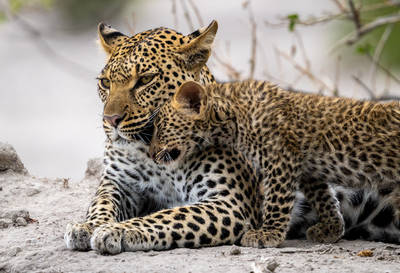
Panthera pardus
The most numerous of Africa’s big cats, leopard occur across many habitats, from wild tracts to populated areas. Their grace and their elusive nature make them a unique safari drawcard.
47% SUCCESS
1,892 sightings from 4,038 observations
Where to see leopard in Zambia
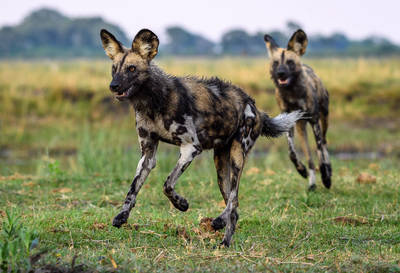
Lycaon pictus
African wild dogs are among the continent’s most compelling animals. Much misunderstood, these rare, tie-dyed canids are amazingly efficient hunters with a fascinating social life.
31% SUCCESS
844 sightings from 2,713 observations
Where to see wild dog in Zambia
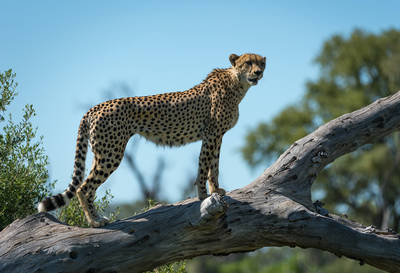
Acinonyx jubatus
The cheetah is the fastest land animal and the only cat that hunts by pure speed. Found largely in open grasslands, its slim, elegant form is today an increasingly rare sight.
33% SUCCESS
1,030 sightings from 3,093 observations
Where to see cheetah in Zambia
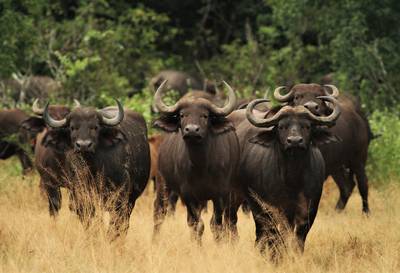
Syncerus caffer
One of the ‘Big Five’, buffalo earned a fearsome reputation in hunters’ tales. By contrast, big herds of these sociable bovids are placid, but mount formidable defences against predators.
83% SUCCESS
2,505 sightings from 3,028 observations
Where to see buffalo in Zambia
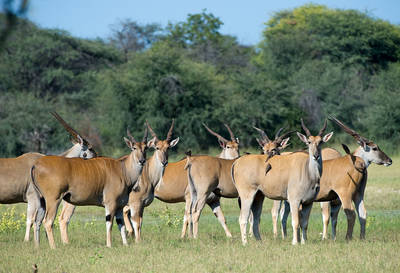
Taurotragus oryx
Africa’s largest antelope, eland are culturally important from prehistoric rock art to modern game farms. Though widespread, they are also shy so sightings are uncommon and often fleeting.
49% SUCCESS
1,445 sightings from 2,927 observations
Where to see eland in Zambia
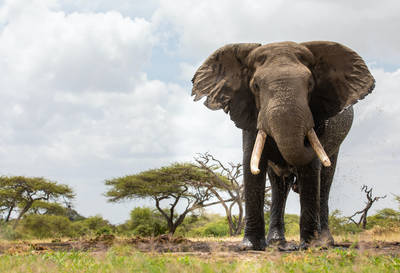
Loxodonta africana
By far the biggest of the so-called Big Five – indeed, the largest land animal on the planet – the elephant shapes the very landscape it inhabits and is a defining presence on any safari.
91% SUCCESS
3,548 sightings from 3,902 observations
Where to see elephant in Zambia
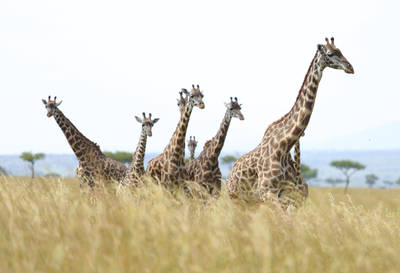
Giraffa camelopardalis
The world’s tallest land mammal, giraffes are herbivores which have evolved many unique adaptations. Their iconic outlines tower above the bush in many of Africa’s wildlife areas.
86% SUCCESS
3,424 sightings from 3,964 observations
Where to see giraffe in Zambia
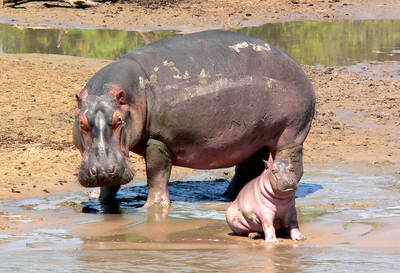
Hippopotamus amphibius
The territorial calls of the hippo create a signature soundtrack to Africa’s rivers & wetlands. Despite an endearing smile, this aquatic herbivore has a notoriously aggressive disposition.
89% SUCCESS
2,598 sightings from 2,917 observations
Where to see hippo in Zambia
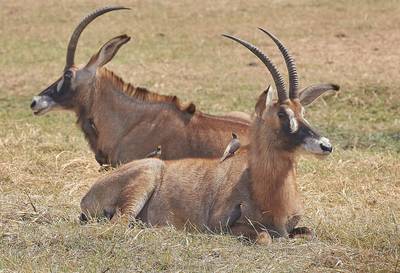
Roan antelope
Hippotragus equinus
Africa’s second largest antelope and one of its most handsome, with a powerful build and distinctive markings, roan are wary of people, but renowned for their bravery against predators.
23% SUCCESS
460 sightings from 1,971 observations
Where to see roan antelope in Zambia
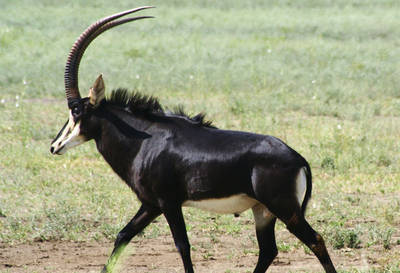
Sable antelope
Hippotragus niger
Perhaps Africa’s most beautiful antelope, sable are renowned for their combative nature, even holding off lions. Shy and restricted in range, sightings of sable are always special.
22% SUCCESS
440 sightings from 1,962 observations
Where to see sable antelope in Zambia
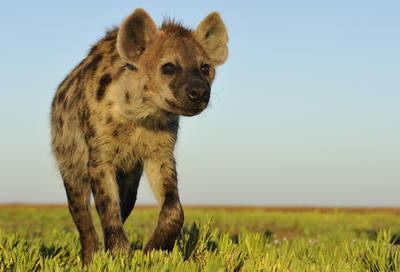
Spotted Hyena
Crocuta crocuta
The spotted hyena may be thought of as ‘ugly’ and ‘cowardly’. In fact, this versatile and intelligent carnivore is one of Africa’s most fascinating and warrants attention on any safari.
55% SUCCESS
2,131 sightings from 3,849 observations
Where to see spotted hyena in Zambia
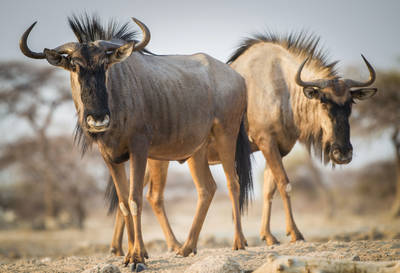
Connochaetes sp.
Superficially bovine in appearance, wildebeests are known for their spectacular migrations sometimes in huge numbers. These resilient animals are some of Africa’s most successful herbivores.
68% SUCCESS
2,419 sightings from 3,566 observations
Where to see wildebeest in Zambia
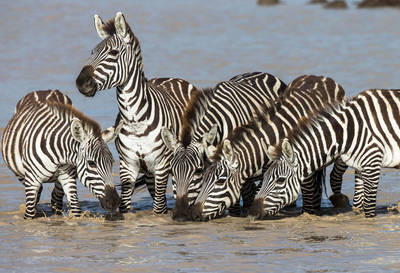
The zebra is a quintessential African animal: the horse in stripy pyjamas at the end of every child’s A–Z. There are three species, of which the plains zebra is much the most common.
84% SUCCESS
3,735 sightings from 4,424 observations
Where to see zebra in Zambia
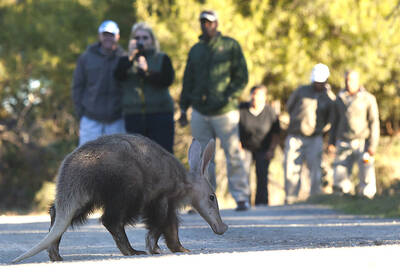
Orycteropus afer
The aardvark is one of Africa’s most bizarre and enigmatic animals. A shy, nocturnal termite-eater, signs of its presence may be scattered about the bush whilst sightings remain elusive.
67 sightings from 3,247 observations
Where to see aardvark in Zambia
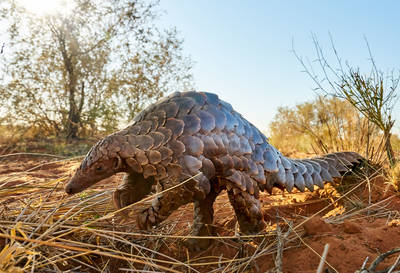
Smutsia sp.
Pangolins appear to be more pine cone than animal in their unique armoury of scales. These nocturnal, ant-eating oddities are not only highly elusive but also increasingly rare.
54 sightings from 3,245 observations
Where to see pangolin in Zambia
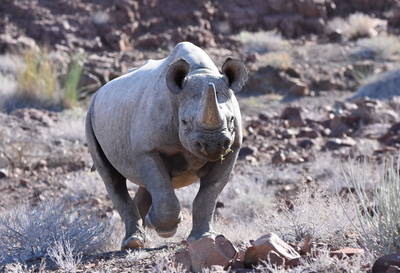
Black Rhino
Diceros bicornis
The black rhino is the smaller and rarer of Africa’s two rhino species but has the more fearsome reputation. Shy and heavily persecuted, it tends to stick to cover.
617 sightings from 2,001 observations
Where to see black rhino in Zambia
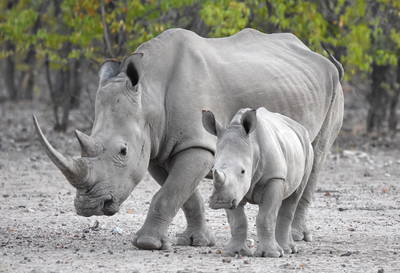
White Rhino
Ceratotherium simum
The white rhino is the largest and most numerous of the world’s five rhinoceros species. They are larger, easier to see and generally more approachable than the black rhino.
44% SUCCESS
483 sightings from 1,093 observations
Where to see white rhino in Zambia
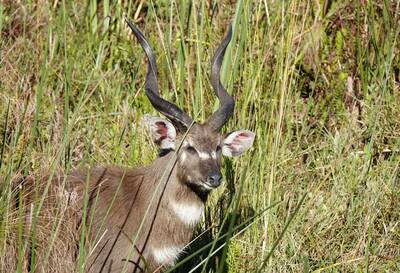
Tragelaphus spekii
The sitatunga is the most aquatic of Africa’s antelopes and specially adapted to its swampy habitats. Though widespread across Africa, only a handful of places offer reliable sightings.
19% SUCCESS
60 sightings from 317 observations
Where to see sitatunga in Zambia
When to go on a Zambia safari holiday
Most visitors to Zambia come between June and October, when the land is drying out after the rains and animals are seeking out water.
With days becoming hotter, and relatively cool nights, this is the most expensive time of year for a safari, and the only time for a walking safari at one of the small walking bushcamps.
November, April and May, the so-called “shoulder” season months when the weather is less settled, are quieter in terms of both visitors and wildlife, and costs are generally more moderate.
At the other end of the scale is the rainy or “emerald” season, broadly in December, January and February, when rates at camps that remain open are usually lower. At the peak of bird migration season, and with clear light, this can be an ideal time for birders and photographers .
Read more about Zambia’s weather and climate here.
Zambia in January
At the peak of Zambia’s rainy season, you can expect heavy rainfall for a few hours most days, with sunny spells in between. Temperatures remain high, reaching over 30ºC, with high humidity. The rainfall is yet to make a significant difference to the Victoria Falls, and the flow of water here remains low. The landscapes are green and lush and the air crystal clear, but with the abundance of water the wildlife disperses, and the thick bush can restrict sightings. It severely limits walking safaris too. Migrant birds boost the species count at this time. With seasonal rivers in flood and dirt roads and airstrips unusable, many camps in Zambia become inaccessible, and close. Only a few lodges in the central Kafue and the South Luangwa remain open. Few people visit in January, so the parks are incredibly quiet and the camps charge their lowest rates.
- Peak of rainy season: hot & humid, with rain for a few hours most days
- Majority of camps closed throughout the month
- Bush incredibly green & lush, with clear air – great for photography
- Big game dispersed & thick bush makes sightings difficult
- Very few visitors: the cheapest time to visit
This is not a great time to visit
Weather in January
Zambia in February
February remains in the heart of the rainy season, with dramatic thunderstorms delivering a few hours of rain most days, interspersed with clear sunny skies. There is still an abundance of water in the environment, dispersing game and closing camps. With the thick bush, game viewing is limited and walking safaris restricted, but the swollen rivers allow some activities that would be unavailable in the dry season, such as boat trips on the Luangwa River. After a couple of months of rain, water will once more be making its way to the Zambezi River, and the flow of water over the Victoria Falls will start to pick up. Visitor numbers and costs at the few open camps remain low.
- Peak of rainy season: hot & humid with rain for a few hours most days
- Most camps closed throughout the month
- Bush lush & green: good for photography but poor for game viewing
- Very few visitors, & the cheapest time to visit
- Water levels at Victoria Falls still low, but starting to pick up
Weather in February
Zambia in March
March is the last month of the rainy season in Zambia, and there are still heavy downpours most days. Water levels are at their highest making it difficult to get around the country. Temperatures still reach over 30ºC most days, too, with the rain causing high levels of humidity. Many camps remain closed, and the thick bush limits game viewing and walking safaris. However, many animals are raising young at this time of year, with predators taking advantage of the easy prey, so sightings can be incredible, if sporadic. Wild dogs in the South Luangwa are particularly active at this time of year. With clear air and increasingly frequent blue skies as a backdrop, photography can be spectacular. The birding remains excellent as thousands of birds prepare for their winter migration.
- Peak of rainy season, hot & humid, with rain for a few hours most days
- Bush remains green & lush: good for photography but poor game viewing
- High abundance of animals with young
Weather in March
Zambia in April
As the rains change from intense downpours to lighter and sporadic showers, April is very much a transitionary period in Zambia. The landscape remains exceptionally green and lush, with sparse viewing of larger wildlife. Although camps start to reopen in April, most remain closed, and others that were open at the start of the year may shut to prepare for the coming dry season. This is the first month of the year when it’s possible to visit the Lower Zambezi. The Zambezi River will be at its highest level with the Victoria Falls in full flow, but with huge amounts of spray kicked up views of the waterfall are often obscured.
- Tail end of the rainy season; hot & humid with light rain most days
- Some camps reopen; possible to visit the Lower Zambezi
- Bush still green & lush: good for photography; poor for game viewing
- Victoria Falls in full flow but with poor views
Weather in April
Zambia in May
May is typically the first month of the dry season. While there is the chance of an odd shower, the majority of days are clear and sunny. As winter approaches, temperatures start to drop, with most days reaching highs of around 26ºC. As the landscape dries out, access to the parks improves, and all but the most remote bushcamps reopen. After five months of rain there is still a lot of standing water, but despite the thick bush May marks a distinct improvement in game viewing, and clear air is a continuing bonus for photographers. The end of the month can be a popular time for visitors, taking advantage of typically good weather, improved game viewing, and the last of the low-season rates offered by the camps.
- Start of the dry season in a typical year, with mostly clear & sunny
- Majority of camps open
- Bush still green & lush, with clear air for photographers
- Game viewing starts to improve
- Last month of low rates at the camps
A good time to visit, with pros & cons
Weather in May
Zambia in June
Zambia sees virtually no rainfall in June, with a strong chance of sunny days throughout. The humidity drops dramatically and, as winter approaches, temperatures reduce, falling to around 10ºC at night but still warming to 25ºC during the day. The landscape remains lush but the bush starts to die back significantly, improving visibility for game viewing and walking safaris. All the camps in the South Luangwa and Lower Zambezi are open by the start of June. While some have a ‘shoulder season’, others start charging their highest rates. The water coming over the Victoria Falls starts to recede, reducing the mist and spray kicked up, providing better views of the waterfall itself.
- Reliably sunny days, but dropping temperatures, especially at night.
- All camps in the South Luangwa, southern Kafue & Lower Zambezi open
- Wildlife viewing continuing to improve
- Increased visibility & cool weather perfect for walking safaris.
- Viewing of the Victoria Falls at its best
A very good time to visit
Weather in June
Zambia in July
As the dry season continues, vegetation and long grasses have mostly died back and water starts to become scarce. Wildlife starts to cluster around the major sources of water and the game viewing approaches its best. July is the first month of winter, and while daytime temperatures are in the 20s Celsius, temperatures at night can drop to single digits. Early morning and late evening drives in open vehicles are particularly cold, and blankets and hot water bottles are often provided. Visitor numbers increase significantly and space at popular/small camps can get tight. Nearly all properties are now charging their highest rates. Even floodwaters on northern Kafue’s Busanga Plains have now receded, and all camps in Zambia are open.
- Warm, dry days; cold, crisp nights
- Significantly improved game viewing
- Walking safaris are unrestricted by vegetation, with good temperatures
- Approaching peak season, so significant increase in costs
- Northern Kafue now accessible
Weather in July
Zambia in August
By August, the vegetation has died back and wildlife is now congregating around the remaining water sources, providing excellent game viewing. With virtually no chance of rain you are almost guaranteed sunny days, although dust and smoke in the air means a visible haze starts to appear on the horizon. Temperatures can drop below 5ºC at night but climb to the 20s Celsius during the day. Jackets and gloves are recommended for morning and evening drives. This is one of the most popular – and most expensive – months to travel. European school holidays have little impact on travel within Zambia, but they do increase international flight costs, and all camps are charging their highest rates.
- Very dry with warm days but cold nights
- Excellent wildlife viewing, as animals congregate around water holes.
- Haze developing on the horizon, potentially affecting photographs
- Cool temperatures & clear sightlines: ideal for walking safaris
- Peak season: camps & flights at their most expensive
Fantastic: the very best time to visit
Weather in August
Zambia in September
September is the most popular, and arguably the best, time of year to travel. Rain is almost unheard of so humidity is low, and temperatures are starting to climb. Morning drives are more comfortable, with daytime temperatures normally in the low 30s Celsius. Water is scarce, so wildlife clusters around the few remaining sources. Game viewing is very nearly at its best, with a good chance of seeing interactions between species. Camps are charging their highest rates and are at their busiest, with popular camps often fully booked more than a year in advance. A significant haze sometimes appears on the horizon, impacting on landscape views and affecting photography. Depending on the rainfall in the wet season, the Victoria Falls can start looking dry, with more cliff face than waterfall on show.
- Dry hot days with clear skies, & warm nights
- One of the best months for wildlife viewing
- Dust & smoke creates a haze over the landscape
- Peak season: camps are expensive & often full
- Victoria Falls starting to look dry
Weather in September
Zambia in October
As the dry season peaks, the landscape in October is brown and barren, with little ground-level vegetation, though the promise of rain may bring the occasional shower. Temperatures can be uncomfortably hot, reaching over 40ºC in the daytime and rarely dropping below 20ºC at night. This is particularly challenging on walking safaris and in camps without air conditioning. A thick haze on the horizon sometimes turns photographic backgrounds grey-brown rather than sky-blue. The lack of water sees hippos and crocodiles cram themselves into the few remaining shallow rivers, with other wildlife carefully skirting around them in order to drink. Game viewing is at its absolute best, and you’re most likely to see hunts in October. On the Zambian side, stretches of the Victoria Falls become a dry cliff face.
- The best month for wildlife viewing
- Very hot both night & day, with little chance of rain
- Air can be very hazy with dust & smoke, so not great for photography
- Victoria Falls largely dry on Zambian side
- Camps less busy & some start to drop their rates
Weather in October
Zambia in November
November typically marks the end of the dry season. Although the timing of the rains is always uncertain, temperatures remain reliably high and the humidity builds as the rains approach. While you may avoid the rains in the first week of November, it’s not unusual to see some spectacularly heavy thunderstorms, followed by an explosion of green growth. Wildlife disperses rapidly after the rains, no longer restricted to limited waterholes closely monitored by predators. However, Kasanka’s bat migration is at its peak, and wildebeest gather on Liuwa Plains. Many remote camps close, and those that remain open significantly drop their rates. The initial rains have little impact on the Victoria Falls, but do significantly reduce the atmospheric haze.
- Typically the start of the wet season; very hot and humid
- Increased chance of heavy rain as the month progresses
- Greatly diminished game viewing once the rains arrive
- Bat migration in Kasanka, and wildebeest migration in Liuwa
- Camp rates lower, & visitor numbers reduced
Weather in November
Zambia in December
December is typically the first month in Zambia’s rainy season, with heavy thunderstorms most days interspersed by sunny spells. Temperatures start to fall, but still reach over 30ºC in the daytime, with high levels of humidity. As the rainfall increases it brings plentiful water into the landscape, encouraging the growth of thick green vegetation. Wildlife remains in the national parks and sightings are possible, but overall game viewing is poor. Access to the parks becomes problematic and all but a handful of camps around the entrance to the South Luangwa and the centre of Kafue national parks close. Those that do remain open charge their lowest rates and are very quiet. The rain removes any smoke and dust from the air, returning the sky to a dazzling blue that is great for photographers.
- Start of rainy season, with hot, humid & wet days
- Poor game viewing as wildlife disperses & bush thickens
- Majority of camps close; others charge their lowest rates
- Landscape green with blue skies; photographic opportunities improve
- Victoria Falls still dry
Weather in December
Country guide
A guide to visiting Zambia
For many travellers, Zambia is known primarily for the grandeur of the Victoria Falls , yet a safari in Zambia is no mere add on.
Threaded with permanent rivers that prove a magnet for animals, Zambia is home to an enticing network of national parks, often less visited than their counterparts in Botswana , Tanzania or Kenya , and some considerably wilder.
While traditional wildlife safaris with great guiding are the mainstay of safari holidays in Zambia, the option of top-class walking safaris is an added bonus.
Night drives are a further draw, permitted in all of Zambia’s national parks, and affording the opportunity to see a broader range of animals, from the amusing porcupine to the normally elusive leopard. And creature comforts come courtesy of small safari lodges, many of them still owner-run and highly individual.
How to safari in Zambia
Most safaris to Zambia are tailormade, with visitors usually arriving by air at the nearest regional airport or airstrip, then continuing to their lodge of choice in an open 4WD vehicle, while enjoying a guided game drive. Standards of guiding, service and food are almost universally high, whether you’re staying in a seemingly rudimentary bushcamp or in one of the more structured lodges. The difference is one of focus. While all will offer the chance to sit and chat around a campfire, the more luxurious options offer increasing levels of sophistication, a greater variety of cuisine and extras that may range from swimming pools and gyms to hedonistic spas. At the other end of the scale you’ll find small, intimate bushcamps where meals may be prepared over an open fire and the emphasis is on the adventure of walking safaris .
How to get around on a Zambia safari
The distances between Zambia's safari areas and national parks are huge and the country’s roads are often poor, so on virtually all of our trips you will fly between the parks in light aircraft. Most flights run to fixed schedules, although if you travel away from the main parks, then we'll often charter small planes. When moving from one camp to another in the same national park, you’ll often be transferred by 4WD – which effectively becomes an extra game drive. In some specialist walking camps in the South Luangwa , you may even be able to walk between the camps.
What to expect from a Zambia safari lodge
Zambia’s safari lodges range from the seriously comfortable to the simplest of bushcamps. Some are quite small, with perhaps three or four guest rooms; large safari hotels are not the norm in Zambia. Many camps are still owner-run and are hosted by dedicated people with in-depth knowledge of the bush, thus considerably enhancing your safari experience. Almost all safari camps have en-suite rooms or tents, most with flushing toilets and running water. The simplest may be constructed largely of reeds; others will be tented in concept, while in some you’ll find permanent structures of wood or stone, with glazed windows. Yet wherever you are, standards are generally very high – so even where mod cons are apparently lacking, you’ll still have hot water on call and exceptionally well-designed toilet facilities!
Why choose a walking safari in Zambia – and where
Walking safaris are not just about seeing wildlife, but also about understanding the ecosystem, tracking animals, and learning about the flora and fauna from experienced guides. The thrill of walking with an expert guide offers a way to connect with the African bush on a deeper level. While most Zambian camps offer walking safaris , we at Expert Africa have our personal favourites, and we’re here to help you choose. For many of our travellers, the South Luangwa remains unrivalled. That said, few Zambian national parks can compete with the North Luangwa for walking. The sprinkling of visitors that make it to this area are rewarded with a handful of small intimate bushcamps whose guides specialise in exploring this remote wilderness on foot. But wherever you choose to go, be aware that exploring the wilderness on foot can be heart-stopping – and highly addictive!
Zambia in context: history, environment & people
When David Livingstone chanced upon the Victoria Falls in 1855, he brought the country that is now Zambia to the attention of the world, but it was the ambitions of Cecil Rhodes that led to the creation of a British colony: Northern Rhodesia. In its wake, this annexation brought taxation and hardship to the local people, drawn together from diverse cultural backgrounds. Many had little choice but to work in the mines, where conditions were by all accounts appalling. By independence in 1964, the new Zambia was crippled with debt, and despite the country’s considerable mineral wealth, poverty and lack of education are still major challenges for the government. Geographically, Zambia is dominated by a high, undulating plateau, deeply incised by the great valleys of the Zambezi, Kafue, Luangwa and Luapula rivers, which in turn form the backbone of the country’s flagship national parks. While tourism in much of Zambia is still only in its infancy, these parks – and their international visitors – bring both employment and an income to the local people, and a solid reason for the conservation of wildlife.
Maps of Zambia: two styles
Zambia’s natural diversity is thrown into relief with different styles of maps. Zoom into the areas and then the lodges on our maps for some amazing views of what the country is really like.
At first glance, the country appears to be solidly green, a verdant land of trees and grasslands that supports a huge range of wildlife. Zoom in closer and you’ll understand why: the land is threaded with a network of rivers, some culminating in huge – occasionally manmade – lakes; others – like the Zambezi – broadening out as it snakes east, and forming the country’s southern border.
Click onto any of the markers, and follow the links in the bubbles until you find maps of these areas, with precise locations for the various safari camps and lodges.
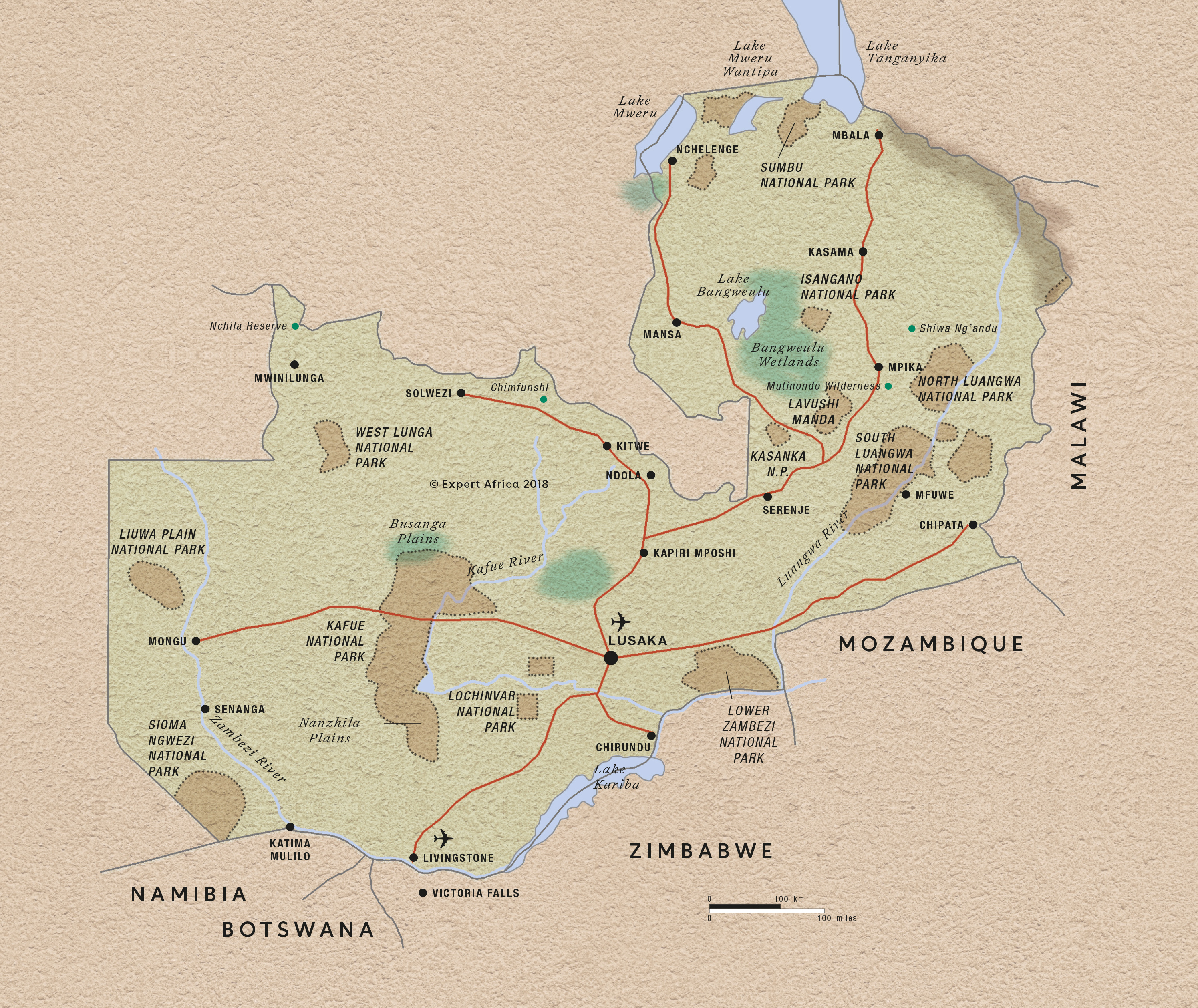
Need inspiration?
Let our trip chooser narrow down the options for you
Understanding more about travel in Zambia
Travelling to and around Zambia is a joy, especially with our team of specialists behind you, but it always helps to understand a little of what to expect.
Whether you’d like to know more about international and internal flights to and around Zambia, or need a quick fact-check on things such as currency and language, read on. Read, too, about Zambia’s attitude to LGBT travellers, and check out our advice on the sometimes complex subject of tipping.
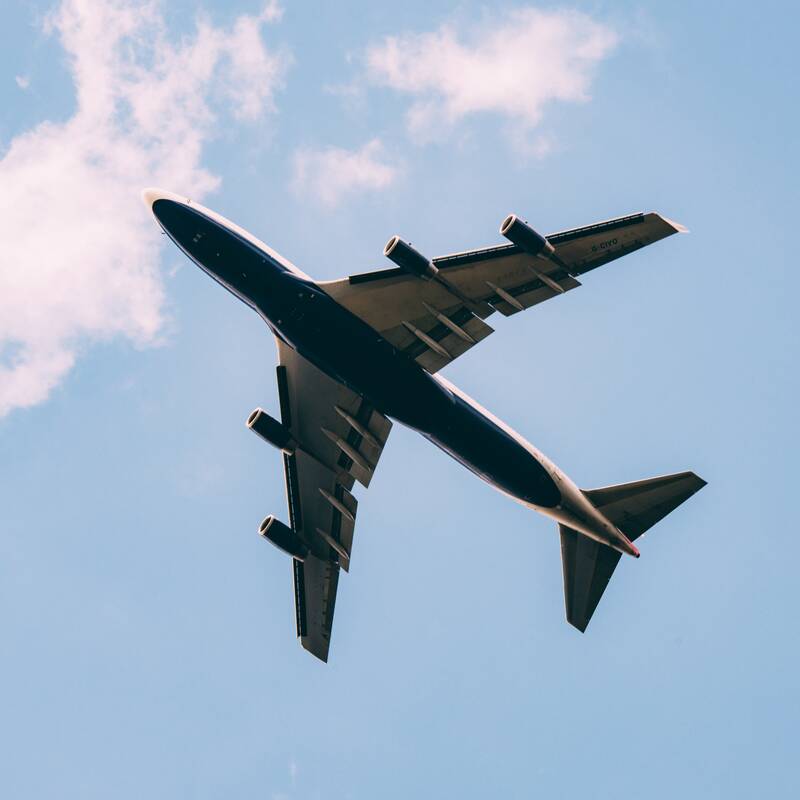
Flights to Zambia
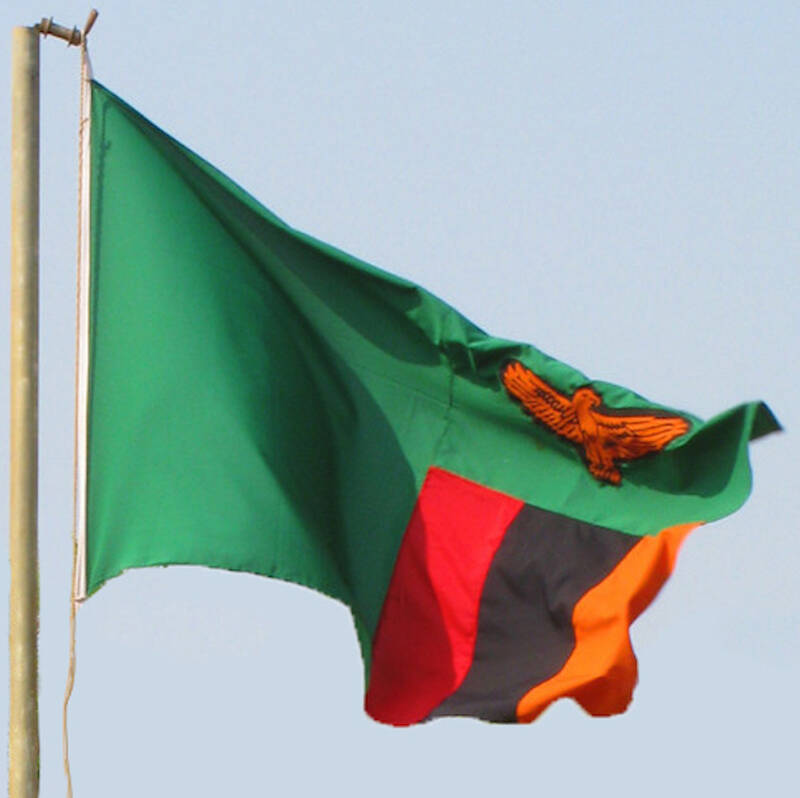
Zambia general info
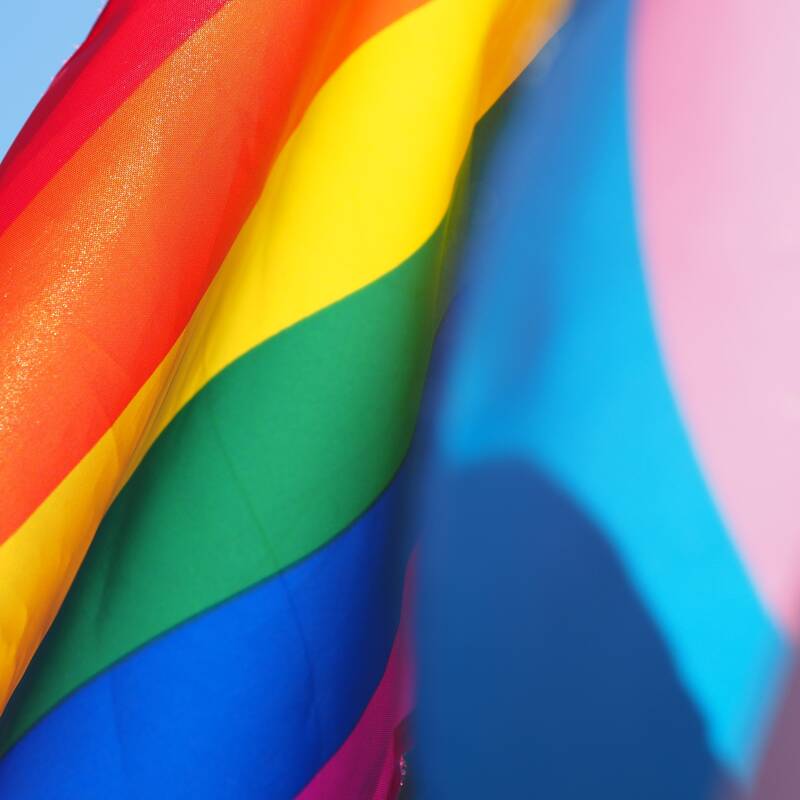
LGBT travel in Zambia

Tipping in Zambia
While we rarely arrange flights to Zambia for our travellers, as booking direct with the airlines is less expensive, we will organise a seamless itinerary that fits with your flight schedule. From the UK, there are no longer any direct flights to Zambia, so the best options are to fly with Emirates, Qatar Airways or Ethiopian Airlines, all of which have connecting flights from London (and many mainland European cities) to Lusaka . Ethiopian Airlines also operates a flight via Addis Ababa to Livingstone . It is also possible to fly with British Airways via Johannesburg, connecting with an onward flight operated by their subsidiary, Airlink, to Lusaka . Travellers from the USA can fly with United Airlines via Johannesburg, or with Emirates via Dubai. For internal flights, Zambia’s domestic airline, Proflight, operates regular flights between the Zambian capital and the country’s safari destinations, including the South Luangwa .
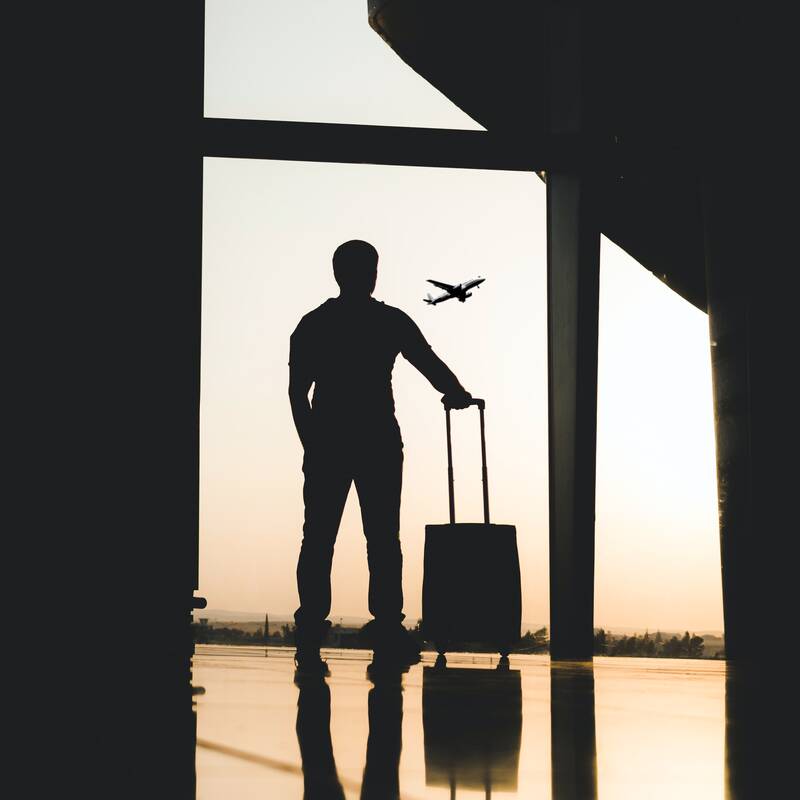
Zambia general information
Zambia’s currency is the Zambian kwacha (ZMW), but most safari camps and other tourist venues charge in US dollars, or UK pounds. Most will also accept credit cards, albeit at a surcharge, so if you’re heading on safari, you’re unlikely to need any kwacha. The country's official language is English, which is spoken by most people. Beside this, there are more than 70 different dialects spoken in Zambia, with the most common being Bemba; Bemba is also used for administration and education. Many travellers require a visa for Zambia, but at the time of writing (April 2024) most passport holders can obtain these on arrival, either free of charge or using UK pounds or US dollars cash.
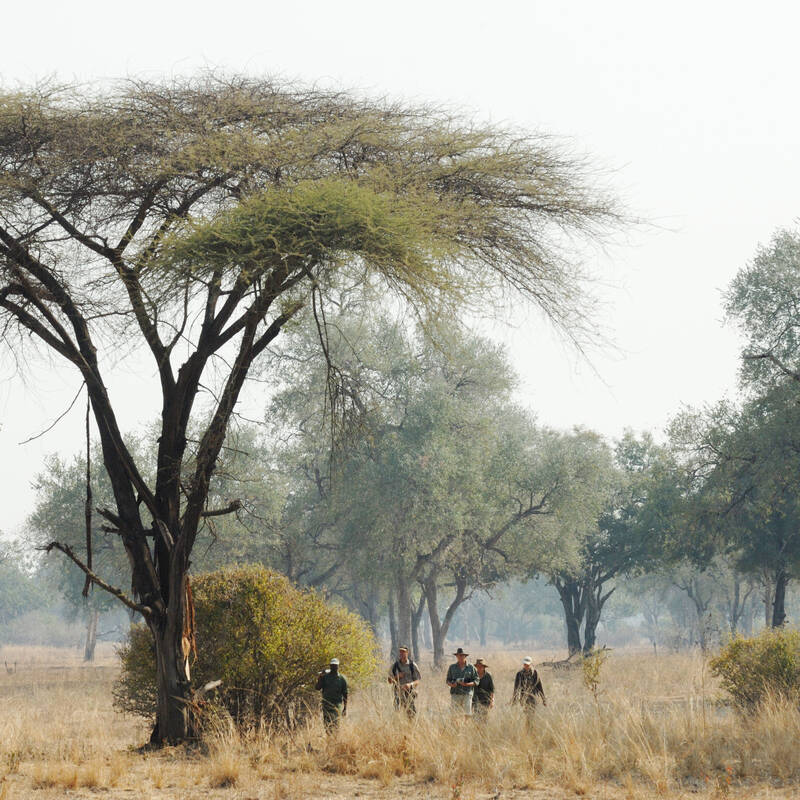
Lesbian, Gay, Bisexual and Transgender (LGBT) travel to Zambia
In the 30 years or so that we have been organising trips to Zambia, we have never heard of any problems experienced by our LGBT travellers due to their sexuality, and some have returned to the country several times. We believe this reflrects the general culture in Zambia, where the majority of people are friendly and welcoming, and care little about a visitor’s gender or sexuality. In our experience, LGBT travel to Zambia has proved to be safe and uneventful. However, we believe it’s important for our travellers to be aware of the current laws in the country, and the opinion of the general population, so do please check your government's latest travel advice before you go.
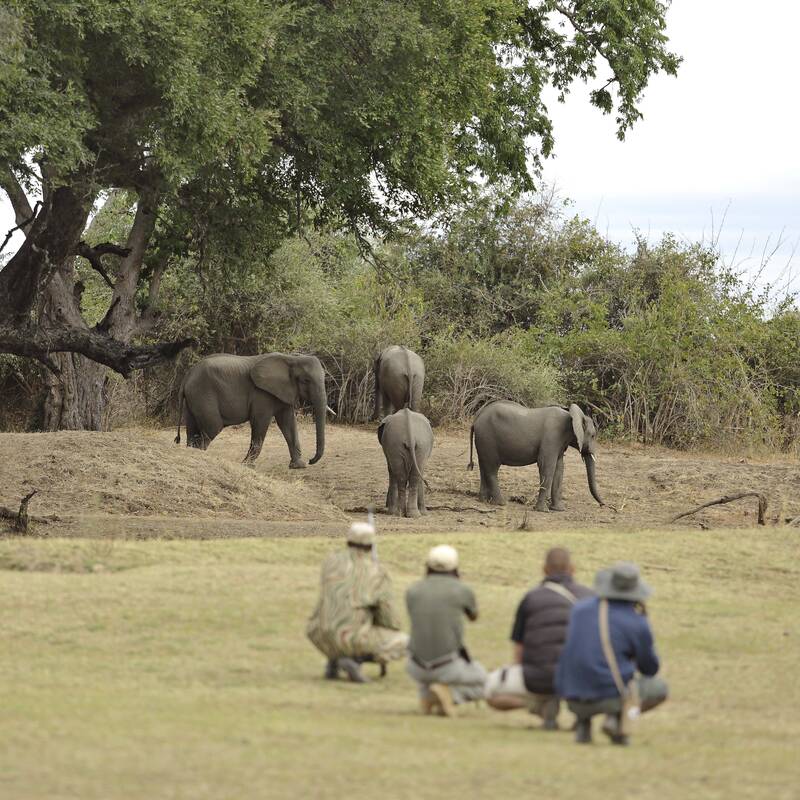
The most important thing to remember about tipping in Zambia, as in many other countries, is that it’s voluntary – and should depend on the standard of service. While we would encourage our travellers to tip in recognition of good service, we’d ask you to bear in mind that excessive tips can throw out the balance of the local economy. Deciding who to tip, and when, is as important as how much. Behind every successful safari is a dedicated team of staff who work hard to ensure that you enjoy your trip. It makes sense, then, to consider tipping them as well as your guide and waiter. Usually we recommend tipping just once, at the end of your stay. Many lodges have a staff tip box, but you could also place tips in a labelled envelope or series of envelopes to prevent any misunderstanding.
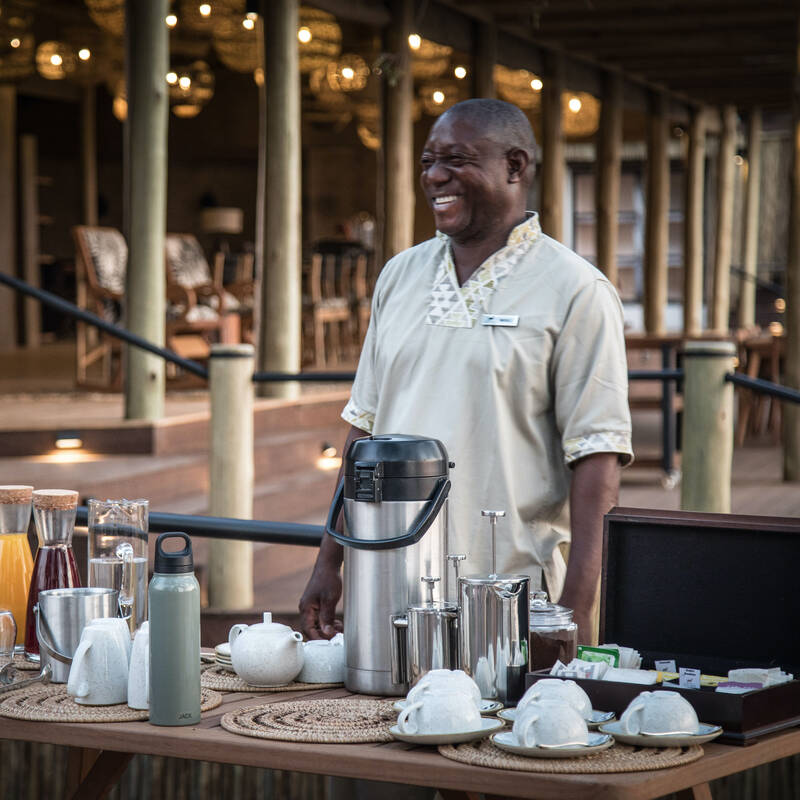
Zambia safari holidays
In our experience, many Zambian areas remain fairly “wild”, and many of its camps are still firmly in the “authentic” bracket, making this exceptional country a truly rewarding choice for a safari holiday.
Zambia’s small safari bush camps – some still owner-run – are renowned for their warm hospitality and great walking safaris . In all the main national parks, you’ll also find some of Africa’s best safari guides, thanks to their exceptional standards of guide training.
North and South Luangwa , in particular, are renowned for top-class walking safaris, whilst the Lower Zambezi National Park offers superb boat trips on the Zambezi River. Add in the Victoria Falls , one of the seven natural wonders of the world, and you have the makings of an unrivalled safari.
Take a look through our selection of safari holiday suggestions below, then call us , so that one of our Zambian experts can help you to design your own personal trip.
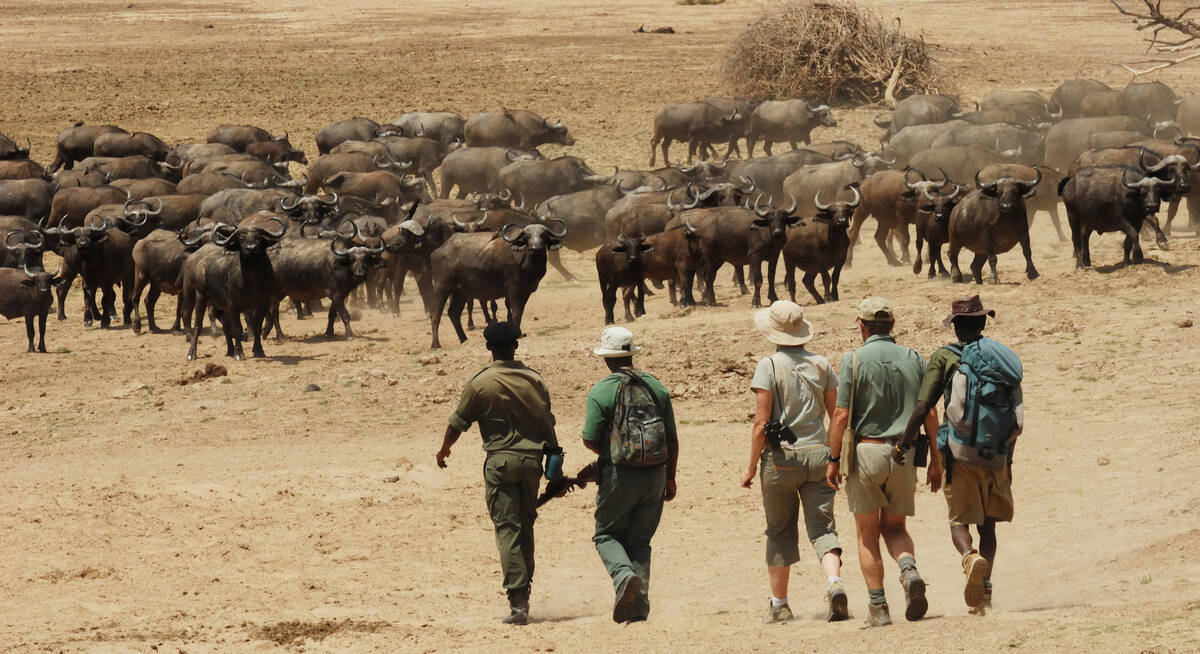
Scrub Hare Safari
7 days • 3 locations LUSAKA AIRPORT TO LUSAKA AIRPORT
Camps run by welcoming owners with a passion for their environment are rare, and Tafika is one of the best. Combine this with walking safaris at equally excellent bushcamps for the best of the South Luangwa.
US$6,040 - US$7,210 per person
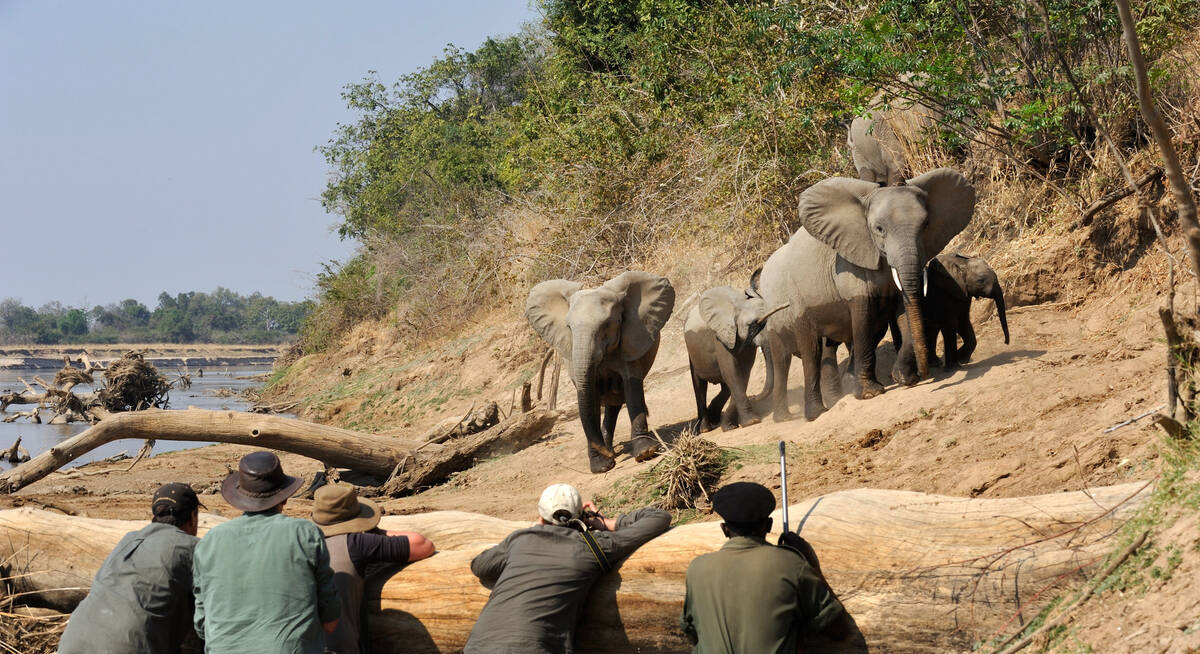
Boehm's Zebra Safari
7 days • 2 locations LUSAKA AIRPORT TO LUSAKA AIRPORT
This safari combines two high-quality owner-run camps in a very productive region of the South Luangwa. The guiding is excellent and with its hides this safari is perfect for serious photographers.
US$7,130 - US$9,410 per person
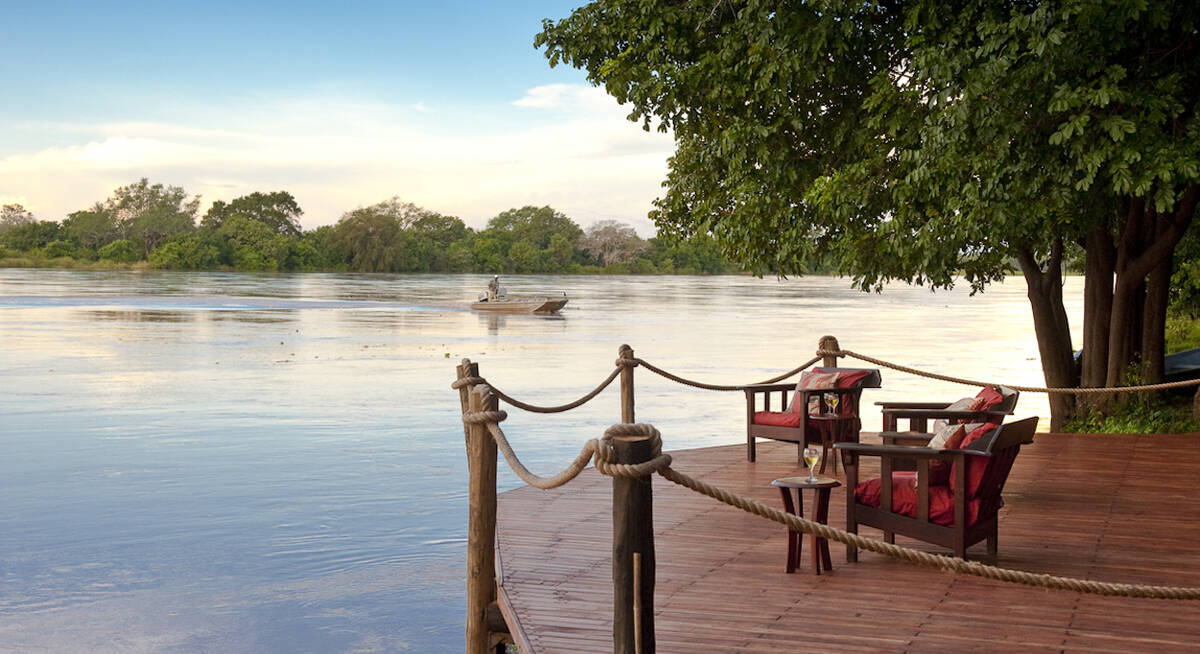
Hyena Safari
11 days • 4 locations VICTORIA FALLS AIRPORT TO LILONGWE AIRPORT
Mix relaxation and adventure on a safari combining the South Luangwa with Victoria Falls and the beaches of Lake Malawi. These three locations are among the most iconic in southern Africa.
US$8,630 - US$11,910 per person
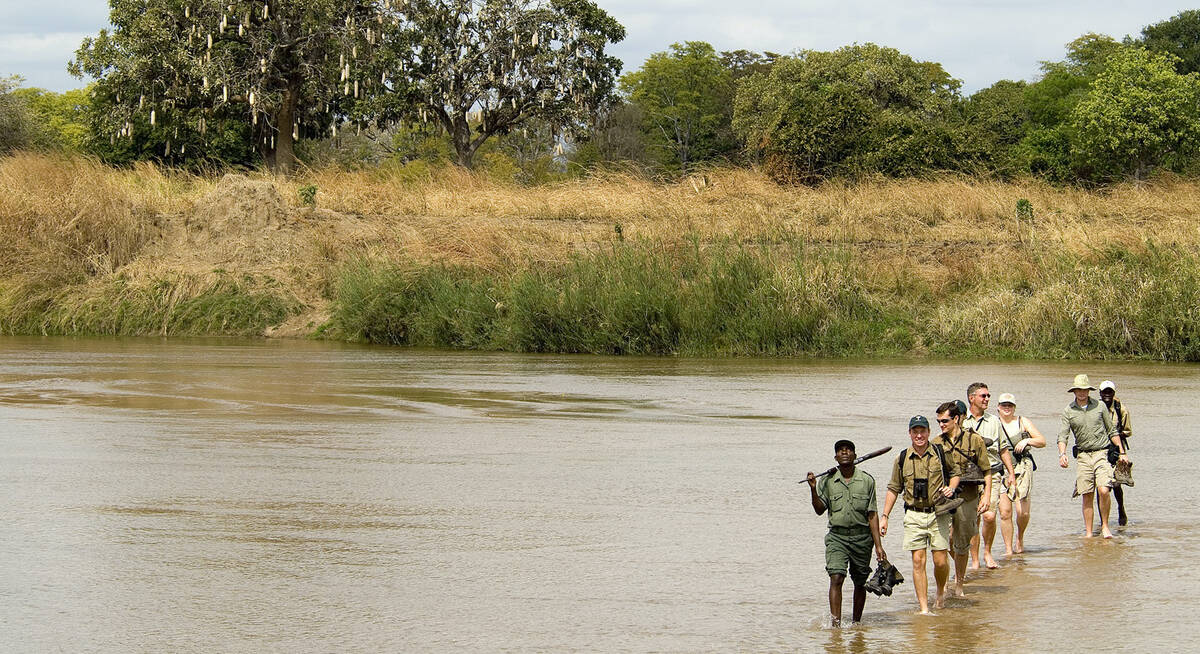
Robin Pope Walking Safari
The definitive, original mobile walking safari; explore the remote north of the South Luangwa on foot while staying in a simple mobile camp that moves with the group.
US$6,500 - US$7,870 per person
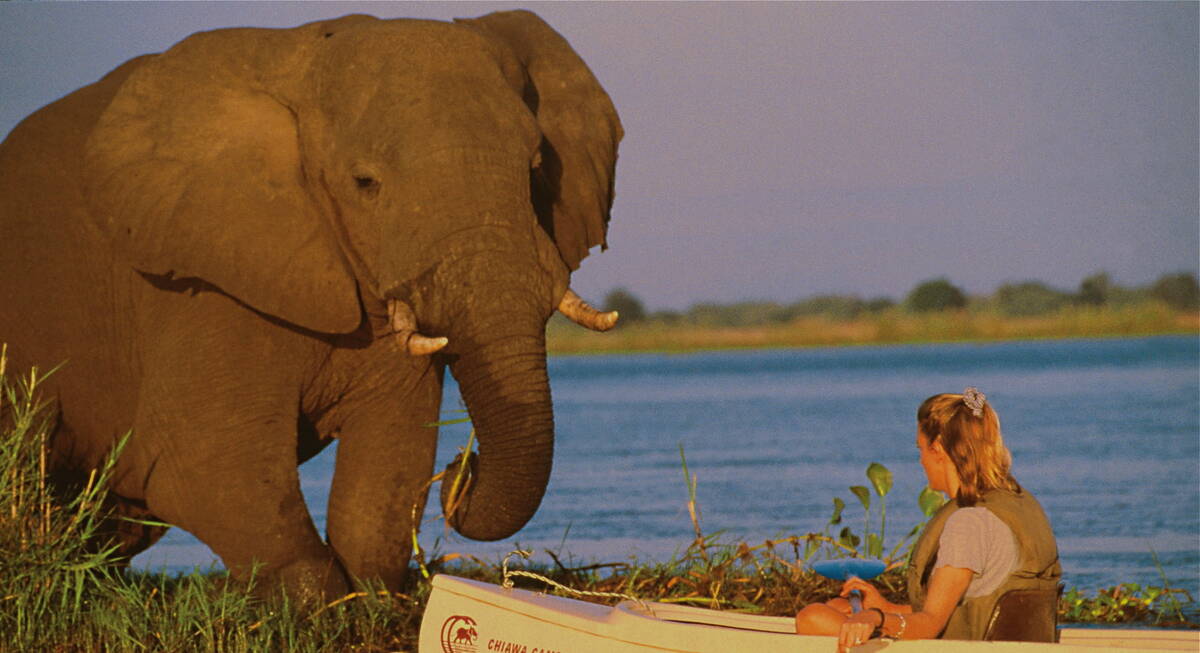
Slender Mongoose Safari
5 days • 2 locations LUSAKA AIRPORT TO LUSAKA AIRPORT
A detailed exploration of Lower Zambezi from two top-notch sister camps, each in a prime location in the national park. Expect a high level of care, first-class guiding and superb wildlife.
US$6,270 - US$8,400 per person
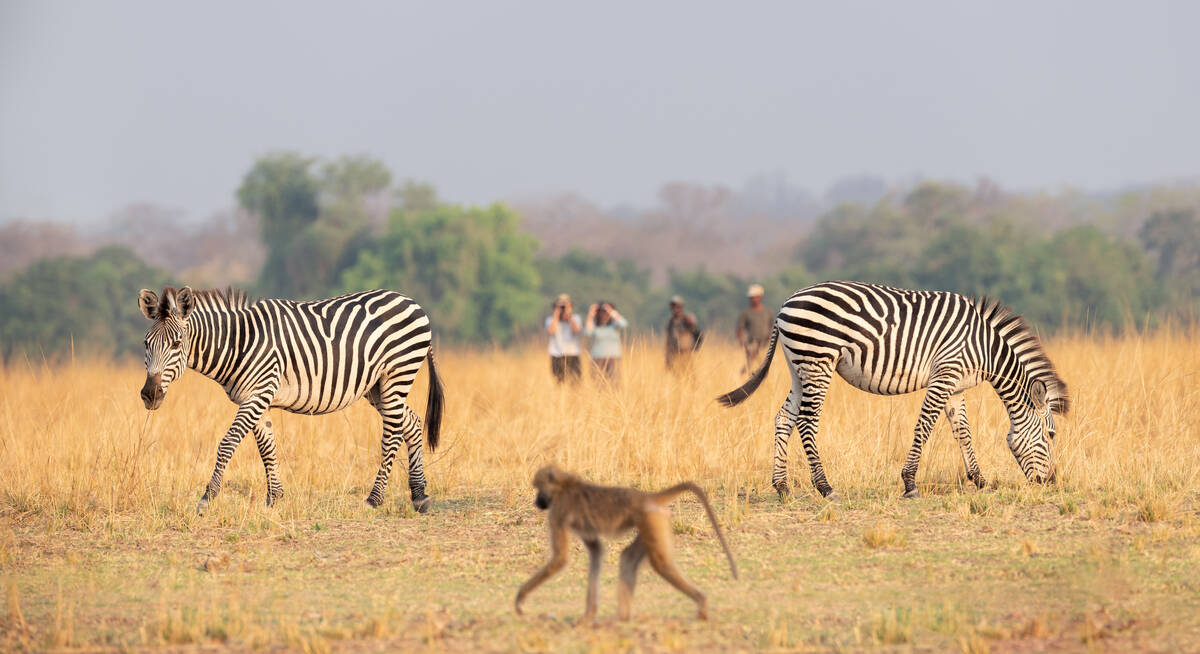
Vervet Monkey Safari
Explore the world-class wildlife of Zambia’s South Luangwa and Lower Zambezi national parks in considerable luxury, guided by experts from two sister camps renowned for their excellent level of care.
US$8,370 - US$10,990 per person
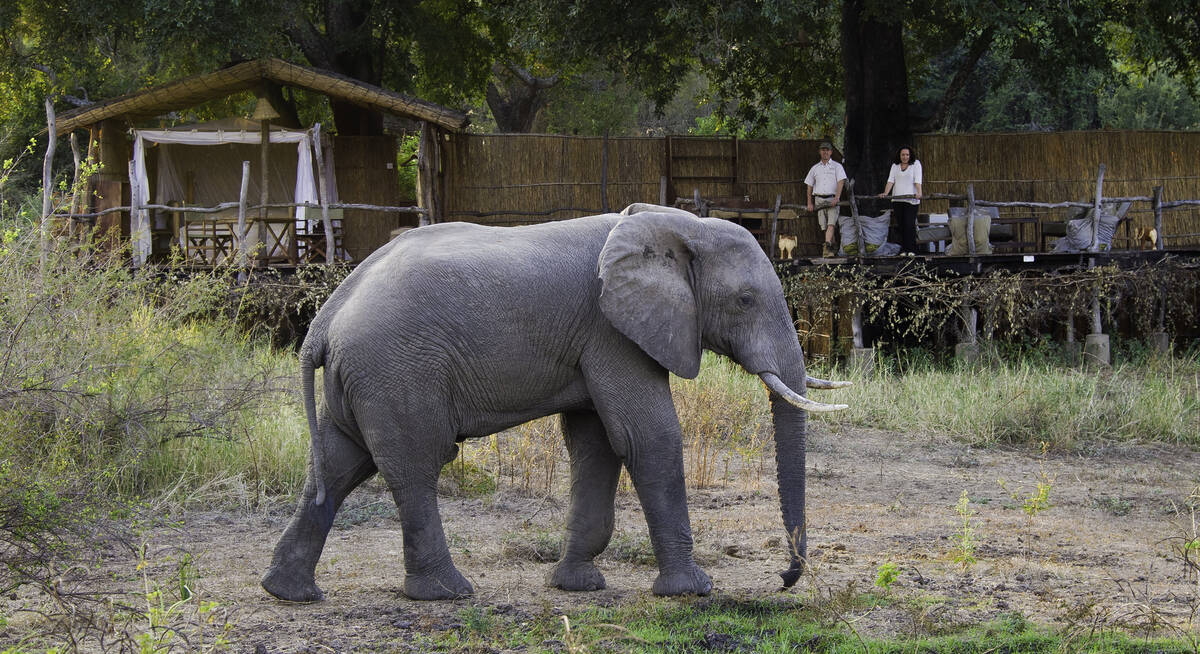
Fruit Bat Safari
6 days • 2 locations LUSAKA AIRPORT TO LUSAKA AIRPORT
Offering a highly specialised experienced, this safari uses two simple bases for access to South Luangwa and Kasanka National Parks. Visit between October and December when you will witness the world’s largest mammalian migration of millions of fruit bats.
US$4,980 - US$5,530 per person
Let us help you customise your trip
All of our holidays on this site are just ideas; none are fixed. All of our trips are tailor-made, so we'll always adapt them to suit you. Talk to an Expert and let us help you to work out your perfect trip.
Talk to an Expert
Call us now! We’ll match you with the Specialist in our team who is best suited to help you. Then together we can start planning your trip.
Set up your itinerary
Based on our experience and your ideas, your specialist will create a detailed, costed itinerary. We’ll refine it together, until we have a trip that you’re perfectly happy with.
Prepare for your trip
The same Specialist will make the seamless arrangements for your trip, send you detailed travel documents, and be available to answer any questions before you depart.
Travel with peace of mind
After you set off, you’ll be cared for by our partners in Africa, most of whom have worked with Expert Africa for decades. And if you ever need us urgently, we’re available 24/7.
When you return
We love to learn about your trip, and so will always be grateful if you’ve the time to give feedback to your Specialist when you return.
Special types of holiday to Zambia
Zambia’s safari attractions include many that appeal to individual travellers, whether on family holidays or travelling solo, with interests that range from birdwatching and photography to culture – and even adrenalin activities.
A few safari camps are set up for photographers , with specially trained guides and wildlife hides that offer superb vantage points. Those hides can be equally valuable for birdwatchers , who may be intent on seeking out the country’s 750+ bird species, or trekking in search of the rare shoebill.
While some camps genuinely welcome children, families often prefer the flexibility, relaxed atmosphere and space offered by Zambia’s private houses – the perfect spot for a family safari holiday .
Honeymoon visitors will find romantic hideaways and secluded private dinners, whereas solo travellers will appreciate the shared activities and dining that’s the norm elsewhere. And for culture, there’s no more fascinating place than Shiwa Ng’andu .
To find out more, or to get the lowdown on horseriding, wellbeing or even adrenalin sports at Victoria Falls , talk to us and we’ll help you to organise your perfect safari holiday.
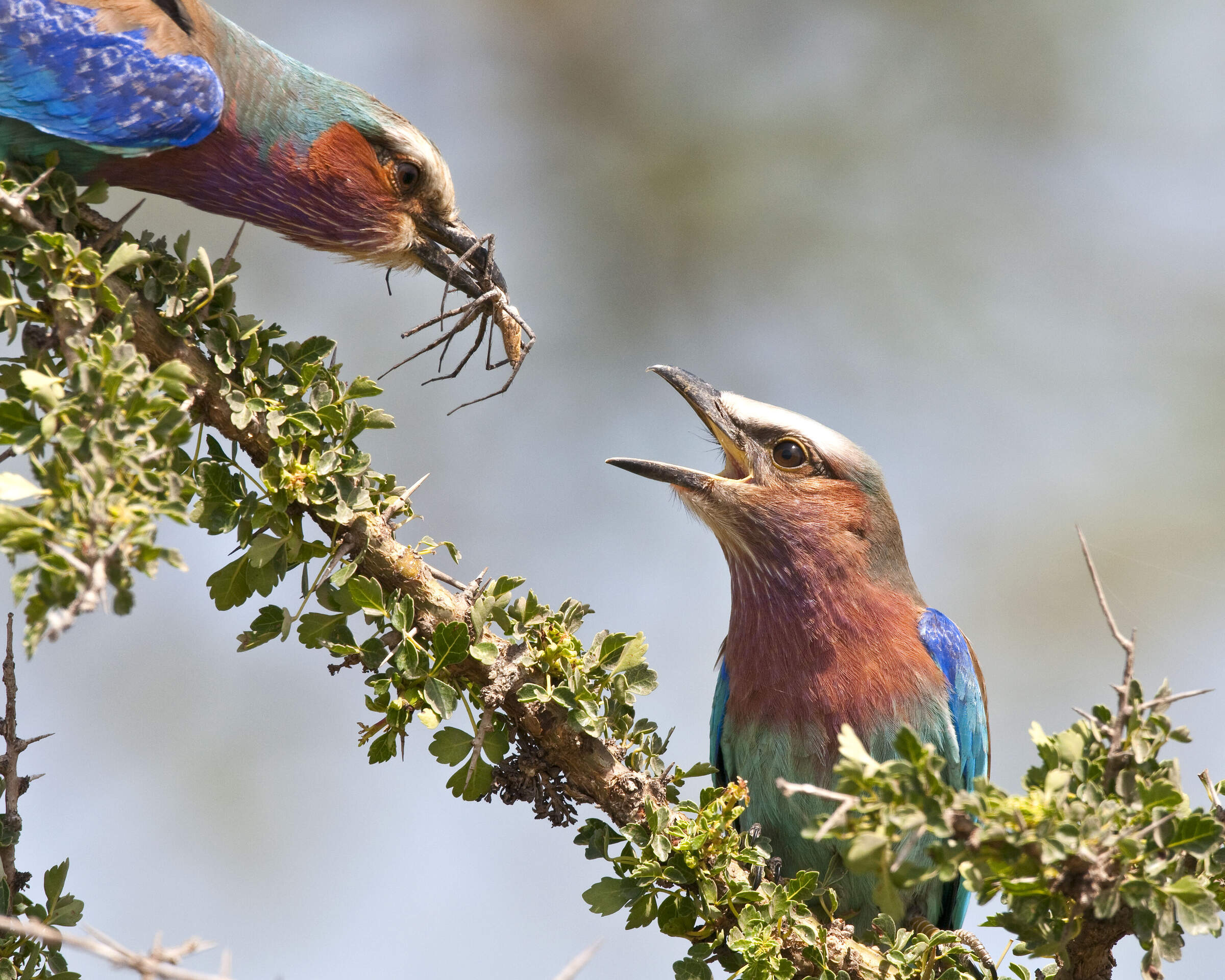
Birdwatching
Diverse habitats, discreet hides and superb guiding.
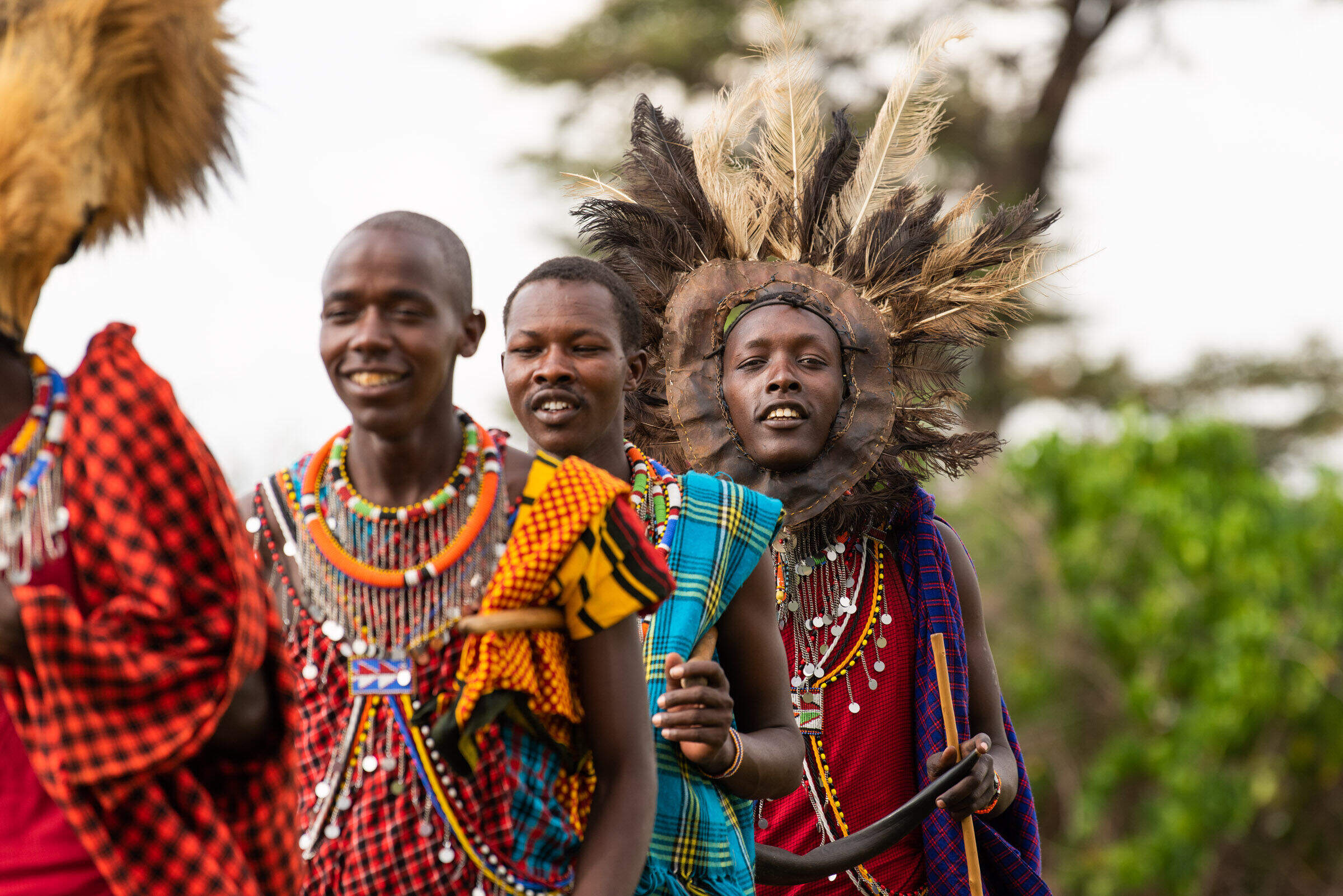
Cultural experiences
Get an insight into Africa's cultures and history.
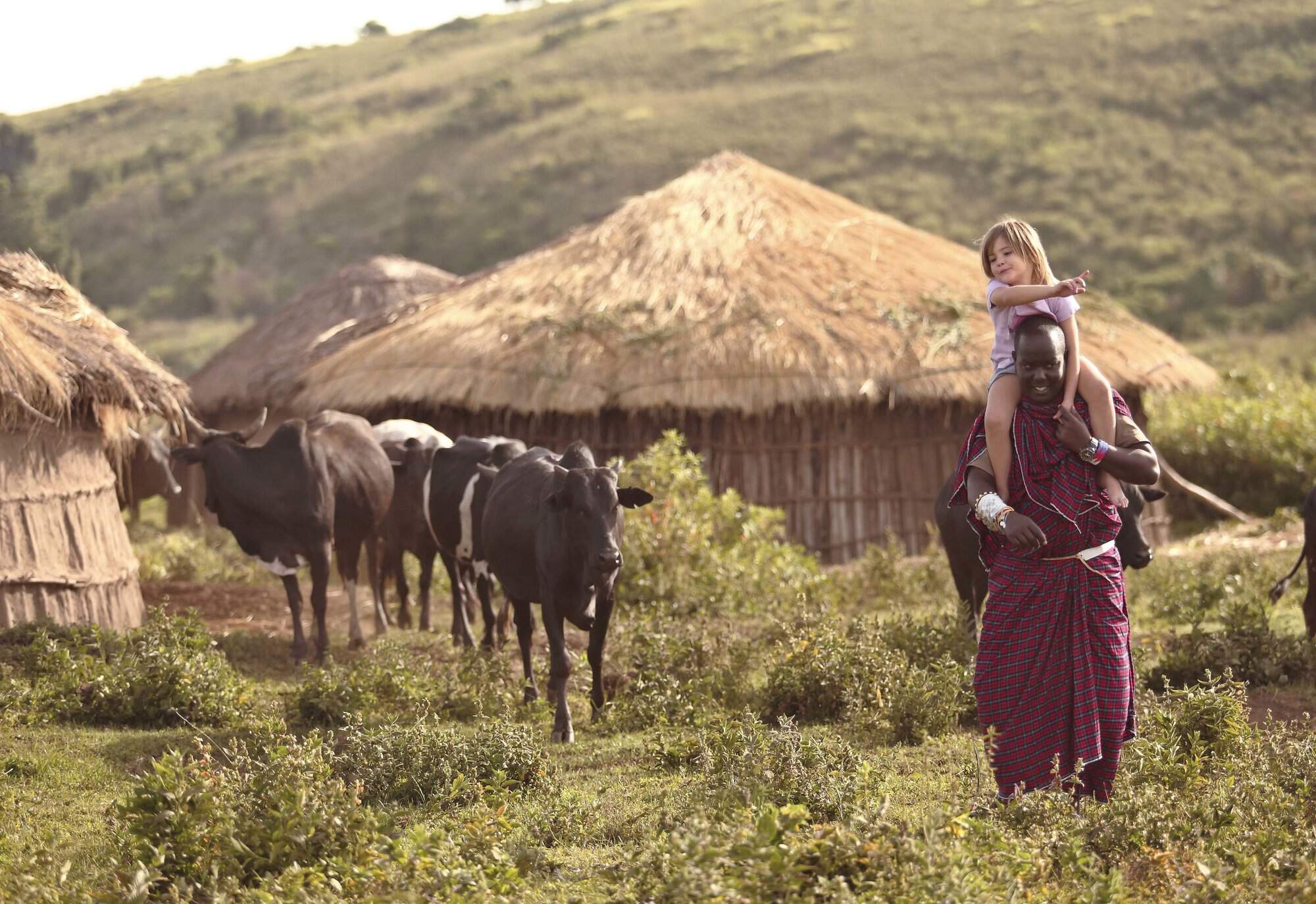
Family holidays
Hand-picked camps for an incredible family safari.
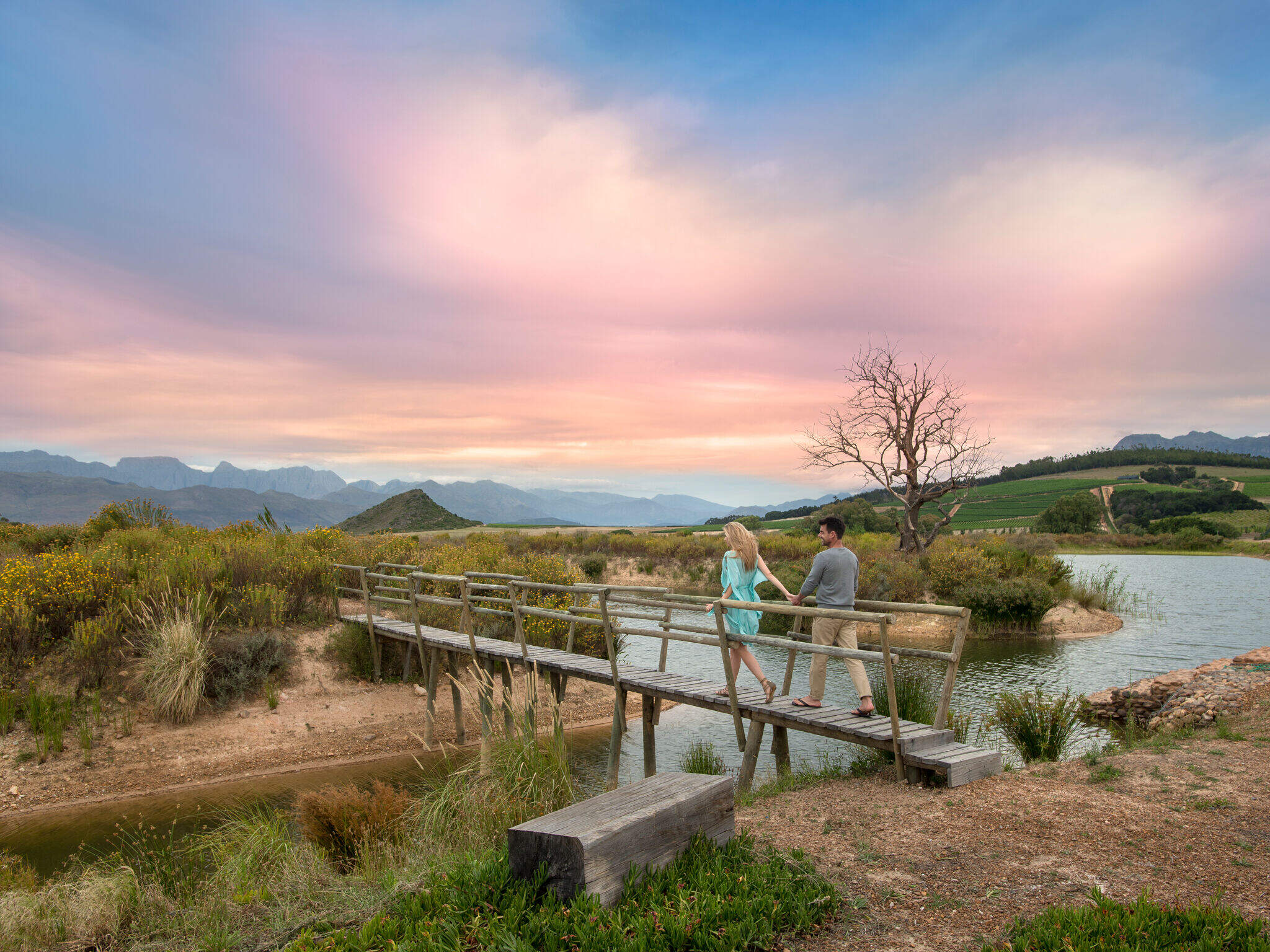
Romantic safaris and castaway island retreats.
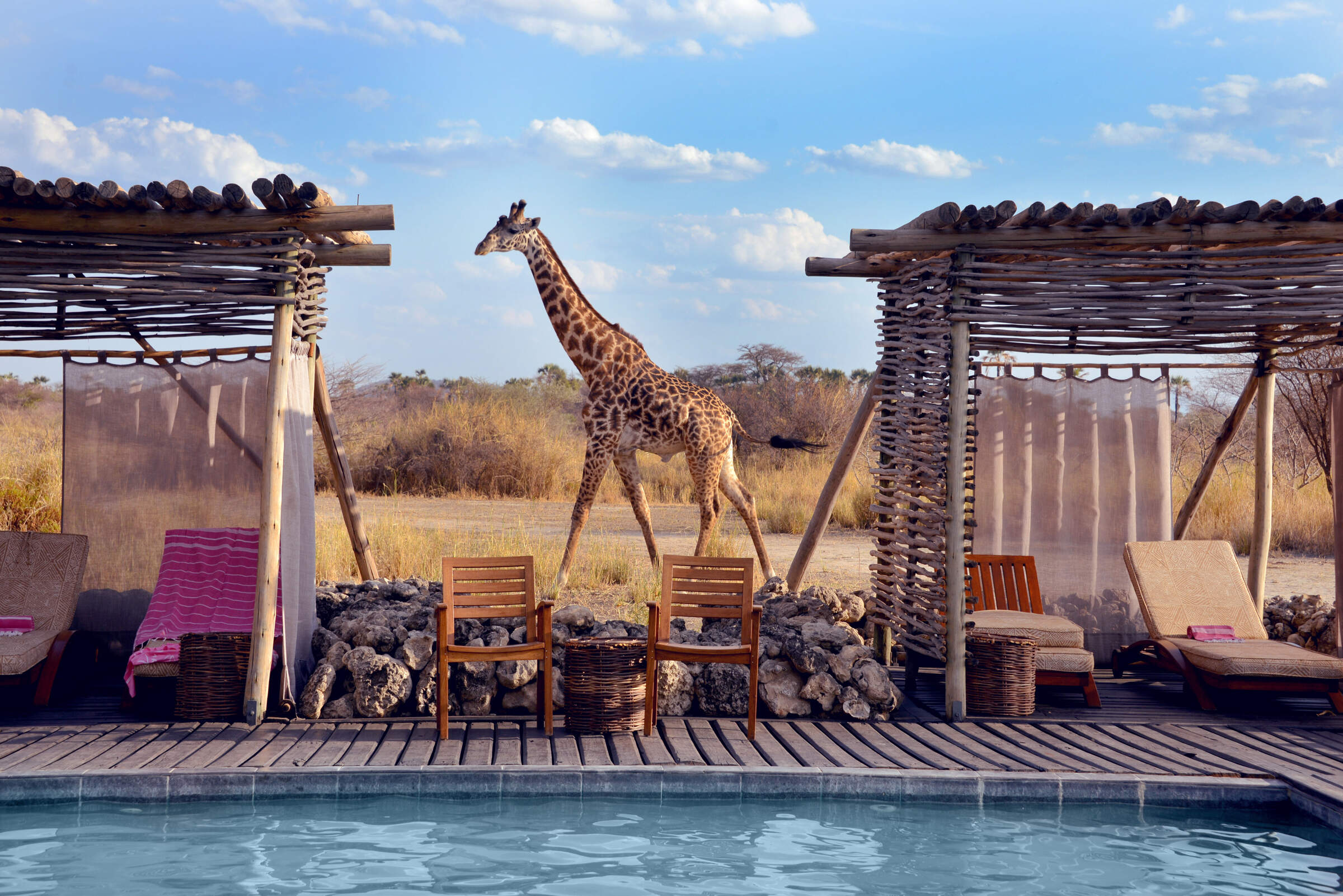
First-class service, scenic vistas and unparalleled comfort await you during these carefully selected luxury holidays.
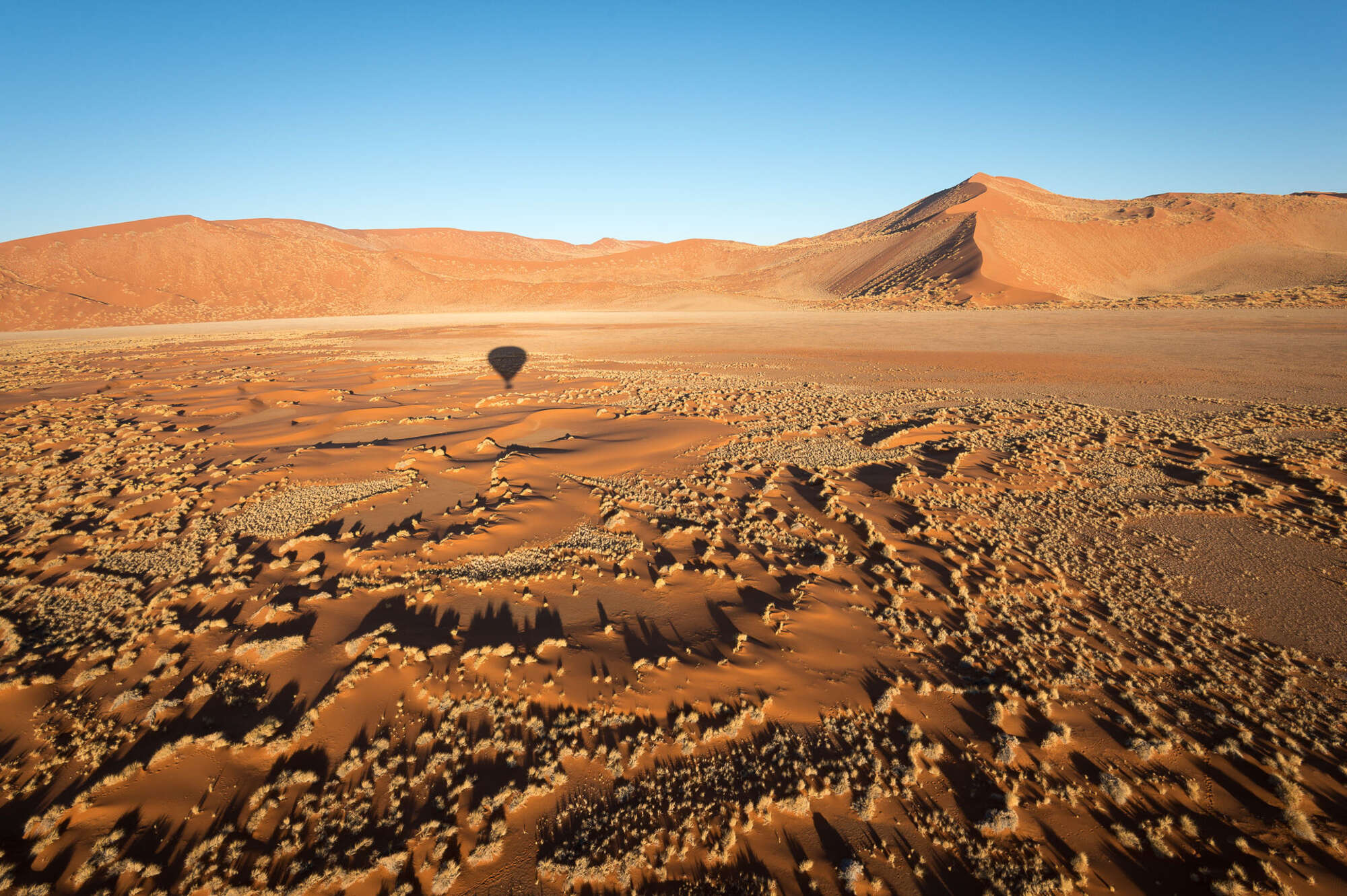
Photography holidays
Great holidays to suit the keen photographer.
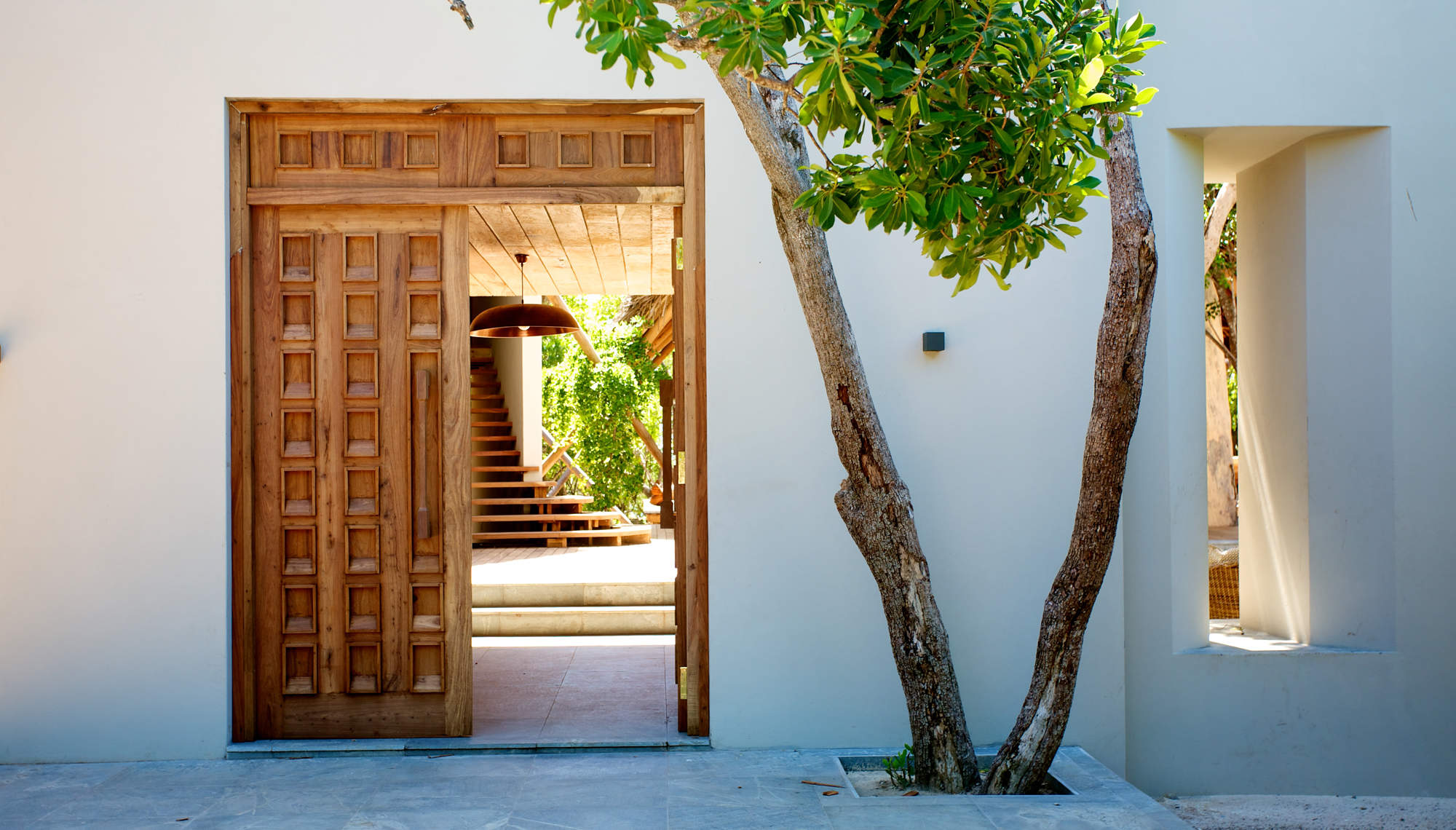
Private villas & houses
Enjoy Africa with just your friends & family
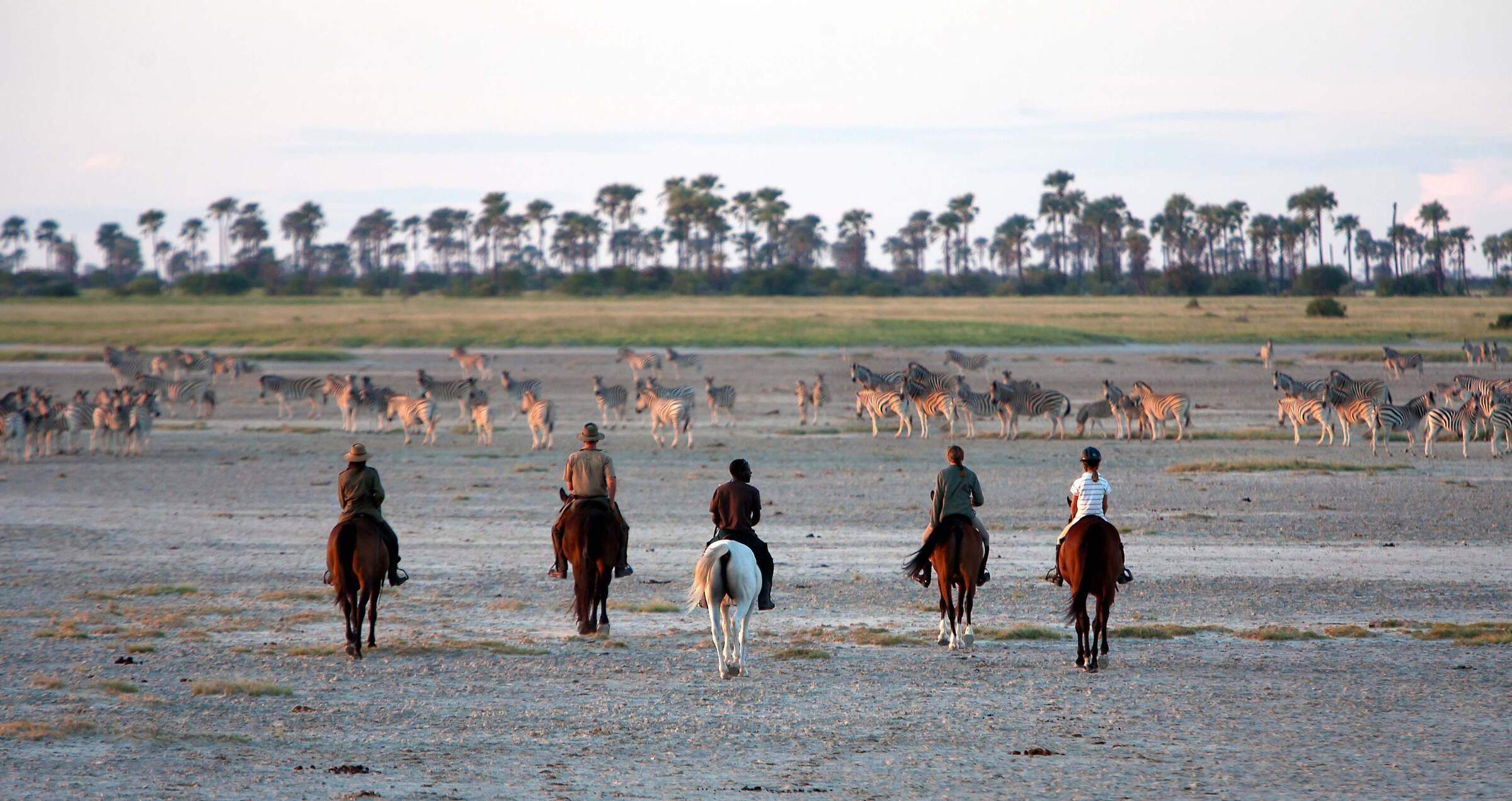
Riding holidays
Explore Africa's wilderness on horseback.
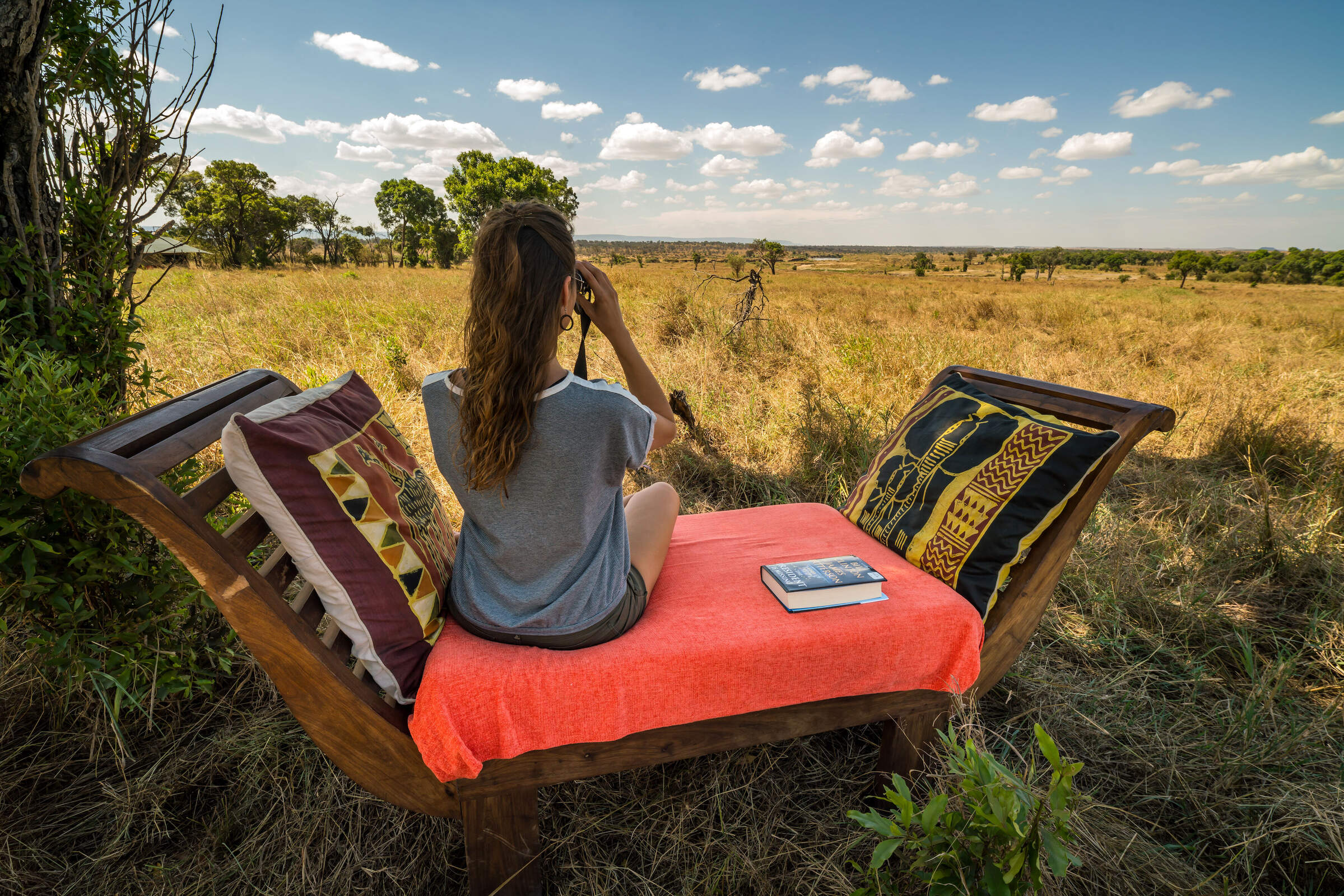
Solo Travel
Trip ideas ideally suited for a solo traveller.
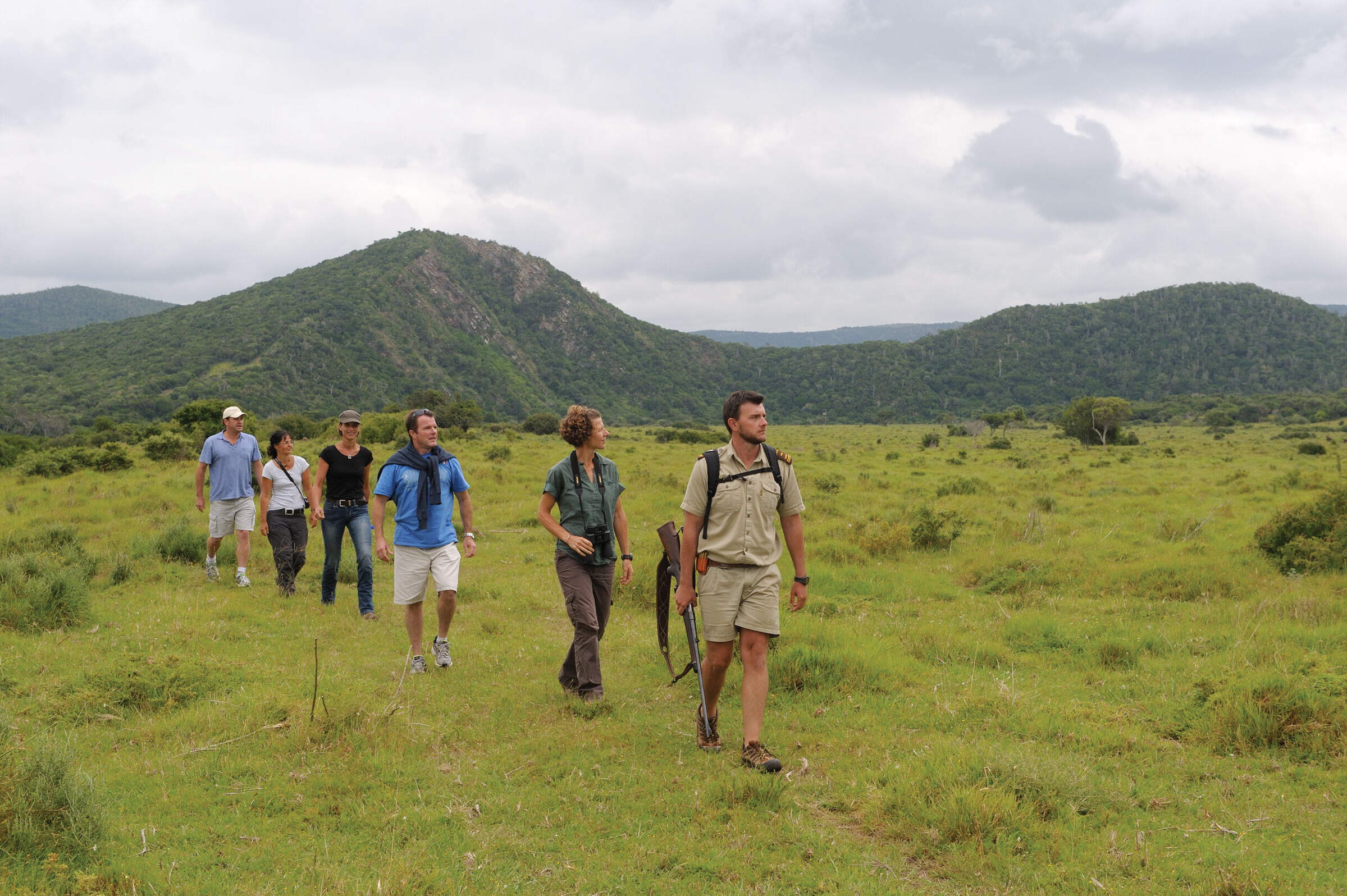
Explore Africa's most scenic trails on foot.
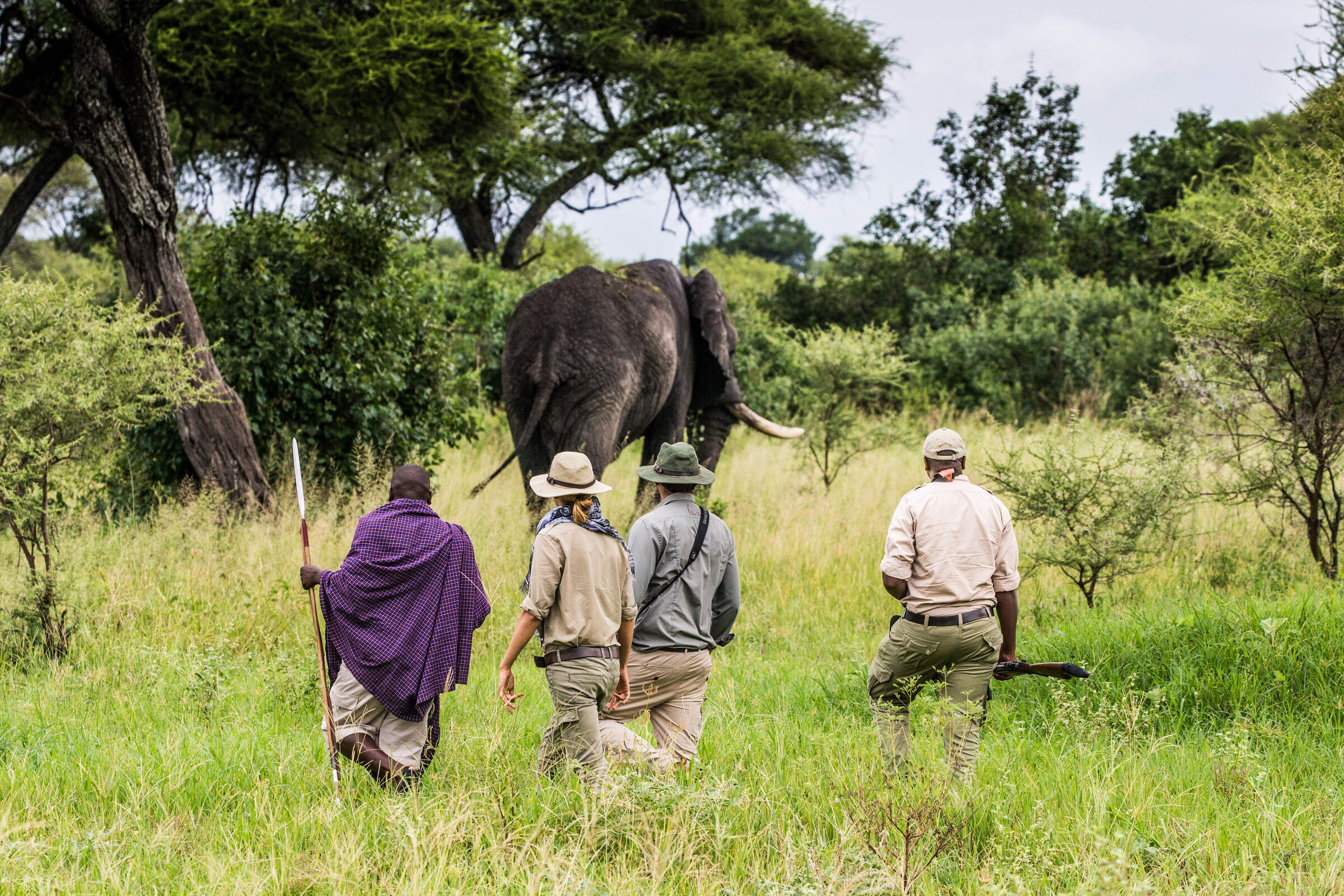
Walking safaris
Explore Africa's untouched wildernesses on foot.
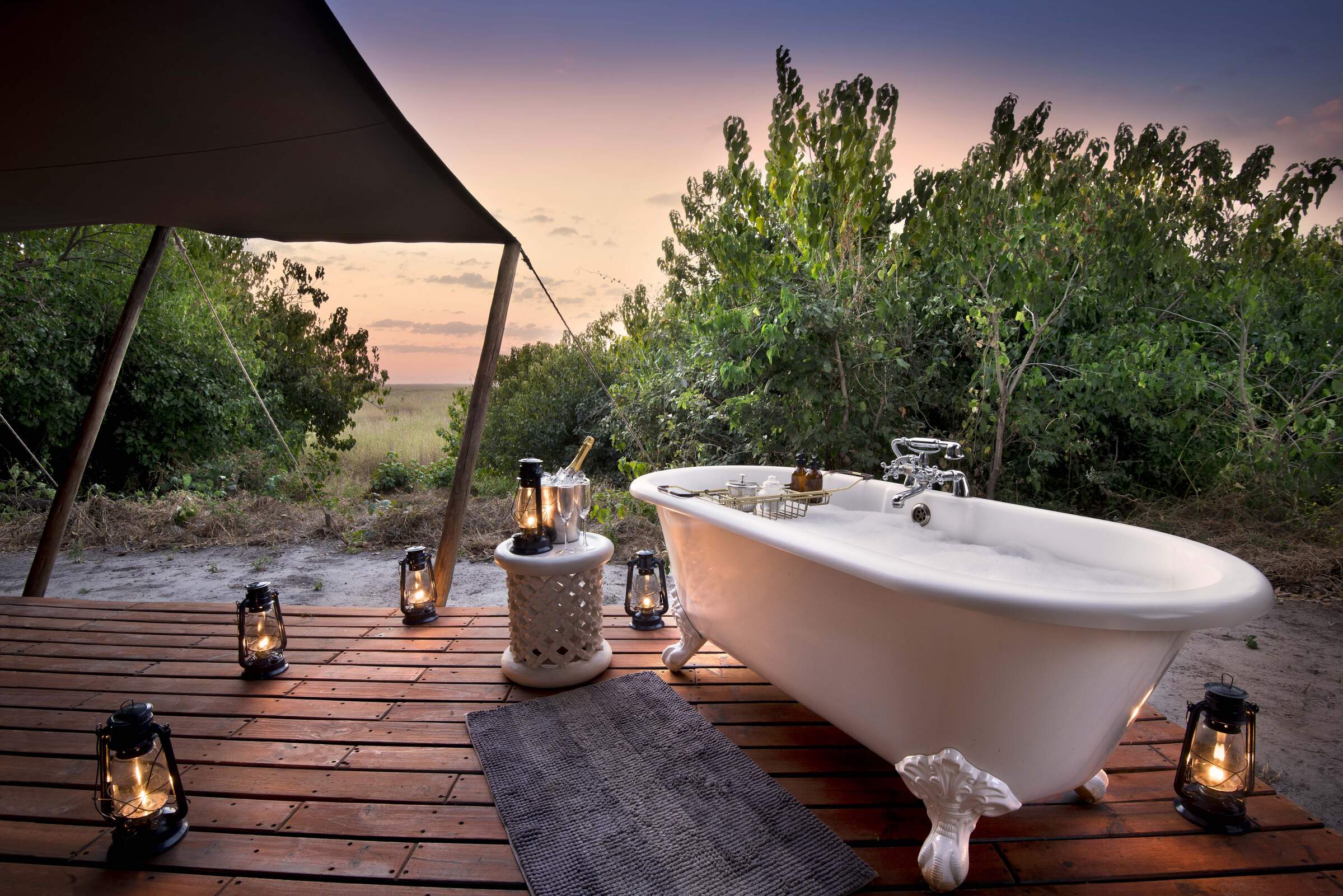
Wellness escapes in stunning locations
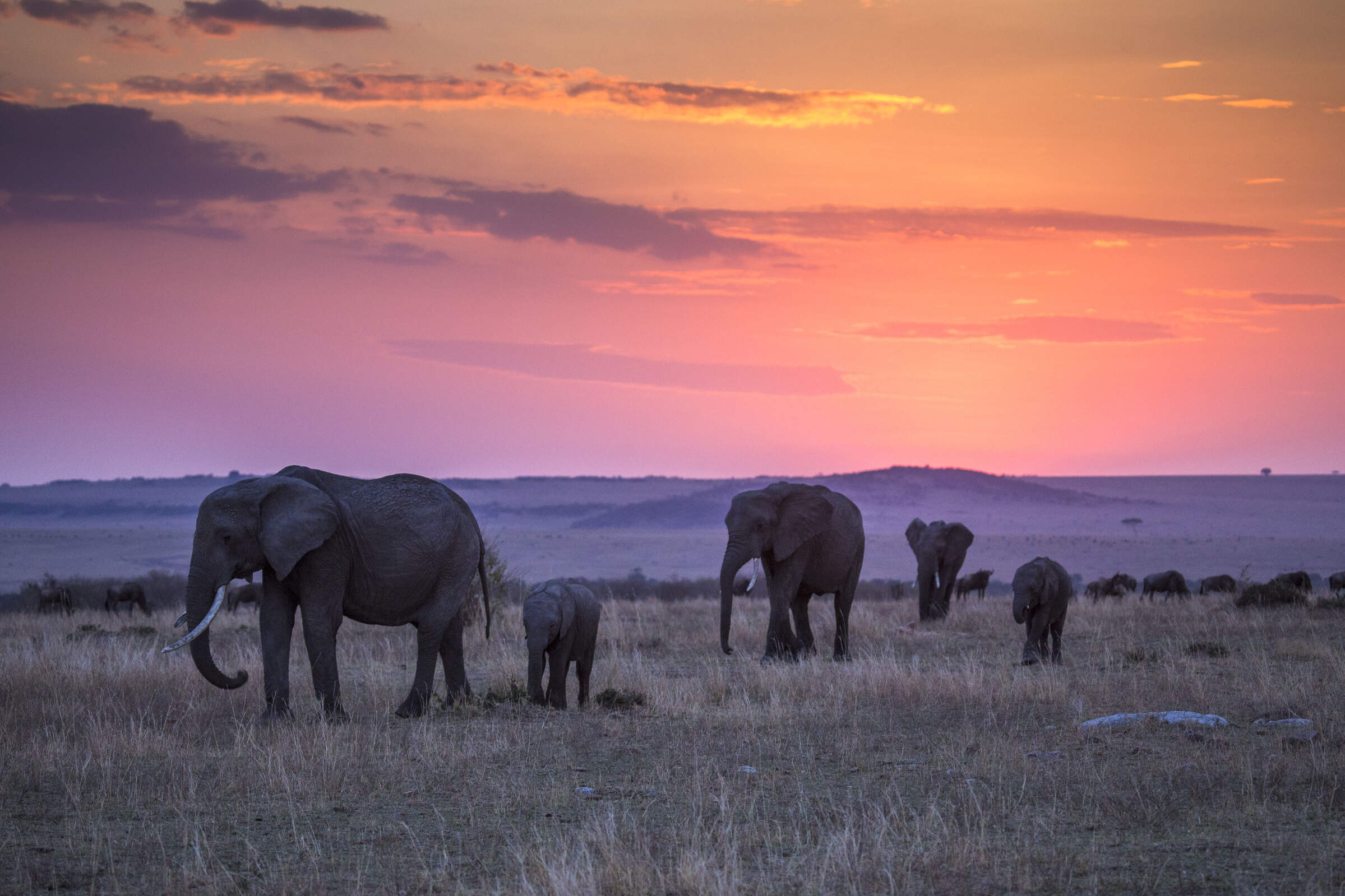
Wildlife safaris
These trips include hard-hitting game and fascinatingly elusive species alike, as well as superb guiding and a variety of diverse ecosystems.
Frequently Asked Questions
Zambia FAQs
Planning a holiday to Zambia can throw up all sorts of seemingly trivial questions, the sort of thing you’d like to ask someone you know.
Yet these questions are important, so below we’ve included some of those that we’re frequently asked – from how long you need for a Zambia safari to what you can expect to eat and what sort of activities you can enjoy.
No matter what you’d like to know, please don’t hesitate to ask us ; we’re here to help.
How long should I stay?
Even with just four–seven nights’ vacation, you could combine a Zambia safari in one of the national parks – typically the South Luangwa or the Lower Zambezi – with a grand finale at the Victoria Falls . Just a few days longer would allow you to explore at least two of the parks, perhaps taking part in more activities such as walking safaris or canoe trips, while leaving time simply to gain a real sense of place. Longer still and the choices burgeon – depending on the time of year and your interests. This is when you could head to one of the more remote parks, such as North Luangwa National Park or Liuwa Plain , or seek out the extraordinary manor house in the bush that is Shiwa Ng’andu . There could be time for adrenalin activities at the Falls, or to seek out wildlife sightings – such as the shoebill – that few travellers are lucky enough to witness.
What’s a typical day on safari in Zambia?
At most safari lodges in Zambia, there are two activities a day: one in the early morning, the second in late afternoon. After an early-morning wake-up call – usually at or just before sunrise, when wild animals are at their most active – you’ll be offered a hot drink and a snack, or a more substantial breakfast, before you set out. Depending on the location, this could be a game drive, a walking safari, a boat trip, or even a short canoe safari. Typically you’ll return late morning for a substantial meal, which is followed by a couple of siesta – time to relax with a pair of binoculars and take in the local wildlife, or perhaps to read or take a nap. Mid-afternoon sees tea or coffee with cake, or a savoury snack, before your second activity. Sometimes you’ll return to the lodge before sunrise; at others you may stay out for sundowner drinks before returning for dinner.
What sort of food can I expect on safari?
The standard of food at Zambia’s safari camps is very high, even at the simplest of bushcamps, where it is often cooked over an open fire. The majority serve delicious international fare, from breakfast to a substantial brunch or lunch, followed up by afternoon tea, and – typically – a three-course dinner. Add to that a range of snacks – often homemade – while you’re out on activities, and you won’t go hungry! While on safari, you may have the chance to sample the local Zambian cuisine. This is based on nshima , which is made from ground maize, a little like polenta, and is served with tasty meat or dried fish. The local beers ( Mosi , Castle and Rhino ) are good, as are imported South African beers and wines. Soft drinks are available everywhere, although choices are often limited.
What’s it like on a Zambia walking safari?
A walking safari with big game is an amazing experience – and you don't need to be especially fit. These aren’t route marches; rather they're about taking time to spot the signs of wildlife around you and to learn how the ecosystems work. Walks have a maximum of seven guests, but up to five is more usual. Distances will depend on the wildlife that you find and the interests of the walkers, but two to five miles (3–8km) is typical. You'll stop frequently for your guide to educate, enlighten and often entertain you with tales of the bush around you. Zambia's safari lodges differ, but usually you'll set off with a guide, an armed game scout, and often a tea-bearer carrying refreshments. Sensible shoes or light boots are best and ideally you should wear natural, muted colours and a hat. All you need to carry is your camera and binoculars.
What activities can I do on a Zambia safari?
At most safari camps in Zambia you’ll spend your days (and evenings – something that is not possible in national parks in many countries) exploring either from an open-topped 4WD game vehicle, or on foot. Camps near navigable rivers, for example in the Lower Zambezi National Park , usually also offer boat safaris, as well as guided canoeing trips – usually in two-person canoes – and catch-and-release fishing from a pontoon boat. For almost all of these, you will be given the options at the camp, so there's no need to decide before you get there. The exceptions are a handful of tiny bushcamps in the more remote areas of South Luangwa National Park , which offer only walking safaris - and where you may even be able to walk between camps. Walking safaris can also be done in the company of a small group; see our Robin Pope Walking Safaris for departure dates and prices.
Our other African destinations
As specialists in safari destinations, we at Expert Africa are well-placed to ensure that you choose the right country for your safari holiday.
As an alternative to Zambia, consider the more rustic Zimbabwe , where wildlife guiding is equally impressive and the Victoria Falls, a highlight of Zambia, can also be experienced.
If Zambia or Zimbabwe feel a little too “wild”, or you’d like to experience the more open savannah of East Africa, take a look at Kenya or Tanzania , whereas for a self-drive holiday, Namibia is a must.
Botswana may be costly, but its exclusive private concessions are a big draw for many, coupled with the natural grandeur of the Okavango Delta, whereas in Rwanda , visiting a family of mountain gorillas is a once-in-a-lifetime opportunity.
Then there are the countries where beaches and watersports can be combined with a safari: think Kenya , Mozambique , Malawi and South Africa , or how about an idyllic island add-on to Zanzibar or even the Seychelles ?
The choices are many and varied, so do call us ; we’re here to help you plan your perfect safari.
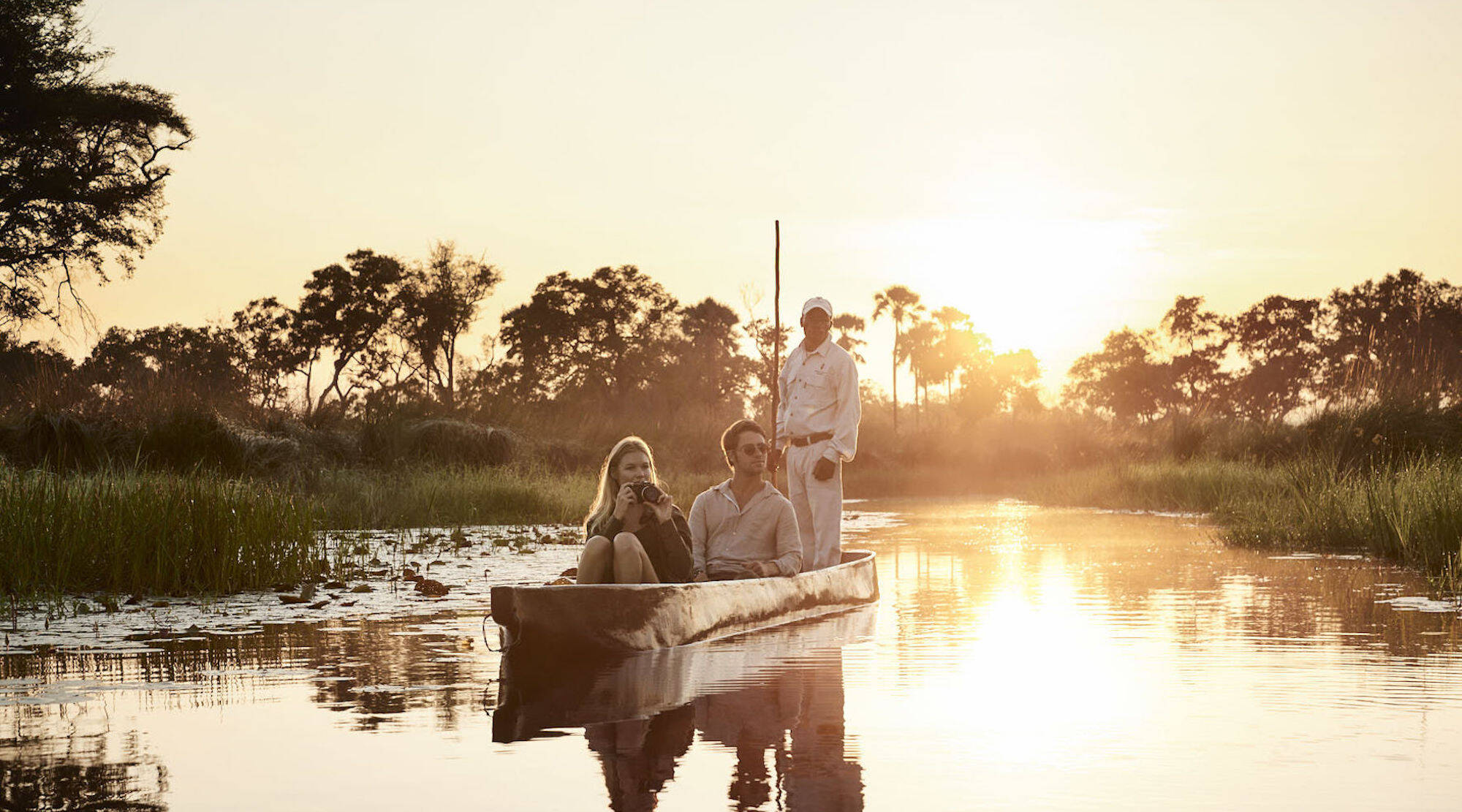
With big game, glamorous lodges and one of the greatest unspoilt wildernesses on Earth, Botswana is perhaps Africa's most exclusive safari destination.
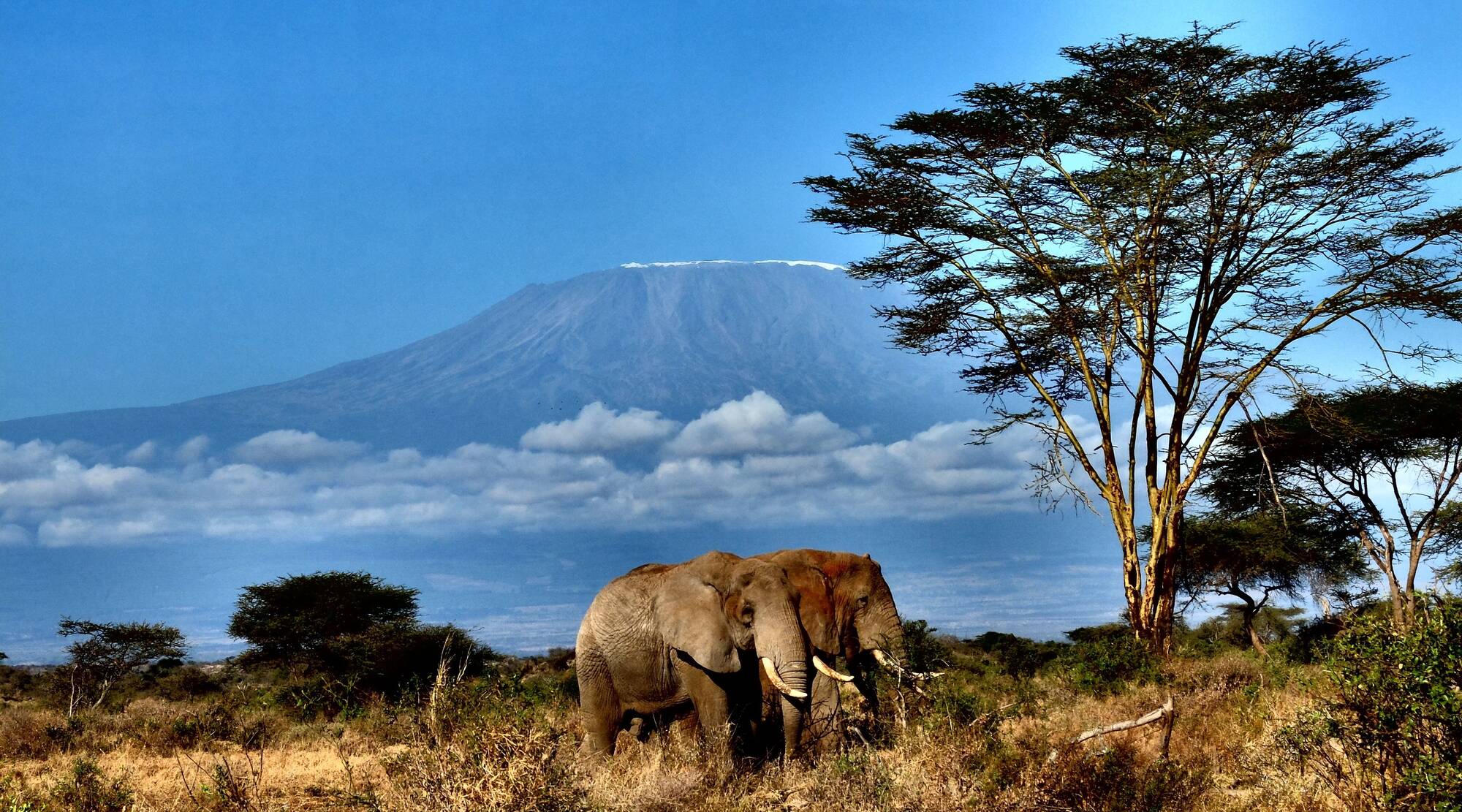
Humanity’s ancestors lived in Kenya, which is now home to people speaking 42 languages, and some of Africa’s rarest, most magnificent wildlife.
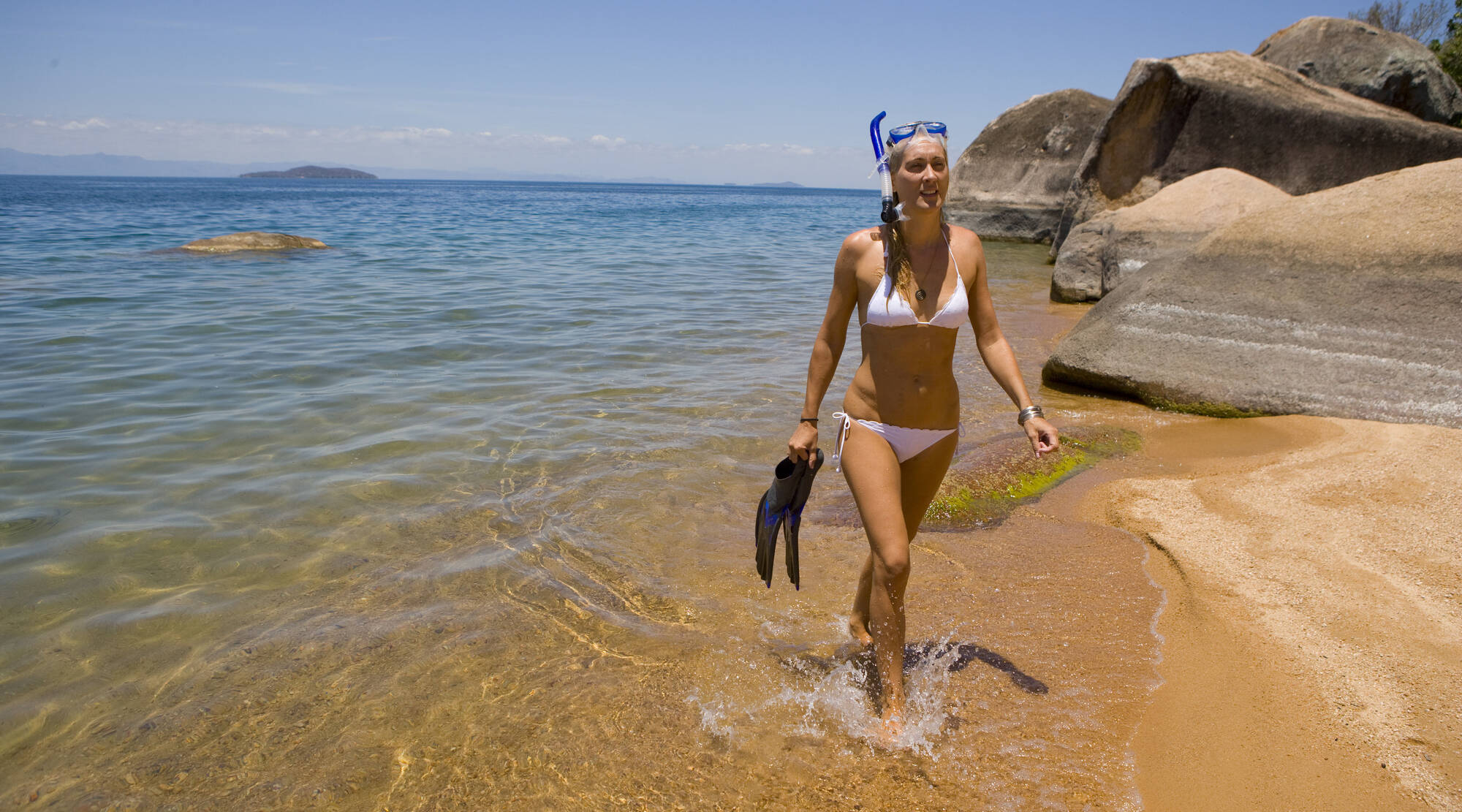
With tropical rivers, Rift Valley plateaux, the crystal-clear waters of Lake Malawi and a stunning lakeshore, Malawi invites relaxed exploration.
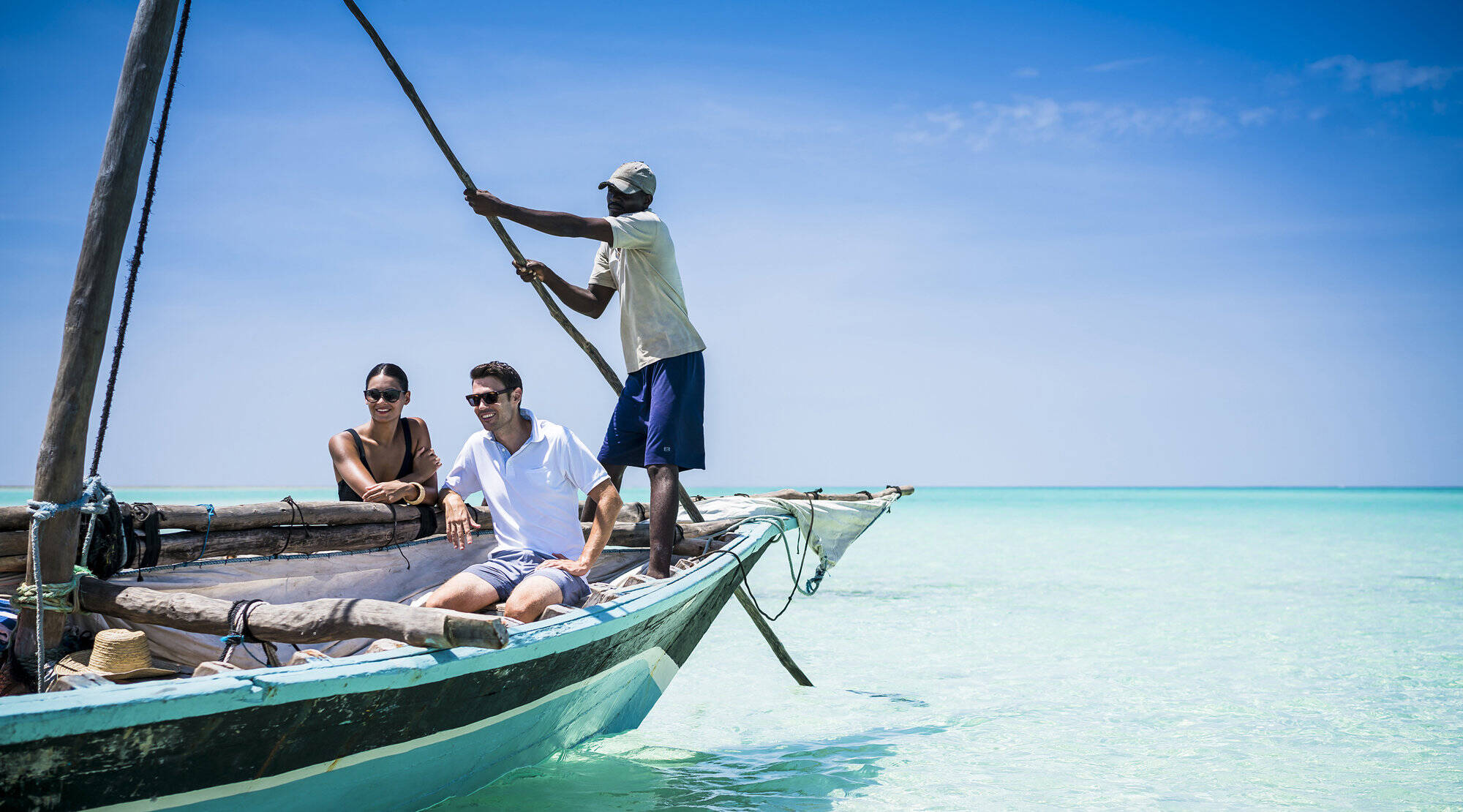
An ocean paradise protected by world-class marine parks, Mozambique’s idyllic archipelagos offer heavenly hideaways, outstanding diving and laid-back luxury.
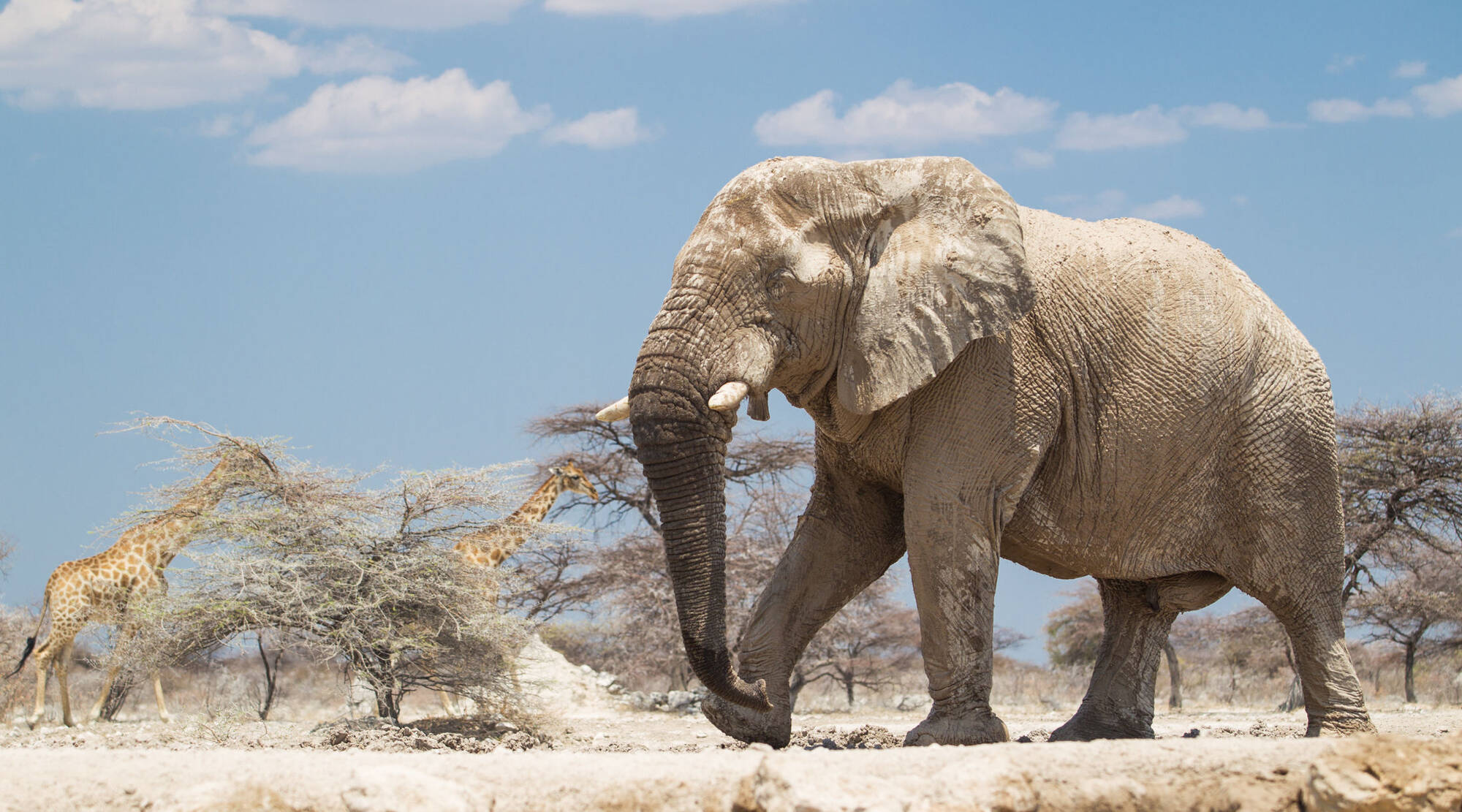
Spectacular scenery, diverse wildlife and a rich cultural heritage await discovery by air, with a guide or on a self-drive adventure.
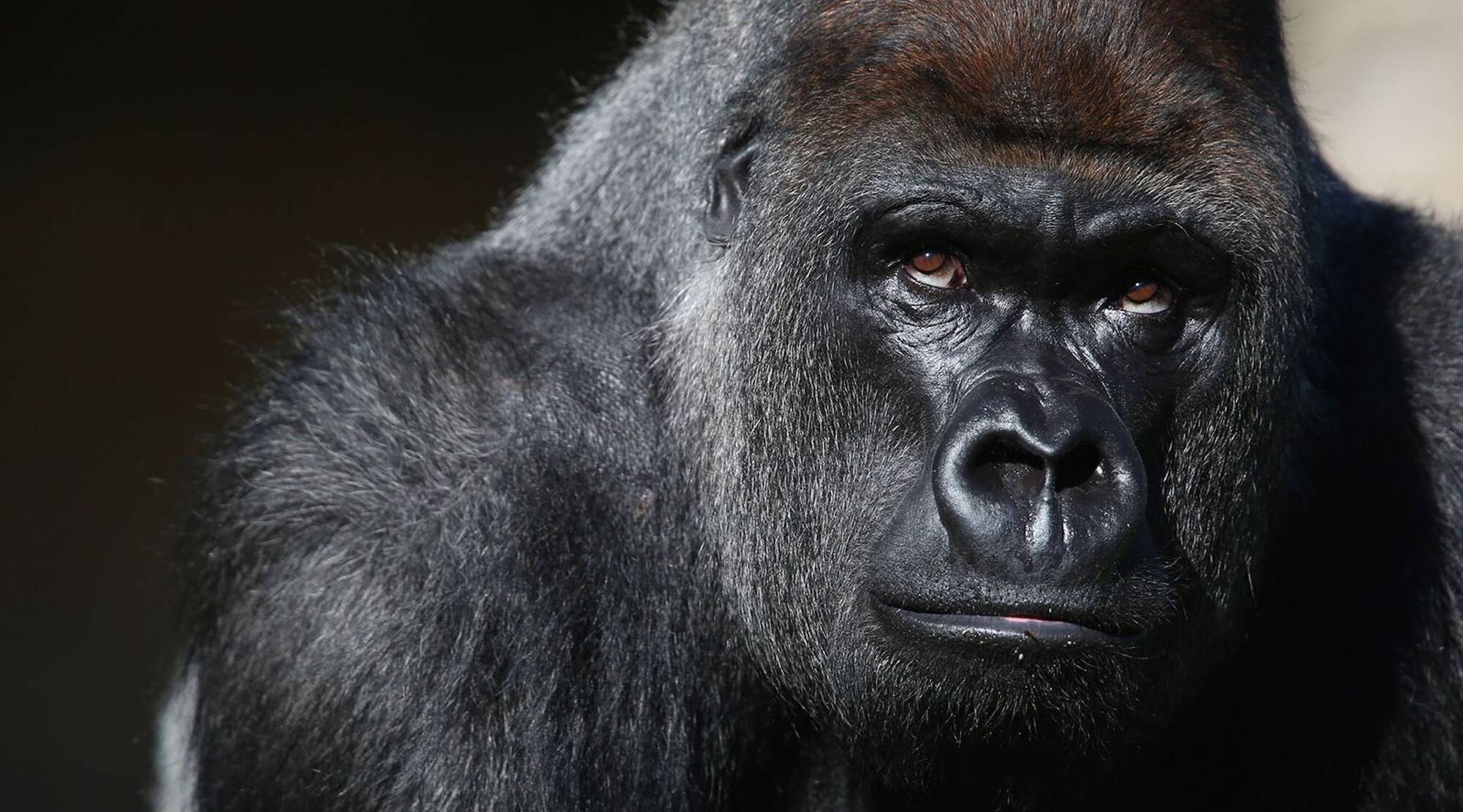
This small, mountainous country offers Africa’s best gorilla treks, other good safari options and a profound human element in every trip.
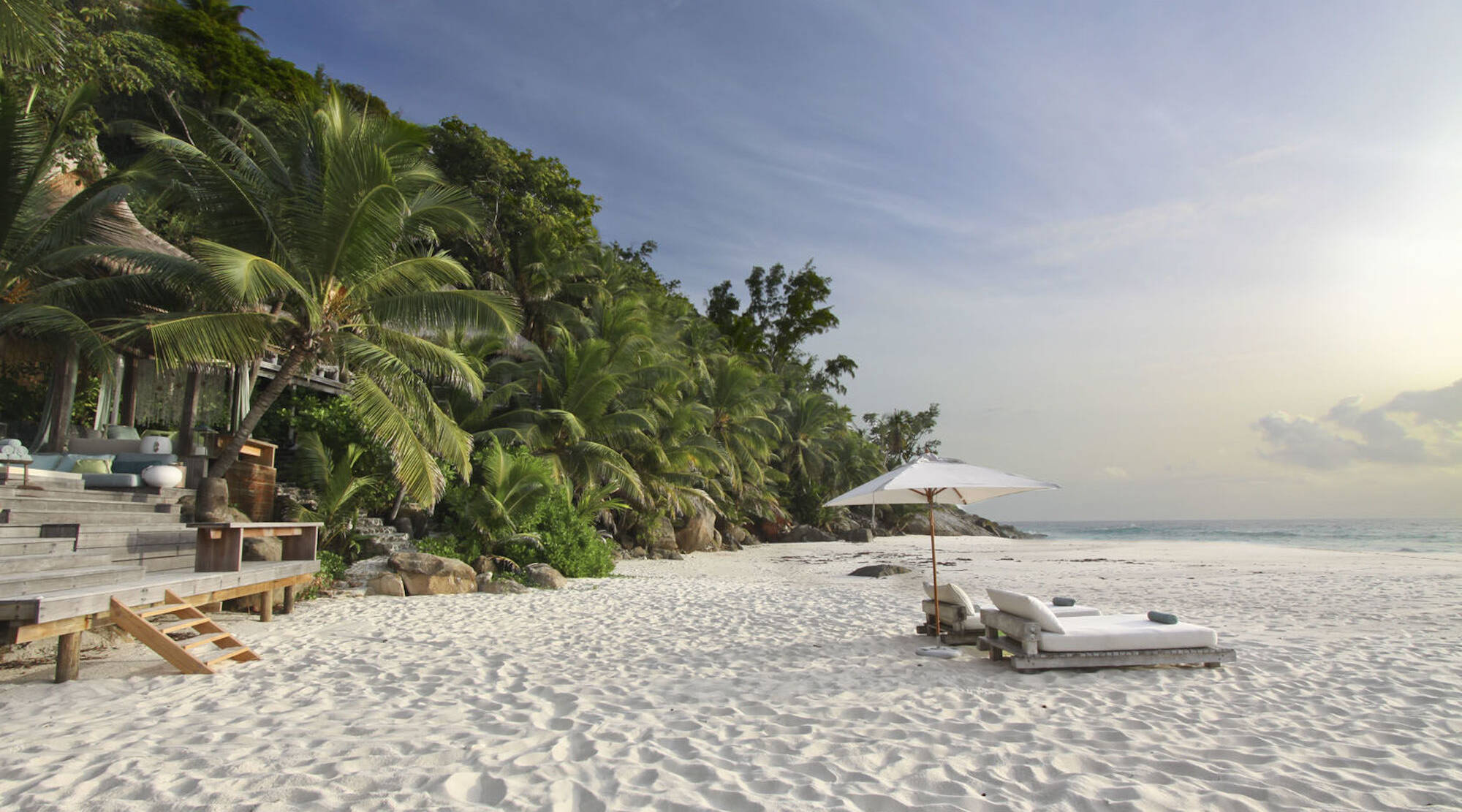
The ultimate glamorous getaway: the lush islands of Seychelles are enchantingly beautiful and stylish sanctuaries for both wildlife and ocean-lovers.
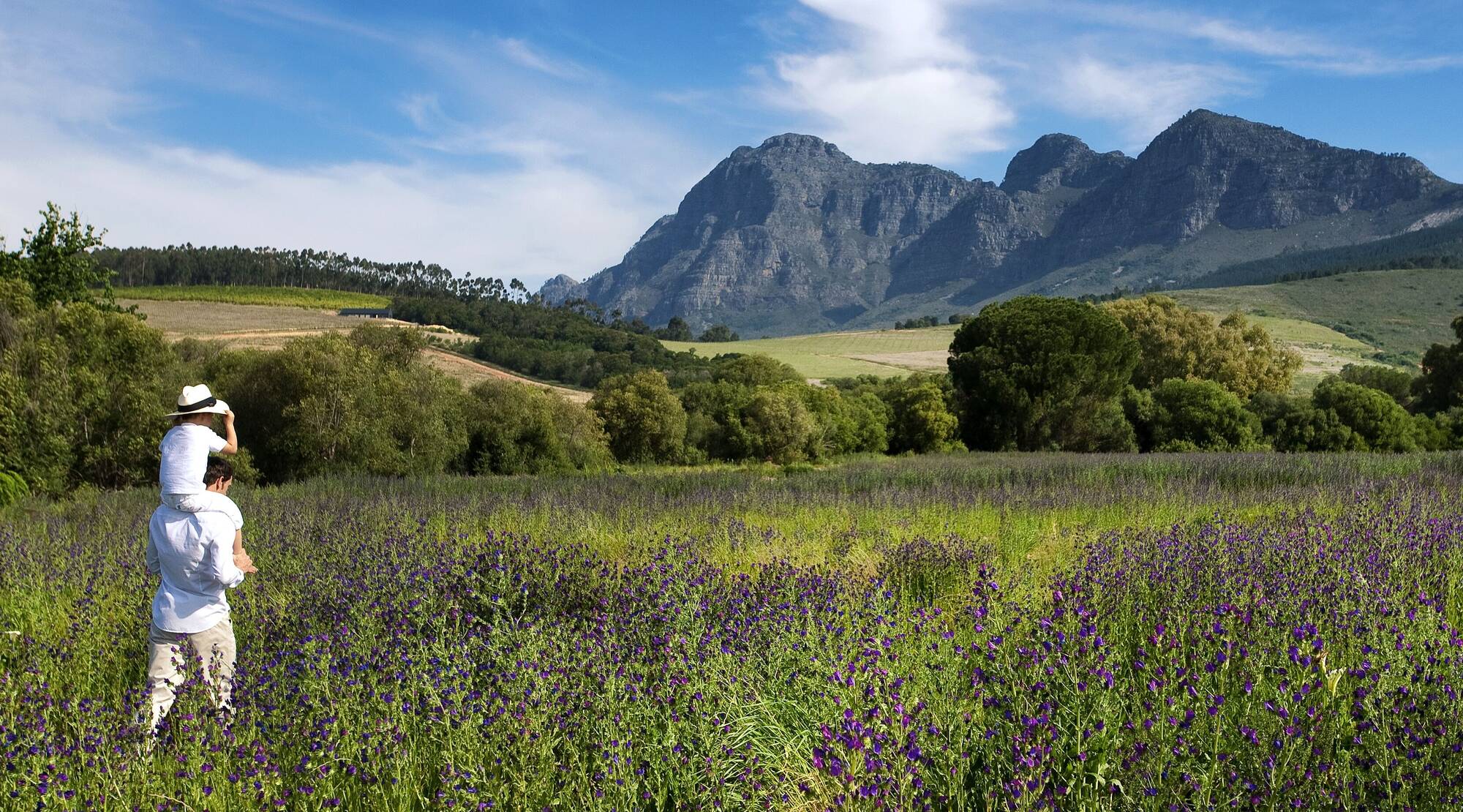
South Africa
Cosmopolitan Cape Town, world-class wineries, brilliant ‘Big Five’ safaris and spectacularly diverse scenery make South African holidays fabulously exciting and enjoyable.
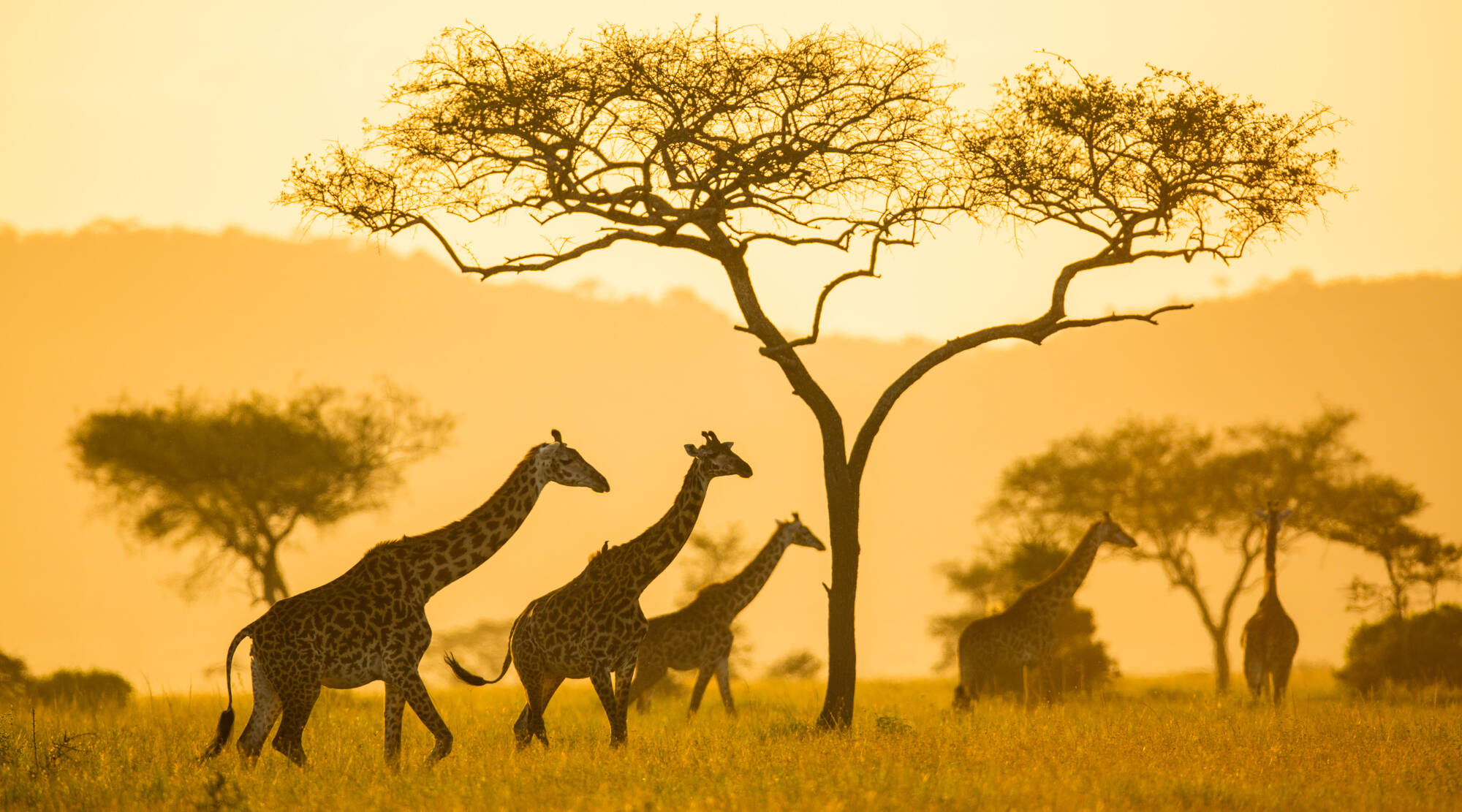
East Africa’s biggest country has a wide range of parks to explore and some of the Indian Ocean’s best island retreats.
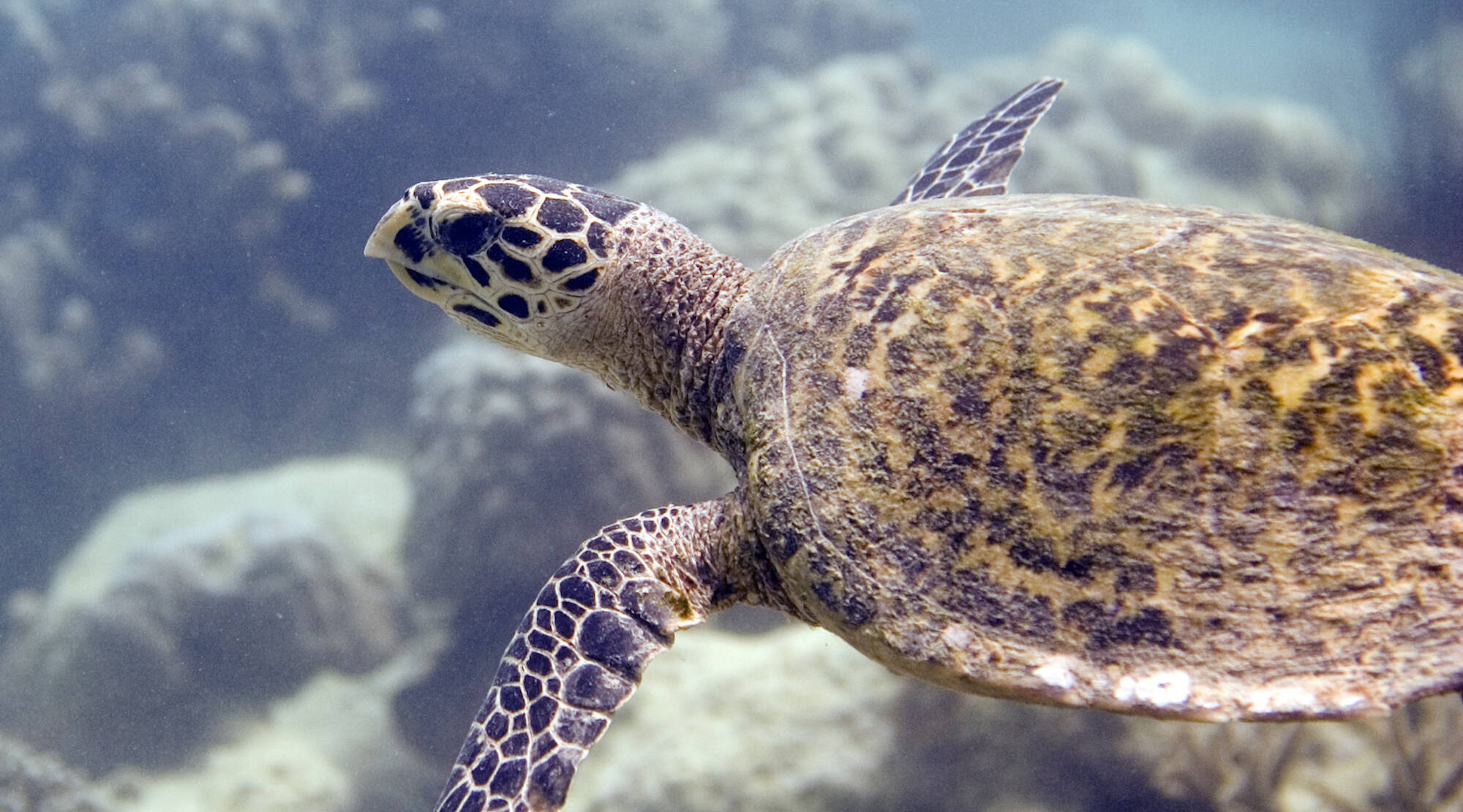
The ultimate Spice Island: Zanzibar’s mystique, marine life and chic beach retreats make it Africa’s most alluring archipelago.
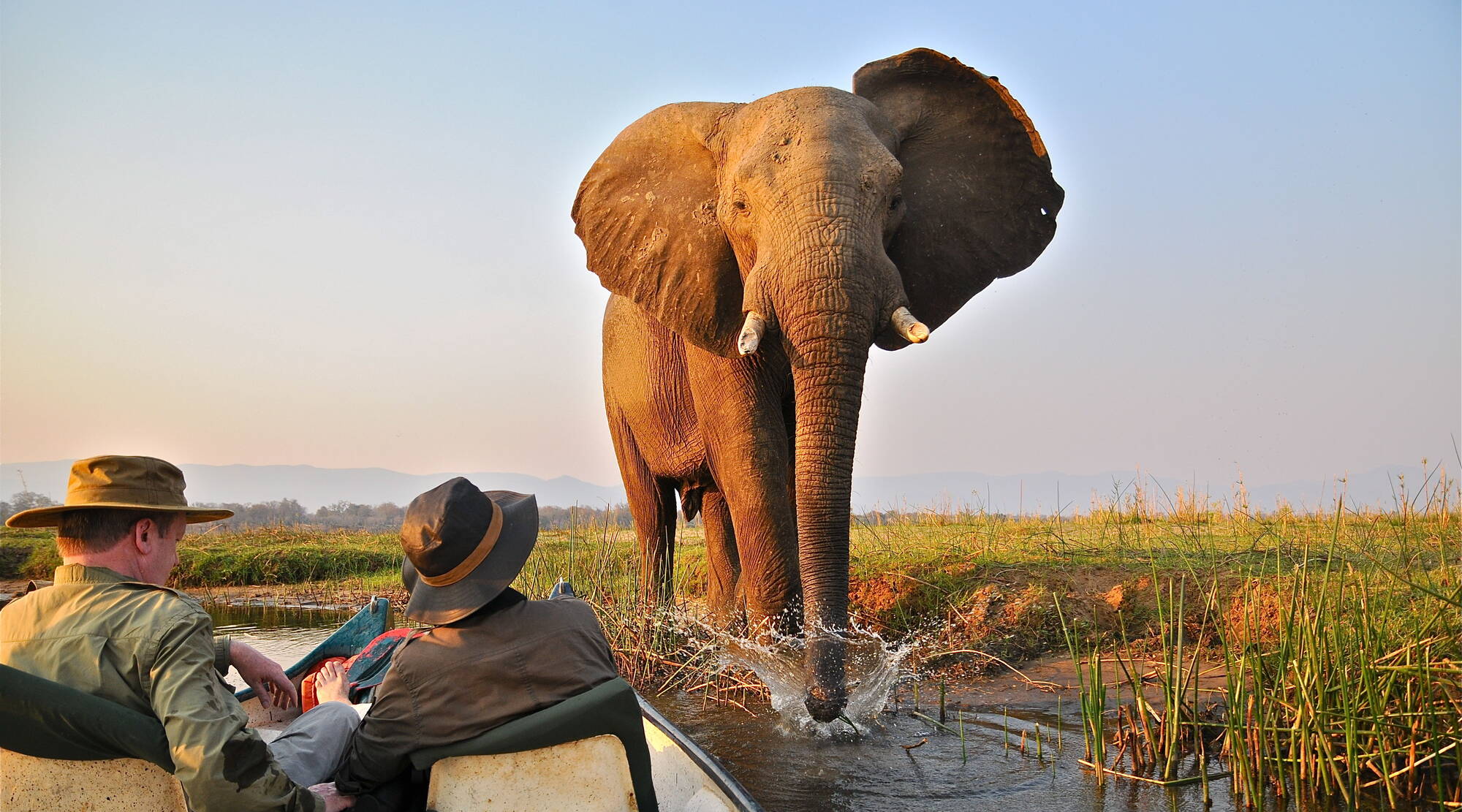
Stunning national parks teeming with game, plus Africa's finest professional guides and the spectacular Victoria Falls: Zimbabwe is enthralling.
Elephant safari in Linyanti
Login to Expert Africa
Sign in with password
Sign in with email link
New to Expert Africa? Create an account
Forgotten your details?
It's free & quick to set up
- Save your wish-list
- Send us an enquiry
- Pay online for your trip
- Subscribe to our newsletter
- Give us feedback on your trip
- Full site benefits of the site
Need some help? Talk to our team
- You are here:
- Zambia Tours
Your Safari
Tour length, rates in usd $ – change currency, starting from.
- Lusaka (92)
- Livingstone (44)
- Nairobi (0)
- Entebbe (0)
- Johannesburg (0)
- Zanzibar (0)
- Dar es Salaam (0)
- Victoria Falls Town (7)
- Kampala (0)
- Windhoek (1)
- Addis Ababa (0)
- Cape Town (2)
- Mombasa (0)
- Port Elizabeth (0)
- Hoedspruit (0)
- Antananarivo (0)
- Pretoria (0)
- Bujumbura (0)
- Hazyview (0)
- Blantyre (2)
- Upington (0)
- Nelspruit (0)
- Lilongwe (0)
- Diani Beach (0)
- Bulawayo (0)
Comfort Level
- Luxury+ (1)
- Luxury (60)
- Mid-range (67)
- Budget (35)
Private or Shared Tour
- Private tour (116)
- Shared tour (59)
Safari Type
- Lodge, tented camp or hotel (143)
- Camping (32)
Operator Rating
- & up (172)
Specialized Tours
- Fly-in safaris (19)
- Family (60)
- Beach time (3)
- Honeymoon (61)
- Gorilla trekking (1)
- Photographic safaris (1)
- Mountain climbing (0)
- Walking safaris (4)
- Self-drive (0)
- Guided self-drive (0)
- Chimp trekking (1)
- Overland tours (4)
- Cycling safaris (1)
- Canoe safaris (5)
- Horseback safaris (0)
- Birding tours (0)
- Accessible safaris (0)
- Golf & Wildlife (0)
Other Tour Features
- Airport transfer is included (175)
- Itinerary can be customized (134)
Filter by Operator
Filter by accommodation, operators from.
- South Africa (21)
- Tanzania (1)
- United Kingdom (11)
- United States (20)
- Australia (1)
- Belgium (0)
- Botswana (4)
- Comoros (0)
- Denmark (0)
- Ethiopia (11)
- Eswatini (0)
- Germany (0)
- Ireland (0)
- Lesotho (0)
- Madagascar (0)
- Mauritius (0)
- Mayotte (0)
- Mozambique (0)
- Namibia (0)
- Netherlands (0)
- New Zealand (0)
- Nigeria (0)
- Portugal (0)
- Reunion (0)
- Seychelles (0)
- Singapore (0)
- Switzerland (1)
- Uganda (11)
- United Arab Emirates (0)
- Zambia (108)
- Zimbabwe (18)
Zambia Safari Tours & Holidays
Although Zambia has a great safari industry with lots of tours and holidays on offer, it still manages to fly under the radar as a safari country. Unfathomable, given the staggeringly wonderful wildlife experiences it offers safari-goers. If there’s a word to sum up this large, land-locked, off-the-beaten-track place, it is ‘wild’. Nowhere else in southern Africa do you get such an entirely unaffected palette of wild Africa. There’s a sense of the bush that has been lost in more highly urbanized countries – here, the cyclical forces of nature still dominate the animal kingdom.

10-Day Romantic Zambia Honeymoon Safari
$7,279 to $7,906 pp (USD)
Zambia: Private tour Luxury Lodge & Tented Camp
You Visit: Lusaka (Start) , South Luangwa NP, Victoria Falls, Livingstone (End)

4.9 /5 – 149 Reviews
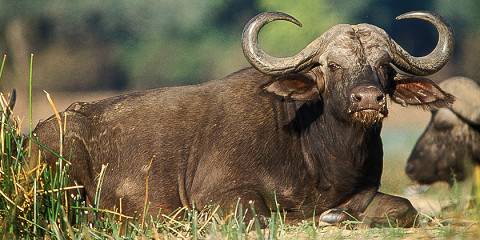
4-Day Outstanding Zambia Wildlife Mid-Range Tour
$2,860 to $3,080 pp (USD)
Zambia: Private tour Mid-range Lodge
You Visit: Livingstone (Start) , Victoria Falls, Mosi-oa-Tunya NP, South Luangwa NP, Lusaka Airport (Lusaka) , Mfuwe (End)
5.0 /5 – 122 Reviews
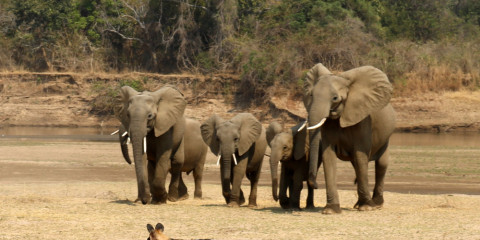
6-Day Wilderness Odyssey - South Luangwa
$1,430 to $1,727 pp (USD)
You Visit: Mfuwe (Start) , South Luangwa NP, Mfuwe (End)
Zamsato Tour operator has an office in Zambia
4.9 /5 – 28 Reviews

6-Day Victoria Falls and Lower Zambezi Camping Safari
$1,940 pp (USD)
Zambia: Private tour Budget Camping
You Visit: Lusaka (Start) , Lower Zambezi NP, Livingstone (City) , Lusaka (End)
Wilderness Horizon Safaris Tour operator has an office in Zambia
4.9 /5 – 16 Reviews

4-Day Last Minute Affordable Luxury - South Luangwa
$1,359 to $1,947 pp (USD)
Zambia: Private tour Luxury Lodge
Ntanda Ventures Tour operator has an office in Zambia
5.0 /5 – 22 Reviews

6-Day Kariba Houseboat and Lower Zambezi Safari
$1,782 pp (USD)
Zambia: Shared tour (max 10 people per vehicle) Mid-range Safari Houseboat & Self Catering Accommodation
You Visit: Lusaka (Start) , Lower Zambezi NP, Lake Kariba, Lusaka (End)
Adventure Purists Tour operator has an office in Zambia
4.8 /5 – 13 Reviews

7-Day South Luangwa and Lower Zambezi Safari
$6,090 to $7,990 pp (USD)
Zambia: Private tour Luxury Tented Camp & Tented Bush Camp
You Visit: Lusaka (Start) , South Luangwa NP, Lower Zambezi NP, Lusaka Airport (End)
Discover Africa Safaris
4.9 /5 – 420 Reviews

10-Day Nanzhila Best of Zambia Safari Tour
$2,684 to $3,608 pp (USD)
Zambia: Shared tour (max 6 people per vehicle) Budget Lodge & Guest House
You Visit: Livingstone (Start) , Choma (Town) , Monze (Town) , Mazabuka (Town) , Lusaka (City) , Lusaka Airport (End)
Lochinvar Safaris Tour operator has an office in Zambia
4.4 /5 – 5 Reviews

7-Day Kafue National Park and Victoria Falls
$4,015 to $4,334 pp (USD)
Zambia: Shared tour (max 10 people per vehicle) Luxury Lodge & Hotel
You Visit: Lusaka (Start) , Kafue NP, Victoria Falls, Livingstone Airport (End)
Vanaway Travel & Tours Tour operator has an office in Zambia
5.0 /5 – 1 Reviews

3-Day Lusaka Luxury Zambia
$825 pp (USD)
Zambia: Shared tour (max 10 people per vehicle) Luxury Lodge
You Visit: Lusaka (Start) , Lilayi GR, Lusaka Airport (End)
Escape to Adventure Safaris
5.0 /5 – 83 Reviews

7-Day Jewels of Botswana & Falls
$5,495 to $8,245 pp (USD)
Botswana & Zambia: Private tour Luxury+ Lodge & Tented Camp
You Visit: Maun (Start) , Okavango Delta, Chobe NP, Victoria Falls (End)
Safari Online
5.0 /5 – 115 Reviews

11-Day Best of Wildlife
$6,666 to $7,260 pp (USD)
Malawi & Zambia: Private tour Mid-range Lodge & Tented Camp
You Visit: Blantyre (Start) , Majete WR, Zomba Plateau, Liwonde NP, Dzalanyama Forest, South Luangwa NP, Mfuwe (End)
Land & Lake Safaris
4.6 /5 – 24 Reviews
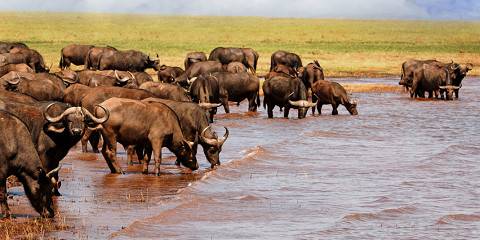
10-Day Two Rivers in Style
$6,776 pp (USD)
Zambia: Private tour Luxury Tented Camp
You Visit: Lusaka (Start) , Lower Zambezi NP, South Luangwa NP, Lusaka (End)
Crafted Africa
5.0 /5 – 68 Reviews
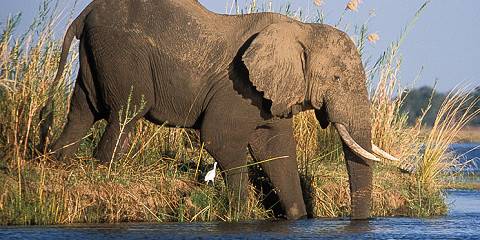
½-Day Privet Game Drive Safari/ White Rhino Walking
$94 pp (USD)
Zambia: ½ Day tour Private tour
You Visit: Livingstone
Boris Safaris and Tours Tour operator has an office in Zambia
Not yet rated
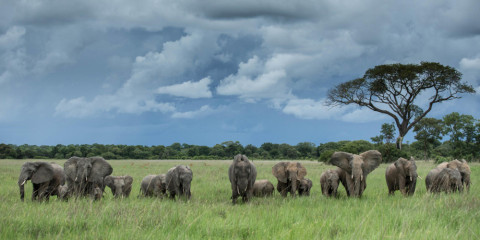
9-Day Ultimate Zambian Safari
$6,243 to $8,490 pp (USD)
You Visit: Livingstone (Start) , Kafue NP, Lower Zambezi NP, South Luangwa NP, Lusaka Airport (End)
Off2Africa Travel
5.0 /5 – 96 Reviews

8-Day Zambia Victoria Falls Exclusive Luxury Tour
$8,800 pp (USD)
Zambia: Private tour Luxury Tented Camp & Hotel
You Visit: Livingstone (Start) , Victoria Falls, Mosi-oa-Tunya NP, Livingstone Airport (End)
Zambezi Expedition Travel and Tours
5.0 /5 – 87 Reviews

4-Day Livingstone Zambia Safari Adventure
$2,407 pp (USD)
You Visit: Livingstone (Start) , Livingstone Airport (End)
Cultural Vibes Travel & Tours
4.9 /5 – 116 Reviews
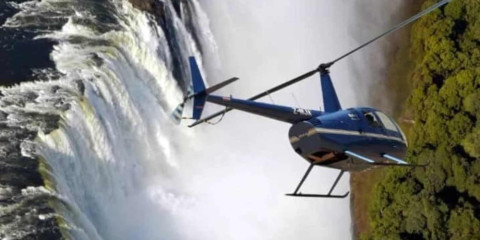
½-Day 12-15 Min Helicopter Flight over Victoria Falls
$203 pp (USD)
Zambia & Zimbabwe: ½ Day tour Shared tour (max 6 people per vehicle)
You Visit: Victoria Falls Town
Savannah Adventures
5.0 /5 – 21 Reviews

5-Day Livingstone and Chobe National Park Package
$1,480 pp (USD)
Botswana & Zambia: Shared tour (max 20 people per vehicle) Mid-range Lodge
You Visit: Livingstone (Start) , Victoria Falls, Livingstone (City) , Chobe NP, Kasane (End)
Africa Zim Travel & Tours
5.0 /5 – 118 Reviews

7-Day Victoria Falls ~ Luxury Safari
$2,948 pp (USD)
Zambia & Zimbabwe: Private tour Luxury Lodge & Hotel
You Visit: Victoria Falls town (Start) , Zambezi River, Zambezi NP, Livingstone (City) , Victoria Falls, Lower Zambezi NP, Harry Mwanga Nkumbula Airport (End)
Seven Wonders Safaris
4.5 /5 – 156 Reviews
Related Searches
- Zambia Safari Companies
- Cheap Zambia Safari Tours
- Zambia Luxury Safari Holidays
- Zambia Honeymoon Packages
- Best Zambia Safaris
- South Luangwa Safari Tours
- Kafue Safari Holidays
- Lower Zambezi Safari Tours
- Victoria Falls Tours
- 10 Best Safari Companies in Zambia
- Liuwa Plain Safari Tours
- Mosi-oa-Tunya Safaris
7 Questions About Zambia Safaris

Answered by
Alan murphy.

When is the best time to visit Zambia?
“Zambia trips are best scheduled when it’s easiest to see the wildlife because apart from Victoria Falls, that’s the major attraction. And the best time for wildlife is the Dry season (May to October). At this time of the year, animals tend to hang out near water sources, which makes capturing them on camera easier. In Zambia, the Wet season (November to April) is known as the ‘Emerald season’, named after the infinite shades of green in the luscious bush at this time of year. South Luangwa in particular is mesmerizing during the Emerald season. However, be aware that many accommodations close at this time of the year, and roads can be in very bad shape. June through to August is the best time to see Victoria Falls as they are at their most spectacular in these months.”
Why visit Zambia, what are the major attractions?
“Zambia doesn’t have much diversity when it comes to its attractions. But what it does have is world-class! The country’s premier attraction – which it shares with Zimbabwe – is Mosi-oa-Tunya (the Smoke That Thunders). Victoria Falls is one of the seven natural wonders of the world. No Zambian vacation should miss this incredible natural sight. The second major attraction which makes a Zambia tour worthwhile is its wildlife and the setting in which you can see it. Although the animal kingdom is much the same as in other nearby countries, the parks are that much wilder in Zambia. Not only is South Luangwa National Park packed full of wildlife, but it’s also one of the most beautiful parks in Africa. North Luangwa National Park is less developed, but no less well endowed with wildlife and specializes in walking safaris. Lower Zambezi National Park has a dreamy location on the Zambezi River, opposite Mana Pools in Zimbabwe. Canoeing this mighty river is the pastime of choice here; wildlife spotting is particularly productive from a canoe. And no Zambia safari would be complete without a visit to Kafue National Park, one of Africa’s largest parks and especially good for spotting leopard. There are plenty of other wilderness areas to explore too, such as Liuwa Plain National Park, where you can see nature at its finest via a wildlife migration that includes many thousands of grazers, such as wildebeest and zebra.”
What does a Zambia safari cost?
“The sky is the limit for Zambia tours. Although not exclusively top end, most Zambia safaris are pitched towards that end of the market. Generally speaking, the more accessible a park is, the cheaper a Zambia safari will be – the most accessible park in the country is Kafue, which has a major highway running through it with affordable lodges just off the highway. Zambia camping safaris have prices that are competitive with most countries in the region (except perhaps South Africa), and start at around US$150 per day – although you’re more likely to pay upward of US$200 a day. The price of a mid-range tour will be upward of US$300 a day (and can easily climb towards US$1,000 a day, giving you an idea of the price bracket that luxury safaris occupy!), and will see you lounging around in comfy lodges and tented camps. There are some well-established tour operators in Zambia with fine reputations for delivering high-quality, luxury safaris. If you are looking to spoil yourself then a Zambia safari package with one of the many outstanding operators on SafariBookings.com will not disappoint.”
How is the wildlife viewing in Zambia?
“The wildlife viewing in Zambia is spectacular and unique. The parks are in many ways very wild and (apart from areas of South Luangwa) very undeveloped. In some there are no facilities at all. The wildlife you will see on Zambia tours of the country’s parks tends to be equally as spectacular and untamed. Lodges are in the habit of building their accommodation on traditional wildlife tracks, which encourages animals to spend time in and around the camps. Zambia safari holidays in the country’s network of protected areas are really all about wildlife encounters in pristine African bush. Kafue National Park is famed for its leopard sightings, tree-climbing lions, enormous herds of red lechwes, plenty of other antelopes and even wild dogs. What may stick in your mind from a visit to Lower Zambezi National Park are the big-tusked elephants, large buffalo herds, giant crocs lying nonchalantly on the riverbank and the pods of grunting hippos. All are best seen by paddling down the Zambezi in a canoe. South Luangwa is great for most species, including most of the Big Five (lion, leopard, elephant and buffalo but not rhino). And Zambia tours of Liuwa Plain National Park reveal a little-known wildlife migration in the Wet season that includes tens of thousands of blue wildebeests, Burchell’s zebras and tsessebes.”
How safe is Zambia for tourists?
“Zambia is very safe for visitors. In particular, the parks and other wildlife areas rarely see any crime. Zambian people are friendly, courteous and full of curiosity, and most would be devastated to think you felt unsafe or unwelcome in their country. The only exception to this is the larger urban areas, such as the capital Lusaka – here the same rules apply as they would in any city. That is, don’t wear or carry flashy expensive items, leave valuables in a hotel safe, don’t walk around at night (catch a taxi instead), and be on a higher level of alert with regard to what is going on around you on the streets. In the parks and reserves, wildlife viewing always entails some risk – after all wild animals are unpredictable. However, if you use a bit of common sense and listen to your guide’s instructions, then you will be fine.”
What type of accommodation can I expect on a Zambia safari?
“In Zambia, the type of accommodation is very dependent on the park you are visiting. In South Luangwa National Park, the country’s best-known park, you can expect all different types of lodging, from campsites and rustic bungalows, through to tented rooms on raised platforms and luxury lodges. In Kafue National Park you can expect a decent smattering of mid-range accommodation just off the highway that splits the park, with more luxurious options buried deeper into the bush. Lower Zambezi is more off-the-beaten track with most visitors flying into bush airstrips. The accommodation reflects the price of the transport required to get here, and is pitched mainly at the top-end or luxury sector of the market. Parks such as Blue Lagoon are restricted in the accommodation they offer with limited, self-catering chalets, while others, such as Lukusuzi, require you to be totally self-sufficient as they are devoid of any facilities at all. So, when planning your Zambia safari holiday, keep in mind the type of accommodation you would prefer, including the level of luxury, and for the most choice and best value, South Luangwa is a good bet.”
What can I expect from a trip to Zambia?
“Zambia safari vacations are all about the wildlife and that – apart from the jaw-dropping Victoria Falls – is the highlight of any visit to the country. Apart from rhino, the rest of the Big Five are plentiful and the three major parks – South Luangwa, Lower Zambezi and Kafue – all have excellent wildlife densities. For most people, a Zambia tour will usually involve, at least in part, some luxury accommodation in the bush, and there’s no better place to spend up big if you want to spoil yourself. A highlight for many people on a Zambia holiday is doing a walking safari. The guides in Zambia are some of the best in Africa, and a walking safari is a special experience. Lastly, the people of Zambia are well renowned for their warmth and hospitality – interacting with the local people is an integral part of any trip to the country.”
Zambia Safari Reviews

Emma is an award-winning travel writer for Rough Guides, National Geographic Traveller, Travel Africa magazine and The Independent.
Home of the walking safari
I think it’s fair to say that most true safari aficionadoes love the idea of spending a few days in an untamed wilderness, and are irritated by facilities which are simply too big, too grand, too slick or too popular. While Zambia can’t...
Full Review

Stephen is a travel writer and avid conservationist whose work appears in prestigious magazines such as Africa Geographic and Travel Africa.
Africa’s Hottest Safari Option
It is only in the last decade that Zambia burst back onto the African safari scene, re-building its safari reputation on the back of some epic national parks and outstanding wildlife. Anyone even vaguely familiar with Zambia and its...

Relaxing destination providing the opportunity to be thrilled by wildlife
Zambian people are very friendly and polite with general living standards above the African average, helping the tourist feel relaxed and safe. Victoria waterfalls are truly a great wonder of nature and the various natural parks offer...

Under rated.
We booked to a part of Zambia that we were not familiar with. South Lawanga, not hard to get to but not all that easy, which made it perfect for us. We did not want the over touristing that can occur in some parks. The Thornicroft Lodge...
Wild and natural- an untamed destination
Enjoyed my safari to south luangwe national park and the booking went really smoothly. Your company, Ntanda tours, who offered the itinerary and safari bookings were really communicative and I got fast and helpful responses. Would use...

Fortunately not too popular yet. We were two of very few tourists in amazing and beautiful places.
We went during the green season, at the end of the rainy season. Lovely weather, very few tourists, a lot of wildlife easy to spot if you are with an experienced guide. Unfortunately some roads were still flooded and closed, but it didnt...
TOP DESTINATIONS
- Kruger Park
- Okavango Delta
- Serengeti National Park
- Victoria Falls
TOP COUNTRIES
- South Africa
TRAVEL DEALS
View All Travel Deals
SOUTHERN AFRICA
East africa, indian ocean islands, top experiences.
- Beach Holidays
- Family Safaris
- Honeymoon Safaris
- Desert Safaris
- Luxury Rail Safaris
- Multi-Generational Safaris
- Positive Impact Safaris
- Photographic Safaris
- Walking Safaris
WILDLIFE SAFARI
- Big Five Safaris
- Birding Safaris
- Gorilla Trekking Safaris
- Migration Safaris
- Mobile Camping Safaris
- Horseback Safaris
FEATURED EXPERIENCES
Comfort levels, property types.
- Tented Camps
- Boutique Hotels
Featured Safari Collections
- Red Carnation
- Time & Tide
- Saruni Basecamp
- Ker & Downey Botswana
GET TO KNOW US
- Meet The Team
- Pricing Explained
- Traveller Reviews
- Traveller Stories
- Why Book With Us?
- HerdTracker
- Safari Cost Calculator
- South Africa In 360
- Trusted Safari Partners
What are you looking for?
- Safaris & Tours
- Destinations
- Experiences
- Accommodations
- Why book with us?
Hello traveller!
It's in Cape Town now.
We're sorry. Our safari planners aren't available now. Our office hours are 08:00 - 19:00 (GMT+2).
Call us to speak to an experienced safari planner.
Alternatively, we recommend...
Schedule a phone or Zoom call with one of our safari planners
Complete our travel enquiry form to connect with a safari planner
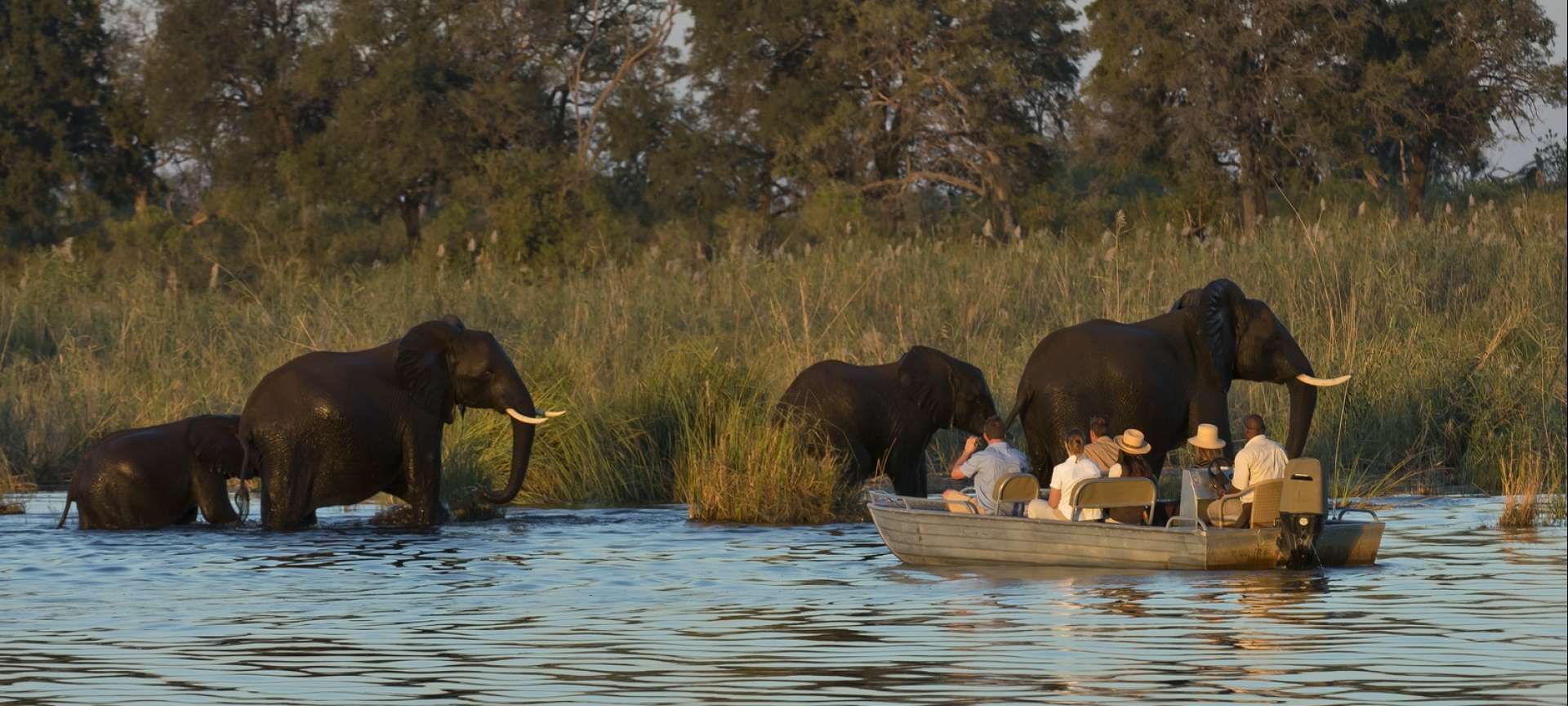
- Zambia Safari
The ultimate guide to your next Zambia Safari
Get to know zambia.

By Diane Du Plessis
Safari Travel Planner
This landlocked country is a truly extraordinary safari destination, boasting some of the continent’s most remote and rugged wildlife areas, topped off with the magnificent Victoria Falls .
Zambia safaris are known for their natural beauty in one of the most pristine and unspoiled wildlife havens on the entire African continent, owing to the country’s incredibly low population.
Zambia has a generally pleasant climate, but the river valleys are typically hotter and more humid.
Zambia Video
How it Works
View our recommended safaris for inspiration and get ready to plan your dream safari
Contact us or fill out an enquiry form and one of our travel experts will help you tailor make your perfect safari
Enjoy an authentic African experience, with peace of mind
Why Zambia?
- Visit the picturesque Victoria Falls during your safari in Zambia
- Try out the adrenaline-pumping canoe safaris in Lower Zambezi National Park
- Partake in walking safaris in the Luangwa Valley of Zambia
- Go leopard-spotting on night drives in South Luangwa or Lower Zambezi
- Enjoy white-water rafting on Grade Five rapids below Victoria Falls
- See the spectacular birdlife on safari along the Zambezi and around Lake Bengweulu
Where to go in Zambia
- Kafue National Park
- Kasanka National Park
- Lake Kariba
- Liuwa Plain National Park
- Lower Zambezi National Park
- North and South Luangwa National Park
- North-Eastern Zambia
- Sioma Ngwezi and Ngonye Falls National Park
- Southern Zambia
- Victoria Falls in Zambia
- Western Zambia
Kafue National Park is Zambia’s largest wildlife reserve and one of the biggest in Africa. It covers more than 22000km² (8494 square miles), and the terrain varies significantly from north to south.
The park’s top third is separated by the M9 highway, and rivers, large and small, define this northern section. Seasonal floodplains and far-reaching, wildlife-rich wetlands dominate northern Kafue, and as the Kafue River flows south, the surrounding area becomes increasingly drier.
Large sections of Kalahari wood and grassland make southern Kafue a perfect home to ever-growing populations of plains game and the park’s largest concentrations of elephants.
Highlights of Kafue National Park In Zambia
Birders will delight in the extreme northwest of the park, where the Busanga Swamps, an official Ramsar site, attract close to 500 species, including large flocks of herons, egrets, and endangered Wattle cranes. This area is perfect for anyone interested in bird-watching safaris .
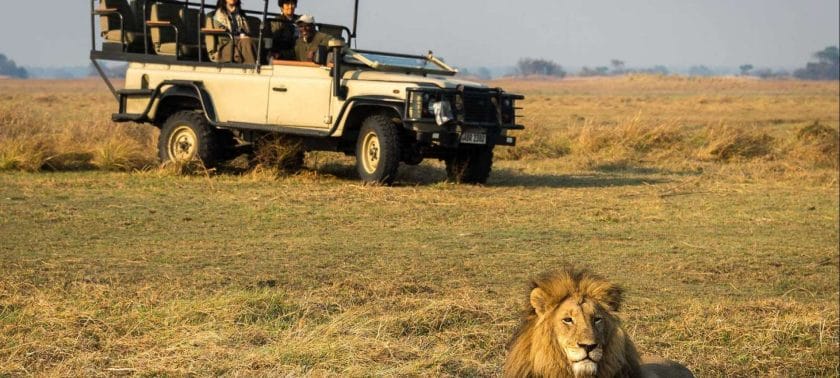
Numerous antelope species are also common in the north, especially kudu, bush buck, eland, reedbuck, duiker, grysbok, lechwe, and waterbuck. Buffalo and elephants can be found in large herds further south.
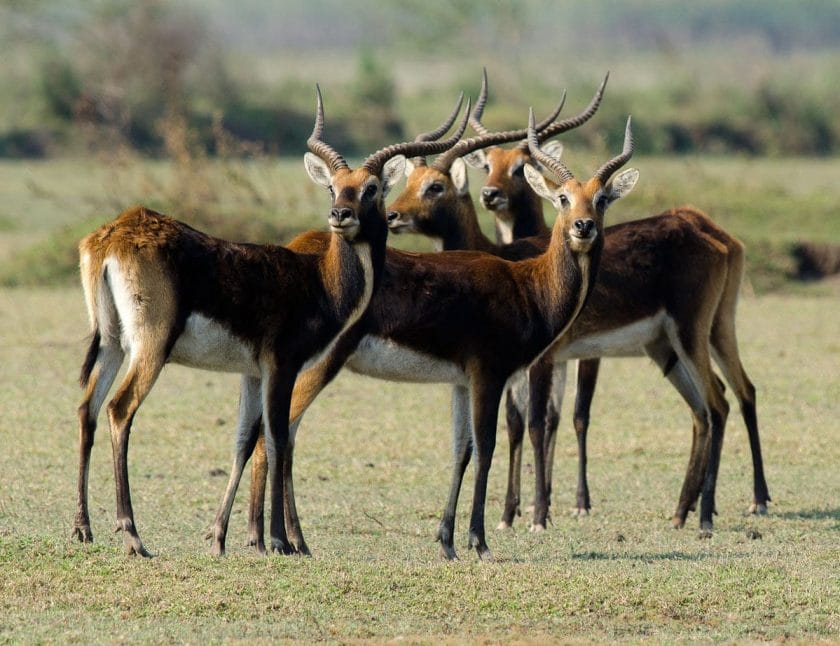
Lions are widespread, and there’s a particular lion pride in Busanga, which is known for climbing trees. Leopards are frequently spotted in forested areas, especially during night drives, though these are only permitted with certified guides booked through a camp or lodge.
Walking safaris are best during winter, while boat safaris are available along the Kafue River during the wet summer.
Travel Tips for a Kafue Safari in Zambia
- The tarred M9 (also known as the Mongu Road) provides year-round access to the north, and Kafue’s main gate, Hook Bridge, can be reached in a four-hour drive from Lusaka.
- The park’s extensive internal road network is 4×4 only, however, and much of it is totally inaccessible from late November through April when heavy rains turn the dirt tracks to mud.
- Wildlife is generally more prolific in the north of the park and is also where many luxury lodges in Zambia provide all-inclusive safari packages. Many stay open all year, offering fly-in safaris to avoid the bad roads.
- Camps in the central and southern sections tend to be more affordable, but without access by air, they usually close during the worst of the rains.
Kasanka National Park is Zambia’s only privately managed park, run by the Kasanka Trust charity in partnership with the local community. At slightly less than 400km2 (154 square miles), it’s also one of Zambia’s smallest, lying just south of the Bangweulu Wetlands near the border with the Democratic Republic of the Congo.
With its wonderful papyrus marshes, swamp forests, and miombo woodland, it’s one of Zambia’s most beautiful reserves. The many crisscrossing rivers and seasonal swampy pools support an incredible number and variety of birds. Kasanka is best known for its annual bat migration, which takes place in late November and early December each year.
Highlights of a Kasanka Safari in Zambia
Kasanka has limited big game but supports several interesting antelope species, including the rare sitatunga, which is relatively common here. Crocodiles and hippos are also plentiful, while buffalo, elephants, and leopards are present but rarely seen.
The major wildlife attraction is the annual bat migration, which begins in November. Up to 10 million bats, with wingspans of over half a meter in diameter, cloud the skies in an incredible swarm – small predators and scavengers pouncing on any that fall.
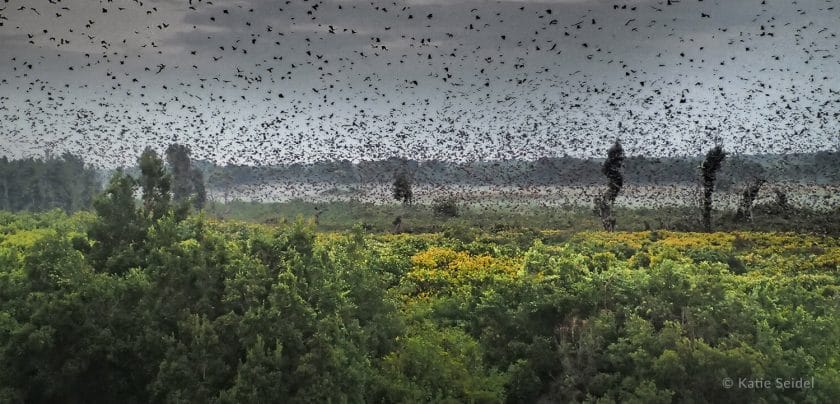
The park is also home to almost 500 species of birds, an astonishing number considering its small size. Which makes it the perfect location for photographic safaris in Zambia .
Fishing and canoe trips are available on the Luwombwa River, although river fishing is banned across Zambia from December to March. Many visitors combine Kasanka with a trip to the nearby Bangweulu Wetlands to see the shoebills and endemic Black lechwe.
Practical Advice on a Kasanka Safari
- A holiday in Kasanka is excellent for experienced self-drivers with fully-equipped 4x4s. Access is relatively straightforward along the tarred T2 from Lusaka, which is in good condition for most of the way.
- Within Kasanka park, there are well-managed campsites with toilets and shade, and the roads are easily manageable during the dry season (although not at all in the wet). Fly-in Kasanka safaris are also available – there’s an airstrip near Wasa Lodge. Wasa Lodge is the park’s main camp, and all visitors must report here on arrival.
- Guided, multi-day bat safaris can be booked through various operators, and self-drivers can arrange local bird and fishing guides at Wasa Lodge. It’s best to book these in advance to ensure availability, especially during the bat migration season.
Lake Kariba is the world’s largest man-made dam by volume, extending over 5000km2 (1930 square miles) along Zambia’s southern border. Completed in 1959, the dam provides hydroelectric power to Zambia and Zimbabwe, and fish stocks – mainly tilapia, kapenta, and the prized tigerfish – are also shared.
Access to the Zambian side of the lake is relatively limited, with Sinazongwe and Siavonga the only two towns of any significance. Siavonga is the larger, a sleepy lakeside holiday village popular with locals and only a few hours’ drive from Lusaka. Sinazongwe is much smaller and less developed, and most head to Siavonga as their base for exploring the lake.
Highlights of Lake Kariba
The Zambian side of the lake is far less wild than Zimbabwe, and there are no game reserves along the northern shore.
For wildlife safaris , you’ll have to visit one of two large islands, Chete or Chikanka, both in the southwest and accessible from Sinazongwe. Chete is the larger of the two, and guided game walks are possible.

There’s a small population of elephants, some leopards, and plenty of crocodiles, hippos, and birds. Chikanka is privately owned, with a single, dedicated fishing lodge. It’s one of many fishing options on a Lake Kariba holiday, with tigerfish as the most sought-after catch.
Various expeditions can be arranged from Siavonga – from live-aboard houseboats to private motorboat trips and canoes. Siavonga is also right next to the dam wall, and by flashing your passport, you can walk out onto it, or catch a boat from Siavonga for a dam-wall cruise.
Practical Advice for a Lake Kariba Holiday
- It’s not safe to swim along Lake Kariba’s shallow shoreline due to the waterborne parasite bilharzia, and the high numbers of crocodiles and hippos. It’s generally okay to swim further out in deeper water, so a quick dip from your houseboat is usually fine.
- There are good roads to both Siavonga and Sinazongwe, but Siavonga is easier to reach as it’s closer to Lusaka. Any holiday visit to Lake Kariba is primarily about houseboats and/or fishing, so if you’re not into either, you might want to look elsewhere. If you’re after boating and fishing, you can’t go wrong.
- There are hotels, lodges, and campsites in Siavonga to suit a range of budgets, and whereas fishing is banned on Zambia’s rivers from December to March, Lake Kariba is exempt, with fishing year-round.
One of Zambia’s most remote national parks, Liuwa Plain, lies west of the upper Zambezi River, close to the border with Angola. It’s made up of vast grasslands with a smattering of pans, dotted here and there with palms and clumps of Kalahari woodland.
As with much of northern Zambia, large areas of the park are flooded during the rainy season (December to April), and even in the drier winter months, it’s difficult to reach and explore.
Those who can find a way there often feel like they have the entire park to themselves. With its abundant wildlife, panoramic views, and genuinely low visitor numbers, Liuwa Plain exudes tranquility and a sense of total, magical isolation.
Highlights of Liuwa Plains National Park in Zambia
Liuwa Plains most prominent single attraction is its annual Blue wildebeest migration . Comprising an estimated 40,000 animals or more, it’s the second-largest of its kind in the world.
The migration takes place around November each year as rising water levels force the herds southeast in search of fresh grazing. Liuwa Plains birdlife is another major draw, with some of its pans holding water year-round.
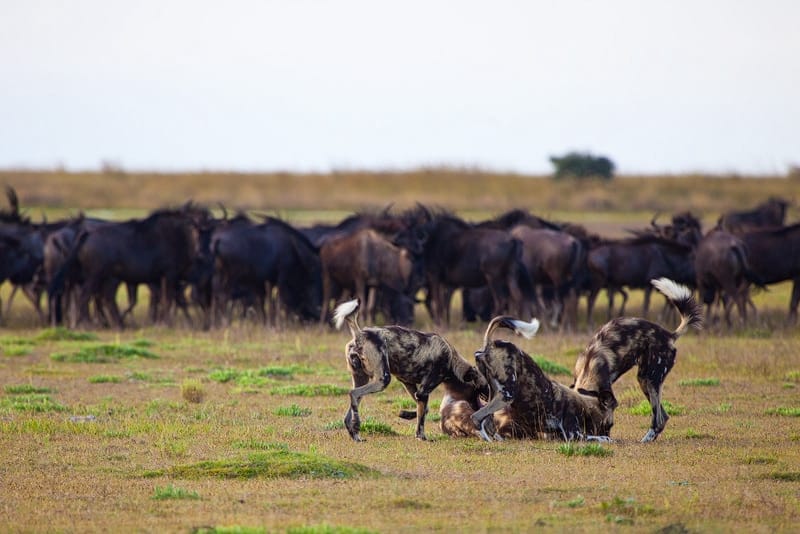
These pans attract a surprisingly large variety of species, including marabou and saddle-billed storks, spoonbills, and herons, plus a noteworthy bird rarely found in groups elsewhere – the Slaty egret. Another notable highlight is the hyena population. Estimated at around 600, they take the top spot as Liuwa’s apex predator.
Practical Advice for a Liuwa Plain Safari
- The best time to visit Liuwa Plain National Park for holiday is in November, when the wildebeest migration starts to gather steam. It’s also the last chance to catch the best game viewing before the ensuing rains render the network of dirt tracks impassable.
- The park is closed to self-drive travellers between December and May, with wet-season access by fly-in Zambia safaris only. Accommodation is limited to one very luxurious lodge, which operates most of the year, and a handful of basic seasonal campsites dotted along the wildebeest migration route. Permits (and a map of the park’s 4×4 network) are available from the town of Kalabo, south of the park.
Lower Zambezi National Park is one of Zambia’s premier wildlife destinations, certainly in the top three with South Luangwa and Kafue. Wildlife viewing is best along the rivers, which border the park on three sides.
The Zambezi River is the region’s main water source and the major attraction, both for visitors and game. There are no campsites inside the park, and all the lodges and tented camps are mid-range to luxury.
Highlights of Lower Zambezi National Park
The Lower Zambezi is known for its large populations of buffalo and elephants, which congregate along the Zambezi River during the dry winter months. Lions, leopards, and hyenas are also common, as well as large numbers of hippos and crocodiles.
If you’re feeling adventurous, you can take to the river itself – most lodges offer short canoe and/or boat excursions. Multi-day canoe safaris are also available, ranking among Africa’s most extraordinary experiences.
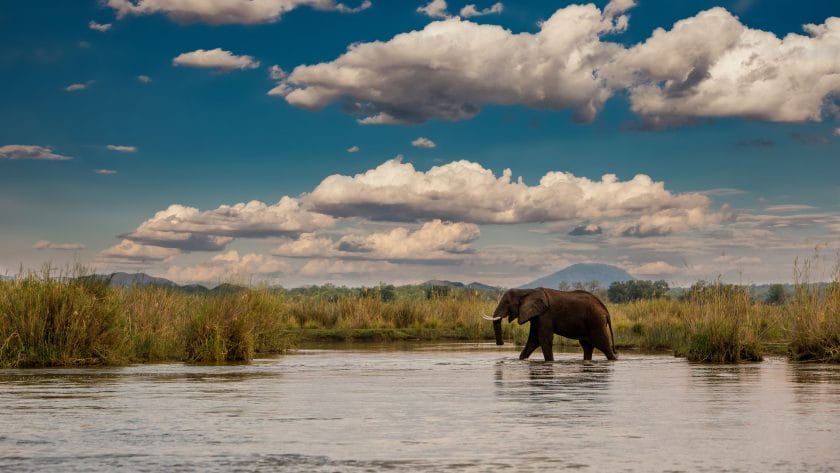
Although not without risk, these canoe safaris are truly unique, with experienced river guides leading small groups between the crocs and hippos down one of southern Africa’s wildest, most spectacular rivers.
Also on the river, tiger fishing is very popular, and the best conditions are between August and October. Many lodges cater specifically to anglers drawn to the area by the enormous tigerfish on offer.
Travel Tips for a Lower Zambezi National Park Holiday
- May to November is the best time to visit the Lower Zambezi, and the prime game-viewing season begins in June. October and November can get extremely hot, however, with daytime temperatures well over 40°C/104°F.
- Once the rains begin (usually by mid-November), most camps inside the park close. Between January and April, all the park’s lodges shut down, but there are year-round lodges and campsites outside the park, across the Chongwe River.
- Within Lower Zambezi National Park, there is no budget accommodation. Self-drivers can camp along the Zambezi to the west. Many visitors opt for a fly-in safari or drive to Chirundu and take a boat transfer from there.
- Several safari operators offer Lower Zambezi packages to the region, often at better rates than booking directly with a lodge.
South Luangwa National Park is arguably the best wildlife-viewing destination in Zambia. It has several excellent lodges and tented camps , with more budget accommodation available just outside the park at Mfuwe Bridge.
This Mfuwe section of the park gets relatively busy and can sometimes feel a bit touristy. The best options are further north along the Luangwa River, where there’s a mix of mid-range to luxury lodges and mobile camps, many open year-round.
Both parks offer day and night guided game drives and some of the best walking safaris in Africa .
Highlights of a North and South Luangwa Safari
South and North Luangwa are famous for their walking safaris, which are led by expert guides through some of Africa’s best game-viewing territories.
South Luangwa is home to many rare and endemic species, including Thornicroft’s giraffe, Cookson’s wildebeest, and Crawshay’s zebra, and there are plenty of elephants, buffalo, lions, and especially leopards.
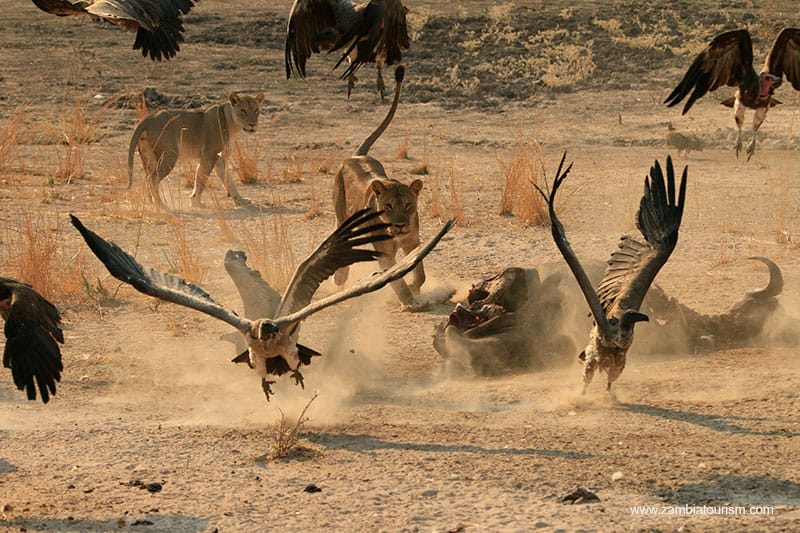
In late October, before the start of the rains, thousands of hippos gather in the Luangwa River’s deeper pools – an incredible spectacle as they jostle and fight for space.
Unlike most of Zambia’s parks, many camps in South Luangwa stay open during the rainy season, with boat safaris the major attraction. As the Luangwa River breaks its banks, shallow-draft vessels can navigate into the flooded riverine groves, one of Zambia’s unique safari highlights.
Practical Advice on a North and South Luangwa Safari
- Of all Zambia’s national parks, South Luangwa has the best network of all-weather roads, so both boat and game drive safaris are possible during the rainy season.
- During the dry season, fully-sufficient self-drivers can explore North Luangwa’s rough network of dirt tracks, a wild and beautiful adventure best done in convoy and with some previous 4×4 experience.
- October and November can get brutally hot in the Luangwa Valley, with temperatures well above 40°C/104°F. Walking safaris are not recommended; the best time to walk is between May and September.
- Fly-in North and South Luangwa Safaris are available throughout the year, and package deals booked through reputable agents are often cheaper than going direct to the lodges.
North-eastern Zambia is a vast, varied region – a mix of lush, open grassland, thick riverine forest, beautiful rivers, wetlands, and lakes. To the south, the Luangwa Valley area is the most accessible – by Zambian standards – and South Luangwa National Park is one of the country’s best, and most popular wildlife destinations .
Further north, access becomes increasingly difficult. The Great North Road, the T2 highway from Lusaka, is the north’s main artery. While it’s generally kept in reasonable condition, most secondary roads are rough and challenging and can be completely impassable in the wet season.
Many of the region’s few visitors forgo the bumpy, time-consuming roads and opt instead for fly-in North-Eastern Zambia safaris to the more remote highlights: North Luangwa and Kasanka National Park and the Bangweulu Wetlands.
Highlights of a North-Easter Zambia Safari
South Luangwa National Park is arguably Zambia’s best for wildlife. It offers the best combination of natural beauty, accessibility, wildlife, and a range of lodges, camps, and Zambia safari activities.
The Luangwa Valley is where the first-ever commercial walking safaris began, and they’re still a highlight of the region. They’re especially worthwhile in the more isolated North Luangwa National Park, known for its expert guides and pristine, largely unvisited wilderness.
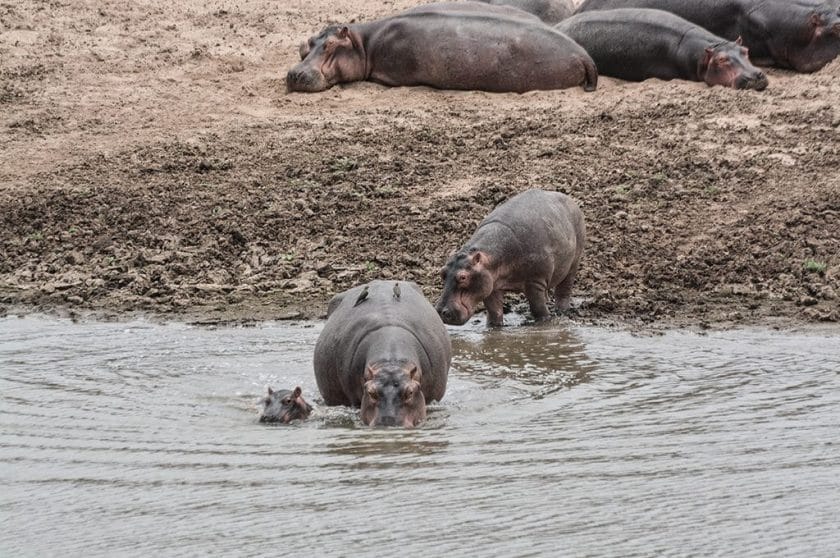
Northwest of Luangwa Valley, the Bangweulu Wetlands are wonderfully wild and remote. The few brave adventurers who visit usually do so for the endemic Black lechwe and the remarkable 1.5m-tall shoebill, which with its goofy smile could have been plucked from a fanciful Disney animation.
Nearby Kasanka National Park is a beautiful reserve and home to a sky-darkening, 10-million-strong bat migration in November and December each year. If you’re in the area, be sure to visit Shiwa Ng’andu estate, the incredible early 20th-century project of British-born Stewart Gore-Browne, who became one of Africa’s greatest champions for autonomy and self-rule. There are hot springs, fishing, canoeing, rafting, and guided walks nearby.
Practical Advice for a North-Easter Zambia Safari
- If you’re planning to drive, don’t drive alone. A northeastern Zambia safari tour is extremely challenging and remote and is only recommended for experienced 4×4 enthusiasts, ideally traveling in a convoy.
- Fly-in safaris are the norm here, and all the major camps and lodges offer air transfers, usually from Lusaka. It’s a good idea to book your entire trip with a single, reputable agent – they’re often cheaper than booking directly with a lodge.
- You’ll also get better rates if you stick with just one safari operator. The more prominent operators run multiple camps and lodges, with deals for more extended stays across their properties.
- Be aware that similar prices don’t necessarily denote a similar style. The most remote lodges are much more expensive to run, and you’ll pay a premium for the wildest, most exclusive locations.
Covering 5,000km² (1930 square miles) of Kalahari woodland, Sioma Ngwezi is Zambia’s third-largest national park. Tucked away in the country’s southwestern corner, it’s bordered by the Kwando River to the west (which also forms Zambia’s border with Angola) and Namibia to the south.
Once heavily affected by cross-border poaching, Sioma Ngwezi is seeing a revival. This has been made possible by several factors, including a slowly improving local infrastructure, good tourism numbers to nearby Livingstone, and, most importantly, the park’s inclusion in the Kavango Zambezi Transfrontier Conservation Area.
Combined with the impressive Ngonye Falls National Park further north, this is one of Zambia’s up-and-coming regions. A steady return in wildlife numbers makes it an exciting prospect for adventurous travelers.

Highlights at Sioma Ngwezi And Ngonye Falls National Park
Sioma Ngwezi has a history of excellent giraffe sightings. Although wildlife is still scarce and relatively skittish, small populations of Zambia’s other species still occur and are growing, including leopards, lions, and spotted hyenas.
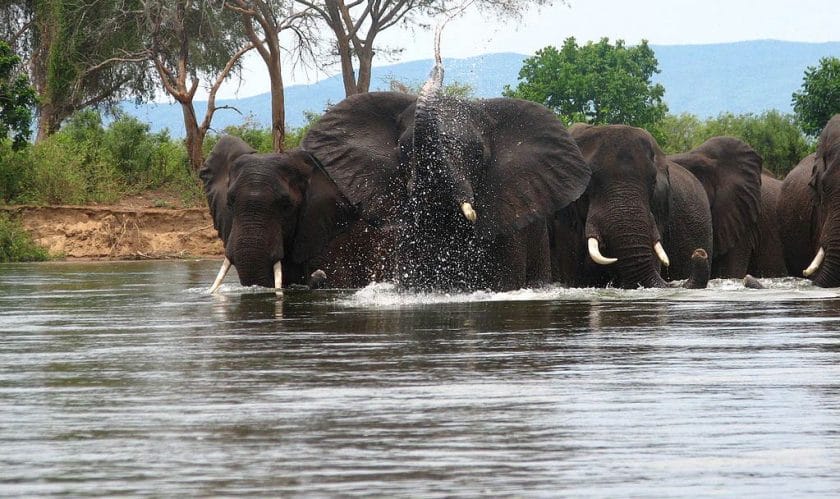
Water is also scarce, so the best wildlife viewing is just after the summer rains when the animals congregate around the drying pools. At just 25m/82ft high, Ngonye Falls may not be as grand as Victoria Falls, but what it lacks in stature, it makes up for in its impressive volume.
There’s also the chance to swim, fish, kayak, or go white-water rafting, all this far from the much busier Livingstone, a bumpy four-hour drive away.
Practical Advice for Sioma Ngwezi And Ngonye Falls National Park
- The best time to visit Sioma Ngwezi and Ngonye Falls national parks is from May to early June, just after the rainy season.
- Many of Sioma Ngwezi’s dambos (wetland pools) will still have water, and it’s the most prolific period for wildlife viewing.
- The falls at Ngonye (about 120km/74mi further north) are also at their best while the river is high.
- Unfortunately, the road from Livingstone is heavily potholed for long stretches. Still, with brand new tarmac laid further north, there’s hope that this southern section of the M10 will be resurfaced soon, making the journey from Livingstone much easier.
- Driving in Sioma Ngwezi is strictly 4×4 only, and there are no facilities inside the park.
Zambia’s southernmost region is also its most popular, dominated by the mighty Zambezi River, which flows east from the town of Sesheke to Mozambique. The river forms Zambia’s southern border with Namibia and Zimbabwe, and along this strip, you’ll find the country’s best infrastructure.
The T1 and T4 highways, which stretch from Livingstone to Lusaka and Lusaka to the Malawi border, are the country’s two major arteries. Naturally, the towns along these two main roads are the busiest but also the best equipped for travelers to Zambia. These are the access points for the country’s top highlights: Victoria Falls, Lake Kariba, and the Lower Zambezi National Park.
Highlights of a Southern Zambia Safari
Victoria Falls is one of the major highlights of Southern Africa . Although there are fewer viewpoints on the Zambian side, visiting the falls from Mosi-oa-Tunya National Park provides visitors with a quieter alternative to Zimbabwe’s much busier Victoria Falls National Park.
Further down the Zambezi, Lake Kariba is another highlight. With just a handful of small resorts on its northern shores, a few days on Lake Kariba is the perfect Zambia holiday if you enjoy fishing, canoeing, or simply relaxing on a stately houseboat.
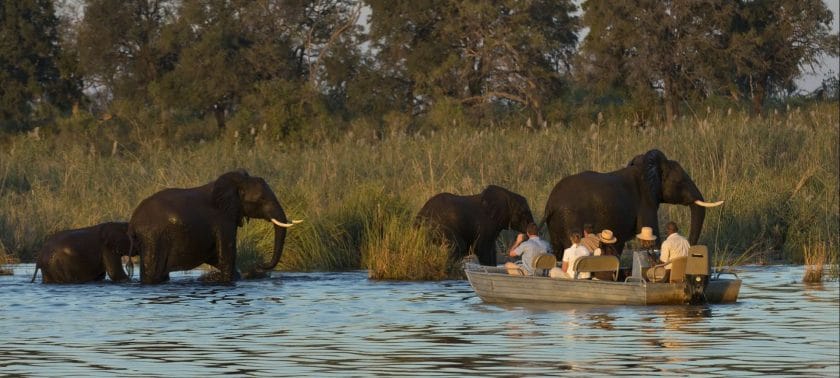
The lake also boasts a small number of game-rich islands, although passionate wildlife lovers should look to scratch that itch a little further east on a safari to Lower Zambezi National Park. Arguably the best park in the country, this magnificent reserve holds its own against Africa’s best. An open-top vehicle safari in Zambia here is not to be missed.
Practical Advice for a Southern Zambia Safari
- Zambia’s T1 and T4 highways are in relatively good condition, but sections are still severely degraded, and travel times, even over short distances, tend to be longer than expected.
- Allow plenty of time between destinations and avoid driving at night. Swimming in Lake Kariba’s shallows is also unsafe.
- The lake is home to numerous crocodiles and hippos, and the waterborne parasite bilharzia is an ever-present threat, especially along the shoreline.
- Southern Zambia is an excellent year-round safari destination, but it can become sweltering from late September until the rains begin in November.
- High temperatures and humidity make this region especially risky for malaria, so take appropriate precautions.
Arguably Africa’s most famous attraction, the 1.7km/1mi wide Victoria Falls, lives up to its hype, especially when viewed in full flow. At its peak between February and May, more than 550 million liters of water (enough to fill 220 Olympic-size swimming pools) spills into the Batoka Gorge every minute.
You can view the falls from Zambia and Zimbabwe, but Zambia tends to be quieter and more intimate. The flow may not reach the Zambian side from August to December, but day trips into Zimbabwe can be easily arranged.
Highlights of Victoria Falls in Zambia
Mosi-oa-Tunya National Park is well-geared for travelers, with an intimate network of pathways and viewpoints, a restaurant, and numerous information boards. The Zambian side also boasts what is probably the falls’ most dramatic viewpoint – the Knife Edge Bridge, which is completely shrouded in mist during peak flow.
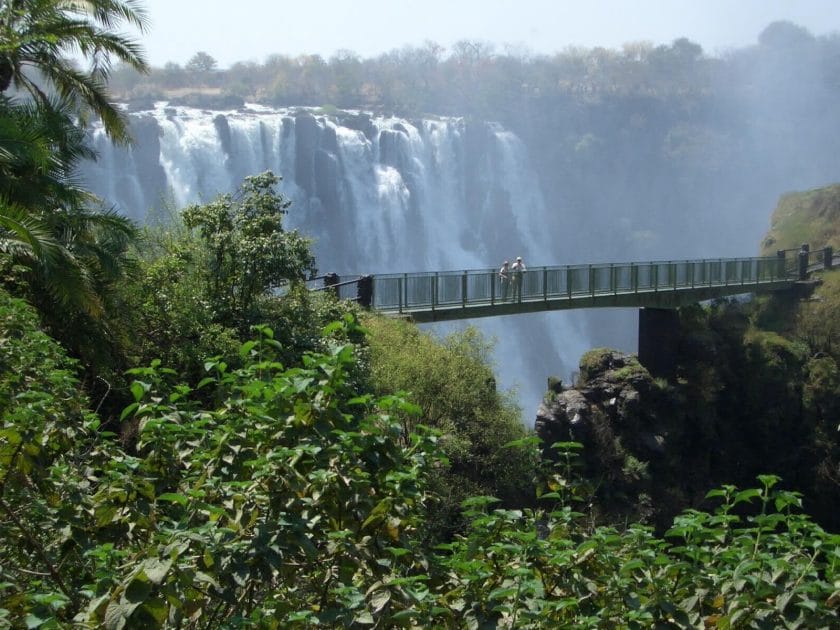
Above the falls, Livingstone Island and the Devil’s Pool are only accessible from the Zambian side, the latter a spectacular swimming spot right on the edge of the falls. It’s a major highlight, but for the brave only, and only open between August and January.
If adventure activities are your thing, there’s also skydiving, bungee jumping, abseiling, and white-water rafting. The rafting is also best between August and January when the river is lower, and the more difficult rapids are safe to run.
Travel Tips for a Victoria Falls holiday in Zambia
- It’s difficult to recommend the best time to visit Victoria Falls . Swimming in the Devil’s Pool is only possible when the water level is low (from August to early January), and white-water rafting is also best during this period.
- On the other hand, peak flow is incredible to see. These months, from February to May, give the falls its local name: Mosi-oa-Tunya, ‘The Smoke That Thunders’.
- If you’re visiting Victoria Falls during peak flow, take a raincoat and waterproof shoes (or flip-flops). You’ll certainly get soaked if you don’t. Plastic ponchos are also available to rent at the park’s entrance; an extra one will help shield your camera.
- There’s no shortage of hotels, lodges, and tented camps in the area. The upmarket lodges are generally along the upper stretch of the Zambezi River, above the falls, while more affordable backpackers and hotels can be found in Livingstone town.
Western Zambia’s topography is primarily defined by two of its most significant rivers: the Zambezi and the Kafue, which have carved broad valleys into Zambia’s plateaus over the millennia. Heavy rains from November to January cause them to swell over onto the surrounding grasslands, creating extensive, swampy floodplains for a few months each year. Several pans dot the region, and some hold water year-round.
At the extreme west, Kalahari sand dominates, while miombo woodland, papyrus swamps, and a handful of evergreen forests make up the remaining major flora. The region suffered during southwest Africa’s border conflicts of the 1970s and 80s, and it’s still one of Zambia’s least developed areas.
These days its parks are bouncing back fiercely, and new tar roads east of the Zambezi are making access significantly more manageable.
Highlights of a Western Zambia Safari
Western Zambia encompasses the wildest stretch of the Zambezi River, and its highlights are equally untamed.
A handful of isolated lodges and camps make the most of the area’s aquatic riches, offering challenging but exceptional tiger and bream fishing opportunities.
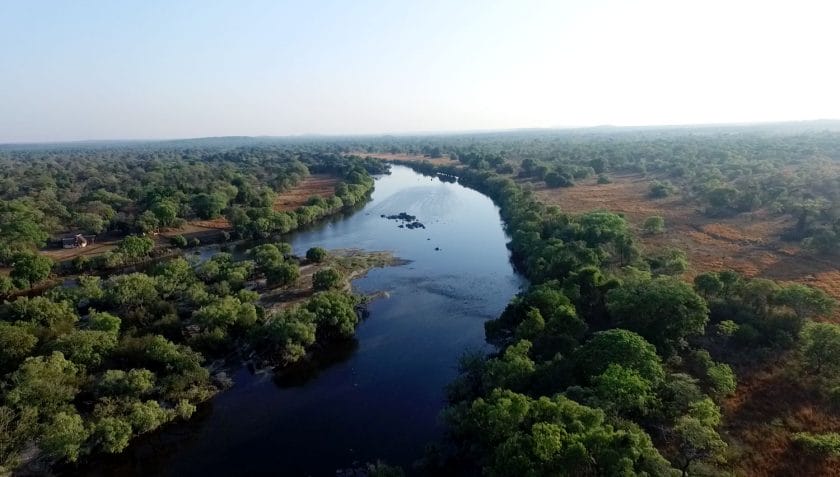
Seasoned off-road enthusiasts will find the Kalahari sand equally challenging, and exploring this region in a 4×4 requires good backup and patience. Rewards come in the form of quiet, underexplored parks such as Sioma Ngwezi National Park and the magnificent (and more easily accessed) Liuwa Plain National Park, as well as natural wonders such as Ngonye Falls.
Combine this with the resurgence of nearby Kafue National Park , Zambia’s biggest national park, and it’s an unmissable region for a truly wild experience.
Practical Advice on a Western Zambia Safari
- Sparsely populated, wild, and untamed – the features that make this region attractive for the adventurous also make it essential to be well prepared, especially if you’re self-driving.
- As a rule, fuel becomes scarcer the further north you travel, so fill up in the south and always carry extra. Much of the extreme west is undrivable during the rainy season, as are large parts of the Kafue Valley.
- It’s highly inadvisable to travel in one vehicle only – a small convoy of three or more is best. A GPS and prior 4×4 experience are essential.
- For most travelers, it’s recommended to book an all-inclusive stay with a lodge or tented camp, either within one of the parks or along the Zambezi River. Allow them to handle your transfers, which will typically be from Livingstone.
- Not all lodges operate during the rainy season, but those that do usually offer fly-in options. Reduced prices are sometimes available to encourage bookings, and it can be an excellent time to visit, especially for peace and quiet and the abundant birdlife.
- Note that fishing is banned on the Zambezi River from December to the end of February.
Travel with Confidence
With over 20 years of experience, our team will help you tailor your itinerary to your perfect adventure., 24/7 support, personalized, popular zambia safaris, these recommended tours for zambia can be tailor-made to match your budget..
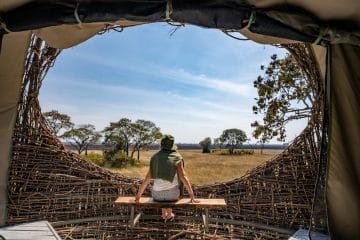
Kafue and Livingstone Adventure
Zambia Kafue Victoria Falls
From $ 4890 /USD
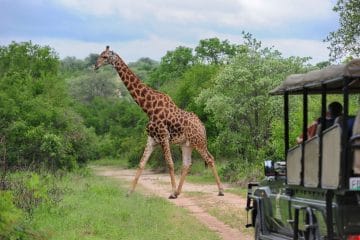
Affordable Cape Town, Kruger Safari and Victori...
Southern Africa South Africa Cape Town Kruger National Park Zambia Livingstone
From $ 4190 /USD
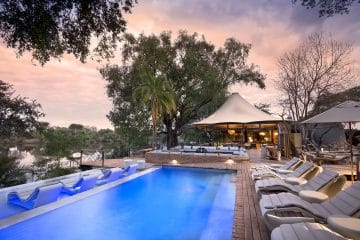
A Safari in South and North Luangwa
Zambia South Luangwa
From $ 6700 /USD
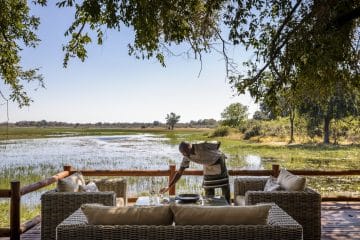
Vic Falls, Chobe and Delta Luxury Fly in Safari
Zambia Victoria Falls Botswana Chobe Okavango Delta
From $ 7620 /USD
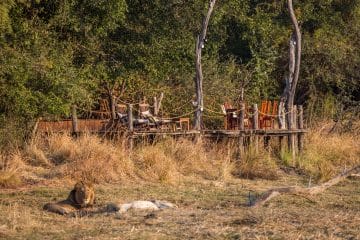
Classic Zambia Safari in Lower Zambezi, Kafue a...
Zambia Lower Zambezi Kafue Busanga Plains
From $ 6850 /USD
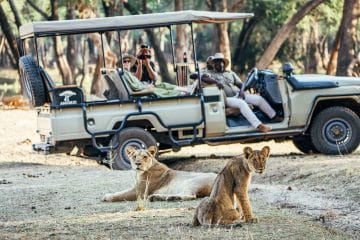
Zambia's Finest: South Luangwa & Lower Zambezi ...
Zambia South Luangwa Lower Zambezi
From $ 7100 /USD

23 Zambia Safaris to choose from
Stay for 4 - 10 days
Experience our Tailor-made Tours in Zambia
When is the best month to travel to zambia.
- Zambia in January
January is the height of Zambia’s summer rainy season and most guide books will tell you it’s the worst time to visit. By January, heavy downpours have turned Zambia’s dirt and gravel roads to an impassable mush, rivers break their banks, and many camps and lodges close completely, only reopening once the waters have subsided. Daytime temperatures average about 30°C, with nights around 20°C across most of the country.
Conditions on the ground are tough, especially if you’re driving, but not all safaris are confined to roads. Some operators in South Luangwa National Park offer fantastic boat safaris from late January to April, when the Luangwa River is high enough to explore into its flooded woodland groves. These exclusive, fly-in safaris are a fantastic way to experience Zambia’s ‘emerald season’ and South Luangwa also has a reasonable network of all-weather roads so some game driving is still possible. When the rain does fall, it tends to be brief and heavy and is more spectacular than disruptive. The dramatic skies and clear air make for excellent photographs and specialist photographic safaris are also available.
Although the rainy season is generally less productive for wildlife, that’s not to say you won’t see any. Most mammals give birth from December to March and it’s a great time to spot juveniles as they (rapidly) learn to fend for themselves. This is also by far the best period for birds across the region, but what’s food for the birds can be a nuisance for you. Be prepared for plenty of insects and don’t forget the bug spray.

By January, the Zambezi River is starting to rise rapidly and the flow over Victoria Falls becomes more and more dramatic. At the beginning of the month there may not yet be enough water to extend the full length of the falls and the Zambian side always has less flow than Zimbabwe. By the end of the month, however, the entire width should be covered, with good viewing from both sides, and from the air. The famous Devil’s Pool – where the brave can swim right up to the falls’ edge – is only accessible from the Zambian side and closes when the water level become too high. In very rainy years this could mean it’s closed by late January, only reopening in August.
- Zambia in February
February in Zambia is much the same as January, with short, fierce afternoon thunderstorms, swollen rivers and washed-out roads. It can be a difficult time to visit in Zambia, unless you’re flying into a specialist lodge that operates throughout the season. These usually offer their best safari deals from January to April and will sometimes have discounts for families and children. Expect day-time temperatures around 30°C and nights falling below 20°C by the end of the month.
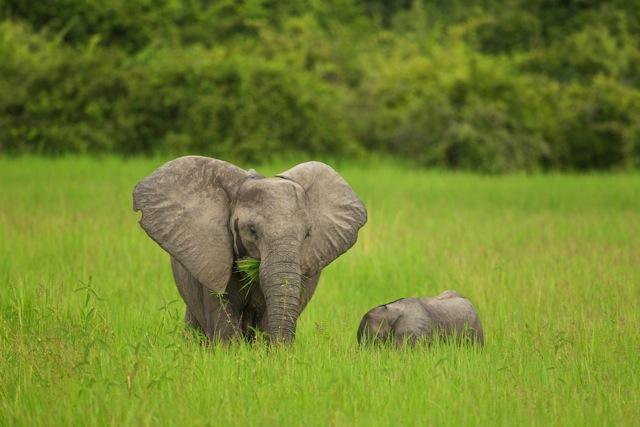
Fly-in safaris are the best – arguably the only – way to experience Zambia’s wet, ‘emerald season’, and although not all lodges remain open, a few in South Luangwa National Park offer extraordinary boat safaris at this time of year. By February the Luangwa River overflows deep into the Luangwa Valley, allowing boat access through half-submerged forests and offering a unique perspective on this incredible region. South Luangwa is also one of the only parks in Zambia with game-viewing roads that remain drivable during the rainy season. It’s practically impossible to self-drive any of Zambia’s other national parks during February (or any time from December through April), so South Luangwa’s boat and partial vehicle access makes it an excellent February destination.
By February most herbivore species have already given birth and both young and old are in excellent condition. Predators can be elusive and hard to spot in the thicker vegetation, but sightings are still possible. If time is short, however, and animals a priority, then it’s better to postpone your safari until later in the year.
February is an excellent time for birding, with many species in their bright, breeding plumage. By the end of the month, shoebills return to the Bangweulu Wetlands although March is a more certain time to see them.
Steadily rising throughout January, the Zambezi River reaches full flow in February. Expect a spectacular display at Victoria Falls, so much so that by the end of the month it can be difficult to see the falls at all through the incredible explosion of spray and mist. Flights over the falls are the best way to see them, while exploring the walkways will certainly leave you drenched. The Devil’s Pool swim is usually closed in February and white-water rafting switches to half-day trips – only the lower sections of rapids safe enough to run.
- Zambia in March
Zambia’s wet season is nearing its end in March, but there’s still plenty of rain, especially in the north. Up north, the season lasts longer, but gradually the rains retreat from the south, first from Livingstone and then Lusaka. Hot days remain around 30°C, but the nights get slowly cooler – down to around 15°C by the end of March.
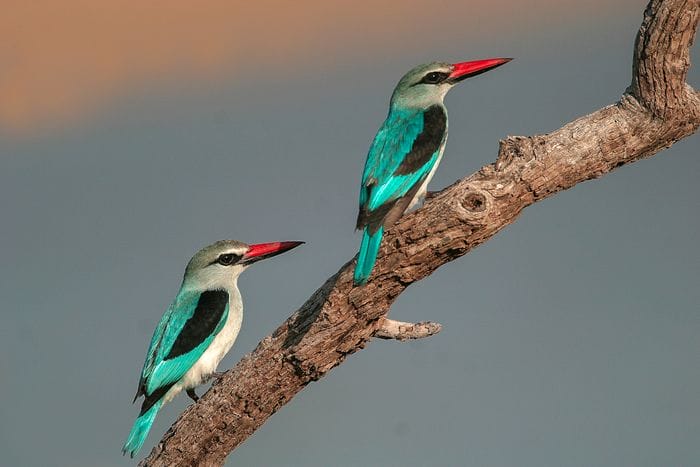
Woodland kingfisher
Although the afternoon storms are getting less frequent, water levels across Zambia remain high, in fact they’re at their highest levels throughout March and April. This is still an extremely difficult time to explore Zambia by road. Livingstone, Lusaka, and the main connecting roads are fine, but driving off-road into the parks is practically impossible. South Luangwa National Park has the best network of all-weather roads and also offers fly-in safaris along the Luangwa River. These incredible boat safaris follow the swollen river into the surrounding floodplain, drifting between half-submerged trees in search of game that may not have seen humans for months. It’s especially rewarding for photographers and birders, with great light and dramatic skies, and thousands of birds getting ready for their approaching winter migration.
In Zambia’s Western Province, a very different migration is also preparing. The final date varies from year to year, but in late March or early April, Zambia’s Lozi people undertake their annual odyssey, vacating their summer residence near the Zambezi River for higher, drier ground. This ‘Kuomboka’ festival literally translates as ‘to get out of water’ and is marked by a spectacular ceremonial procession as the king and queen navigate their huge, decorated barges to their winter residence at Limulunga.
Further south, the mighty Zambezi is by now in full flow over Victoria Falls. It’s not the ideal time for white-water rafting as the volume is so great the first section of rapids is usually closed. Above the falls the famous Devil’s Pool swim is also closed in February; the high waters make it far too dangerous. It’s during March and April that the falls’ local name seems most appropriate: Mosi-oa-Tunya, ‘the smoke that thunders’. It’s an awe-inspiring – and very wet – experience, and you won’t see much of the chasm itself with the amount of mist and spray pouring into the air. For the best views, take to the skies. Helicopter and light aircraft flights are at their best at this time of year.
- Zambia in April
Although not considered prime game-viewing season, April is an excellent time to safari in Zambia. Rates tend to be lower, the weather drier and slightly cooler, and the atmosphere clear and crisp and scattered with fluffy clouds. It’s an ideal month for photography enthusiasts and for those who want to see the greener side of Southern Africa without the afternoon downpours. Hot days will still touch 30°C, with colder nights falling to between 10°C and 15°C. By mid-April the rains have almost completely left the south, but may linger in the north into the first few weeks of May.
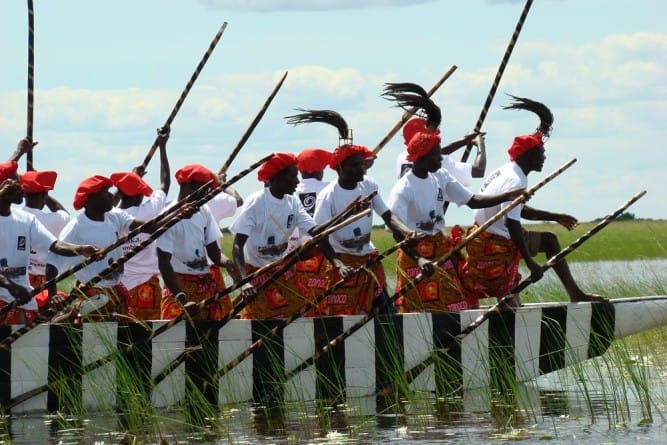
April and May are Zambia’s autumn low season, when good deals and increasingly pleasant safari conditions must be weighed against lingering flooding that continues to make park access difficult. Off-road driving is still nearly impossible in April, although conditions get gradually easier towards the end of the month. Fly-in safaris remain the best way to access most parks and as the lodges that closed over the wet season reopen, many offer discounts to encourage early visitors. The lush, thick vegetation means predators are harder to spot than later in the year, and the tall grasses can make walking safaris difficult, even dangerous. Nevertheless, it’s a good time for group and family deals; the bush is at its verdant best, the birding fantastic, and early April is superb for boat and canoe safaris.
Also in early April, or sometimes late March, the annual Kuomboka Ceremony takes place in Zambia’s Western Province.
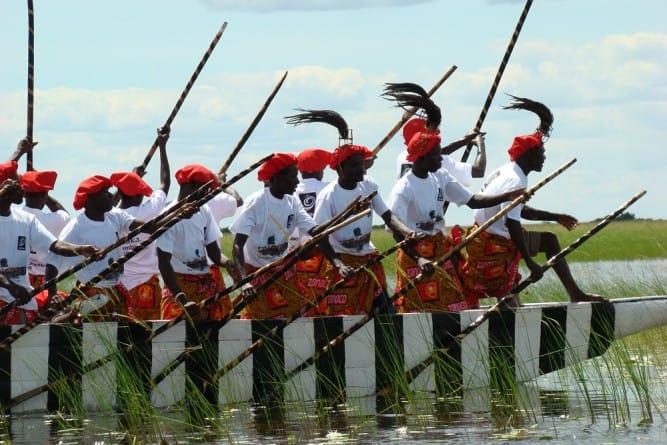
Kuomboko ceremony | Credit: Getaway
Literally translated ‘Kuomboka’ means ‘to get out of water’ and it marks the local Lozi people’s yearly move from the Zambezi floodplain up to higher ground. Powerful drums summon thousands to the site, before the king and queen board massive, decorated barges, and begin their stately procession upstream. It’s a festive occasion with plenty of music and dancing and visitors are welcome providing they’re respectfully attired.
Further downstream Victoria Falls is in full flood and exploring the walkways and viewpoints will certainly leave you drenched. Take a poncho or raincoat and don’t expect to see much of the gorge itself – most will be hidden under the roaring white torrent. April is a great month for flights over the falls, but not for white-water rafting or swimming in the Devil’s Pool. Water levels are too dangerous for the latter activities, although half-day rafting excursions are usually still an option on the lower-grade rapids down river.
- Zambia in May
May is arguably Zambia’s most beautiful month, with the vegetation at its lush best and Victoria Falls in full flow. By May, all of Zambia’s southern camps and lodges have reopened after the rains and across the south the dirt roads are drying, allowing self-drivers back into the parks. May is not yet prime time for wildlife viewing – the thick vegetation makes animals harder to spot. That said, Zambia’s guides are experts and guided game drives can still produce great sightings.
May is also an excellent month for discounts, with low or shoulder season rates at most camps and lodges. Late May, when the vegetation has thinned a little, is perfect for a walking safari in the Luangwa Valley. Expect lower rates and comfortable daytime temperatures, prolific wildlife and some of Zambia’s most qualified and enthusiastic guides. By now the summer rains have completely retreated and nights are cooler and far less humid. Hot, clear days may still touch 30°C, but closer to 25°C is more common in the south.
Although most of Zambia’s southern park roads are open by late May, dirt roads in the north are often still impassable. Both the Kafue River Valley and Liuwa Plain National Park can stay flooded into June, but conditions depend on the rains and vary year to year. As the floodwaters withdraw the rivers gradually clear and late May / early June marks the start of the best river fishing in Zambia.
In the magical Bangweulu Wetlands, the subsiding waters also start to make travel easier, and late May through June is the best time for shoebills. These goofy looking birds are well worth the trip, not just to see them, but for the stunning natural beauty of the wetlands themselves. At nearly 10000km2 they’re almost as large as the Okavango Delta and support a rich, varied flora and fauna, including the endemic black lechwe.
May to August are also the best months to spot the elusive leopards, nocturnal predators who generally only venture out once it’s cool. At hotter times of the year that can mean quite late in the evening, but in winter they prowl at twilight, inspecting their territory as they prepare to hunt. South Luangwa is particularly good for leopard and all the main camps and lodges offer guided evening and night drives. Sightings aren’t guaranteed, but this is the best way to see them, especially as Zambia is one of very few countries to allow spotlights on game vehicles.
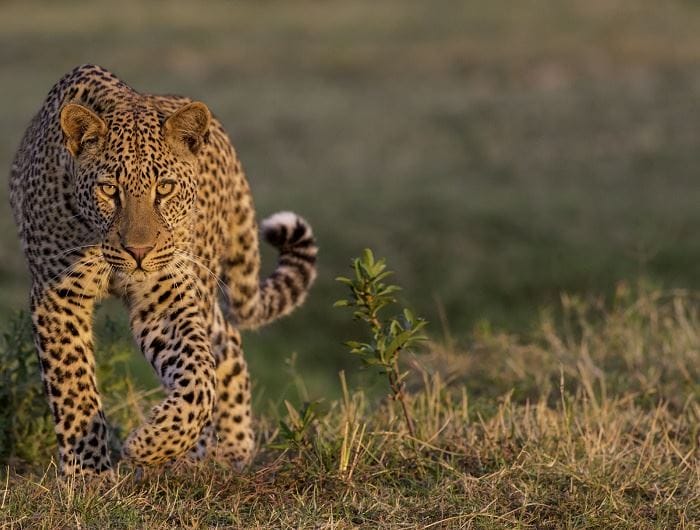
Note that May is still high water at Victoria Falls and tours of the Devil’s Pool will definitely be closed. White-water rafting is usually limited to half days on the downstream rapids, so May is not a good time for either of these activities. You will, however, get to see the falls at near-peak flow and experience the full might of Mosi-oa-Tunya, ‘The Smoke That Thunders.’
- Zambia in June
June marks the start of Zambia’s prime safari season, but many lodges still offer reduced ‘shoulder season’ rates so it’s one of the best months to visit. Later in the season conditions can get very hot, but June is cool and pleasant, with daytime highs not much over 25°C and nightly lows around 10°C. Pack thick socks and a warm jacket for early morning walks and game drives. And prepare yourself for one of Zambia’s best months for a walking safari.
The Luangwa Valley is Zambia’s walking safari mecca, although all the major parks offer guided walks as well. South Luangwa National Park is where it all began, however, and the region still boasts some of the most experienced walking guides in Africa. June in Zambia is cool with clear skies, and after a month or two without rain the vegetation is thinning, but not yet completely desiccated. It’s a beautiful time to walk in the parks and you’ll find a range of walking safaris available. The more adventurous can try multi-day mobile safaris where guests walk between temporary camps, through some of Zambia’s most pristine wildlife areas. North Luangwa National Park is especially wild and the few operators in its southern section are walking safari specialists.

Northwest of the Luangwa Valley, the Bangweulu Wetlands are also excellent in June. Those wishing to see the strange, smirking shoebill will have better chance at the beginning of the month, before the floods recede. As the waters withdraw, the endemic black lechwe emerge from the surrounding woodlands, gathering in great herds on the exposed floodplain.
Across in northern Kafue, the Busanga Plains also begin to dry out in June. Here you’ll find red lechwe and roan and sable antelope, as well as elephant, buffalo, lion and leopard. By late June, the dirt roads of Kafue and Liuwa Plain National Park have usually reopened to self-drivers and as the region’s rivers subside and become clearer, the fishing conditions take off. It’s a wonderful time to combine a safari and fishing holiday along the Kafue and/or Upper Zambezi rivers. Bream and tigerfish are the prized catches in the area.
Although June is a great time to see Victoria Falls in high flow, the waters are usually still too high for the best white-water rafting. Half day trips starting further downstream are possible, but these skip the highest-grade rapids closer to the falls. The famous Devil’s Pool swim, above the falls, is also closed until around August, but guided walks onto Livingstone Island are normally operating by the end of the month.
- Zambia in July
July to October is peak season in Zambia, when game-viewing is at its finest, but lodges and camps also charge their highest rates. This is this the best time to go on safari, with the thinning vegetation making wildlife easier to spot. It’s also the coldest month to visit Zambia, with daytime temperatures around 25°C in the south. Hot days can still reach 30°C, especially in the north, but expect some chilly nights and take a fleece, or better yet a windproof jacket, for early morning walks and game drives.
Across the country, July is a great time to travel. There’s zero rainfall and by now almost all the dirt roads have dried and hardened. Liuwa Plain and northern Kafue may still present a few challenges, but for the most part self-drivers can explore where they wish. Fly-ins are still available to all the major parks and remain the quickest and most comfortable (and expensive) way to travel internally.
From late July the white-water rafting season opens, although it may be a bit earlier or later depending on the rains that year. When the water is low enough the higher-grade rapids nearest Livingstone can be run and the rafts set off from just below the falls. The entry is spectacular, especially in July and August when there’s still a lot of water pounding into the gorge. The first 10 rapids are the most extreme so if you’re serious about rafting, this is the time to do it.
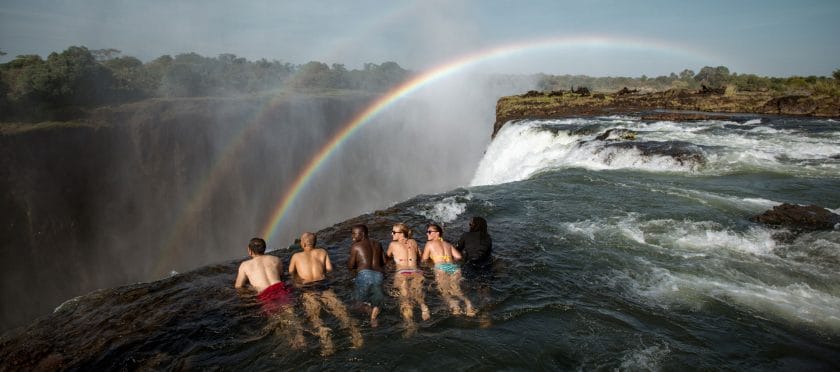
Above the falls the Devil’s Pool may not yet be open in July. This daring chasm-lip swim can only take place once the river’s flow has decreased, and water levels are usually not low enough until August. Even so, July is a great time to experience Victoria Falls. The world’s widest sheet of falling water will still be pouring into the gorge and with less spray obscuring the view you should be able to see right down into the chasm.
Keen anglers will already know that July is a fabulous month for fishing in Zambia. There are numerous species in Zambia’s lakes and rivers, but bream, yellowfish and especially tigerfish are the most prized. Dedicated fishing lodges and camps can be found all over Zambia, but head to the upper Zambezi if you’re after really big tigers.
For those looking to combine local culture with their safari, the annual Mutomboko Ceremony takes place on the last weekend of July. Hosted by the Lunda people, this two-day music and dance festival celebrates the incorporation of the Lunda tribe into Zambia from the DRC. Visitors are welcome, but as it’s up in Zambia’s far north, near Lake Mweru, most will likely find it a bit too far to travel.
- Zambia in August
Zambia’s peak season extends into August and the combination of cool, dry weather and increasingly thinning vegetation makes it one of the best months to go on safari. Across the country, surface water is rapidly drying and by the end of the month the animals begin to mass along the rivers, congregating near permanent water in ever increasing numbers. As pools dry, fish are trapped, and a variety of birds, including the supremely ugly marabou stork, descend for an easy meal.
Throughout August, conditions remain dry and clear. Expect cool mornings around 10°C and warm afternoons that gradually climb over 30°C by the end of the month. It’s still a good time to see leopards in South Luangwa National Park, while the evenings remain cool and they continue to begin prowling at dusk. Like July, August is a top month for walking safaris and the more popular South Luangwa camps can book out over a year in advance. With excellent game-viewing and dry dirt roads, it’s a popular month for both fly-in and self-drive safaris across all of Zambia’s parks.
Many visitors also come for the fishing – August is a phenomenal time for giant tigerfish on the upper Zambezi. A handful of excellent lodges cater specifically for anglers, and camps on the Kafue, Luangwa and lower Zambezi rivers also offer excellent fishing for bream, yellowfish, catfish and tigers. There’s great fishing on Lake Kariba year-round, but August to October are especially productive, with bigger and bigger tigerfish being caught as the season progresses.
Fishing holidays on the upper Zambezi can be combined with a cultural trip to the Likumbi Lya Mize Ceremony, which takes place near the town of Zambezi in the last few days of August. Over five days, the Luvale people of Western Zambia celebrate the passage of their older boys to adulthood, with feasts, songs and traditional dancing. The festival is particularly well-known for its colourful Makishi dancers who perform for the crowds in giant, painted masks and flamboyant headdresses.
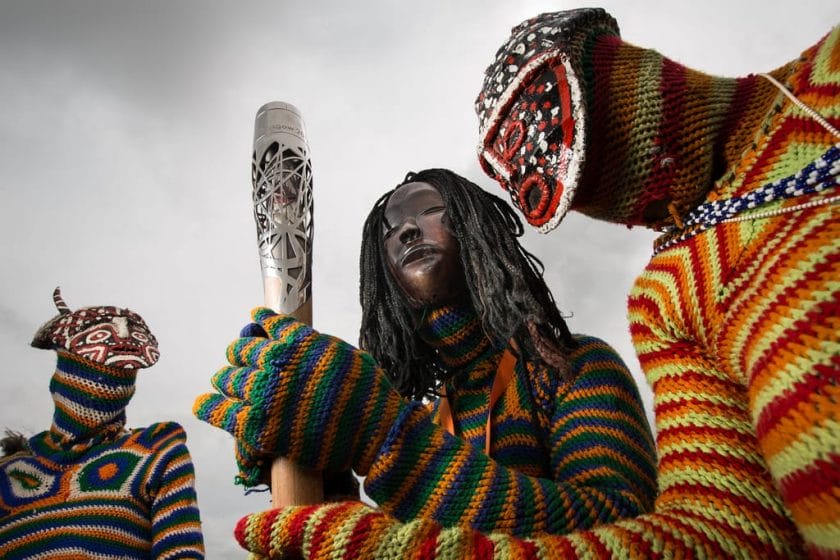
Down south on the Zambezi River, the flow is gradually decreasing over Victoria Falls. August marks the start of the best white-water rafting on the Zambezi, with full-day rafting excursions beginning just below the falls. High up on the lip above, the Devil’s Pool also reopens in August. The lower water levels allow tours to recommence and it’s once again possible to take a swim right next to the precipice.
- Zambia in September
By September things are hotting up in Zambia, as temperatures rise and the increasingly water-stressed animals compete for resources. As more pools dry, fish are exposed – an easy meal for hungry eagles, storks and scavengers. Both predators and prey stay close to the rivers and lion sightings are more common as their range decreases and their movements become more predictable. By the end of September hot days can easily reach 35°C, with nightly lows of between 15°C and 20°C.
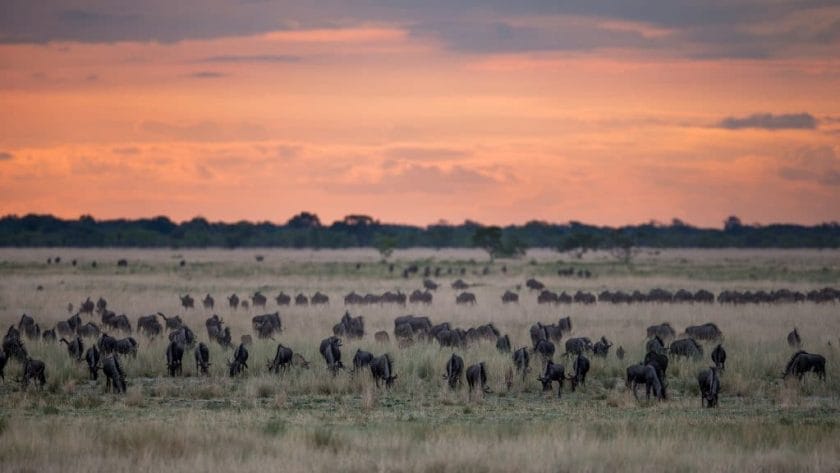
In Liuwa Plain National Park the first wildebeest appear in September, though in nothing like the enormous herds of late October and November. Along the upper Zambezi River, nearby, the fishing remains excellent, but the hotter days can be a challenge under the fierce African sun. The growing heat aside, September is still prime fishing season across Zambia and most lodges have swimming pools for guests to cool off in. A houseboat on Lake Kariba makes a wonderful base for fishing and out in the deeper water you can swim (at your own risk), away from the crocs and hippos.
Despite the hot afternoons, early mornings remain cool, and September is still a good month for a walking safari. The lush April vegetation is a thing of the past, replaced with vast golden grasslands that glow in the dawn light. In the Lower Zambezi and Luangwa valleys the thick mopane forests burst with vivid yellows and reds, their leaves falling completely by the end of the month. It’s a beautiful period in these low-lying valleys, before the scorching October heat arrives in full force.
September is an exciting time for white-water rafting on the Zambezi River and the full set of rapids can be run from just below Victoria Falls. While the falls themselves are less spectacular than in the preceding months, in early September there should still be some flow over the entire width. It’s an ideal time for a swim in the stunningly-situated Devil’s Pool. With a guide, the adventurous can take a plunge right on the falls’ edge, with incredible views down into the gorge.
- Zambia in October
October is peak safari season in Zambia – but it’s hot! Known locally as ‘suicide month’ the relentless heat hits the low-lying regions hardest, especially the Luangwa and Zambezi valleys where temperatures in the shade can reach well above 40°C. This includes Livingstone and Victoria Falls where white-water rafting is no longer just about the world-class rapids, for many it’s simply a great way to cool down. A stint on Lake Kariba is ideal at this time of year. It’s arguably the best month to catch giant tigerfish and in the deeper waters it’s also safe to swim.
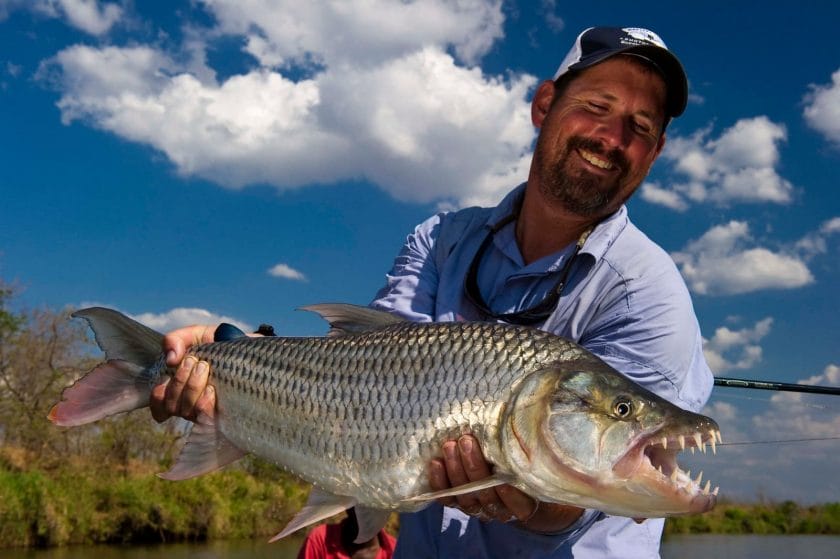
It may be relatively safe out deep, but the shoreline can appear especially treacherous. October is the start of the crocodile nesting season and it’s an excellent time to see them out of the water. As even the bigger rivers begin to dry out, thousands of hippos are forced into the ever-shrinking pools. In some places, many hundreds are crammed cheek-to-jowl and, grumpy to begin with, their constant jostling and roaring fights can be quite a sight.
The permanent water is where all the action takes place and on the riverbanks you’ll see large, mixed groups of herbivores alongside giant herds of buffalo and thirsty elephant. October is also a great month to see lions – they’re never far from the water and in the heat of the day they’ll loll around in the shade for hours.
In Liuwa Plain National Park the wildebeest are gathering, and by the end of the month their numbers may be many thousand strong. In November and December, they’ll move down out of the plains in what is Africa’s second largest wildebeest migration. The migration itself is dictated by the start of the rains further north so the exact timings vary year to year. In wet years, parts of Zambia will get a first sprinkling of rain at the end of October, but it’s rarely more than a shower and does little to diminish the heat.
October is a mixed time to visit Victoria Falls. It’s great for white-water rafting and the Devil’s Pool, but the flow over the falls is nearing its lowest ebb and there may be no water at all on the Zambian side. October lacks the mist and thunderous roar of April and May, but the views into the gorge are still beautiful and worth seeing. If you’re visiting in October, it’s a good idea to plan a daytrip across to the Zimbabwean side where there’s usually still good flow at this time of year.
- Zambia in November
November is the spring ‘shoulder’ season in Zambia when many lodges offer reduced rates or close completely, mostly on account of the unpredictable weather. Nobody knows exactly when the rains will begin, but they usually start in the north of Zambia first, then slowly move south over the course of the month. Lodges with fly-in access are more likely to stay open, but even some of these shut down for the wet season. As soon as the rains set in most dirt roads become impassable and lodges replying on road transfers generally close by mid-November at the latest.
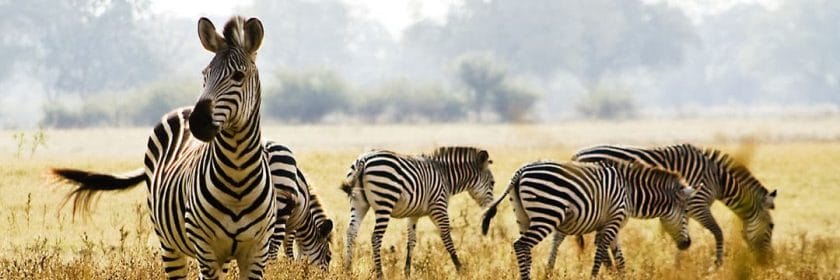
Before the first rains fall it stays extremely hot across the county, with temperatures hovering around 40°C. The afternoon thunderstorms bring welcome relief, but you can still expect daily highs between 30°C and 35°C. Gradually the spring rains revitalise the land – the baobabs begin to flower and fresh leaves bud on the mopane trees. By the end of the month new-born calves and lambs appear, and migrant birds arrive back in numbers, sporting their bright breeding plumage.
In Zambia, November is perhaps best known for its two great wildlife extravaganzas. In the far west, Liuwa Plain National Park hosts Africa’s second largest wildebeest migration as up to 40000 blue wildebeest move south in search of fresh grazing. The exact timing depends on when the rains begin further north, but it’s usually sometime in mid to late November.
Then to the east, in Kasanka National Park, November is the best month to witness the annual fruit bat migration. Billed ‘Africa’s greatest mammal migration,’ an estimated 10 million bats take to the evening skies from late October to early December, an incredible swarming mass of bodies – each with wingspans of over half a metre.
Both of these amazing spectacles can be experienced on self-drive or guided/fly-in safaris. Neither are easy to reach by road however, and road conditions deteriorate rapidly from the end of the month. November is a risky month to self-drive anywhere in Zambia. And those driving to Liuwa Plain in particular should ideally travel in convoy.

Visitors to Victoria Falls may be disappointed in November. The white-water rafting is excellent, but except for a trickle on the Zimbabwean side, there may be no flow at all over the falls. This is a good time to explore the top of the falls, with guided walks to Livingstone Island and swimming in the Devil’s Pool. Below the falls, the cliffs of Batoka Gorge are exposed and breath-taking, but there’s none of the pounding, mighty roar, and the drenching mists of March, April and May.
- Zambia in December
December is the start of Zambia’s rainy season – generally cooler than the previous few months, but nevertheless still hot and humid. Expect daytime averages of roughly 30°C and nights down to only around 20°C. Rainstorms can be fierce, with heavy downpours rapidly turning the dirt roads to mud. Camps and lodges without fly-in access close completely and many close anyway due to flooding. Few safari operators continue through the wet season, but those that do stay open usually offer lower rates. It can still be a rewarding time to visit, especially for bird lovers, as the migrant species return in full force and the breeding season begins in earnest across the dambos and swamps.
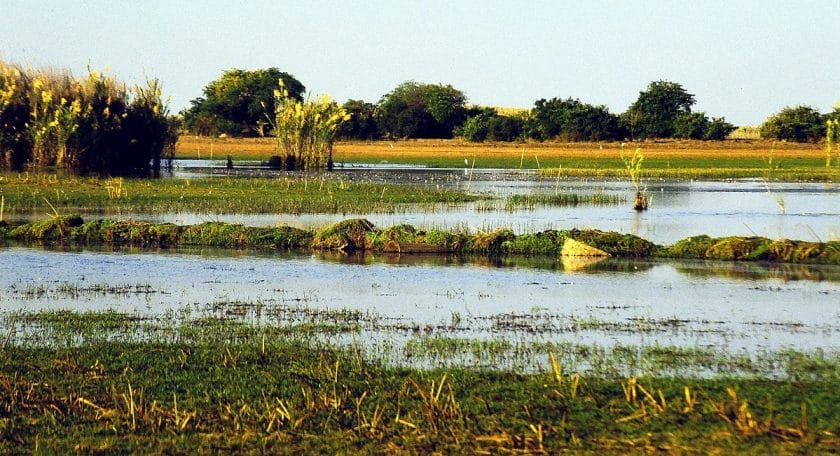
Besides the excellent birdlife, December is a great month for grazers and their new-borns. The resurgent grasses provide much needed sustenance and the rapidly greening plains are covered with antelope. Elephant and buffalo, however, are harder to see as they disperse from the rivers into the scrubland and forest.
There’s a ban on all river fishing in Zambia from December to March, but this doesn’t apply on Lake Tanganyika or Lake Kariba where you can fish year-round. It can be a spectacular time to rent a houseboat on Lake Kariba – the still lake waters reflecting towering thunderheads while lighting flashes and the hippos grumble and moan.
In Victoria Falls, December is still great for white-water rafting as the water levels are low enough to run the full rapids from below the falls. The falls themselves, however, are at their lowest flow, and there may be no water at all on the Zambian side. Guided tours to Livingstone Island and the Devil’s Pool are open in December, but make sure you plan a trip across to Zimbabwe where there’s always some water cascading into the gorge.
Our Recommended Tours in Zambia
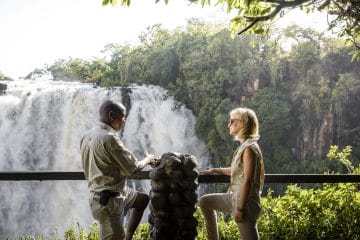
Zambia Safari Adventure
Southern Africa Zambia South Luangwa Lower Zambezi Victoria Falls
From $ 6515 /USD
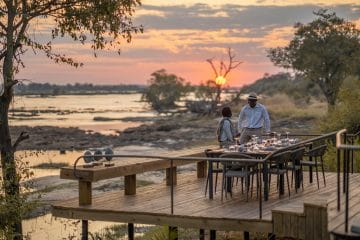
Zambia Discovery Safari
Southern Africa Zambia Victoria Falls Kafue South Luangwa
From $ 9370 /USD
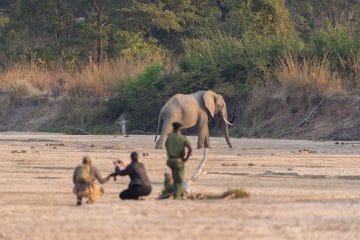
Best of Zambia Safari
Southern Africa Zambia South Luangwa Lower Zambezi Livingstone Victoria Falls
From $ 10900 /USD
Looking for Something Unique?
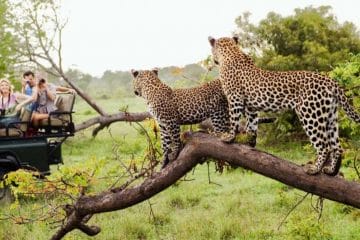
Big Five Safaris in Africa
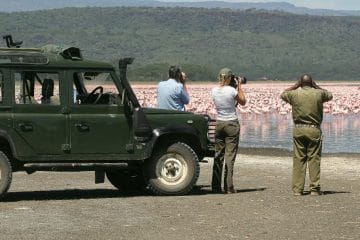
Birding Safaris in Africa
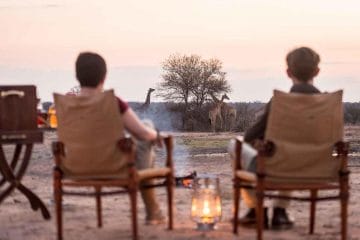
Honeymoons in Africa
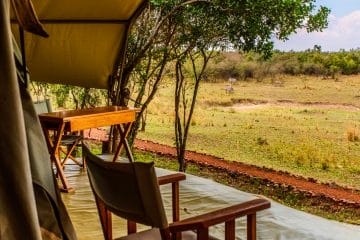
Mobile Camping Safaris in Africa
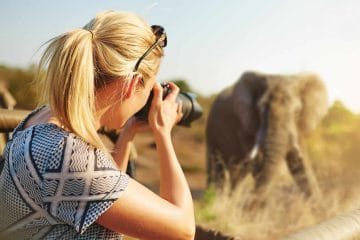
Photographic Safaris in Africa
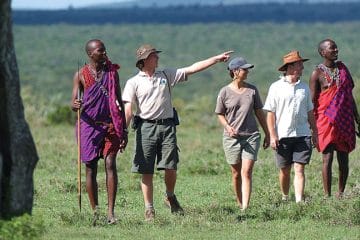
Walking Safaris in Africa
Why travel with us?
Recent reviews from travellers who planned and booked their africa trips with discover africa safaris, elite service to create a trip of a lifetime.
4-Day Southern Kruger Safari Review
Carolina, United States 17 Feb 2023
Great journey through namibia.
Namibia Safari Review
Kristel, Belgium 15 Sep 2021
Wonderful vacation and service..
Sabi Sands Game Reserve Safari Review
David, United States 30 Jul 2021
Super glad we booked our safari adventure with discover africa safaris. they....
Big Cat Safari Tour Review
Mike, Philippines 03 Sep 2018
A fabulous holiday put together with everything we asked for, definitely would....
Cape Town and Garden Route Tour Review
Yvonne, United Kingdom 03 Apr 2018
A memorable south africa self-drive trip.
Self-Drive Safari in South Africa Review
Ron, United States 22 Sep 2016
Ready to plan your tailor-made safari.

Adelle Belle, Safari Travel Planner
Free safari planning advice from destination experts
Faqs about zambia.
There are 4 ways to get from Lusaka to Livingstone by plane, bus, train or car.
Best things to do in Livingstone Zambia
Dip in Devil's Pool
Visit Victoria Falls
Check out the Royal LivingStone Express
Pump some adrenaline on the Gorge Swing
- There are a couple of different options for accommodation in Livingstone Zambia for a Zambia Safari, but it would be recommended to stay in a hotel or lodge. Examples of this include; Victoria Falls Waterfront, Ngoma Zanga Lodge, Okavango Lodge and much more.
- The Busanga Plains are located in the northwestern part of Zambia's Kafue National Park, which is one of the continent's largest protected areas.
- Safari/bucket showers are common in mobile or tented camps where there is no permanent plumbing. They are an effective yet environmentally friendly way to shower where water is at a premium and provide plenty of hot water to wash comfortably.
- Generally, there is an en-suite private shower stall within your tent with a “rainfall” style shower head at which you can control the water flow. Outside the tent, there is a large waterproof bag or bucket which is filled with about 10 to 15 litres (5 US gallons) of hot water before being raised with a pully/rope system to either connect to the shower pipe or fill a cistern.
- The water is delivered at the ideal temperature so it is best to use it as soon as it arrives. Staff typically fill the showers at a pre-arranged time of day, or you simply need to give them a few minutes notice so they can get it ready.
- According to the Centre for Disease Control and Prevention, you should be up to date on routine vaccinations while travelling to any destination.
- Some vaccines may also be required for travel - such as Routine vaccines that make sure you are up-to-date on routine vaccines before every trip. These vaccines include the measles-mumps-rubella (MMR) vaccine, diphtheria-tetanus-pertussis vaccine, varicella (chickenpox) vaccine, polio vaccine and your yearly flu shot.
- However, you will need to take Hepatitis A - CDC recommends this vaccine because you can get hepatitis through contaminated food or water in Zambia, regardless of where you are eating or staying. You will also need to take prescription medicine before, during and after your trip to prevent malaria.
- Your doctor can help you decide which medicine is right for you and also talk to you about other steps you can take to prevent malaria. Travellers can get typhoid through contaminated food or water in Zambia. CDC recommends this vaccine for most travellers, especially if you are staying with friends or relatives, visiting smaller cities or rural areas. Source: https://wwwnc.cdc.gov/travel/destinations/traveler/none/south-africa
See Zambia in Your Comfort
- A Luxury Zambia Safari
- Affordable Zambia Safari
- Budget Zambia Safari
Zambia has several superb luxury tented camps and lodges located in some of Africa’s most remote, unspoiled wildlife areas. Private, all-inclusive luxury packages are available from between $600 and $1200 a day, which is good value compared with luxury safaris in Botswana and South Africa.
At the lower end of this relatively broad price range, the quality is still of a very high standard, and it’s this, along with its exceptional wildlife and relatively quiet national parks, that makes a luxury safari in Zambia an extremely competitive luxury safari destination.
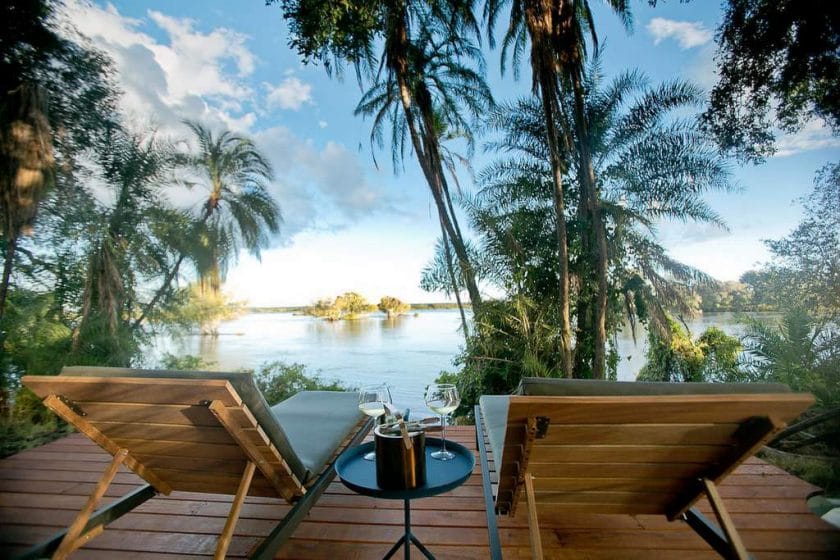
Most of Zambia’s luxury safari lodges are concentrated in South Luangwa National Park and the Lower Zambezi National Park, along the banks of the Zambezi River. Lodges along the Zambezi offer unforgettable canoe safaris and sunset boat cruises, with excellent bird life and large elephant, buffalo, and hippo populations. South Luangwa National Park is famous for its walking safaris and wilderness trails, with all of the Big Five, except the rhino, in abundance.
For more affordable luxury, try Victoria Falls and Kafue National Park, or for the ultimate in exclusivity, head northwest to Liuwa Plain National Park for Africa’s second-largest wildebeest migration . Liuwa Plain has only one permanent camp inside the park, offering one of Zambia’s most luxurious private lodge experiences.
Affordable safaris in Zambia offer the best value for money in their midrange and more luxurious deals, with all-inclusive safari tours often significantly cheaper than equivalent packages elsewhere in Africa.
Equivalence is difficult to measure, but the quality and exclusivity of Zambia’s midrange camps and lodges are hard to beat. All-inclusive safaris are also the easiest way to see Zambia’s most pristine wilderness areas and enjoy some of the best wildlife-viewing conditions in Southern Africa.
At the lower end of the price range, you’ll find short, fully-catered camping safaris from between $175 and $200 a day, provided you’re willing to join a group. Tours usually run from Lusaka or Livingstone, with a few days in Kafue and/or one of the other nearby parks.
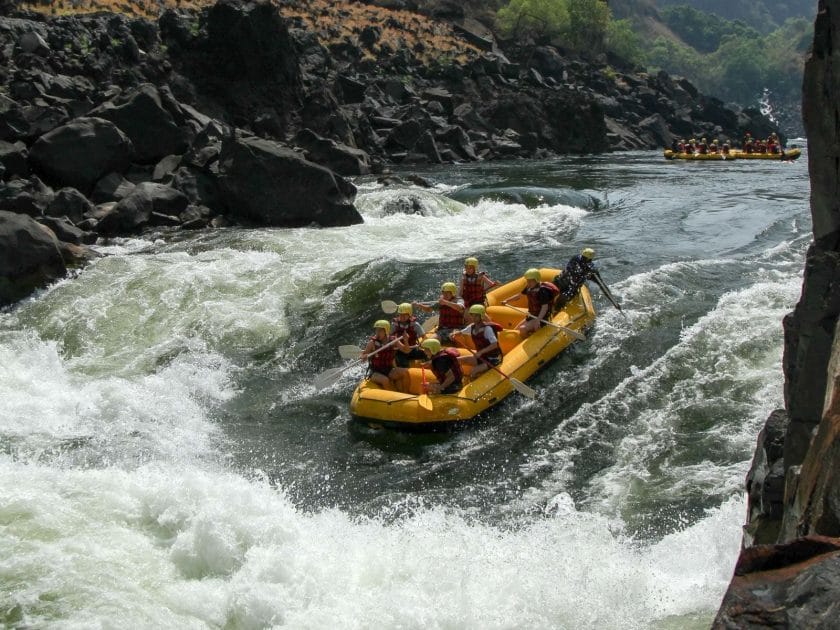
Short safaris in Zambia like this can be an excellent add-on to a more budget-conscious holiday. In contrast, longer, fully-catered safaris in Zambia are available from $1200 to $1800 a week, depending on the number of lodge nights and activities included.
Self-catering, private houses are also an option, usually located in excellent game-viewing areas. Prices can vary wildly, however – anything from $400 to $4000 a night. This can still represent good value for families and groups of six or more, although food and wildlife activities are usually not included.
More exclusive, private safari packages start at around $350 a day, and these will probably also include a few nights of comfortable, full-catered camping.
Budget $450 to $600 daily for private, all-inclusive lodge or tented camp deals. In this bracket, you can expect high-quality guiding, exclusive, pristine wilderness areas and lodge and tented camp accommodation at near-luxury standards.
Zambia offers excellent value on exclusive safaris and wildlife activities, but budget travelers in Zambia will struggle to make the most of what’s available. This is partly because many of Zambia’s best wilderness areas are extremely hard to reach, with wonderfully isolated lodges that are expensive to run.
Getting to these areas can hit the budget hard, with long 4×4 transfers or charter flights required. Staying close to Livingstone and/or Lusaka will reduce costs but limits your options to the immediate area. Renting a camping-equipped 4×4 is the most affordable way to explore Zambia properly, especially if you’re traveling in a small group.
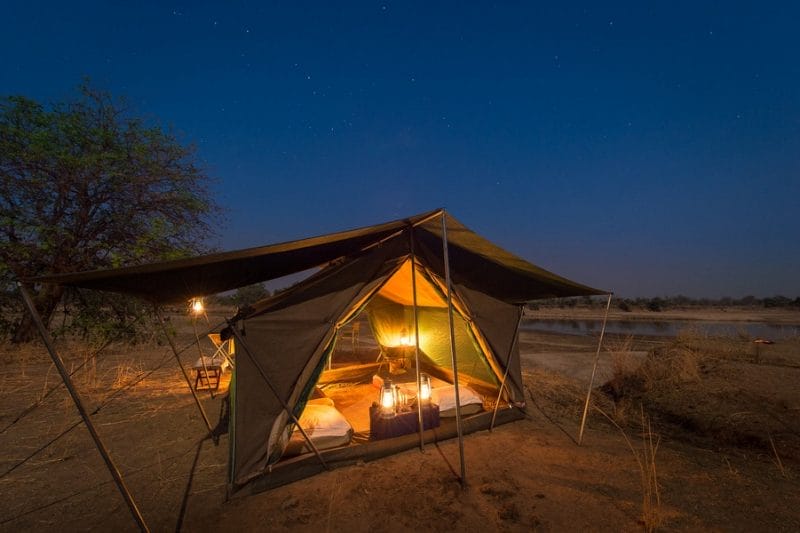
With four people in a vehicle, you can expect to spend around $120 per person per day, including fuel, camping, park fees, and food. Be aware, however, that Zambian roads can be challenging, and some previous 4×4 experience is highly recommended.
On a very tight budget, your best bet is to base yourself in Livingstone and take advantage of the excellent adventure and safari options nearby. These can be pricey, too, with a Victoria Falls bungee jump at $160 a person and white-water rafting at $130 a day.
A double room at a backpacker starts at around $45 a night, so if you’re just passing through Zambia, you’ll probably spend about $50 a day on basic accommodation, food, drinks, and public transport. This can quickly become $150 a day with a guided safari and a few adventure activities thrown in.
Holiday Styles and Options in Zambia
- Active Holiday in Zambia
- Adventure Holiday in Zambia
- Birding Safari in Zambia
- Photographic Holiday in Zambia
- Relaxed Holiday in Zambia
- Romantic Holiday in Zambia
- Walking Safari in Zambia
Zambia’s village communities hold centuries of traditional wisdom to stop you in your tracks. Still, it’s Mother Nature’s ‘Smoke that Thunders’ (known as Victoria Falls to most) that steals the show as Zambia’s standout attraction. Thrilling Zambia safari activities play worthy supporting roles in Victoria Falls’s show-stopping spectacle.
Zambia is home to what is arguably the best whitewater river on earth. From the start of your adventure beneath Victoria Falls, this is a trip with it all. With great fun, warm whitewater rapids, and stunning beaches to camp on, Zambia is so much more than a natural wonder and a river. You’ll see incredible wildlife during your active holiday in Zambia, sometimes even from your hotel.
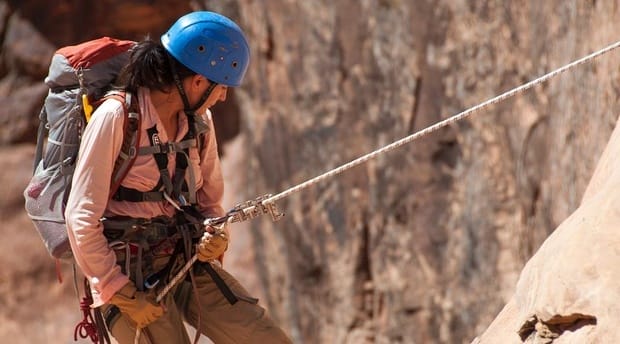
Combine rivers reflecting the sunrise, crashing waterfalls, and an animal-populated wilderness, for an unforgettable active holiday in Zambia. To follow nature’s path on foot is an experience as special as the diverse landscape you’ll explore. You’ll be mesmerized by the slower pace of life that flows in line with the rise and fall of the great Zambezi River, and awestruck by the raging rapids of Victoria Falls.
White-water River Rafting in Zambia
Batoka Gorge is considered to be one of the best stretches of commercially run river in the world and provides one of the most intense sensory thrills fathomable. It has twenty-three whitewater rapids and striking scenery deep within the sheer black cliffs, which afford the adrenaline junkie a wild roller-coaster ride along a route carved over millennia by the Great Zambezi.
From March to July, only the last 13 rapids can be attempted when the river is high. From June to February, all 23 are navigable as the water subsides.
Abseiling on a Zambia vacation
Expert tour operators ensure a safe and highly enjoyable experience for clients. On reaching the base of the gorge, you can walk out or be hauled back up. The walk back up has been designed as an integral part of the day’s activities. A gentle slope with plenty of rest stops has been chosen. It’s a pretty walk, especially when all the trees are in leaf during the wetter summer season from November to March.
Gorge Swinging on a Zambia Safari
These activities are operated on a spectacular site above rapid number 7. You will freefall for about 50 meters before swinging out into the middle of the gorge.
After several pendulum swings, you’ll be lowered to the ground, where you can take a track back up to the top of the gorge. This can also be done as a tandem.
For a true adventure, a self-drive 4×4 safari through Zambia is guaranteed to thrill. It’s best done well into the dry season (mid-June to October), when tracks inside the national parks are at their driest, and there’s less chance of getting stuck. Even then, thorough preparation, good backup (minimum two vehicles), and some previous African 4×4 experience are essential.
Zambia is one of Southern Africa’s most challenging off-road destinations, and you’ll need to be entirely self-sufficient. Essentials include a good map, a GPS with up-to-date software (Tracks4Africa is best), vehicle-recovery equipment, spare tires, a compressor, extra fuel, food, medical supplies, and a satellite phone for emergencies.
If you’re keen on self-driving but feel a little daunted, hop-in guides are sometimes available from camps inside Zambia’s national parks . For around $50 a day, a guide can provide both route and road advice and local wildlife and bird expertise.
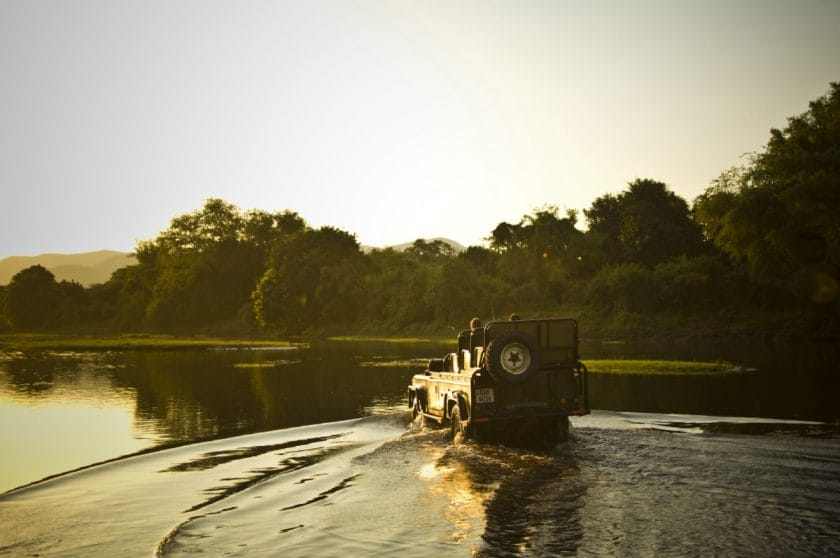
It’s a great way to heighten the experience, save time and reduce stress, especially for less-experienced drivers. For multi-day trips, guides typically bring their own tents and food. They can be hired via reputable in-country safari operators, but check availability well in advance.
The most popular, and probably the easiest, 4×4 route is up from Livingstone/Lusaka into the Luangwa Valley. The road from Lusaka is tarred (though badly potholed in places), and the network of tracks inside South Luangwa National Park is manageable, even for relatively inexperienced drivers.
Campsites for self-drivers are outside the park, so head for Mfuwe Bridge and take day trips from there. From South Luangwa, the more intrepid can head even further north and explore the network of more demanding dirt tracks that cross North Luangwa National Park. The remote wilderness, an abundance of game, and a lack of other travelers mean you’ll likely have excellent wildlife sightings entirely to yourself.
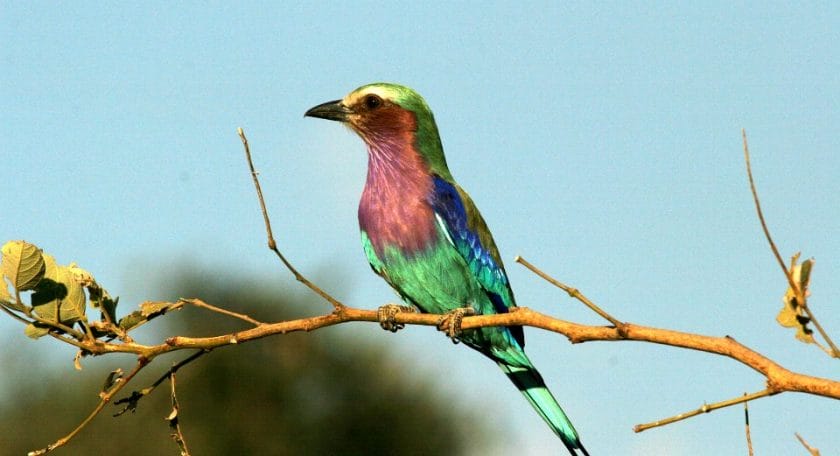
Kafue National Park is another popular option for self-drive safaris in Zambia. A tar road from Lusaka provides good access to Hook Bridge Gate, and in the dry season, the internal network of roads is extensive and very productive for spotting wildlife.
Western Zambia and the upper Zambezi River area are among the more adventurous regions for experienced drivers. New tar roads have made access to parks such as Liuwa Plain easier, but there’s still an extensive network of sandy tracks on either side of the Zambezi River that feel remote and will test your navigation skills.
A smattering of tiger fishing camps along the river with good facilities complete a truly wild experience. Some even offer multi-day river safaris up through the Barotse Floodplain to the Angolan border. For those who love being out on the water, a guided river-whacking adventure with wild camping along the Zambezi River is the kind of experience that will live on in the memory for a lifetime.
If you want to try a change from the more traditional abseiling, then you can also try rap jumping, where you descend the rock face facing the ground and keep pushing off from the rock face as you head towards the bottom of the gorge.
River Boarding in Zambia
For the more adventurous, it’s possible to experience river boarding on the great Zambezi. Armed with a body board, a wetsuit, a life jacket, helmet, and fins, you will embark on a river journey playing in the currents, charging the rapids, and surfing some of the world’s biggest freshwater standing waves.
The most notable difference between river surfing and rafting is that you are entirely responsible for managing your own vessel on the river. Instructors teach and guide you, but in the end, it’s you taking on the rapids.
Zambia is the ideal destination for a birding safari – one of the rarest birds in Africa, the Shoebill, is found there. Zambia is a hot birding location with over 700 species found throughout the diverse ecosystems. One of the best times for birding safaris in Zambia is just before the summer rains arrive, when the arrival of many migrant species increases the local population.
Most of the avifauna is found on the Central African Plateau as this region has a diversity of ecosystems. Several hotspots include Bangweulu Swamps, Lochinvar National Park, the South Luangwa National Park, and Kafue. Another great spot with a dam that attracts a wide array of species is the Chimfunshi Wildlife Orphanage .
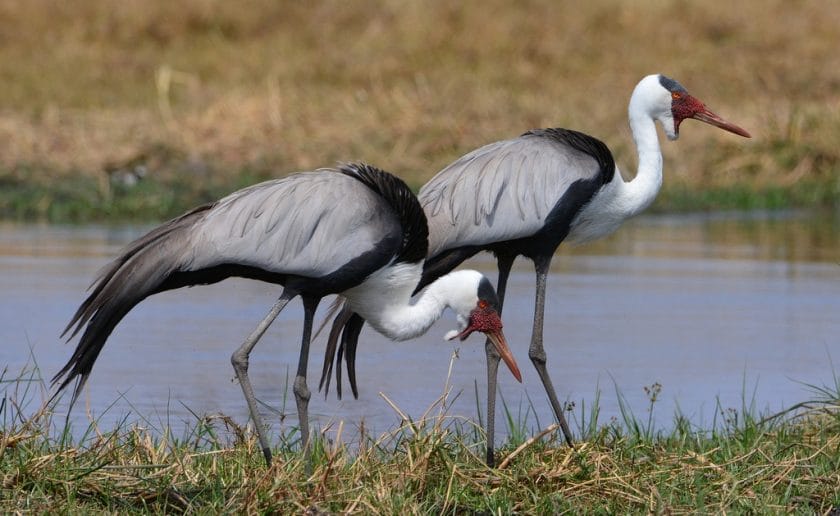
A canoeing safari offers a unique way to spot birds on safari in Zambia . Drift down the river with binoculars and a checklist in hand. Expect lots of excellent game sightings too. Choose from a tranquil upper Zambezi cruise just above Victoria Falls, or paddle down the lower Zambezi with game parks close by for a wilder adventure.
Lochinvar National Park is a small 450km2 (173 square mile) game park on the Kafue floodplains with 428 known species. Most game lodges in Zambia have expert guides who are skilled bird spotters and will be happy to take you on walks or drives through the bush.
Lochinvar National Park for Bird-watching in Zambia
The Lochinvar National Park is one of the best places in the world to see water birds in significant concentrations. Thousands arrive during the summer months when the rains occur. Although the park is accessible, there are no serviced campsites, so you need to be completely self-reliant.
It’s a great place to see the endangered Wattle Crane, Greater and Lesser Flamingos, and watch the daring acrobatics of the African Skimmers. There are numerous duck species, including the Whistling Duck and Fulvous duck. Additionally, there are many species of waders to delight as well.
It’s not just waterfowl that birders can look forward to, as the park is home to over 50 species of raptors, including Black Sparrow hawks and Peregrine falcons. Keep an eye open for the Narina Trogon and yellow-throated Sandgrouse.
South Luangwa National Park for bird-watching in Zambia
Perhaps a more accessible region for excellent birding safaris in Zambia is the South Luangwa National Park, home to around 400 of the 732 species found in Zambia. Birding here is at its best at the end of the dry season when the lagoons begin to recede. The best time to visit is during the wet season in summer, between November and March.
Zambia is an incredible country to photograph, with its stunning wilderness landscapes, superb birdlife, and some of the best opportunities for up-close wildlife interactions in Africa. Every corner of the country has something to offer, but two experiences, in particular, stand out.
In late winter, ideally just before the rains begin in November, keen photographers should head to Liuwa Plain National Park, where tens of thousands of Blue wildebeest gather in the second-largest wildebeest migration in Africa (after the Serengeti).
Then, for something truly unique, try a wet season photographic safari in Zambia to the Luangwa Valley and explore the swollen Luangwa floodplain by boat, drifting across the mirror-like waters through a dreamscape wilderness of half-submerged trees.

Of these two photographic safari options , Liuwa Plain is perhaps the trickier to undertake. If you’re self-driving, then some prior 4×4 experience is essential, and it’s best to travel in convoy, especially if you’re going for the wildebeest migration, which coincides so closely with the onset of the summer rains.
It’s difficult to time the journey precisely, and if the rains begin early, local rivers can flood quickly, turning roads to mud and making driving near impossible. Unless you’re experienced, joining an organized tour for photographic safaris in Zambia is best. Dedicated Zambia photographic safaris are available, specifically aimed at capturing the wildebeest.
There’s also a single high-end luxury lodge in Liuwa Plain National Park where guests can fly in and photograph the region on private game drives. Liuwa Plain is a fantastic birding destination year-round, but the coming rains signal the return of migrant species, and the wet season is the best time to photograph them in their breeding plumage.
Just about every kind of holiday in Zambia is intrinsically relaxing – there’s something especially rejuvenating about spending time in such wild, pristine wilderness. That said, there’s perhaps nothing more quintessentially relaxing than a fishing holiday, and a fishing holiday on a fully-catered houseboat is hard to beat.
Whether to fish or not is entirely up to you, of course. You could just as easily sip cocktails on the deck, watching the fish eagles fish instead, in between more drinks and naps. Lake Kariba is a beautiful place to unwind like this, and the sleepy town of Siavonga is where most of Zambia’s houseboat fleet is based.
Many of Lake Kariba’s houseboats operate from the Zimbabwean side – Kariba town is the focal point for houseboat adventures. The lake is enormous enough to accommodate hundreds of vessels without feeling crowded, but the Zambian side is the least busy, with even less chance of seeing other boats as you cruise.
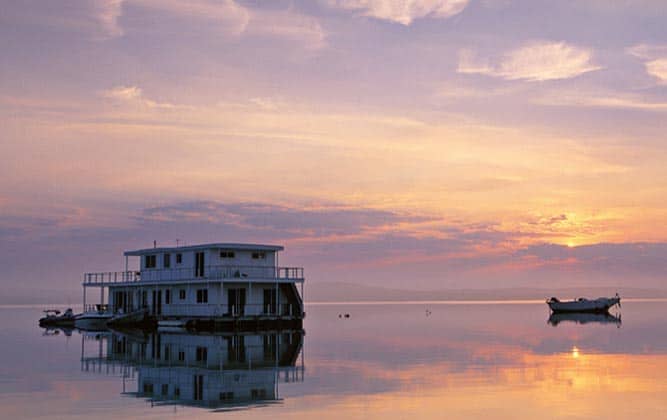
On multi-day voyages, you’ll explore the lake’s many inlets, then drift out towards the center to take in the vast scale. Hippos and crocodiles are common along the lake shore, but they rarely venture out to disturb the deeper waters.
Smaller launches can be towed behind the main houseboat allowing anglers to search out fishing spots more easily. There’s good fishing on Lake Kariba throughout the year, but locals say that months containing the letter ‘r’ are best for tigerfish.
September and October are perfect for tigers, and the season continues throughout the summer months when fishing on Zambia’s rivers is banned. Most operators will provide fishing gear and bait, but you’ll need to check carefully when booking and place any orders in advance.
Houseboat holidays are ideal for larger groups, with most offering cabin berths for between 10 and 30 people. They always come fully crewed, and fishing guides can be arranged. Whether you’d like to self-cater or hire a chef is up to you.
Several excellent, laid-back fishing lodges are also dotted around the lake – another very tranquil option if you’re not in a group. Again, fishing is not compulsory; you can always relax by the pool or take a sunset cruise.But do try to get out on the water at some point during your stay and let some of Kariba’s magic soothe your tensions.
Zambia’s tented camps and lodges are growing in stature. They may not yet be as well-known as those in neighboring Botswana and South Africa. Still, they offer excellent value and are ideal for couples and honeymooners looking for an all-inclusive romantic break .
Zambia has a reputation for smaller, more intimate camps and lodges. These are often owner-run, with attentive, friendly guides and staff who are supremely knowledgeable about the local fauna and flora and extremely accommodating to guests.
Many of Zambia’s best intimate lodges are also situated in the most pristine corners of the country. These stunning, hard-to-reach wildlife areas are often empty of other visitors, with no access for day trippers and no other camps or lodges for miles around.
Spending time in the such magnificent, unspoiled wilderness is a romantic experience that feels like a dream. Think of elephants sauntering past your flung-back chalet windows and outdoor sunset baths overlooking the African plains. Of course, it’s also the sort of experience that comes at a price – expect to pay anything from $600 to over $1000 a person a night for the most exclusive tented camps and lodges.
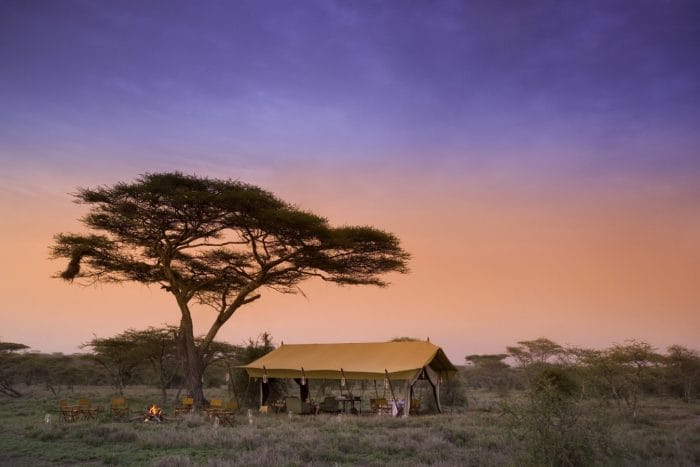
This will usually include park fees, all meals, alcoholic beverages, wildlife excursions, activities, and transfers. For an all-inclusive romantic safari in Zambia, this is very competitively priced for the region, especially considering that a safari in Zambia offers some of the best wildlife viewing in Africa.
For that once-in-a-lifetime experience with a loved one, a safari in Zambia is an underrated delight that still feels like Africa’s best-kept secret. To top it all off, include a few days at Victoria Falls – one of Africa’s great highlights and arguably the most impressive waterfall in the world .
The falls are most inspiring from March to June when the flow of water is at its greatest and vast plumes of mist and spray pour into the skies. If you live in the region, it makes an excellent spontaneous break. Local carriers offer frequent flight specials to Livingstone, and last-minute package deals, many aimed specifically at couples, are also regularly available.
Whether it’s a sunset cruise on the Zambezi River , a walk through the evergreen forests of Mosi-oa-Tunya National Park, or a helicopter flip over Victoria Falls, a romantic holiday in Zambia will not disappoint.
For a more active holiday, try a walking safari in Zambia. Zambia is arguably the best country in Africa for guided game walks and is widely recognized for its enthusiastic and highly knowledgeable field guides.
Now widespread throughout southern Africa’s major parks, the concept was first introduced in the Luangwa Valley, which remains the county’s top walking safari destination . Luangwa’s walking safaris are small-scale and extremely popular. So popular, in fact, that some trails book out far in advance. You’ll need to start planning up to two years ahead if you want to experience the best trails in peak season.
Walking safaris come in various forms, the most strenuous being multi-day mobile safaris, where you’ll hike from temporary camp to temporary camp, covering eight to 12km each day. The pace is generally slow and steady, with plenty of breaks to appreciate the surroundings.
It’s far more active than sitting in a vehicle, but the idea is to take things slowly and really get closer to nature. Zambia’s safari guides will turn every tiny detail into a captivating story – from the barest hint of an animal’s paw print to the tiny flowers and insects buzzing by.
Encountering predators on foot is extremely rare, but there’s a huge thrill just knowing they’re around. There’s always some danger with being out in such wild country on foot, but with such experienced guides, the risks are very low.
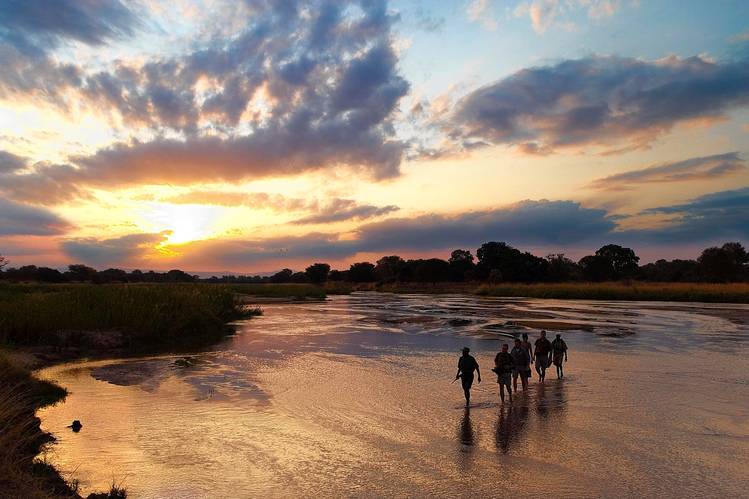
North and South Luangwa, the Lower Zambezi, and Kafue National Parks offer excellent walking safaris , and June to September is the best time to go. October is prime game-viewing season, but it can be too hot for comfortable walking, except perhaps in the very early morning.
If you like the idea of a walking safari, but not a multi-day hike, then shorter day and half-day excursions are also available (in fact, they’re the norm). These are often the highlight of any safari in Zambia – definitely not to be missed if the opportunity arises!
Consider a guided canoe safari on the lower Zambezi River for an even wilder active holiday. Again, half and full-day options are available from most camps in the region, or you can paddle the entire length of the Lower Zambezi National Park, finishing up on the Mozambique border.
As with the multi-day walking safaris, these canoe safaris are not meant to be overly strenuous. If a headwind kicks up, it can be heavy going, but the route is always run downstream and not intended to be a workout.
Again, there are risks involved, this time mostly from grumpy hippos. It’s one for the more adventurous as you’ll be carrying your gear and camping wild along the riverbank each night. This is one of Africa’s wildest stretches of river, and big game sightings are virtually guaranteed.
Who is Travelling to Zambia with you?
- Couple Holiday in Zambia
- Family Safari in Zambia
- Solo Holiday in Zambia
Because of its relatively late start in the global safari market, Zambia is perfectly positioned to offer couples the kind of unique experiences that its neighbors cannot. Many of its lodges, hotels and tented camps are small, intimate, and owner-run, which means there is healthy competition and a real commitment to giving guests a once-in-a-lifetime, truly memorable experience.
Finding the best region for a couples holiday in Zambia depends mainly on your budget. For remote exclusivity, wildlife destinations such as Liuwa Plain National Park on the Barotse Floodplain and South Luangwa National Park in the Luangwa Valley offer the kind of all-inclusive, fly-in Zambia safaris befitting a Hollywood-style honeymoon.
Generally, the more central parks, such as Kafue National Park and Lower Zambezi National Park, have a broader range of accommodations to suit couples looking for a more affordable break. Then there are the Upper and Lower Zambezi valleys, where close proximity to airports in Livingstone and Lusaka make destinations such as Victoria Falls and Lake Kariba great for couples and honeymooners looking for a short holiday.
Highlights of a couple of safaris in Zambia
For couples who love wildlife holidays, Zambia offers something genuinely unique. Towards the end of the rainy season, as the rivers swell to bursting and turn much of the landscape into inaccessible wetlands, a handful of lodges remain open, offering guests the chance to fly in and experience a safari by boat.
Certain lodges in Liuwa Plain and South Luangwa National Park are best known for these ‘Emerald Season’ experiences. Floating through extraordinary scenes of submerged trees beneath dense, green canopies alive with birds makes for a romantic safari vacation unrivaled anywhere else in the world.
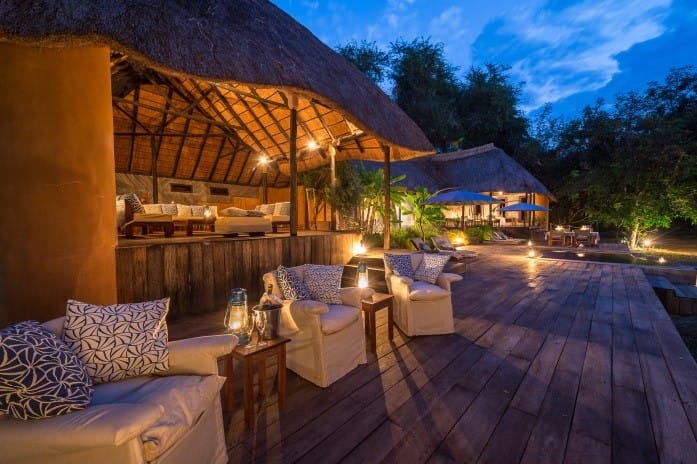
More affordable safaris and some of the best dry-season game viewing in Zambia can be found inside the Lower Zambezi National Park, where 4×4 self-drive travelers are welcome, and the scope of accommodation includes budget lodges, luxury tented camps, and campsites.
Of course, no couples’ holiday is complete without a visit to Victoria Falls . The go-to African destination for romance has it all – sunset cruises on the Zambezi River, the wild rush of water over Mosi-oa-Tunya’s misty walkways, and a range of all-inclusive holiday packages for a wide range of budgets.
Travel Tips for a couple safaris in Zambia
- Because Zambia’s lodges, hotels, and tented camps are usually smaller and more intimate than those of its neighbors, they also tend to get booked up quicker. Book at least six months in advance to avoid disappointment, and a year in advance if possible.
- Ensure you have up-to-date health and travel insurance and vaccination certificates. Guests should consider their choice of clothing too.
- Revealing items, such as very short shorts and short skirts, can offend and are generally frowned upon.
- Homosexuality is illegal in Zambia, and public displays of affection (whether same-sex or heterosexual) may also cause tension. However, it should be noted that these attitudes are more relaxed within the confines of lodges and hotels.
- While rates are generally given as per person sharing, some lodges will offer special couples’ rates for extended stays. It’s important to ask whether these include Zambia’s compulsory bed levy, which is from $10 a person a day and can add up quickly if not included in the price.
The last decade has seen a marked rise in family-friendly safaris in Zambia, with reduced prices for children and more activities geared towards kids and young adults. Not all lodges allow children, and some have age restrictions of eight or 12. Families, especially those with very young children, can find excellent value and flexibility in Zambia’s growing selection of exclusive-use safari houses.
These can be found throughout the country, especially in the prime wildlife regions around the Lower Zambezi and South Luangwa National Parks. The upper Zambezi Valley – Livingstone, Victoria Falls, and surrounds – is also well-suited for a family holiday. Several tour operators, lodges, and hotels have facilities and itineraries that cater to all ages.
As Zambia’s tourism hub, Livingstone has a variety of half-day and day tours with relatively short transit times that give families some flexibility when choosing what to do each day. Zambia’s major parks offer excellent wildlife and nature, so choose a destination based on a lodge or hotel’s family policy rather than focusing on a specific region. The Lower Zambezi and Luangwa Valley offer the broadest range of family-friendly safari accommodations , from low-key camps and private houses to high-end luxury lodges.
Highlights of a family-friendly safari in Zambia
Zambia has excellent potential for a memorable family holiday for families with teenagers (and older). Whitewater rafting down the Zambezi River, bungee jumping from Victoria Falls Bridge, and abseiling into the Bakota Gorge are activities where bragging rights and family bonding are guaranteed.
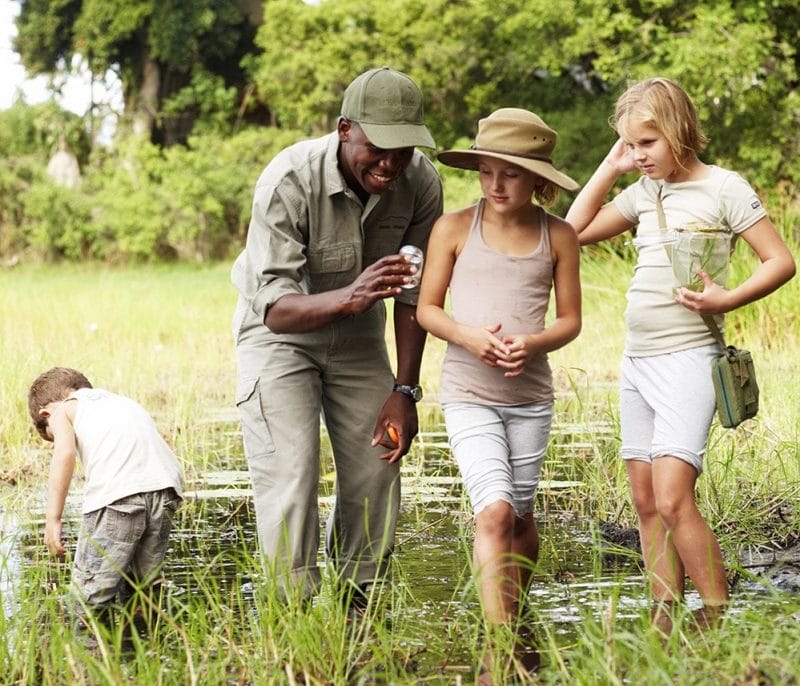
For the younger ones, a half-day tour of Victoria Falls or a visit to the Victoria Falls Snake Park or Crocodile Ranch tops the list of highlights in and around Livingstone. Zambia also boasts some of the best walking safaris in Africa . In fact, it’s in the Luangwa Valley where the concept of walking safaris first began. Zambia’s award-winning guides undergo rigorous testing, and many are specifically trained to guide young adults.
Walking through the bush with some of the world’s best safari guides can be the perfect recreation for inquiring young minds. However, it should be noted that national parks do not allow children under 12 to join a walking (or canoeing) safari. Various camps also impose higher age limits, so you must check with your hotel, lodge, or tented camp operator before you book.
Travel Tips for a family-friendly safari in Zambia
- Ensure that your family’s immunizations are up to date, especially those for measles, mumps, rubella (MMR), tetanus, polio, diphtheria, hepatitis A and typhoid. Immunization against rabies, hepatitis B, and TB are also recommended.
- Zambia is a malaria area, so you’ll need to consult your doctor on the available prophylaxis options for children.
- Note that some lodges that allow families also insist that those traveling with children (under eight mostly) should reserve a private vehicle and/or guide for game drives.
- Make sure you’re clear on all aspects of your accommodation’s family policy before you make a booking.
- Although it may not be the most prolific period for wildlife sightings, families should also consider visiting Zambia for safari in the shoulder- or off-seasons – April, May, and November. Lodges are generally quieter then and thus often more amenable to hosting younger children. Rates are also lower out of season, and family discounts are more frequently available.
As Zambia’s road and transport infrastructure continues to develop, even its more remote regions will become exciting options for solo holidays in Zambia. For the time being, however, the country’s more isolated corners are best explored in company, ideally with an extra vehicle as a backup if you’re planning to self-drive.
In general, solo travelers in Zambia will have the best experience by basing themselves in more populated regions with good infrastructure, a host of established tour operators, and a community of fellow travelers to meet and team up with.
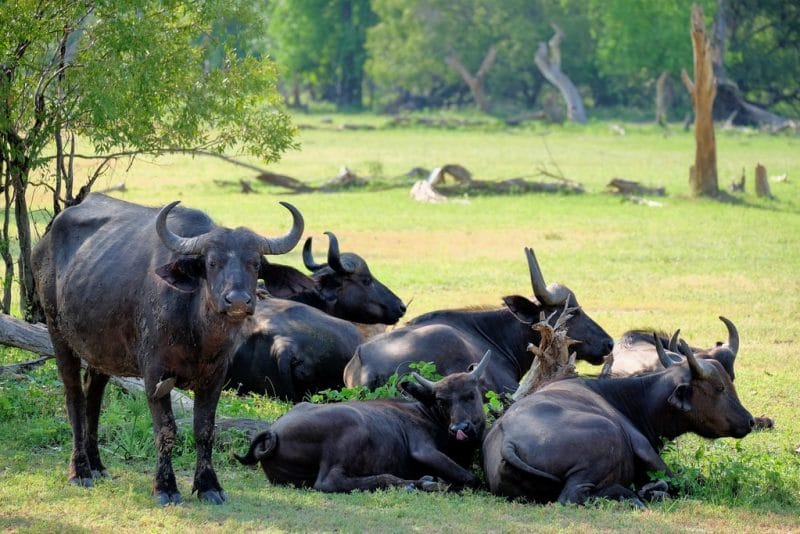
Livingstone delivers best on all of these. Its proximity to Victoria Falls, Mosi-oa-Tunya National Park, Kafue National Park, and even Lake Kariba means that a holiday centered in Zambia’s southernmost town is still the best option for those going it alone.
Lusaka, Zambia’s capital, is the other good alternative. Many group tours start in Lusaka, and you’ll find several trusted operators offering safaris and adventure holidays in the country’s central and northern regions, especially to Lower Zambezi National Park, Lake Kariba, and South Luangwa National Park.
Highlights of a solo safari in Zambia
Visiting Victoria Falls itself is a must. The walkways through Mosi-oa-Tunya National Park, which borders the falls and the stretch of the Zambezi River above them, are safe, fun, and easy to navigate alone.
Further options for solo travelers include a sunset cruise, kayaking, the famous Victoria Falls bungee jump, white-water rafting, or tiger fishing on the Zambezi River. Although the Zambezi flows through six countries, here – above Victoria Falls – is where travelers can experience Africa’s ‘River of Life’ at its finest and most spectacular.
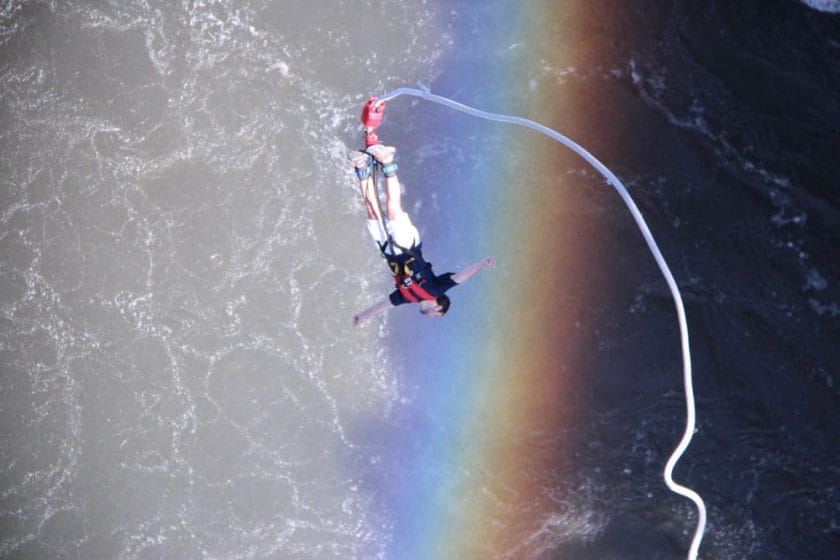
North of the falls, Kafue National Park is great for wildlife lovers and can be visited by joining a two or three-day group tour from Livingstone. More adventurous solo travelers in Zambia can head further afield to the Barotse Floodplain and Ngonye Falls on four or five-day tiger fishing safaris.
Almost equidistant from Lusaka and Livingstone, Lake Kariba is another top highlight, with everything from water sports to Big Five game viewing safaris on offer.
Travel Tips for a solo safari in Zambia
- Solo self-driving is not recommended in Zambia for safari. While the country is relatively safe and its people among the friendliest on the continent, the lack of infrastructure outside its built-up areas makes it extremely risky to travel alone.
- As a solo traveler in Zambia for safari, your safest (and indeed most affordable) option is to join one of the many group safaris offered by private tour operators. These usually start and end in Livingstone or Lusaka, and everything from budget camping to more luxurious group adventures is available. Ensure you have up-to-date health and travel insurance and vaccination certificates.
- English is widely spoken in Zambia, but learning a little about the local customs and attitudes is always appreciated. It will also help keep you from becoming a target for thieves and swindlers.
- These are not a major problem in Zambia, but be especially careful and attentive in tourist hotspots. It’s best not to walk alone at night, especially in larger towns, and to move confidently and purposefully during the day. Take particular care when drawing money and don’t carry more than you need with you on the streets.
What You Need To Know
- Why go to Zambia
- Highlights of Zambia
- Zambia vs Botswana
- Zambia vs Namibia
- Wildlife in Zambia
- Zambia Travel Advice
- Visa Requirements for Zambia
- Travelling to Zambia
- Public Transport in Zambia
- Cash and Payments in Zambia
- Is Zambia Safe?
- At Your Lodge in Zambia
- Zambia Food and Tipping Practices
- The Cultures of Zambia
- Shopping and Markets in Zambia
- Packing List for Zambia
- Vaccinations for Zambia
- Medical Emergencies in Zambia
- Healthcare System Zambia
- Travel Insurance for Zambia
- Languages in Zambia
Although not unique to Zambia, the country stands apart from others in the region because most of its lodges and bush camps are owner-run. This tends to create a more personal experience – a homely kind of service that draws people back again and again.
There are several luxury lodges in Zambia to choose from and a good selection of smaller, eco-conscious operators. These offer low-density tourism at a slight premium, but with the benefit of having the spectacular, remote wilderness almost entirely to yourself.
Private, exclusive-use houses can also be found, stunningly situated in pristine, isolated areas and complete with cooks, carers, and expert guides. These exclusive homes and many of Zambia’s private safari camps are also very often family-friendly, offering guides that have specific experience with children and young adults.
This can turn a f amily safari tour in Zambia into a fantastic learning experience for all. However, it should be noted that kids under 12 are not allowed on walking safaris in any of Zambia’s national parks.
But it’s the sheer remoteness of Zambia’s many wonderful wilderness regions that makes it such an excellent and repeatable safari destination. There are few places left in the world where such wild, solitary experiences are still possible. This, together with its quality camps, passionate guides, and rare wildlife, consistently pulls visitors back for more.
Zambia is perhaps southern Africa’s best-kept secret, although, in recent years, it’s a secret that’s increasingly being told. For a long time, Botswana and South Africa have been the region’s most popular wildlife and safari destinations . Still, Zambia is fast emerging as an excellent alternative, and indeed, for some experiences, there’s no better place to travel.
Zambia has 20 national parks of various sizes, with roughly a third of the country protected within wildlife management areas. A few of these parks, South Luangwa and Kafue in particular are considered to be some of the best places in Africa to do a walking safari , not only for their fantastic wildlife and pristine, unfenced wilderness but especially for the quality of their guides.
Zambian field guides are recognized as some of the most enthusiastic and knowledgeable in the world, winning guiding awards and accolades year after year. And they have plenty to be enthusiastic about as Zambia isn’t just somewhere to tick off the Big Five. For one thing, rhinos are almost non-existent in Zambia’s major parks, but more than that, it’s the rare species and remarkable migrations that make a safari holiday tour to Zambia so unique.
As the first summer rains fall in early November, thousands of Bue wildebeest congregate in Liuwa Plain National Park for Africa’s second-largest wildebeest migration (after the Serengeti). At the same time, some 850km (528mi) to the northeast, up to 10 million fruit bats can be seen swarming across the skies of Kasanka National Park, and the very rare Black lechwe antelope can be spotted in the water courses nearby.
When choosing between a Zambia Safari and Botswana Safari, it’s clear that both are incredibly protected and have outstanding wildlife and national parks. Still, each is tailored to a very different style of traveler.
Botswana is possibly the best self-drive safari destination in Southern Africa, with decent connecting roads, plentiful wildlife, plenty of inexpensive campsites, and an effective bureaucracy that makes camp and national park bookings pretty simple with a bit of practice.
A Botswana Safari can also be considered one of the most luxurious safari destinations in Africa , with many first-rate luxury lodges, most especially in and around the Okavango Delta. Though a Botswana safari caters to both confident self-drive 4×4 explorers and well-heeled safari-goers, quality mid-range and more affordable luxury accommodation can be difficult to come by.
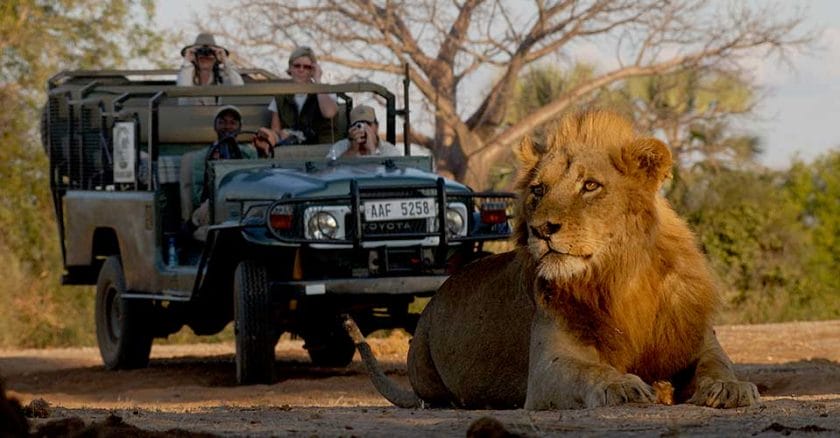
When comparing Zambia vs. Botswana in this category, a Zambia safari has much more to offer, with outstanding luxury experiences that are often half the price of comparable lodges in Botswana and private, exclusive-use houses and smaller eco-lodges that provide great value, especially for families and larger groups. Zambia’s poorer-quality highways and more difficult-to-access wilderness areas make self-drive travelers’ lives much more difficult. Many who accept the conditions are rewarded with some of Africa’s finest nature and desert views, but self-drive visitors are few and far between.
When comparing Zambia vs. Botswana, this low-density exclusivity separates a Zambian safari as the perfect location for a luxury safari experience that won’t break the bank.
But it’s Zambia’s two ‘most unique’ attractions that are also its most famous. Both are shared along the border with Zimbabwe, and both are the biggest of their kind in the world. In full flood, Victoria Falls boasts Earth’s largest sheet of falling water, and downstream, Lake Kariba is the world’s largest man-made dam by volume.
Both offer superb adventurous and more sedate activities as well, from white water rafting, bungee jumping, and skydiving to canoe safaris, fishing, and houseboat cruises .
Zambia and Namibia are two of Southern Africa’s best safari destinations, but in many ways, they couldn’t be more different. Both have vast, isolated wilderness areas where intrepid travelers can find themselves entirely alone.
But where Zambia offers a more traditional safari experience of lush, sprawling parks and abundant wildlife, Namibia is far more desolate, with breathtaking desert views and wildlife confined to a few key areas.
Both Zambia and Namibia have excellent luxury lodges and cater very well to high-end travelers. If you’re on a budget, however, a safari in Namibia is more affordable, mainly because of its more developed road and camping infrastructure, which makes self-drive holidays easier.
Driving in Zambia can be challenging, especially during the summer rains when many roads become impassable. This keeps visitor numbers low, even in the best wildlife viewing areas, an ideal setting for Zambia’s smaller, owner-run bush camps, which can offer exclusive wildlife experiences at excellent value for money.
Namibia is perfect if you love the thought of being completely independent, adore isolation and stunning views, and are more focused on the wilderness than the wildlife. A safari in Zambia, however, has some of the best game viewing and guided safaris in Southern Africa, a chance to see rare and iconic species far from any crowds, and the opportunity for action and adventure on the Zambezi River – a flight over Victoria Falls or a cruise on Lake Kariba.
Technically, Zambia has all the Big Five, but rhinos are extremely rare and confined to the Mosi-oa-Tunya (Victoria Falls) and North Luangwa National Parks. Elephants, buffalo, and lions are common across multiple parks, however, and Kafue, South Luangwa, and the Lower Zambezi are all well-known for leopards.
Look beyond the Big Five, and you’ll find Zambia full of fascinating rare and endemic species such as Black lechwe, Crawshay’s zebra, and Thornicroft’s giraffe. Liuwa Plain National Park hosts Africa’s second-largest wildebeest migration in November each year, and Kasanka National Park’s 10 million fruit bats take to the skies from October to December.
Zambia is one of the wettest countries in southern Africa, and the rivers and lakes offer excellent fishing alongside thriving populations of hippos and crocodiles. The Zambezi River is famous for its tigerfish, and numerous fishing lodges can be found throughout its length.
May to October is the best time for wildlife viewing when the weather is drier and the vegetation is at its thinnest. This makes the animals easier to spot, and the lower winter temperatures are also more pleasant.
By mid-October, however, it’s already getting scorching, and when the rains arrive in November, they can make the roads in the more isolated regions completely impassable. For this reason, many camps close their operations completely between December and March, with April, May and November considered the lower-rate shoulder season.
There are so many ways to experience a safari holiday in Zambia that an entire book would be required for an exhaustive pre-holiday checklist. If you’re on an all-inclusive fly-in safari, for example, then just about every need will be thoroughly taken care of, from food to flight transfers to emergency evacuation services.
Not so at all if you’re planning a self-drive safari. Zambia is perhaps the most challenging country to self-drive in southern Africa and should only be considered if you have prior 4×4 experience.
There is, however, some information that pertains to all visitors. Travel documents (passports and immunizations) must be up-to-date, and travel insurance is essential and required for entry into the country (you can also buy it at the border).
Besides the usual narcotics, explosives, and pornography, palm tree products and henna are also banned. Electronic items should be listed (with serial numbers) and declared upon entry. It’s a rarely enforced regulation, but a spot check could create unnecessary problems and delays.
While drunk without trouble by locals, tap water tends to upset travelers’ stomachs, so it’s best to buy bottled water to be safe. Very importantly, Zambia’s top lodges and destinations fill up quickly, especially in peak season.
Book well in advance to avoid disappointment (up to two years in some cases). Generally, it’s always best to get up-to-date information from your hotel or lodge a few weeks before travel.
Visa Requirements For Zambia
Zambia’s visa regulations are relatively complex and change regularly, but broadly speaking, there are three main categories. Firstly, those who are exempt from needing a visa at all (South African citizens, for example), then those who can purchase a visa on arrival, and finally, those nationals who need to apply for and obtain a visa before they travel.
North American and most European nationals fall into the second group and can purchase a $50 single entry or $80 double entry visa on arrival. Both are valid for 90 days, but the double entry can be used twice within that period.
In the past, this was particularly useful for a trip to the Zimbabwean side of Victoria Falls, but after being introduced, then canceled, and now apparently reinstated, the KAZA Univisa is now best for that purpose.
Available on arrival at the Livingstone and Kazungula border posts and at Livingstone and Lusaka airports, the KAZA allows multiple access between Zambia and Zimbabwe (as well as day trips into Botswana). It costs $50 and is valid for 30 days.
All visitors requiring a visa will need to provide details of their stay in Zambia (lodge or hotel name, booking dates, and telephone numbers) and produce a valid passport with no fewer than six months before expiry. You’ll also need at least three blank pages.
Zambia is best accessed via its two major airports – Kenneth Kaunda International Airport in Lusaka and Harry Mwaanga International Airport in Livingstone. There are also several land border posts with neighboring countries: Botswana, Malawi, Mozambique, Namibia, and Zimbabwe.
Travelers arriving by vehicle will likely cross at one of the three most popular land borders: Kazangula from Botswana, Victoria Falls Bridge from Zimbabwe, or Katima Mulilo from Namibia.
These points of entry are all on well-established routes that connect Zambia to other major safari destinations in southern Africa. They can be a bit chaotic, especially at the border with Zimbabwe, although day-trippers at Victoria Falls are usually processed quickly.
The Kazangula border used to involve a ferry across the Zambezi River, and depending on how busy it was, the process could take all day. A new bridge opened in 2020 and has drastically speed up the process.
Flying to Zambia is easy, though not cheap, with good international deals usually available to Johannesburg, Dubai, Addis Ababa, or Windhoek, then relatively expensive connecting flights from there. Flights from Europe are significantly cheaper than the Americas and usually have shorter layovers. More affordable flights can have very long connections. Expect to pay anything from $800 from Europe and $1200 from North America and up to twice that for minimum travel times.
These points of entry are all on well-established routes that connect Zambia to other major safari destinations in Southern Africa . They can be a bit chaotic, especially at the border with Zimbabwe, although day-trippers at Victoria Falls are usually processed quickly.
Flying to Zambia is easy, though not cheap, with good international deals usually available to Johannesburg, Dubai, Addis Ababa, or Windhoek, then relatively expensive connecting flights from there.
Flights from Europe are significantly cheaper than the Americas and usually have shorter layovers. More affordable flights can have very long connections. Expect to pay anything from $800 from Europe and $1200 from North America and up to twice that for minimum travel times.
The currency in Zambia is the Kwacha (K). Official regulations state that all payments within the country must be made in kwacha, but US dollars are widely accepted by many of the larger hotels, lodges and tour operators. Indeed, prices for visas at the border, import taxes, and national park fees are all quoted in US dollars, which confuses the matter even more.
If you’re on an all-inclusive Zambia safari holiday most expenses will be taken care of anyway, and any tips or sundries can be paid for in dollars. If you’re self-driving, then carry enough cash in both currencies. Purchasing fuel is almost always a cash-only transaction, and often only payable in kwacha.
Credit and debit cards (Visa more so than MasterCard) are accepted at prominent stores, major supermarkets and large hotels, although these facilities become significantly less common when you leave Lusaka and Livingstone.
Similarly, ATMs are widespread in urban centers but increasingly less frequent (and less reliable) in the country’s interior. Very few places accept travelers’ cheques or American Express, so it’s best to avoid those two options entirely.
As with most African countries, cash is king, and if you’re carrying US dollars, smaller denominations are preferable ($1, $5, $10, and $20 bills). Larger notes are the most commonly forged, and, as a result, vendors are suspicious of them.
Be sure to inform your bank of your travel plans so that your card is not blocked due to suspected fraud. If you’re bringing cash into Zambia, any amount over $5000 must be declared on arrival.
On the whole, Zambia is a safe country, and locals are generally very welcoming and friendly toward visitors. That said, it’s still very poor, and there’s a moderate risk of pick-pocketing and opportunistic theft in busy urban areas.
You can minimize the risks to almost zero with a few simple precautions and some local knowledge. Violent crime is extremely unlikely, and if you’re on an all-inclusive safari, staying in lodges and hotels, then you have no cause for concern.
- If you are on the streets, especially in busy, touristy areas such as around Victoria Falls, follow these general rules to avoid becoming an obvious target:
- Don’t carry expensive items out in the open (cameras, mobile phones, etc.), and avoid excessive, flashy jewelry.
- If you’re carrying cash, keep a small, daily amount separate. Don’t pull out your entire wad of notes for every small payment.
- Avoid walking alone in touristy areas, and never walk alone at night
- Move with confidence, and don’t act lost – even if you are! Head for somewhere that looks reputable and ask for directions
- If you have a vehicle, don’t leave valuables visible on the seats, and don’t leave it unattended at all if you have equipment strapped to the outside.
- Don’t park at night on urban streets – always find safe, secure parking when you’re within city limits.
If you find yourself a victim for any reason, the best course of action is to hand over your possessions. Contact your lodge, guide, or tour operator immediately and get their assistance and advice in reporting the matter to the police.
The lodges in Zambia are extremely accommodating of guests’ specific needs and Western customs in general. Courtesy is expected, but nothing unusual there, and beyond that, visitors will rarely notice if any cultural norms are being stretched.
Homosexuality is illegal in Zambia, although the law is rarely enforced. Most lodges won’t have any problem with same-sex guests booking a double room, but it’s worth being upfront about your requirements to avoid misunderstandings.
Official Zambian regulations stipulate that children under 12 years old may not participate in walking or canoe safaris and some lodges impose higher age restrictions for their own safety reasons. Each lodge and safari operator has specific rules for children, so be sure to check carefully with each before you book.
Less of a rule and more something to be aware of is how lodges handle the daily park fees payable to the Department of Wildlife and National Parks. Fees differ between international residents, SADC citizens, and locals. While they’re almost always incorporated into the cost of all-inclusive stays, they may be charged as an additional expense for those arriving in their own vehicle.
If you’re flying directly into a lodge on a transfer, it’s important to note that most chartered flights have a maximum luggage allowance. 12kg per person is the standard limit, and for light aircraft flights, only soft bags are allowed. Soft bags are essential because of the small packing space available. A large, tough, dustproof duffle bag usually works very well.
Basic rules for game drives follow the same standards as the rest of Africa – don’t get out of the vehicle unless instructed, and don’t disturb the animals. Your guide will thoroughly explain specific lodge or safari rules. They’re never draconian and always have guest safety in mind.
Zambia’s lodges serve excellent Western-style food, with a few local delicacies thrown in for the adventurous. Meats include local game, beef, chicken, and freshwater fish along with rice, potatoes, salad, fruit, and vegetables.
Outside the camps and lodges, Zambia’s staple food is nshima – a thick maize-based starch most often served with red meat, chicken, or fish and accompanied with a side of relish. You’ll find it in most smaller restaurants, and it’s delicious. Definitely worth trying at least once.
Tipping is not compulsory but always appreciated. Although when and how to do so can be tricky. At a local eatery, it’s not expected, but at more upmarket restaurants, you can tip 10% for good service. Tipping guides is the norm at camps and lodges, but different establishments handle the tipping process differently.
Some expect you to tip staff directly, while others implement a tip box which is then split between all. Many camps also exclude guides and spotters from the communal tip box, assuming that guides will be tipped individually after each activity.
As with most things on a Zambia safari, asking what the policy is ahead of time is the best way to avoid misunderstandings. As a general rule, tip guides for their efforts at the end of your stay (not after each activity), and if there’s no communal tip box, then tip the camp staff separately (assuming you feel the service has been worth it!). Between $5 and $10 is generous per activity, and around the same rate per day is a good tip for the staff.
Zambia contains a rich mix of cultures with nuances and social norms that differ between regions. Practically speaking, however, there are just a handful of social conventions you need to be aware of, and a friendly attitude and a dose of deference will smooth out most faux pas.
The first thing to note is that Zambia is relatively conservative and predominantly Christian, and many views and attitudes reflect this. Homosexuality is illegal, and although it’s overlooked within the confines of most lodges, open displays of same-sex affection can theoretically land you in prison.
Even public affection between heterosexual couples is frowned upon, and revealing clothing of any kind (including shorts for men) is considered improper. Keep your clothing choices sensible and practical, and avoid camo and military fatigues. These, in particular, are not considered appropriate civilian attire.
Interactions between Zambians are unhurried and courteous. If you need assistance or are asking for directions, be sure to greet the person first. Politeness and genuine interest will get you far in Zambia. Ask how people are doing first, and don’t jump right in with questions.
In Lusaka and Livingstone, you’ll find almost everything available in western shopping centers, save perhaps for bespoke clothing brands. There are large supermarkets, pharmacies, fashion retailers, and well-known fast food outlets, and many well-stocked strip malls are also popping up along the highways.
Smaller Asian-owned corner stores sell everything from electronics to exotic spices. These are the primary source of supplies outside the urban areas and are common throughout the country.
There are also a significant number of designer curio stores near major attractions and inside the airports. These often contain items (especially carvings) imported from Kenya, Tanzania, and Zimbabwe. Favor locally made souvenirs instead, and you’ll also be contributing to the livelihood of Zambia’s home-grown carvers, weavers, and clothing-makers. Their quality of artistry is generally outstanding, and the best deals can be found in markets away from tourist attractions.
Bargaining is an innate part of the purchasing process, and paying about half the initial asking price is usually a reasonable deal. You can also purchase fresh fruits and vegetables from markets (they’re sometimes better than those found in supermarkets) but exercise caution with raw meats. These are often kept out in the open and are susceptible to the elements (and flies!).
The first thing to do when preparing for a Zambia safari is to book an appointment with a local travel clinic and go and speak to a doctor. The internet is full of African health and safety horror stories, but the risks are generally very low and/or easily manageable for safari holidays. If you’re at all concerned, speak to a professional.
They’re likely to advise you to get your immunizations up to date and will be able to prescribe appropriate anti-malarial drugs. They’ll also have the latest information on the yellow fever vaccine. Regulations are constantly changing and have relaxed somewhat in recent years.
If you have any allergies or require chronic medication, then be sure to bring it with you. If it’s anything exotic, check whether it’s legal in Zambia, or you might run into trouble at customs. Finally, ensure you have comprehensive travel insurance including complete evacuation and repatriation cover. Familiarise yourself with all the small print and the procedures to follow should the worst happen.
The most common vaccinations for Zambia are against measles, mumps and rubella (MMR), tetanus, diphtheria, polio, typhoid, and hepatitis A. Check the latest regarding the yellow fever vaccine and, if required, don’t lose the little yellow booklet that comes with it. Regulations have relaxed recently, but that yellow booklet has been something of a passport in the region.
Not having one can stop your holiday in its tracks, especially if you plan to visit other countries in southern Africa. A vaccination against rabies is also recommended, and the course lasts at least three weeks, so it can’t be left to the last minute.
The waterborne bilharzia parasite is common along Zambia’s lake shores, and although there’s no vaccine, it’s easy to test for and treat once you get back home. It’s a sensible post-holiday precaution if you’ve been canoeing or fishing on Zambian waters.
By far the most significant health risk in Zambia is malaria. Various preventive prophylaxis treatments are available; some should be taken a few weeks and others a few days before arrival. Consult your doctor or a local travel clinic well before your departure.
Many safari operators include emergency medical insurance in their rates, but this may only cover the immediate situation and exclude further treatment and/or repatriation. In any event, it’s essential to be fully insured, especially if you’re headed into Zambia’s more remote regions.
Every travel insurance policy is different, so make sure you know how yours operates. Some policies will expect you to pay upfront and seek reimbursement later, others have ties with Zambia’s private hospitals, and direct payments are possible.
Speciality Emergency Services (SES) is Zambia’s leading country-wide emergency medical support service and your best option if you need urgent assistance. They also offer short-term medical and evacuation insurance if you’re concerned with the coverage offered by your primary provider.
Zambia has very limited mobile network cover outside the major centers. Safari camps and lodges will always have a means of contacting emergency services, but a satellite phone is highly recommended if you’re self-driving to remote areas.
Zambia’s public healthcare system is very basic by first-world standards and suffers from inadequate funding and a lack of infrastructure and facilities, especially in rural areas. There are good private hospitals in Livingstone and Lusaka, and if you have any kind of medical emergency, you’ll be transferred there as soon as possible.
For very serious or ongoing treatment, patients may require evacuation to South Africa, which has the best medical facilities in the region. Treatment and evacuation costs are expensive, however, so comprehensive healthcare insurance is essential.
For less serious medical issues, pharmacies can be found in the major cities but are incredibly scarce in rural areas. Even in the cities, the range of drugs and supplies can be limited, and very few are open on Sundays. Ensure you have a comprehensive first-aid kit before traveling into remote areas.
Comprehensive medical insurance is essential for safari holidays in Zambia. It should include cover for emergency evacuation and private hospitalization within Zambia, transfers for specialist treatment in neighboring countries and, ultimately, repatriation. Make sure you’re covered for safari activities, close wildlife encounters, and any other adventure activities you plan on doing.
Walking and canoeing safaris usually require special cover. Bungee jumping and whitewater rafting almost certainly will. Before you travel, check with your insurance provider on how their claims process works. They may pay medical costs upfront or expect you to pay the initial costs and seek reimbursement later.
Familiarize yourself with the exact documents they require from hospitals and emergency services, and if you’re expected to pay initial costs, then carry a credit card with sufficient funds.
Zambia’s official language is English, but there are more than 70 different languages and dialects spoken throughout the country. Almost everyone will speak or understand some English, and most Zambians living in the urban centers speak it fluently.
Signs and official documentation are almost always in English and/or Bemba and Nyanja, the country’s two most widely spoken local languages. Bemba is spoken by more than two million Zambians and is used frequently in education and administration.
Nyanja, a Bantu language spoken by approximately one million Zambians, is also prominent in major centers, especially Lusaka and Livingstone.
Nyanja is the official language of the police and is also spoken in neighboring Zimbabwe, Malawi, and Mozambique. Tonga is spoken by about 11% of the population and is commonly used in the media.
Other major languages include Lozi (about 500,000 speakers), Tumbuka (about 400,000 speakers), Nsenga (about 300,000 speakers), Lunda (about 200,000 speakers) and Luvale (also about 200,000 speakers).
Luyana, Mambwe-Lungu, Mashi, Mbunda, Nkoya-Mbwela, Luchazi, and Nyika make up the rest of Zambia’s main languages, spoken by various groups across the country.
Registered Members of these Organizations
USEFUL LINKS
- Safari Tours
- Accommodation
- Why Book with us?
- Content Collaborations
- Safari Cost Estimator Tool
- Wildebeest Migration
- Privacy Policy
- Website Terms of Use
POPULAR COUNTRIES
- View All Countries
POPULAR DESTINATIONS
- View All Destinations
- Cape Town Holidays
- Kruger National Park
- Etosha National Park
- Chobe National Park
TRAVEL BLOGS
- Travel News Digest, 3 May: Flooding in the Maasai Mara, Turtles Rescued in Cape Town
- Addo Deploys AI Collar Tracking to Combat Rhino Poaching
- 10 Years of HerdTracker on the Ground: Unforgettable Great Migration Encounters
- Delta Expands New York Service to Boosts US-Africa Flight Connectivity
- Travel News Digest, 26 April: Namibia Adds Visa-on-Arrival in Walvis Bay, Uganda Deforestation Concerns
OUR LOCATION
2nd floor, Tygervalley Chambers One, 27 Willie van Schoor Avenue, Bellville, Cape Town , 7530
- Travel Guides Plan your adventure
- Destinations Our favourite places
- Tours Book a trip
- Travel Companies Independent specialists
- Travel Guides
- Destinations
- Travel Companies
The best safari in Zambia
An expert guide to zambia's best safari parks, camps & lodges.
Sarah Kingdom
- In this guide
South Luangwa National Park
North luangwa national park, lower zambezi national park, kafue national park, kasanka national park.
- Liuwa Plains National Park
Bangweulu Wetlands
- Mosi-oa-Tunya
- Best safaris
- Need to know
I fell in love with Zambia after my first safari, at the tender age of 15. A few years later I returned for what was initially supposed to be a six-week holiday... 30 years later, I couldn’t imagine living anywhere else.
As a travel journalist and guidebook author specialising in Zambia safari and wildlife, I’ve visited pretty much all of the country’s 21 National Parks, as well as many of its transfrontier parks, wildlife reserves, game management areas, RAMSAR wetland sites, forest reserves and Important Birding Areas.
For my money, a safari in Zambia is as good or better than anywhere else in Africa. But in a country this vast and difficult to navigate, travelling here comes with some potential pitfalls. In the following pages I’ll explain some of my best Zambia safari recommendations, as well as some of the things you should know before you book. Happy travels!
Featured Zambia Safaris
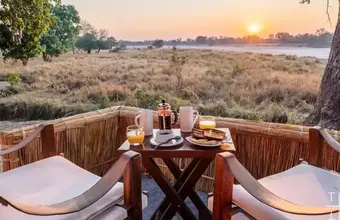
Best of Zambia Safari
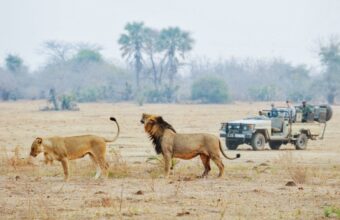
The Best Of Lower Zambezi
Four-day private safari of zambia's lower zambezi.
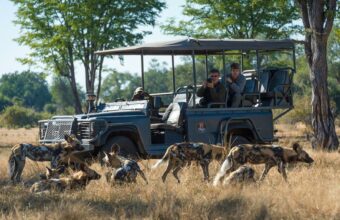
Zambia’s Premier Wildlife Safari
Wildlife safari in south luangwa national park.
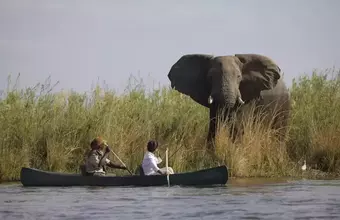
South Luangwa and Lower Zambezi Safari
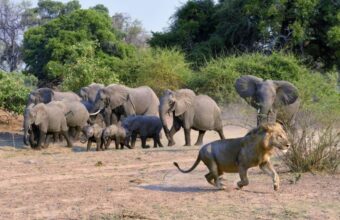
Zambia's Animal Kingdom
13 days safari in kafue national park and south luangwa national park.
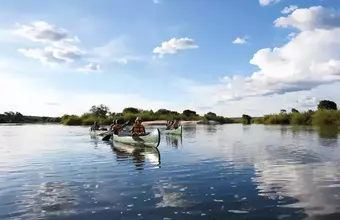
Luxury Zambia and Victoria Falls Journey
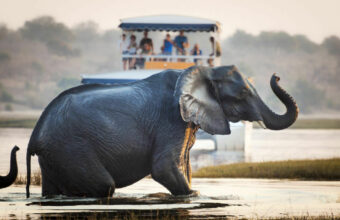
Ultimate African Taster
15 days from victoria falls to cape town.
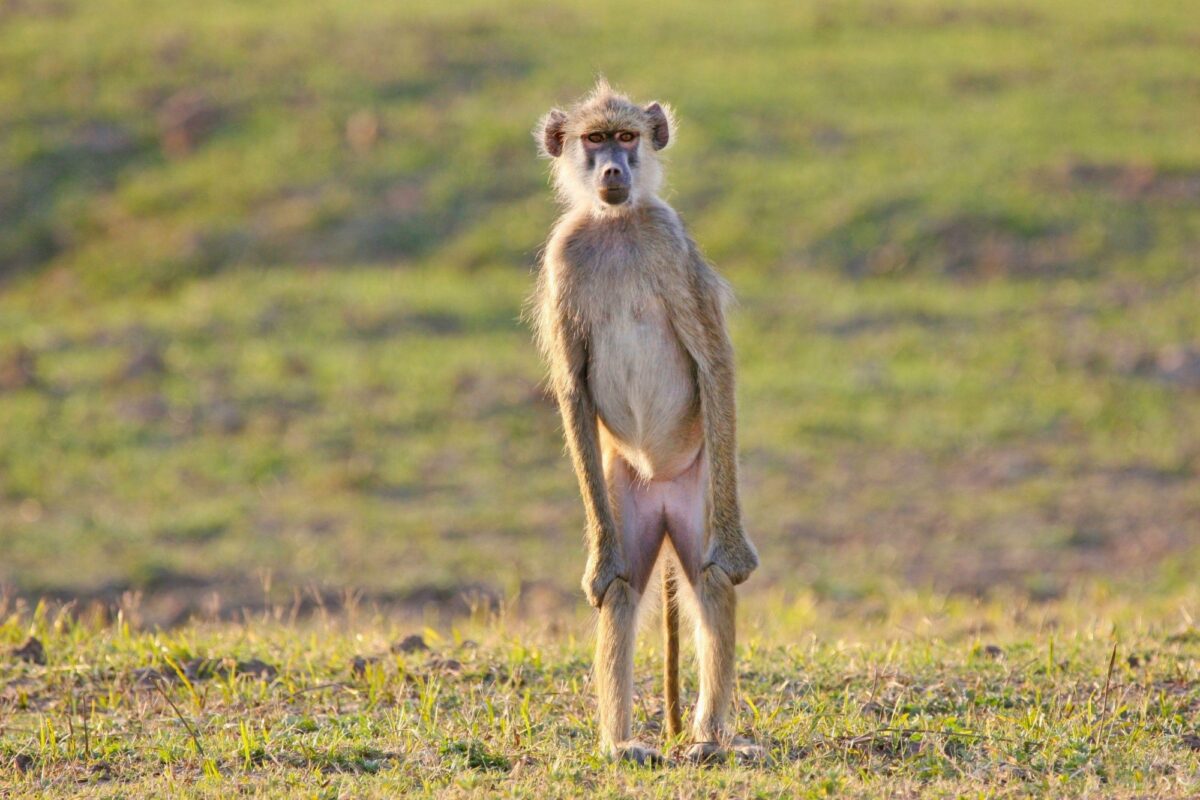
Baboon standing guard in Luangwa
Zambia's best safaris
Our experts' recommended safari parks & camps, victoria falls, mosi-oa-tunya national park, liuwa plain national park.
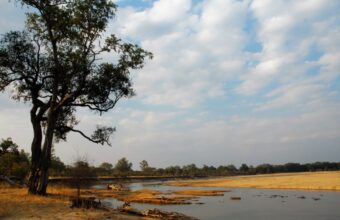
Walking safari in North Luangwa
North Luangwa is remote, hard to reach, and therefore blissfully quiet and crowd-free. A walking safari in North Luangwa is among my absolute favourite things to do anywhere in Zambia.
Game drives are not permitted in the majority of the park and access is primarily by walking safari. You’ll leave the vehicle in camp, setting out on foot each day with your guide and an armed scout, to walk among elephants, antelope, zebra and even the occasional predator, always maintaining a safe distance!
The last time I set out – always with a seasoned (and armed!) guide in the lead – we saw tracked elephants and antelope rustling in the bush.
A word of caution though: this is no armchair safari. Much patience is needed, and of course you’ll need to be reasonably fit to hike in the Zambian heat. If your idea of a safari is racing from place to place in a jeep trying to tick off all the Big Five, this one probably isn’t for you.
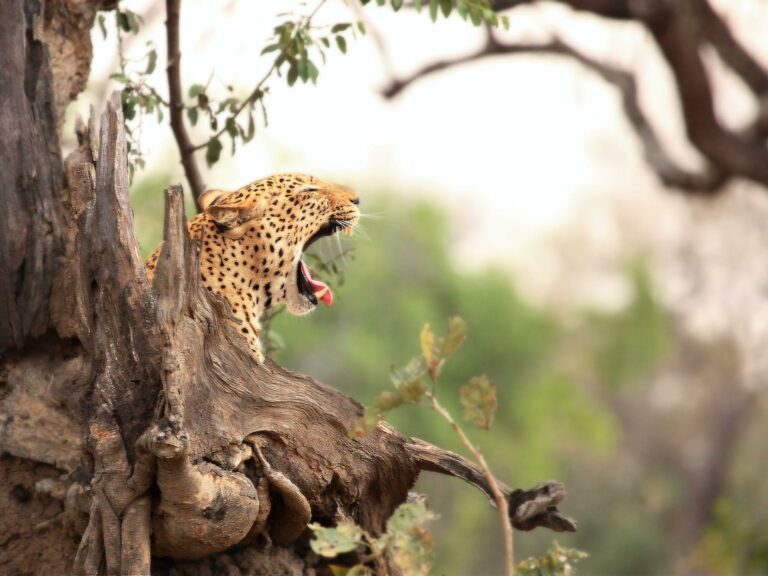
The best place for big cats
If it’s big cats you’re after, look no further than South Luangwa , nicknamed the Valley of the Leopards, with one of the densest populations of leopard anywhere. It's also home to lions and spotted hyena, along with an abundant wild dog population on team canine.
Some of my most memorable leopard encounters have happened in South Luangwa. Watching as a leopard, completely unaware of our presence, descended from a tree, only spotting us once she’d reached the ground, was an encounter to remember. Leopards love to drag their kills up into trees for safekeeping, so don’t forget to look up from time to time when you’re out on a drive.
My favourite way to see the wildlife in South Luangwa is on a walking safari. On a walking safari, you can see lions, leopards, elephants and learn about the flora of the park. It’s not all about big beasts however; a walking safari will allow you to get up close with a termite mound and learn about Zambia’s ecosystem.
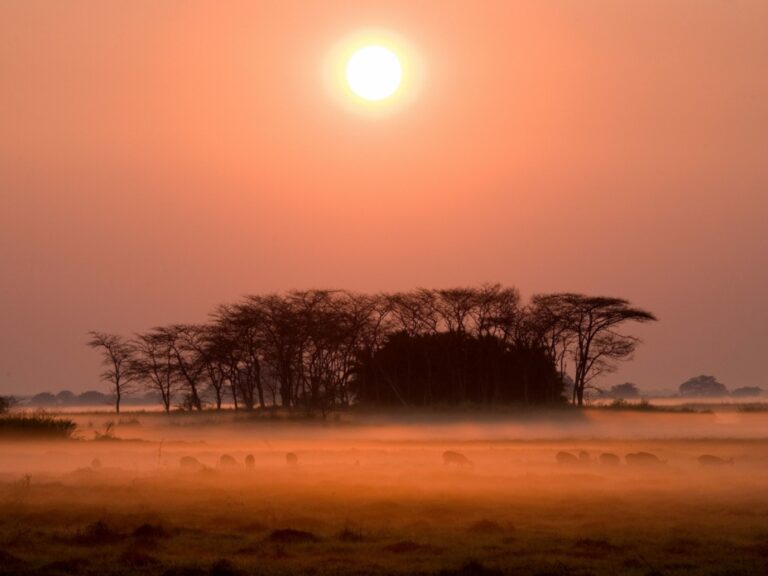
Where to see everything in one place
Often overlooked in favour of Zambia’s smaller parks, Kafue is a sleeping giant. One of Africa’s oldest and largest parks and one of its wildest, it’s a place of vast, remote landscapes, spectacular rivers, open plains, woodlands and stunning scenery.
If you want to avoid too much domestic flying, Kafue National Park has everything you could want. You can spend at least a week here travelling from camp to camp.
This is the only park in Zambia where I have been lucky enough to see both aardvark and pangolin – two very rare safari sightings!
The Busanga Plains to the far north of the park are one of Kafue’s highlights. Accessible only during the dry season, I love heading out onto the plains early in the morning, to see puku and red lechwe, in their hundreds, visible in the early morning mist that cloaks the plain just before sunrise.
Equally special, but seldom visited are the Nanzhila Plains in the park’s south. This is a superb place for bird watchers. For me, the star of Nanzhila is the beautiful black-cheeked lovebirds, endemic to Zambia and only found in a small area in the southwest of the country. If you have the time and an accommodating safari operator, try to include both the far north and the far south of Kafue into your trip.
While Kafue doesn’t have the huge herds of game that can be found in some other Zambia safari parks, what it lacks in density it more than makes up for in diversity. There are at least 161 species of mammal, six cat species, and 22 species of antelope.
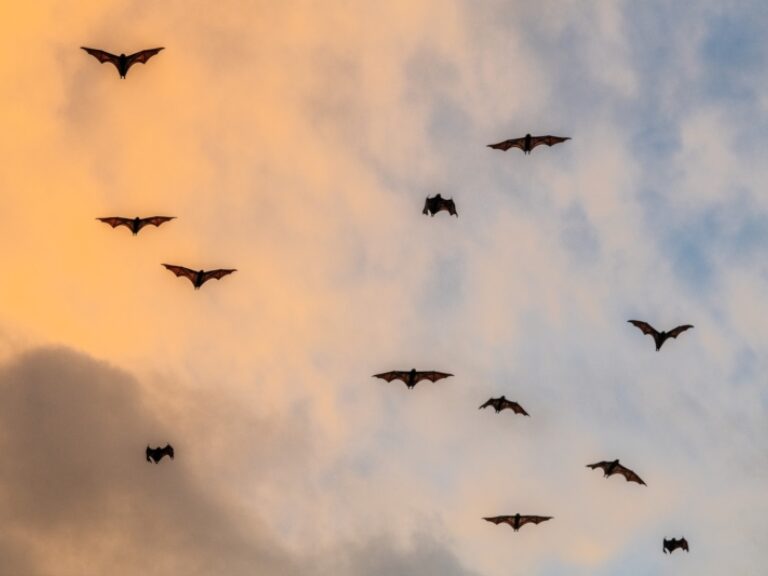
See the world's biggest mammal migration
You’ve heard about the famed wildebeest migration of East Africa , but for the biggest mammal migration on earth you can’t miss the spectacular fruit bats of Kasanka between October and December.
I love standing high on the viewing platform overlooking the tiny bat forest at Kasanka and peering into trees that drip with thousands upon thousands of straw coloured fruit bats. As dusk falls, they begin to depart, flocking into the sky and filling the air with their chatter. Millions of bats dart in and out of the trees, like a swarm of overgrown bees, before flying over your head and off to spend the night looking for food. By the time they’re done it's almost too dark to see the ladder down from the hide, so don’t forget to bring a torch!
Beyond the bats, Kasanka is home to one of Africa’s rarer antelopes, the shy, secretive, semi-aquatic sitatunga – the park is home to more than 500 of them, making it Africa’s densest and most visible population of sitatunga! The elusive Blue monkey and the little-known Kinda baboon also both call Kasanka home and it’s unlikely you’ll encounter either of these species anywhere else in Southern Africa.
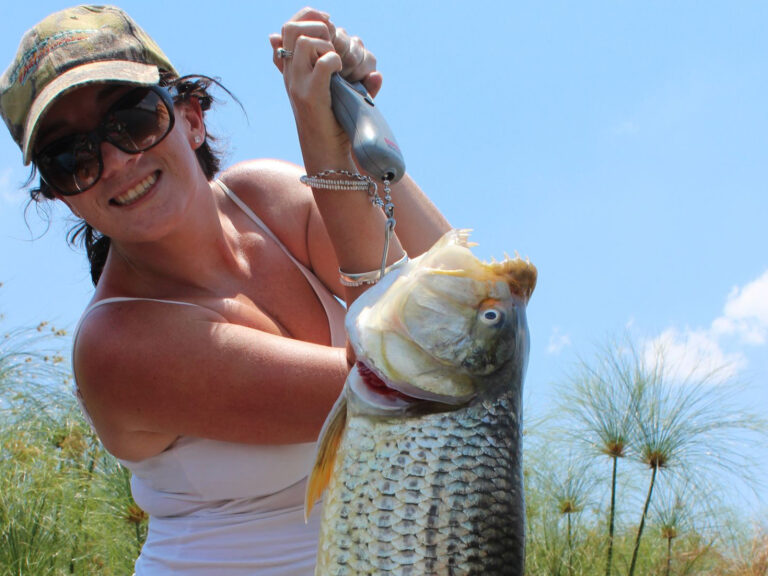
Fishing on the Lower Zambezi
I’m definitely no fisherman, but every now and again it’s nice to take a break from the safari jeep and get out on the water. Serious sport anglers come from all over the world to try their hand at the Zambezi’s famous tigerfish, so maybe skip one of the morning or afternoon game drives and try your hand at fishing. Tigerfish are too bony to eat and fishing in the Lower Zambezi National Park is strictly catch and release, but it’s still pretty exhilarating to reel one in, and they put up a heck of a fight! Even if you don’t catch anything, spending a few hours on the water is fantastic, and you’re bound to spot some wildlife on the river banks.
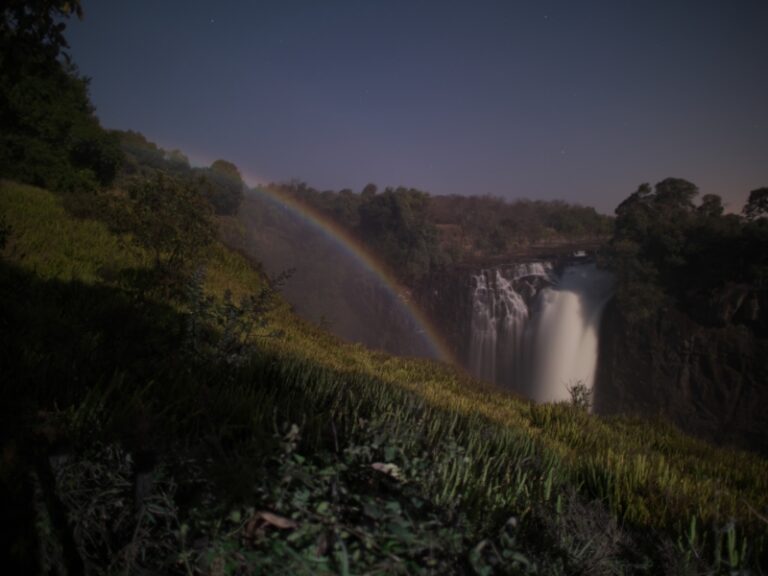
See a lunar rainbow at Victoria Falls
Lunar rainbows are formed by the light of the moon rather than the sun and are much fainter and more elusive than a regular rainbow. Victoria Falls is the only place in Africa, and one of only a handful of places in the world, where this incredible natural phenomenon occurs – and something surprisingly few people know about!
You can see the lunar rainbow between April and July during the full moon. I find there’s something magical sitting at one of the vantage points and waiting for the moon to rise. They’re far less vibrant than a regular rainbow but lunar rainbows show up clearly in photos taken with a long exposure.
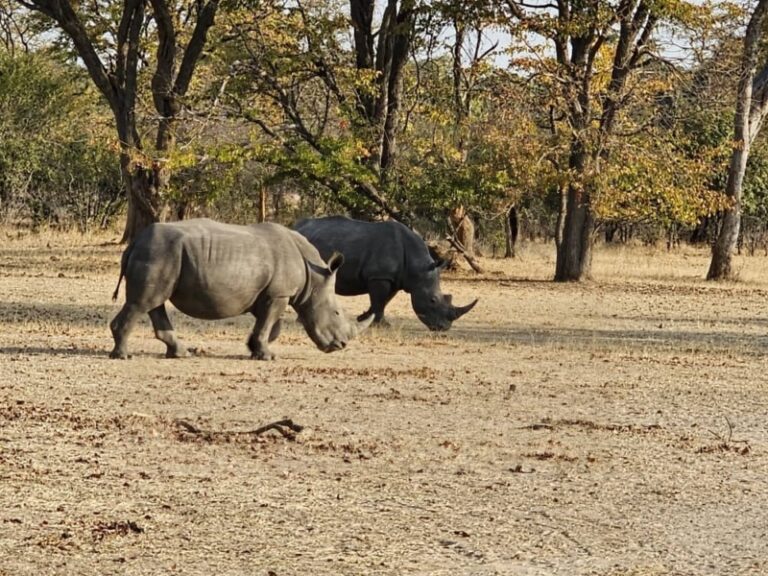
Walk with rhinos in Mosi-oa-Tunya National Park
I love strolling with these giants In Mosi-oa-Tunya National Park. Escorted by two armed rangers, you’ll walk in single file through the bush, maybe getting hit by branches or scratched by thorns, you’ll sweat and perhaps wonder if you’ll ever see the rhinos. But when you see them, it will all be worthwhile. The tour usually lasts for two hours, but sometimes you get lucky and find them within the first 10 minutes, either way, it’s definitely worth it!
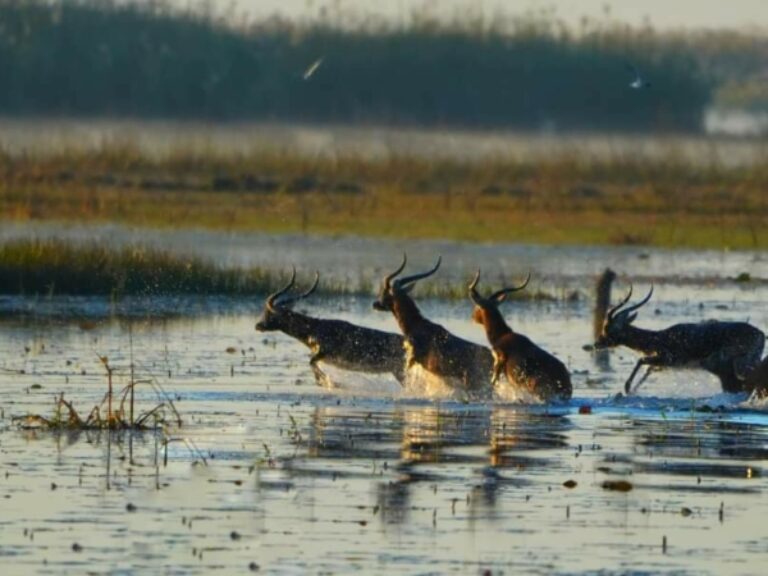
See the black lechwe in the Bangweulu Wetlands
Set your alarm and wake early to paddle by canoe through the papyrus of the Bangweulu swamps, to the floodplains. Stand on the causeway that runs through the middle of the floodplain, and as the sun comes up you’ll be surrounded by thousands of black lechwe, a type of endangered antelope that is endemic to this part of Zambia. Having come into the water overnight for safety, the lechwe are slowly heading towards the tree line, grazing on the semi aquatic grasses as they go. You need to get up early for this as once the sun has risen the lechwe will have all but disappeared, heading into the tree line where they will spend the day.
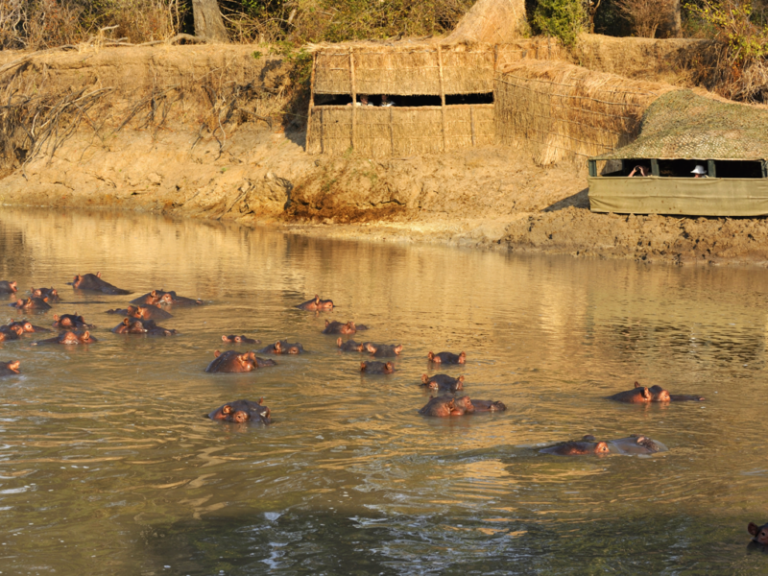
Kaingo Camp
My pick for South Luangua is probably Shenton Safaris' Kaingo Camp, which has a collection of incredible photographic hides and guides who are specialised in getting guests into the perfect position for great photos, both in the hides and out on drive.
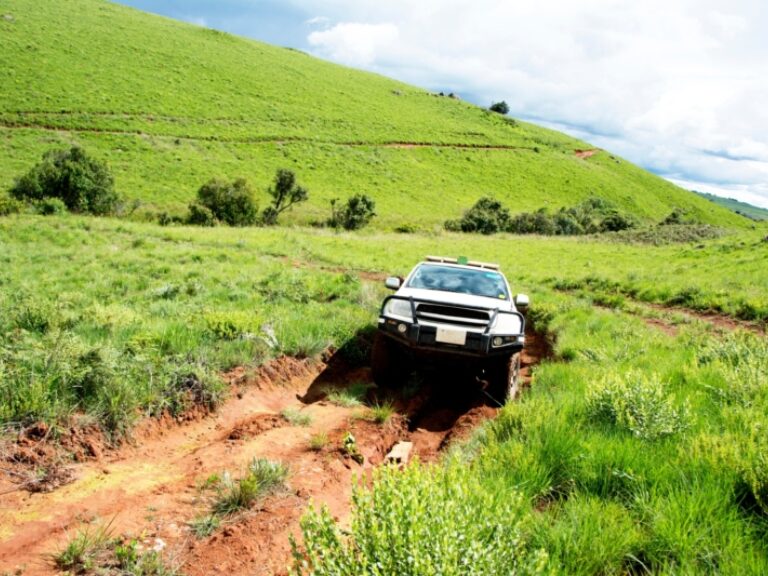
Don't miss Zambia’s hidden gems
You'd have a hard time calling anywhere in Zambia "touristy" but if you want to get truly off the beaten path there are some hidden gems to be found.
Of all the country's national parks, Luambe, Lukusuzi, West Lunga, Sioma Ngwezi, and Nyika Plateau have wildlife, but are relatively undeveloped in terms of tourist infrastructure and accommodation.
Isangano, Lavushi Manda, Lusenga Plain and Mweru Wantipa have little management, very few facilities, and limited wildlife populations. If you're very intrepid or a super keen birder and can find a specialist to make your travel arrangements, they may be worth considering.
Lusaka National Park, just outside the capital, opened in 2015 and is the country’s newest park.
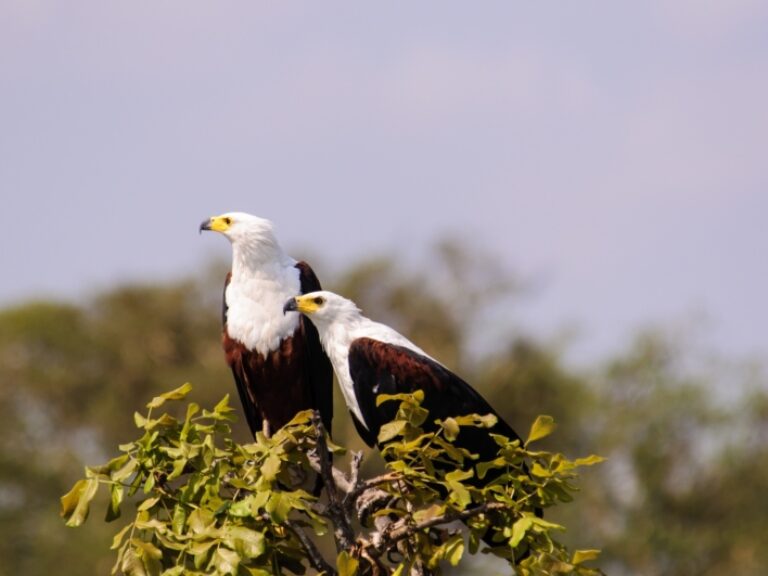
Birding in Liuwa Plain
The birdlife in Liuwa is extraordinary, and it's easy to spend hours watching the various comings and goings of white bellied bustards, crowned cranes, sooty chats, pink pelicans, fish eagles and more. Threatened waterbirds include slaty egrets and whiskered terns – Liuwa is the only breeding ground for these birds in Zambia. This is also a prime destination for migrating species and massive flocks of birds can be seen in the skies above Liuwa between May and July. Keep your eyes open for the Black-winged pratincoles, individually these might not be the most exotic of birds, but trust me: a flock of 100,000 swooping over the plains like a giant swarm of bees is pretty breath-taking! Don’t forget to pack your binoculars for birding at Liuwa.
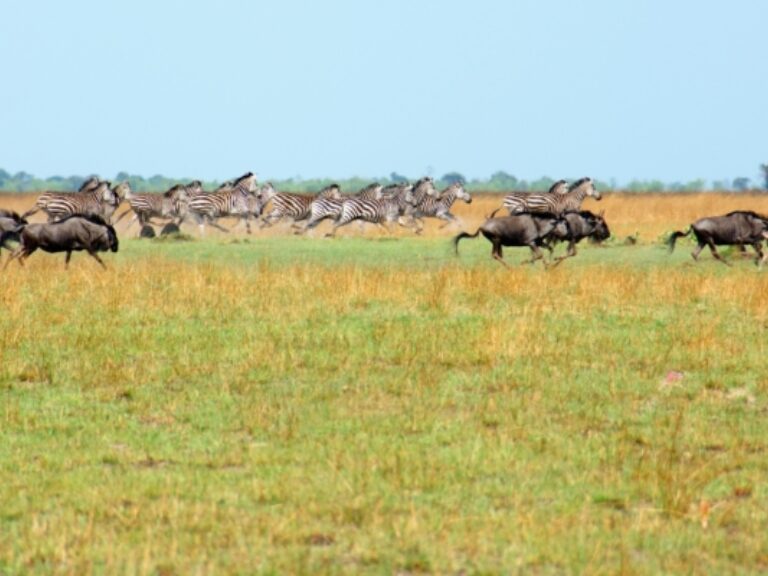
Wildebeest migration without the crowds
Liuwa Plain is home to the second largest wildebeest migration in Africa and, compared to the more famous wildebeest migration in East Africa , this spot is hardly known. Each year in November, with the start of the rainy season, massive herds of blue wildebeest, 45,000 strong, migrate to Liuwa Plains, often mingling with zebras along the way.
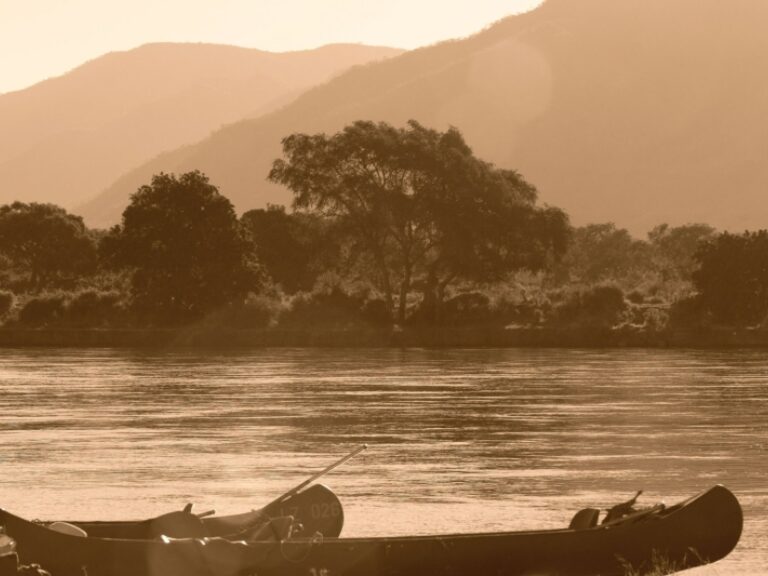
Canoe safaris in Lower Zambezi & Bangweulu
Seasoned safari-goers who are tired of the conventional game drive should ditch the 4X4 and get into a canoe for a watery safari in either Lower Zambezi National Park or the Bangweulu Wetlands.
For me there is something timeless about travelling through these swamps. I find it a world away from racing around in a safari jeep. Your guide at the front of the canoe, long pole in hand, propelling you through narrow channels, between the thick reeds and papyrus. Silence, except for slight burbles and gurgles as you glide through the water. It’s one of my all-time highlights.
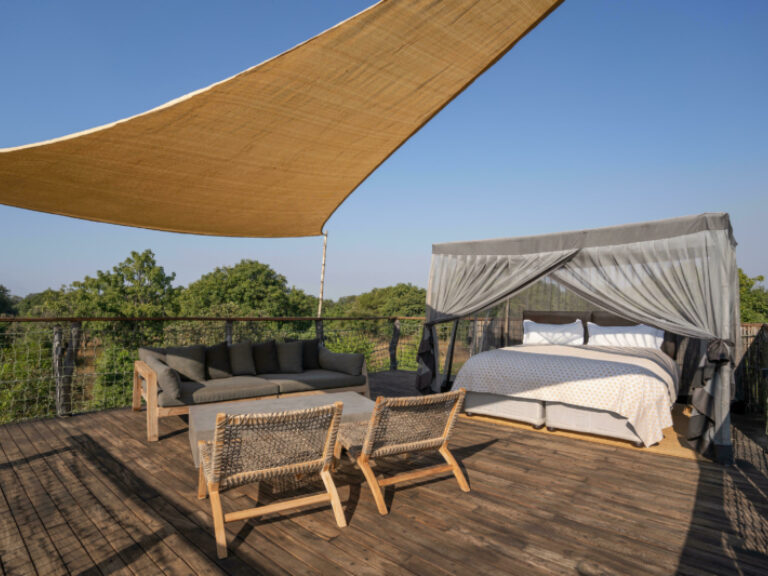
Chikunto Safari Lodge
Robert Zgozi
There’s some good accommodation in South Luangwa but one of my favourites is Chikunto Safari Lodge, located on a horseshoe bend in the Luangwa River near the Mfuwe entrance in the park’s southern edge. What makes this place really stand out is the six-metre high platform with panoramic views over the river and a private tented suite where you can camp out overnight under the stars. When I visited I found it totally breathtaking. It doesn’t come cheap, but I always recommend it for honeymooners or couples looking for something extra special.
featured zambia safaris
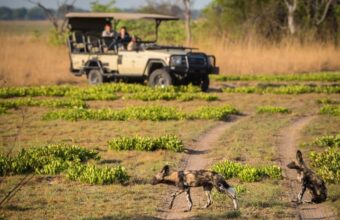
A Silent Safari in Zambia
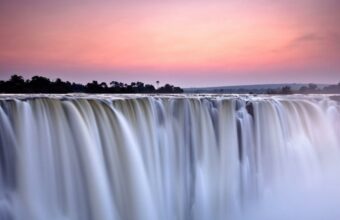
Victoria Falls and Zambia’s wildlife
Wildlife sanctuaries and powerful waterfalls.
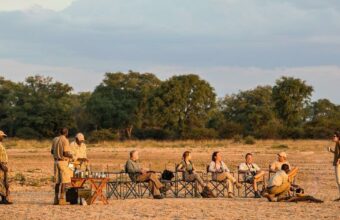
Discover Luangwa & Luambe National Parks
Safari lodges in zambia's national parks.
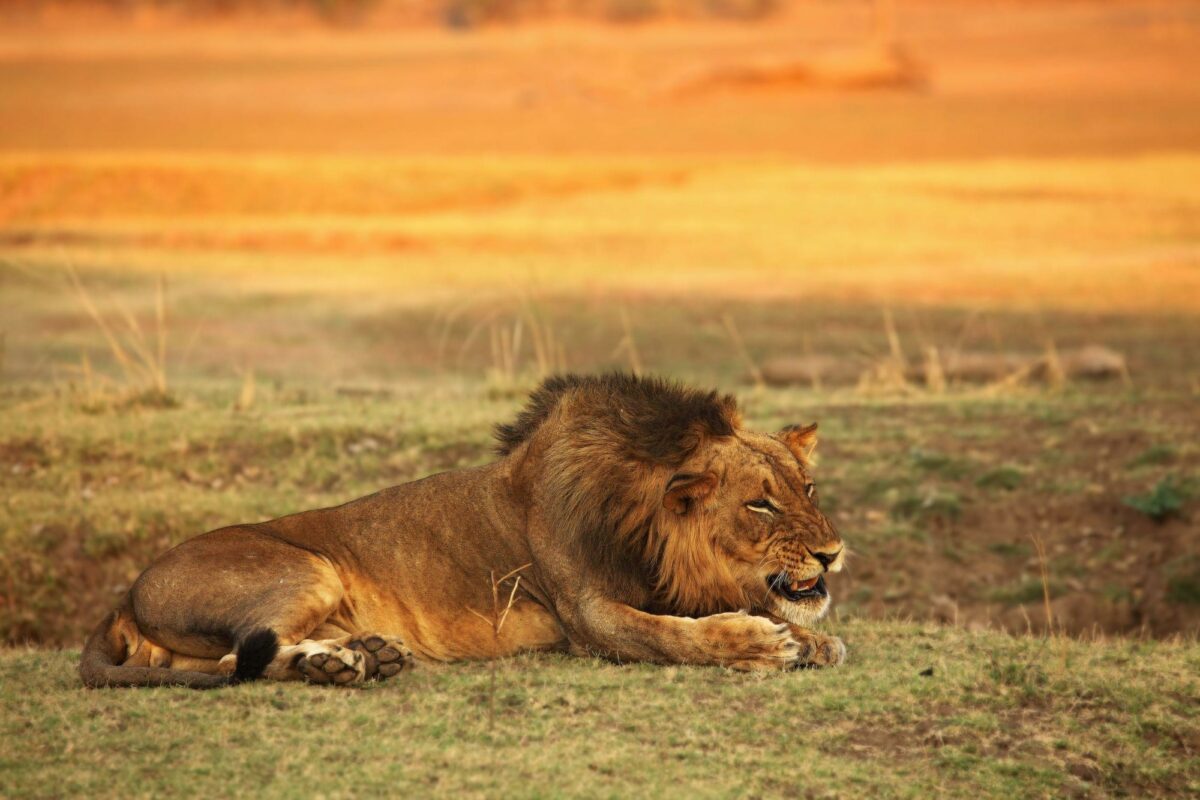
A lion in South Luangwa National Park
Zambia safari: Need to know
Everything you wish you'd know before you booked.
Journey distances and patchy infrastructure can pose a challenge, and it’s easier to fly between parks than drive, which pressures your budget and the environment. The country’s focus is skewed more to high cost/low volume tourism, so accommodation tends to be more on the expensive side, with less options for backpackers and those on a tight budget.
Think beyond the classic 'Big Five' safari
First-time safari goers are often fixated on seeing the so-called Big Five (lion, elephant, buffalo, rhino and leopard). This might seem like strange advice coming from a safari operator, but to be honest I think there are better places to see the Big Five elsewhere in Africa. Zambia is home to all five, but they're hard to find all together in any one park, and poaching has made the rhino populations especially threatened.
In my personal opinion, the real gems of a Zambia safari are the species and experiences that you can't easily find elsewhere on the continent. Zambia is especially fascinating for its wetlands which provide a precious ecosystem for numerous bird species, most notably the rare and bizarre-looking shoebill storks of the Bangweulu Wetlands.
Another unique aspect of a Zambia safari is the different range of safari types. In East Africa you can spend all day in a jeep chasing the Big Five, while in Zambia's Lower Zambezi National Park you can see lions, elephants, buffalo and leopards, hippos and crocodiles on a canoe safari. Zambia is also famous for its walking safaris, most notably South Luangwa, the birthplace of the walking safari. I can't think of any better way to explore the bush than on foot walking through big game country.
Getting around
You’ll almost certainly arrive at Lusaka, Zambia’s capital city. Lusaka International Airport is 22 kilometres from the city centre, where there are plenty of hotels and guest houses to choose from. Adjacent to the international terminal is the domestic terminal, where you can connect with flights to the main national parks.
Lusaka is the central point of Zambia and all major roads heading north, south, east and west pass through the city. Livingstone and Victoria Falls are 470 km away, so I highly recommend flying. Kafue National Park is located 591 km from Lusaka, if you wish to fly here a charter flight will be needed. South Luangwa National Park is 527 km from Lusaka but best accessed by plane, and there are both scheduled and charter flights on this route.
How to avoid (too much) flying
If you want to avoid too much domestic flying, I’d highly recommend South Luangwa National Park which pretty much has everything you’d want to see. Alternatively Kafue National Park has lots of diverse landscapes such as the Busanga swamps and floodplains, you can stay here for at least a week, travelling from lodge to lodge by road.
Driving in Zambia is a challenge. The distances between the various safari areas and national parks are huge and the roads are often poor. While many of the roads are getting an upgrade, in most cases the easiest is still to fly between parks in light aircraft. Many routes offer fixed schedules, but if you intend to travel away from the main parks, you’ll need to fly on a charter plane. When transferring from one camp to another, within the same national park, you’ll usually be transferred by 4WD (effectively like a bonus game drive). In some specialist walking camps in South Luangwa, you may be able to walk between the camps.
If you are intending to drive, avoid travelling after dark and be aware that potholes, pedestrians and animals occur at random and other drivers can be erratic. If you’re not driving a 4x4 vehicle, don’t drive.
If you book your trip as an organised tour, either private or group, all your transport logistics will be arranged for you.
Zambia safari pro tip
If you’re booking a safari tour that’s longer than six or seven days, your itinerary will likely include multiple national parks with domestic flights between them. A good question to ask your operator is whether these are scheduled flights via Lusaka, or if they’re direct flights between the national parks. Going via Lusaka each time significantly adds to the stress, time and environmental cost of your trip, try to book an itinerary with direct flights where possible.
Safari In South Luangwa National Park
About the author.
Born and raised in Sydney, Australia, before moving to Africa at the age of 21, Sarah Kingdom is a mountain climber and guide, traveller, yoga teacher, trail runner, and mother of two. When she is not climbing or traveling she lives on a cattle ranch in central Zambia. She guides climbing and trekking trips worldwide, including taking climbers up Mount Kilimanjaro numerous times a year.
Featured tours

Zambezi Canoeing & Kafue National Park
Canoe, safari and boat cruise in kafue national park.

Botswana & Zambia Safari

Other guides you might like
Safari in kenya, kenya's best safari reserves and camps.
Stuart Butler
South africa safari, an expert guide to safaris in south africa.
Anthony Ham
Wildebeest migration safaris, an essential guide to planning a migration safari in tanzania and kenya.
Hans Cosmas Ngoteya
Safari in zambia, safari in tanzania, an expert guide to tanzania's best safari parks & camps, safari in botswana, an expert guide to botswana's best safari reserves, camps and experiences, where and how to see the big 5 on safari in africa, safari in africa, our travel writers' top africa safari picks, zimbabwe safaris, an expert guide to the best safari camps in zimbabwe, chimpanzee trekking, an expert guide to seeing chimpanzees in the wild.
Philip Briggs
Namibia safari, an expert guide to the best safaris in namibia.
Melanie van Zyl
Featured tours view all.
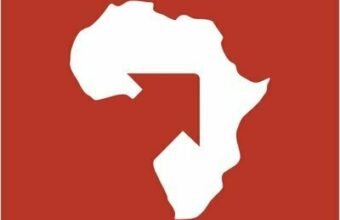
Why Horizon Guides?

Impartial travel guides
Our guides are written by the leading experts in their destinations. We never take payment for positive coverage so you can count on us for impartial travel advice.

Expert itineraries
Suggested itineraries and routes to help you scratch beneath the surface, avoid the tourist traps, and plan an authentic, responsible and enjoyable journey.

Specialist advice
Get friendly, expert travel advice and custom itineraries from some of the world's best tour operators, with no spam, pressure or commitment to book.
Our guides are 100% impartial and are written by independent, professional travel journalists. We make money by charging carefully-screened travel companies to list their business on our website. Our advertisers have no influence on our editorial content and we never accept payment for positive coverage.
Read more about how we work and what we believe in here .
- Travel guides
- Work with us
Sitemap , Privacy Copyright © 2024 Horizon Guides

- 1-800-990-4376
- Catalog Request
- SPECIALS SIGN-UP
- reserve a trip
- Costa Rica Ultimate Wildlife 14-day
- Costa Rica Ultimate Wildlife 9-Day
- Every Paddler's Dream Trip
- Browse All Trips
- South Africa
- Exploritories
- Award Winning Trips
- Custom Trips
- Family Trips
- Travel with Our Director
- WILDLIFE GALLERY
- Request Info
- Vietnam & Cambodia
- Insider's Asia
- Insider's Africa
- Small Ship Cruises
- Travel with our Director

Zambia Safaris

Zambia Award-Winning Wildlife Safaris
Zambia is one of Africa's least crowded and most wildlife-rich destinations. You can easily see the "Big 5" (Lion, Leopard, Elephant, Rhino and Cape Buffalo) without being part of an armada of jeeps chasing wildlife. It is one of the only places in Africa where you can combine a traditional jeep safari with more intimate and unique walking and canoeing safaris. It's also home to the second largest wildebeest migration in Africa. Take advantage of this amazing destination with our Zambia ecotourism trips.
Wild Planet Adventures offers a variety of Zambia safaris to meet individual budgets and interests. Our Ultimate Wildlife itinerary is our most comprehensive, and we're proud that it has been named one of the " 50 Tours of a Lifetime " by National Geographic Traveler . We also offer the option to design your own safari and pick the locations, length of stay, and price level that is right for you. If you don't see what you're looking for, please give us a call!
South Luangwa, Kafue & Mana Pools National Parks Discover the three premier parks of South Luangwa, Kafue, and Mana Pools. We've combined some of the most remote, least-traveled and most wildlife-rich sectors of these exciting parks in crafting the "Ultimate Wildlife" safari. Each park offers different eco-systems that are best explored through different activities (jeep, walking and canoe safaris), and feature different wildlife, so you enjoy a more diverse and comprehensive safari than a commercial safari.
The South Luangwa Valley is one of the last unspoilt wilderness areas and possibly the finest wildlife sanctuary in Africa, teeming with elephants, lions, cape buffalo, zebra and more.
Kafue National Park is one of the largest National Parks in Africa. It's wide open flood plains offer an incredible diversity of mammal species --including cheetah.
Mana Pools National Park - The climax of the trip is a world-class canoe safari on the beautiful Zambezi River where we'll float quietly past huge elephants and other feeding animals!
What Makes the "Ultimate" Wildlife Safari?
- Legendary Master Guides, who rely on advanced tracking skills, not radios.
- Un-Habituated Wildlife: Remote destinations where wildlife behavior remains "wild" and unchanged by human presence.
- Safaris by Jeep, Walking & Canoe for a more comprehensive, intimate and authentic and experience not available elsewhere in Africa.
- No Jeep Competition: You won't find 5-30 jeeps chasing a lion pride as is now common in most of Africa.
- 2 per row in Jeeps: For unobstructed wildlife observation.
- Fully Customizable: Choose the segments, length and price that's right for you or take the full 18-day "Ultimate Wildlife Safari".
- Extensions to Victoria Falls available - one of the "7 Natural Wonders of the World".
Zambia Award-Winning Wildlife Safaris with Wildlife Experts - Select Your Adventure:

Zambia - Ultimate Wildlife 18-Day Safari
Our most value-packed itinerary featuring an ensemble of Master Guides, brought together for the first time. It includes walking and jeep safaris in the remote Nsefu sector of South Luangwa National Park, jeep safaris in the classic vast plains and wetlands of Kafue National Park, and canoe safaris on the Zambezi River in the UNESCO World Heritage Site of Mana Pools, widely regarded as one of the best canoe safari's on earth. This is our signature wildlife adventure, with many of Wild Planet's special touches. Learn More>
2024 - $21,398 2012 - $4,398 2013 - $4,598 -->

Zambia - Ultimate Wildlife 15-Day Safari
Another option featuring walking safaris in the remote Nsefu sector of South Luangwa National Park with a master guide, plus jeep safaris on the vast Busanga Plains of Kafue National Park and canoe safaris on the Zambezi River in the UNESCO World Heritage Site of Mana Pools, widely regarded as one of the best canoe safari's on earth. Learn More>
2024 - $18,798 2012 - $4,398 2013 - $4,598 -->

Zambia - Ultimate Wildlife 12-Day Safari
A shorter version of our most popular itinerary emphasizing walking safaris in the remote Nsefu sector of South Luangwa National Park, plus canoe safari in Mana Pools National Park, with 2 master guides. Learn More>
2024 - $14,198 2012 - $4,398 2013 - $4,598 -->

Zambia - Ultimate Wildlife 10-Day Safari
Another option featuring walking safaris in the remote Nsefu sector of South Luangwa National Park with a master guide, plus jeep safaris on the vast Busanga Plains of Kafue National Park. Learn More>
2024 - $11,198 2012 - $4,398 2013 - $4,598 -->

Zambia - Ultimate Wildlife 7-Day Safari
Another option featuring walking safaris in the remote Nsefu sector of South Luangwa National Park with a master guide. Learn More>
2024 - $6,598 2012 - $4,398 2013 - $4,598 -->

Zambia - 4 Day Walking Safari with Legendary Master Guide Deb Tittle
Josh Cohen, Wild Planet’s Director, calls legendary master guide Deb Tittle “Hands-down the best guide I have worked with in Africa.” With over 22 years experience as both a guide and trainer of guides, Deb will track South Luangwa’s exceptional game with you in her own private concession, an extremely remote, road-less and undisturbed sector of the park. Learn More>
Not available for 2024, call for 2025. 2012 - $4,398 2013 - $4,598 -->

Zambia - Travel on Your Own
Choose your destinations, go whenever - and wherever - you want. Choose from any destination in the country and we can put your trip together for you. Gain access to our local, full-service office and our expert wildlife guides, vehicles, logistical support, and intimate knowledge of local accommodations, activities, and destination value. Allow us to customize a trip to meet your heart's desires! Learn More>
2012 - $4,398 2013 - $4,598 -->
Zambia Gallery
Featured guide.

Zambia Safaris
10 best zambia safaris for 2024-2025, highlights of malawi and zambia, classic zambia safari adventure, zambia wildlife explorer, lower zambezi national park, kafue explorer, south luangwa national park, victoria falls at tongabezi lodge, victoria falls extension, kaza undercover, luxury botswana safari, 8 best safari cruise trips to zambia for 2024-2025, 5 best luxury cruises, tours, and safaris in zambia for 2024-2025, 8 favorite zambia safari lodges for 2024-2025, shumba safari camp, the david livingstone safari lodge & spa, chindeni bushcamp, bilimungwe bushcamp, chamilandu bushcamp, kapamba bushcamp, kuyenda bushcamp, 6 best places to visit in zambia for 2024-2025.
- Victoria Falls
- Kafue National Park
Zambian Victoria Falls
- Livingstone, Zambia
African Safari Videos
Zambia Safari Guide & Travel Tips
Wildlife guide for zimbabwe and zambia.
- Zambezi National Park – Take a classic safari in a scarce-visited wildlife park, where you are sure to see buffalo, elephant, lion, leopard, and antelope on your daily excursions from your luxury bushcamp.
- South Luangwa National Park – In addition to the other animals you'll see on game drives, the rivers are home to healthy populations of hippos and crocodiles!
- Kuzuma Forest – Bird watching, guided bush walks, spa treatments, cultural tours, and fishing trips complement the game drives you can do here.
- Victoria Falls – Sharing a border with Zimbabwe, these impressive record-holding waterfalls are considered the most beautiful in the world, and are home to the renowned "Devil's Pool" on the very edge of the falls.
- Busanga Plains of Kafue – Another classic yet isolated destination for a safari adventure, where you'll see large herds of puku, red lechwe, and smaller groups of blue wildebeest and zebra.
Best Time to Do a Zambia Safari
Zambian culture.
- Busanga Bush Camp (Busanga Plains in Kafue National Park)
- Shumba Safari Camp (Busanga Plains in Kafue National Park)
- Toka Leya (right on the Zambezi River close to Victoria Falls)
- Sausage Tree Camp (Zambezi National Park)
- Kapamba Bushcamp (South Luangwa National Park)
- Fig Tree Bush Camp (overlooking the banks of the Shishamba River)
- Mukambi Plains Camp (Busanga Plains of the Kafue National Park)
- Mukambi Safari Lodge (Kafue National Park)
- Chindeni Bushcamp (South Luangwa National Park)
- Mfuwe Lodge (South Luangwa National Park)
Top Places to Visit in Zambia
Best time to go to zambia, zambia faq's, zambia travel faqs, zambia travel reviews & stories, our african adventure, november mfuwe lodge trip, top zambia travel destinations, zambia trips by departure date.
- 2024 Zambia trips (21)
- 2025 Zambia trips (18)
- 2026 Zambia trips (12)
- May 2024 (17)
- June 2024 (19)
- July 2024 (20)
- August 2024 (21)
- September 2024 (21)
- October 2024 (21)
- June 2025 (17)
- July 2025 (17)
- August 2025 (18)
Top Experiences in Zambia
- Zambia Wildlife & Safari Exploration (19)
- Zambia Land Tours (11)
- Zambia Cruises (8)
- Zambia River Cruises (8)
- Zambia Luxury (5)
- Zambia Cultural (5)
Zambia Trips by Duration
- 9 day trips (3)
- 13 day trips (4)
Zambia Trips by Activity
- Zambia wildlife viewing (19)
- Zambia village visits (11)
- Zambia wilderness lodge exploration (9)
- Zambia helicopter tours (4)
- Zambia land & sea exploration (4)
- Zambia camping (3)
- Zambia wine tasting (3)
Why Travel With Adventure Life
Recognized by.

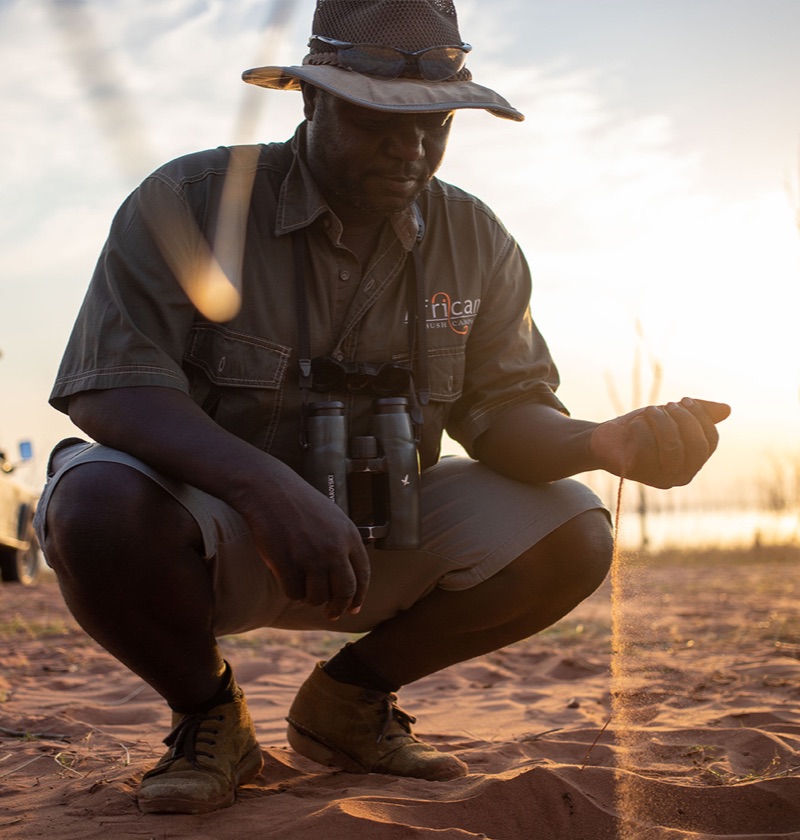
- In the Media
- ABC Foundation
- Our Ultimate Guides
- Live in Camp
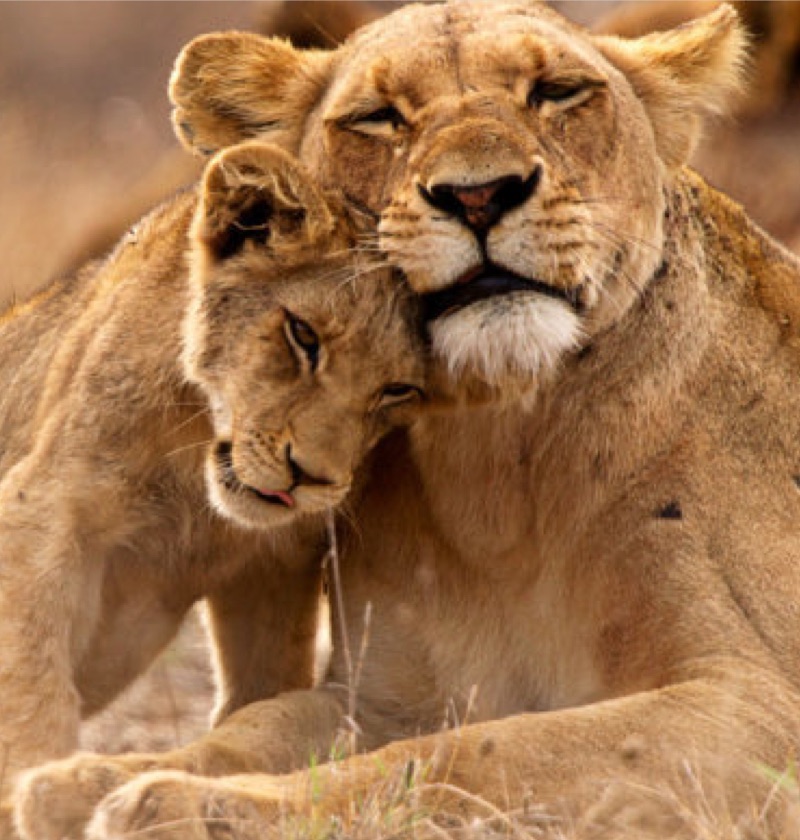
Safari Experiences
- Emerald Season Botswana
- Luxury Zimbabwe
- Luxury Okavango
- Icon Safari
Top Safaris
- Magic of Three Countries
- Authentic Mana Pools
- Luxury Zambezi
Impact Safaris
- 2025 Foundation Hosted Impact Safari
- Learner Development Safari
- Conservation Safari
- Women Empowerment Safari
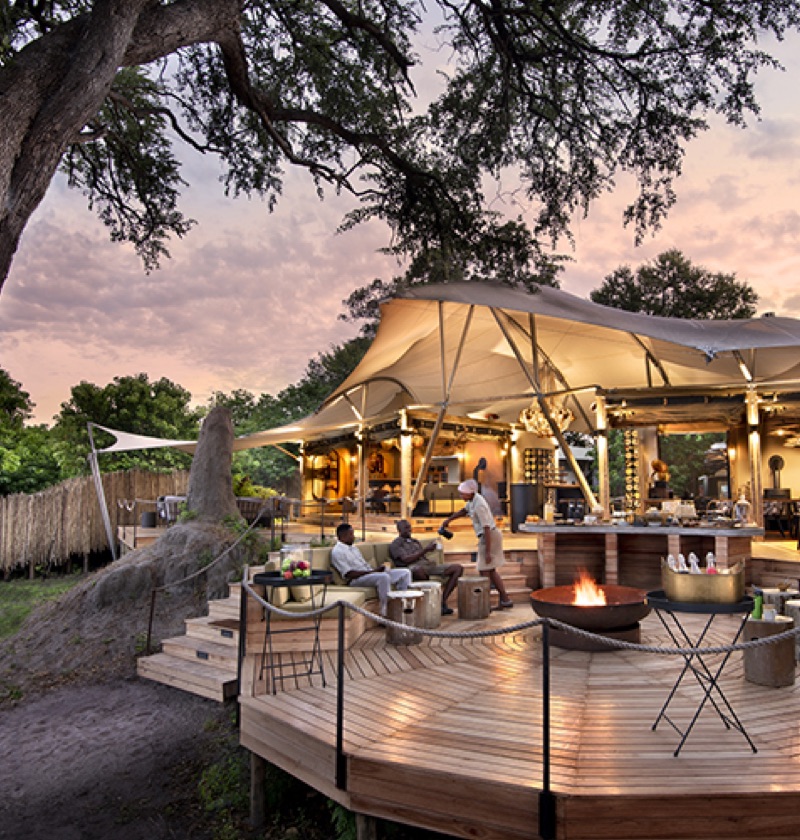
Expedition Experiences
- Zambezi Expeditions
- Somalisa Expeditions
- Linyanti Expeditions
Signature Experiences
- Linyanti Bush Camp
- Somalisa Camp
- Nyamatusi Camp
- Somalisa Acacia
- Khwai Leadwood
- Khwai Lediba
- Nyamatusi Mahogany
- Linyanti Ebony
- Bumi Hills Safari Lodge
- Khayelitshe House
Icon Experiences
- Thorntree River Lodge
- Atzaró Okavango

- Linyanti Wildlife Reserve
- Khwai Community Area
- Okavango Delta
- Lake Kariba & Matusadona
- Mana Pools National Park
- Hwange National Park
- Matobo National Park
- Victoria Falls
- Mosi-oa-Tunya National Park (Livingstone)
- Lower Zambezi
- Our Foundation
Get in Touch
Talk to a safari expert.

Zambia Safari: Your Guide to Our Intimate Heartland
What you will learn about in this guide:.
- Why you should visit our intimate heartland in Zambia
Wildlife in Zambia
- Climate in Botswana
- Languages and Cultures in Zambia
- Our Signature Camps in Zambia
- What to Pack on your Zambia safari
Why Zambia?
Zambia is renowned for its glorious national parks, which make up one third of the country. It is home to the game-rich , south Luangwa, the calm lower Zambezi, and, of course, the iconic Victoria Falls— a vast curtain of thundering water located in the Mosi-oa-Tunya National Park , a UNESCO World Heritage Site .
Another one of Zambia’s draw cards , is its rich and diverse landscapes. Zambia has many vast, untouched areas, including mountain highlands, deep rift valleys, wetlands, and floodplains, just to name a few. The country is known for its hospitable nature. You’re in for a sure treat when meeting the locals and other travellers in search of adventure in this resourceful country.
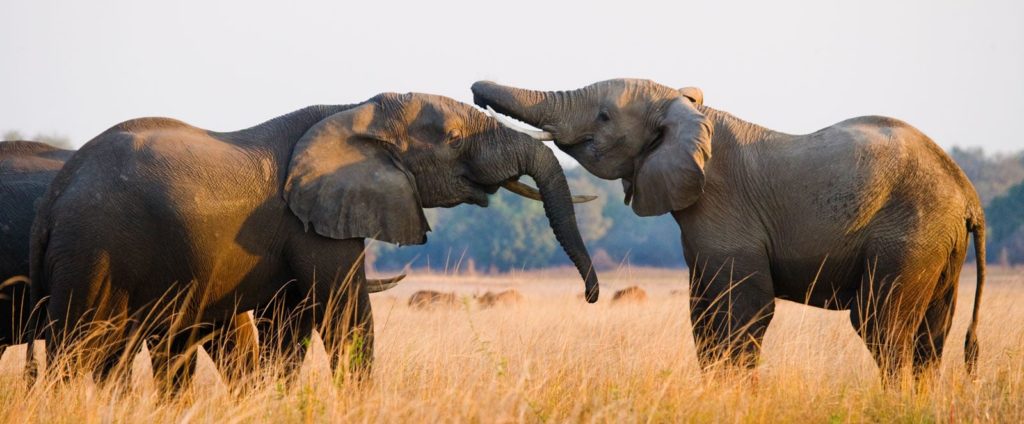
A typical Zambia safari includes a walking safari, a visit to the Victoria Falls , the wild Zambezi River, and, of course, the raw, untamed wilderness. For travellers who are passionate about wildlife, you will soon find that Zambia is a wildlife paradise. We suggest you pack your camera and some extra batteries. This country is filled with picturesque opportunities and memorable experiences.
At African Bush Camps, we’re passionate about Africa, its wildlife, and its resources, which include the communities surrounding our camps. We’ll gladly include cultural visits as part of your itinerary. This will give you an opportunity to experience much more on your trip and will give you a deeper insight into the communities that surround our beautiful camps.
Why Should You Visit Zambia?
- Experience one of the seven natural wonders of the world: Victoria Falls.
- Visit one of the continent’s best safari destinations.
- Explore the largest man-made lake in the world, Lake Kariba.
- Experience wildlife, right on your doorstep at Thorntree River Lodge.
Zambia is an excellent safari destination to view wildlife, Kafue, South Luangwa, and the Lower Zambezi are particularly fascinating. Leopard sightings are quite common, including wild dogs and cheetah, if you’re lucky. You can rest assured that you will find the Big Five in Zambia
Rhinos are more difficult to spot and are mostly restricted to Mosi-oa-Tunya and North Luangwa National Parks. Elephants, buffalo, and lions are common in most of the parks, although Kafue and South Luangwa are particularly well-known for their leopard sightings. Beyond the Big Five, you will find that Zambia is filled with fascinating rare and endangered species. This includes black lechwe and Crawshay’s zebra.

The second largest wildebeest migration in Africa takes place in November in the Liuwa Plain National Park. Kasanka National Park is home to 10 million fruit bats, which fly from October through December.
Zambia has a more pleasant climate than other tropical countries in Southern Africa. Its rivers and lakes are ideal for fishing, and the country has thriving populations of hippo and crocodiles.
Climate in Zambia
Zambia has a tropical climate characterized by distinct wet and dry seasons. Here’s an overview of the climate in Zambia:
Dry Season (May to October):
- The dry season in Zambia is considered the winter season.
- It is generally a cooler and drier period with lower rainfall.
- Daytime temperatures range from around 25°C (77°F) to 30°C (86°F) on average.
- Nights and early mornings can be cool, with temperatures dropping to around 10°C (50°F) in some regions.
- This season is ideal for wildlife viewing as animals congregate around water sources, making them easier to spot.
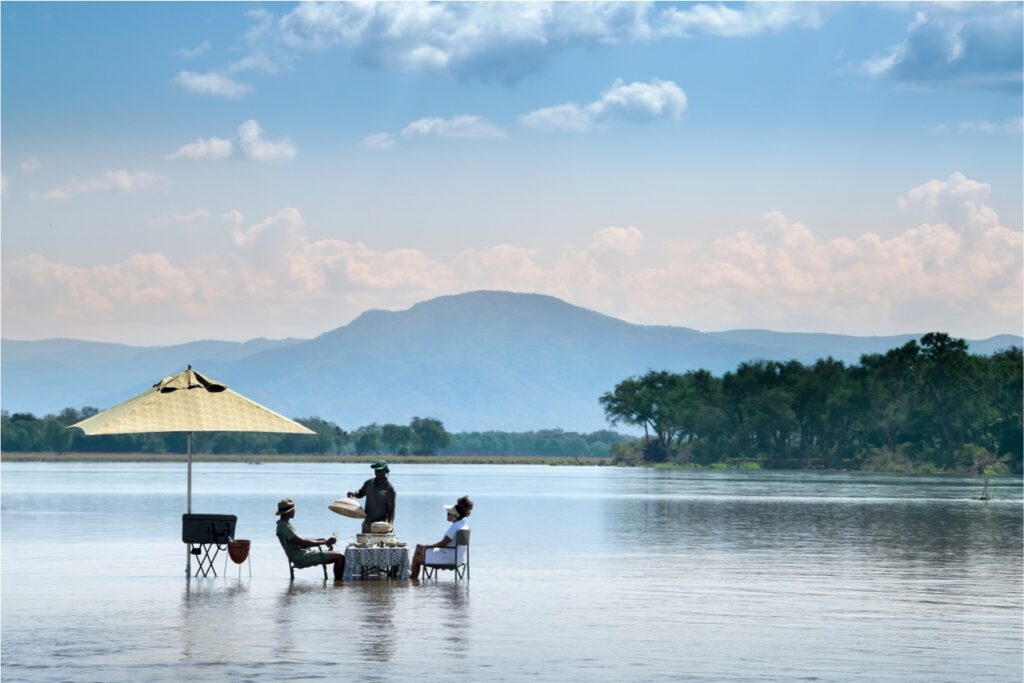
Wet Season (November to April):
- The wet season in Zambia coincides with the summer season.
- It is characterized by higher temperatures and increased rainfall.
- Daytime temperatures during this period range from around 25°C (77°F) to 35°C (95°F) on average.
- The humidity levels are higher, especially closer to the rivers and wetland areas.
- Rainfall varies across the country, with regions in the north and east receiving more precipitation than those in the south and west.
- The landscape turns lush and green during this time, and it’s the breeding season for many animals, offering great opportunities for birdwatching and witnessing newborn wildlife.
- It’s important to note that Zambia’s climate can vary across different regions and altitudes. The higher areas, such as the plateau regions, tend to be cooler than the lower-lying areas. Additionally, localized variations in rainfall patterns can occur.
Languages in Zambia
There are several languages that belong to the Bantu clan in Zambia. English is the official language, and the main language for business and education. Although there are 72 languages in Zambia, many of them could be considered dialects. While some of these languages have a long and rich history in Zambia, others, such as Lozi, are the result of migrations in the 18th and 19th centuries. All the vernacular languages of Zambia are part of the Bantu clan and are closely related.
Bemba, Nyanja, and Tonga are the most common indigenous languages in Zambia. These groups make up about 90% of Zambians.
Other indigenous languages include Ila, Mambwe, and Namwanga.
Imagine that over 70 languages have been identified as Zambian! It would be easy to believe that the country would become a nation of conflicts due to its diversity of languages.
The “One Zambia, One Nation” slogan, which was created by Dr. Kenneth Kaunda, the first president of Zambia, has contributed to the peace that Zambia has enjoyed.
The official language of Zambia, English, is another contributing factor. This choice makes it so that no one tribe feels superior to the others.
People from diverse tribal backgrounds have come together to form a friendly and gregarious atmosphere. This has allowed people to marry across tribal lines, something that was rare before.
Culture in Zambia
The modern culture of Zambia is a mixture of the values, norms, and spiritual traditions of over 70 different ethnic groups. Many of the tribes in Zambia arrived in the region through migratory waves some centuries ago. These tribes grew in number and moved on to establish new kingdoms and farm land.
Before being colonized, Zambia was home to a few free states. They had extensive economic connections with one another and the rest of the world via trade routes that connected them to the west and east coasts of Africa. Copper, ivory, and slaves were the main exports. They could be exchanged for jewellery, salt, textiles, and hardware.
Ethnically diverse people were brought together by economic interests during the colonial period. This, along with the clear influence of western standards, created a new culture that was not subject to any political directives.
Rural residents have maintained their traditional and indigenous values and customs. The government recognised the importance of culture in the development of a nation after independence in 1964 and began exploring the idea of a national identity.
The National Heritage Conservation Commission was one of the institutions created to preserve and promote Zambia’s culture. To encourage the expression of artistic talent, cultural villages and private museums were also established.
Where to Go
Our Zambia camps offer luxury and comfort, surrounded by sublime views from every angle.
Thorntree River Lodge is the perfectly positioned lodge from which to enjoy water activities on the iconic Zambezi River, while Lolebezi is set in the breathtaking, untouched wilds of the Lower Zambezi National Park .
Relax, reset and unwind while gazing at the silhouettes of the acacias against the flaming sunset, walking through the trees to spot some of Africa’s most impressive wildlife, and come back to world-class luxury in your room in the evenings.

Our Icon Camps in Zambia
Thorntree river lodge- haven of serenity.
The beautiful Thorntree River Lodge is located on the banks of the Zambezi River in the Mosi-Oa-Tunya National Park. Here, you will be able to unwind in the infinity pool, which seamlessly blends with the river horizon, for a moment of respite from a busy day in the bush. Thorntree River Lodge is a celebration of connection and community. Enjoy a refreshing sundowner while you experience the majestic African sunset from your deck. You may also enjoy one of our unique fine-dining experiences.
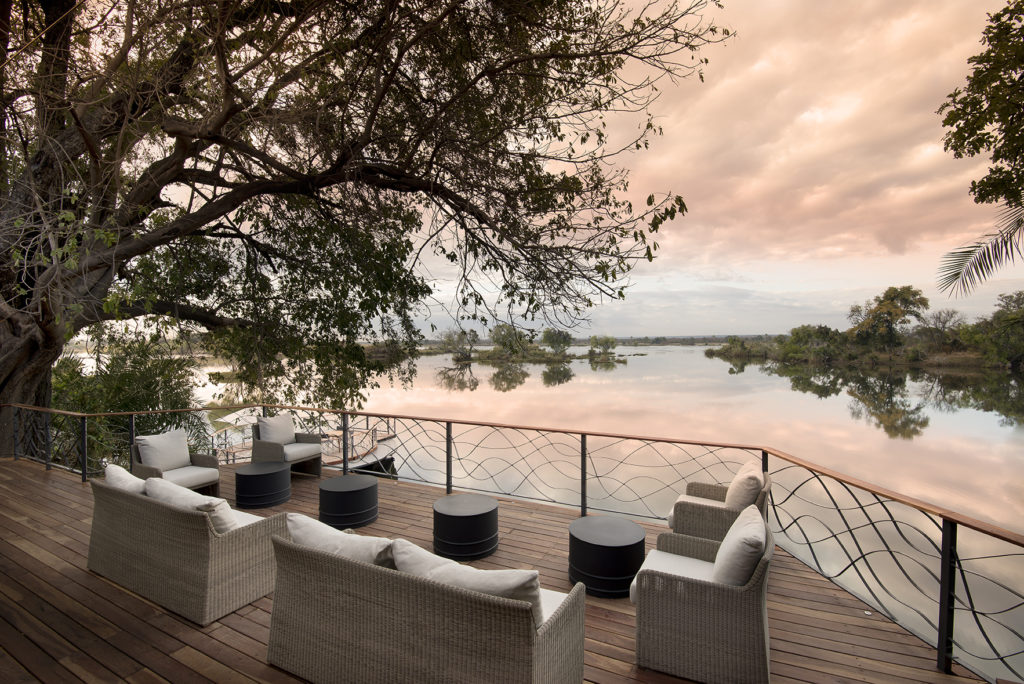
The lodge is located just 20 minutes downstream from Victoria Falls. It can be accessed via the international airports of Victoria Falls or Livingstone. Our famous kids’ club, the Ngwana Club, is open to all ages.
Thorntree River Lodge is a unique Zambia safari lodge that combines a peaceful riverside setting with an eco-conscious approach. This lodge is inspired by a mix of traditional African culture and contemporary influences. African Bush Camps’ mindful philosophy elevates your experience.
The Lodge is a peaceful base for exploring a variety of amazing activities. The shared areas offer stunning river views from their unique vantage points. The lounge flows seamlessly into the dining room, and the library has WIFI connectivity. The deck, which is located on the riverside, is home to a sunken Boma and an infinity swimming pool. Thorntree River Lodge also offers a spa and a gym that promote holistic wellness.
We offer daily excursions from our lodge in Livingstone, Zambia to the Zambian (and Zimbabwean) sides of the Victoria Falls. Private river cruises, cultural visits, and canoeing are all part of your stay. We can also book activities like bungee jumping, helicopter flips, and guided rainforest walks on your behalf.
Lolebezi – A Luxurious Experience on the Mighty Zambezi | Icon Camp
Lolebezi is the latest addition to the African Bush Camps family. The luxury safari lodge is being built in the eastern part of the Lower Zambezi National Park on 5 hectares of unspoiled protected wilderness.
Lolebezi offers travellers a unique, secluded, wilderness experience.

The lodge is being constructing on the banks of the Lower Zambezi, boasting in one kilometre of river frontage. Travellers can expect a immersive, world-class Zambian experience, which celebrates the location, wildlife and the Lolebezi’s luxurious, yet unpretentious design.
Atzaro Okavango Camp – Sustainable Luxury in the Heart of the Delta | Icon Camp
Experience sustainable luxury at Atzaro Okavango Camp , an exquisite safari destination located in the heart of Botswana’s Okavango Delta. Immerse yourself in the awe-inspiring landscape of this World Heritage wilderness, surrounded by lush palm islands and vibrant delta vegetation. Our eco-friendly oasis offers a unique blend of “savanna meets delta” adventures and unforgettable wildlife encounters, ensuring an unparalleled experience in the captivating beauty of the Okavango Delta.
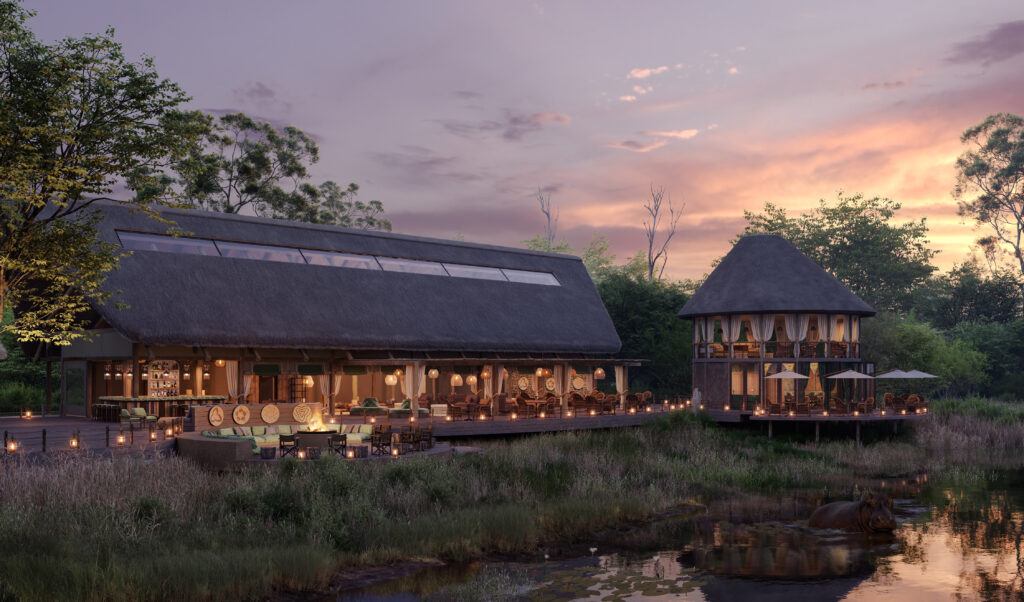
As our esteemed guest, you’ll have the opportunity to witness iconic African wildlife year-round, including elephants, buffalos, lions, leopards, giraffes, lechwes, and hippos. Whether you’re a safari enthusiast or a nature lover, our premier destination caters to your every need, providing a private and exclusive experience, regardless of the size of your travel group.
Thorntree River Lodge – A Haven of Serenity on the Banks of the Zambezi River
Faqs- frequently asked questions, what are the popular safari destinations in zambia.
Popular safari destinations in Zambia include South Luangwa National Park, Lower Zambezi National Park , Kafue National Park, and the Victoria Falls area. When is the best time to go on a safari in Zambia?
The dry season from May to October is generally considered the best time for safaris in Zambia. During this period, wildlife congregates around water sources, making it easier to spot animals.
What wildlife can I expect to see during a Zambia safari?
Zambia is known for its diverse wildlife, including elephants, lions, leopards, giraffes, zebras, hippos, crocodiles, and numerous antelope species. You may also spot rare species like wild dogs and endemic birds.
What types of safaris are available in Zambia?
Zambia offers various safari experiences, including game drives, walking safaris, canoe safaris, and boat safaris. Each provides a unique perspective on the wildlife and landscapes of Zambia.
Are there any safety considerations or precautions to keep in mind while on a safari in Zambia?
It is important to follow the instructions of your experienced guides, maintain a safe distance from animals, and avoid any sudden movements or loud noises. Malaria precautions should be taken, and travel insurance is recommended.
What are the accommodation options for a Zambia safari?
Accommodation options range from luxury lodges and tented camps to budget-friendly campsites. Many lodges offer all-inclusive safari packages, ensuring a comfortable and immersive experience.
How do I reach the safari destinations in Zambia?
The main entry point for international travelers is through Kenneth Kaunda International Airport in Lusaka, the capital city of Zambia. Domestic flights or road transfers are then used to reach the safari destinations.
Are there any cultural or etiquette considerations to be aware of during a Zambia safari?
Respecting local customs and traditions is important. It is customary to greet locals and ask for permission before taking photographs of people. Additionally, following any specific guidelines provided by your guides or camp staff is recommended for a respectful and enjoyable safari experience.
Can I combine a Zambia safari with a visit to Victoria Falls?
Yes, many visitors combine a safari in Zambia with a visit to the majestic Victoria Falls. It’s a popular itinerary option, allowing you to experience both the wildlife-rich parks and the awe-inspiring natural wonder.
Do I need a visa to visit Zambia for a safari?
Visitors from most countries will require a visa to enter Zambia. It is recommended to check the visa requirements well in advance and obtain the necessary documentation before your trip.
Enquire Now
Start Planning Your Safari
" * " indicates required fields
Please note that all our camps are exclusively all-inclusive experiences; all meals, activities, and accommodation are included in your safari. T&Cs apply.
Agents Portal Login
Username or Email Address
Remember Me
Newsletter sign up

IMAGES
VIDEO